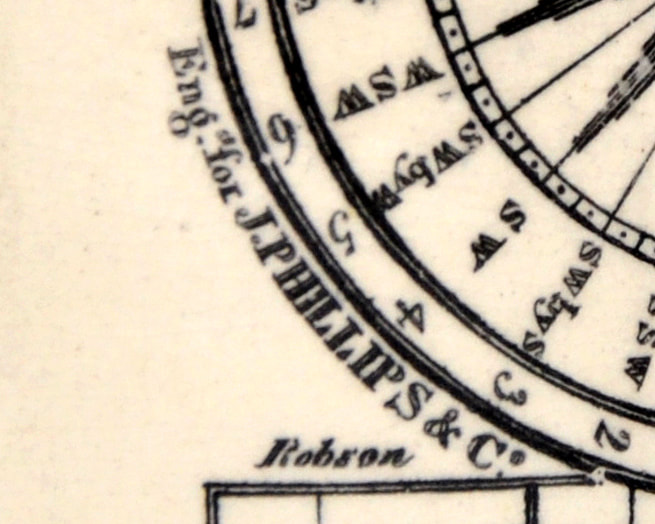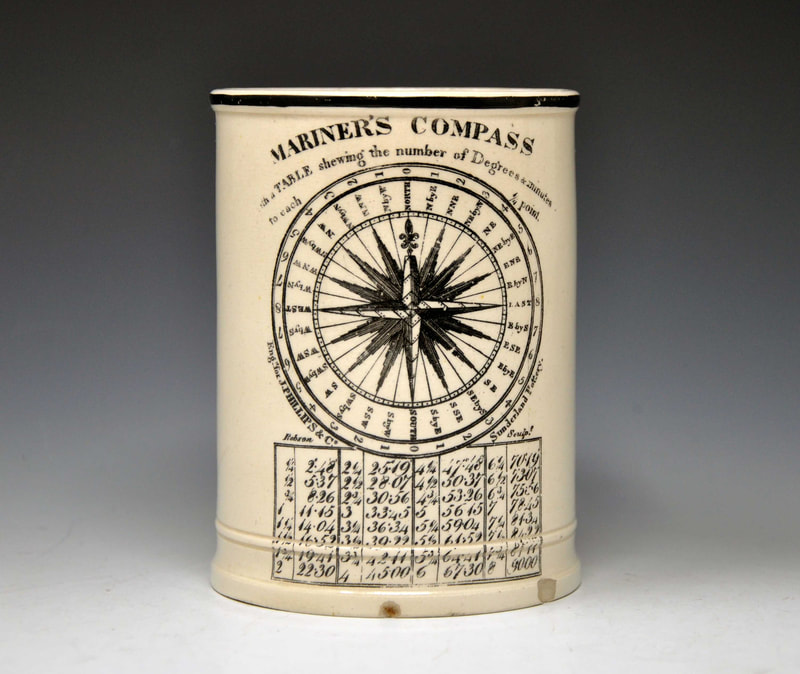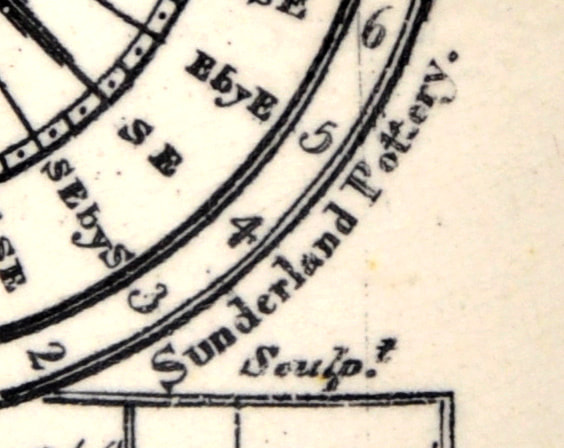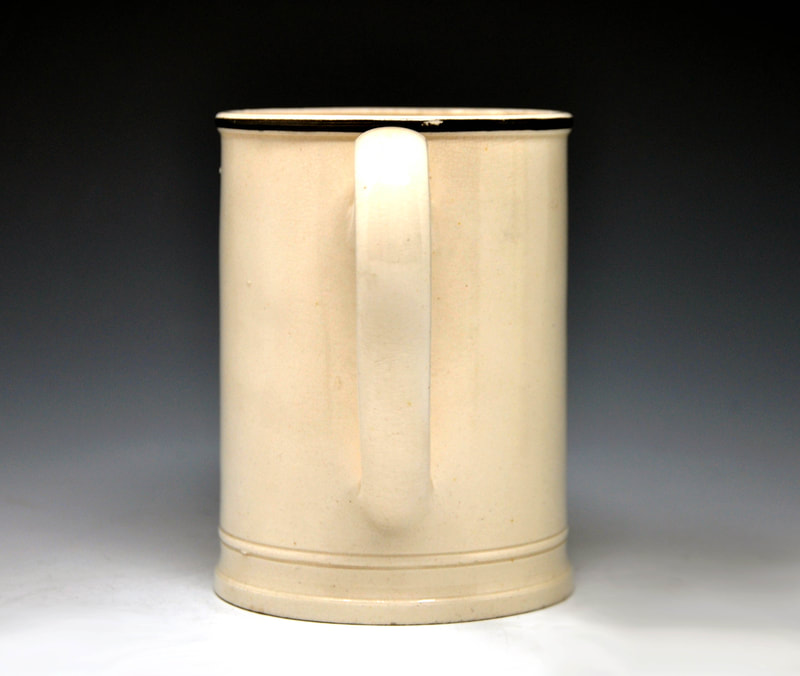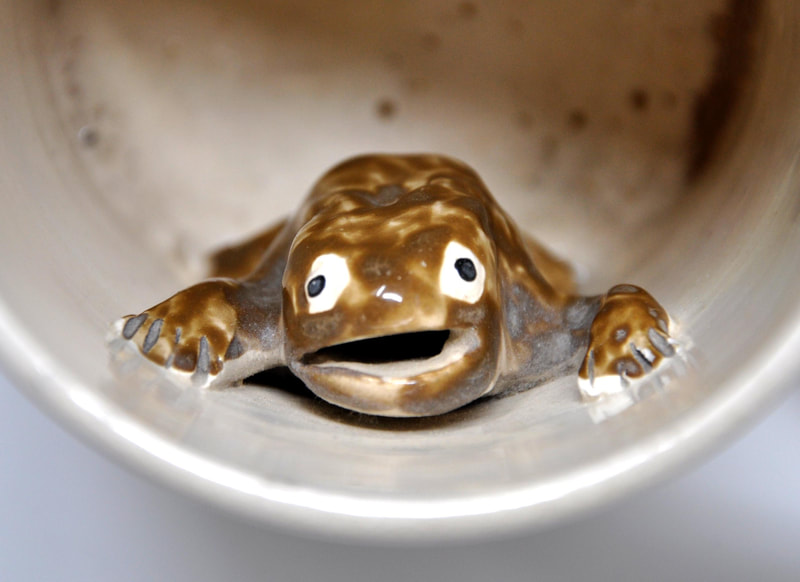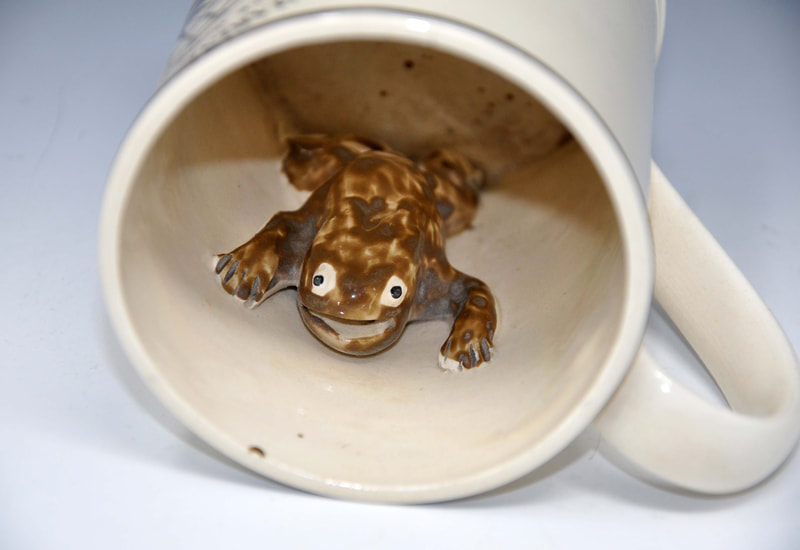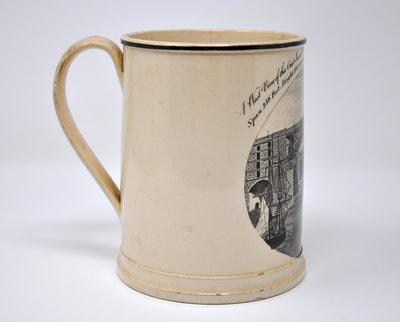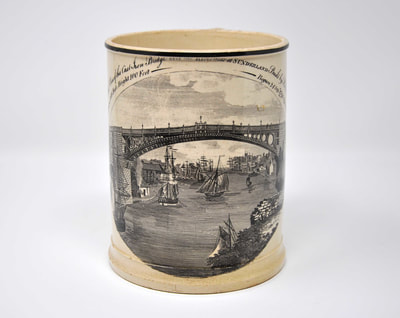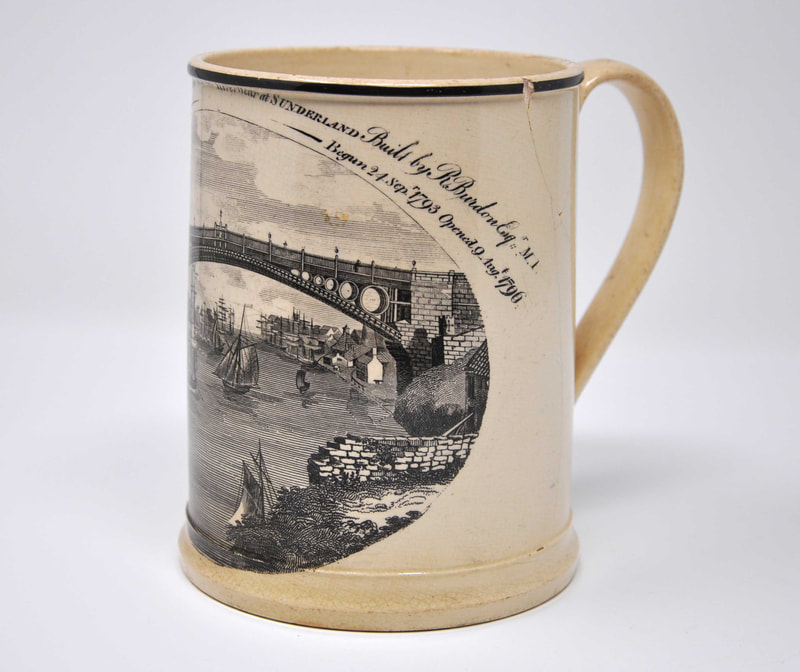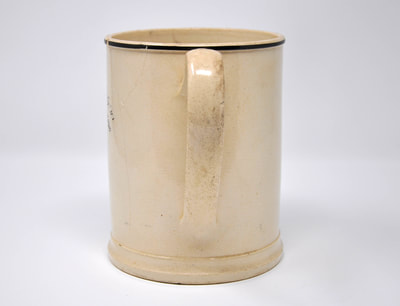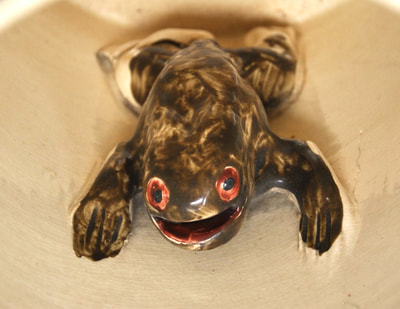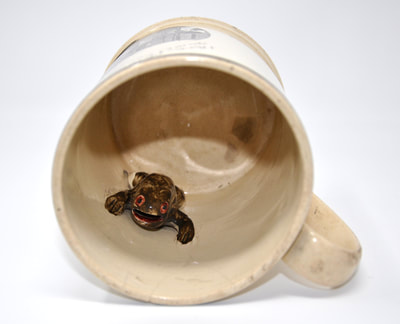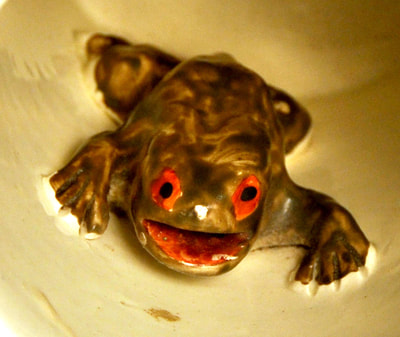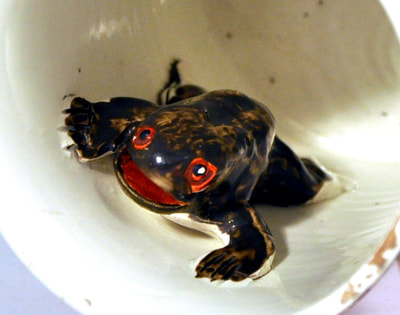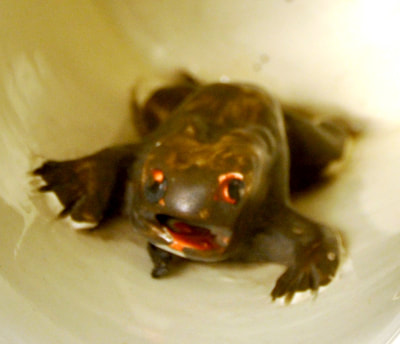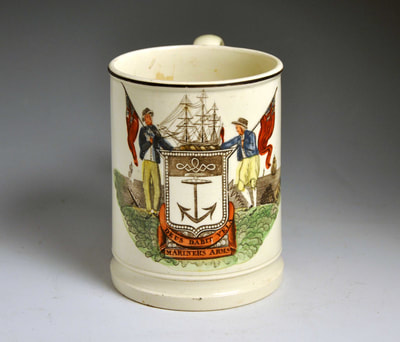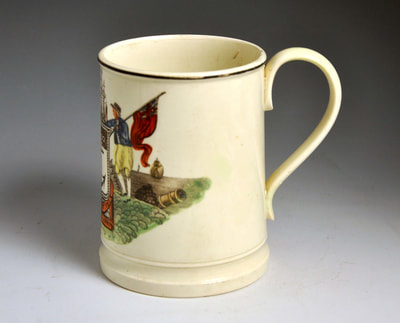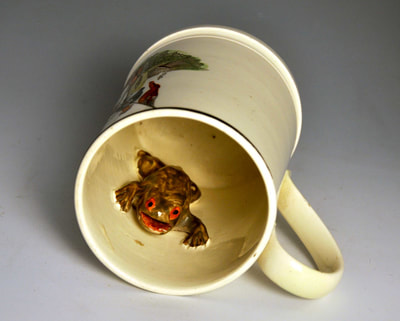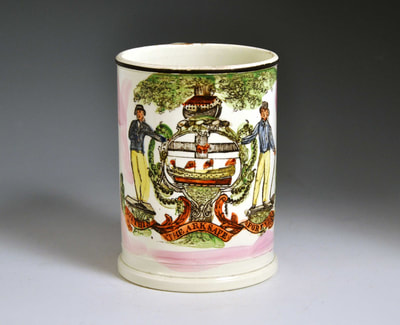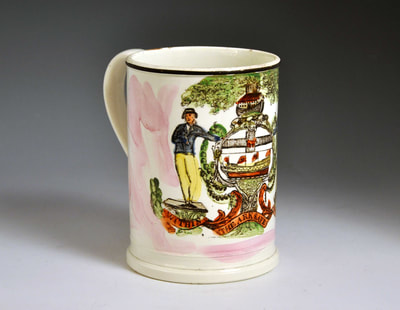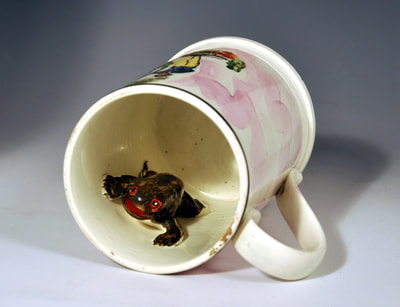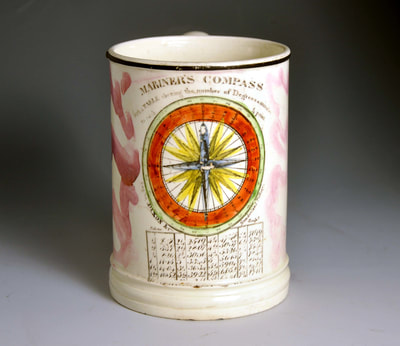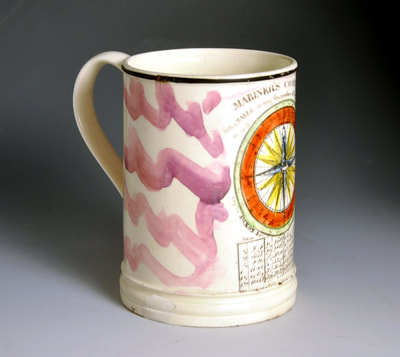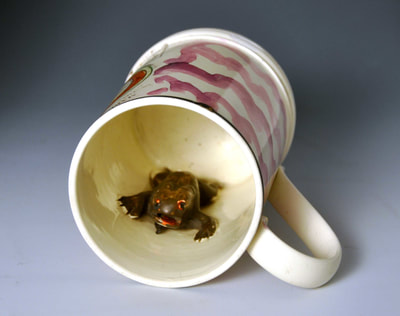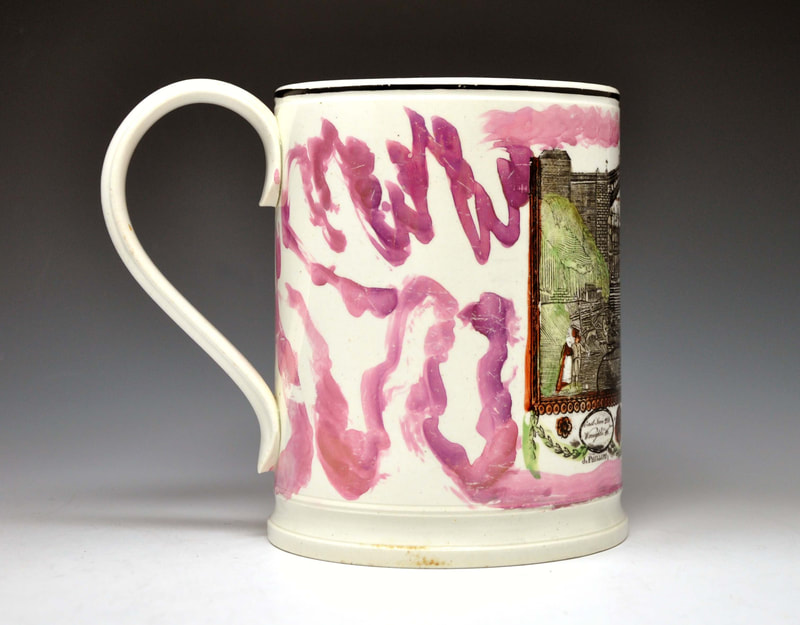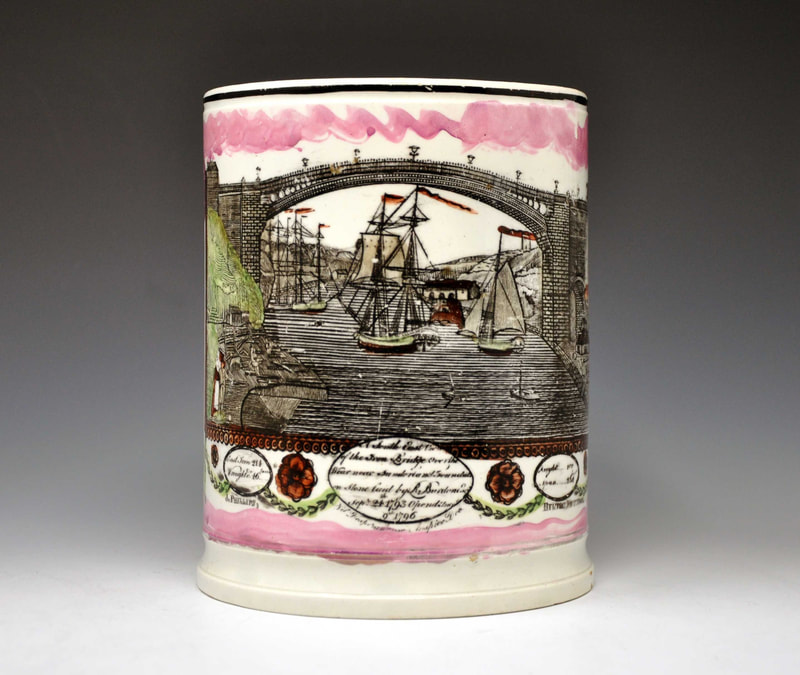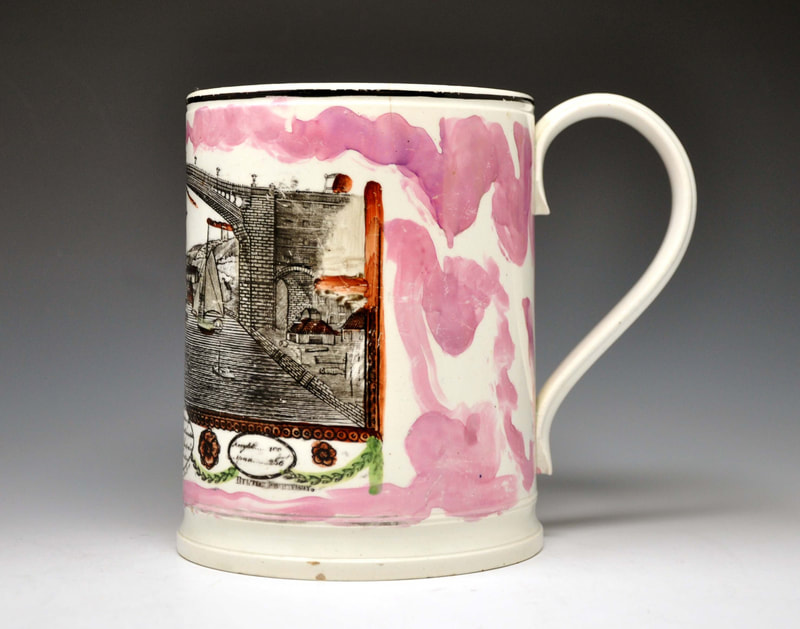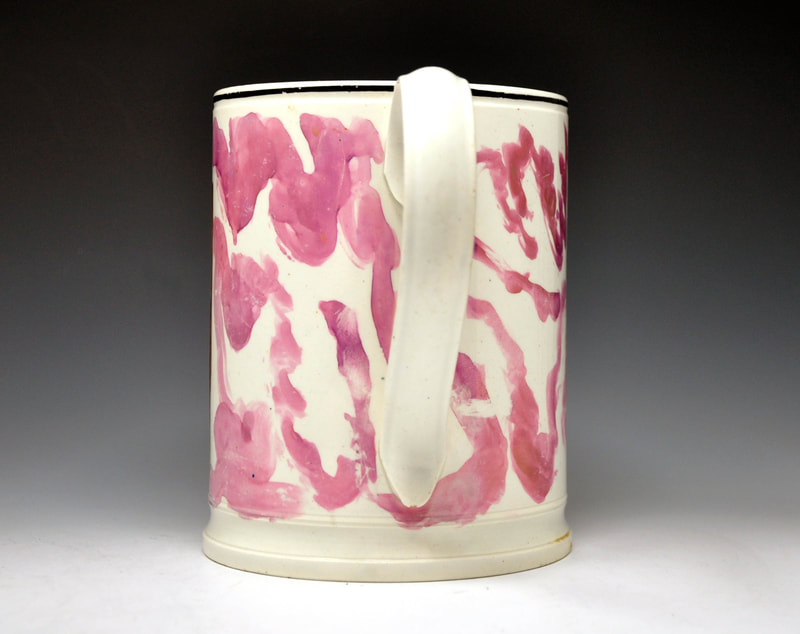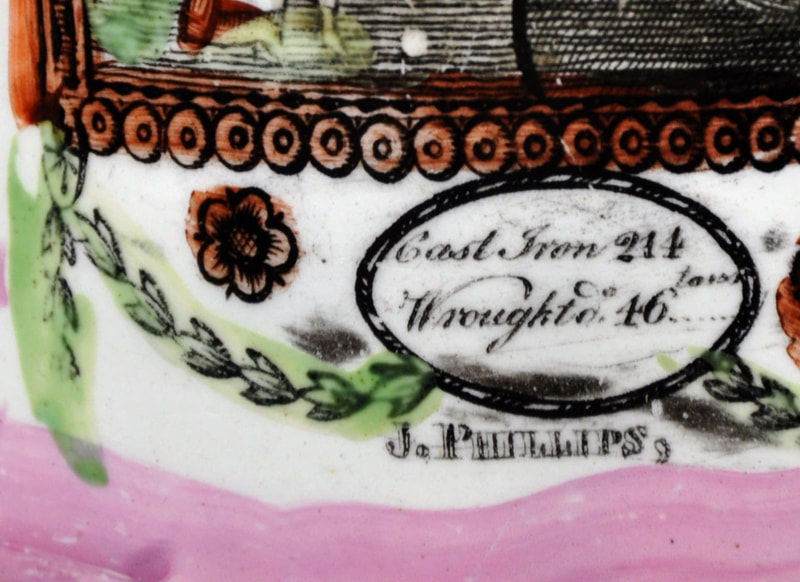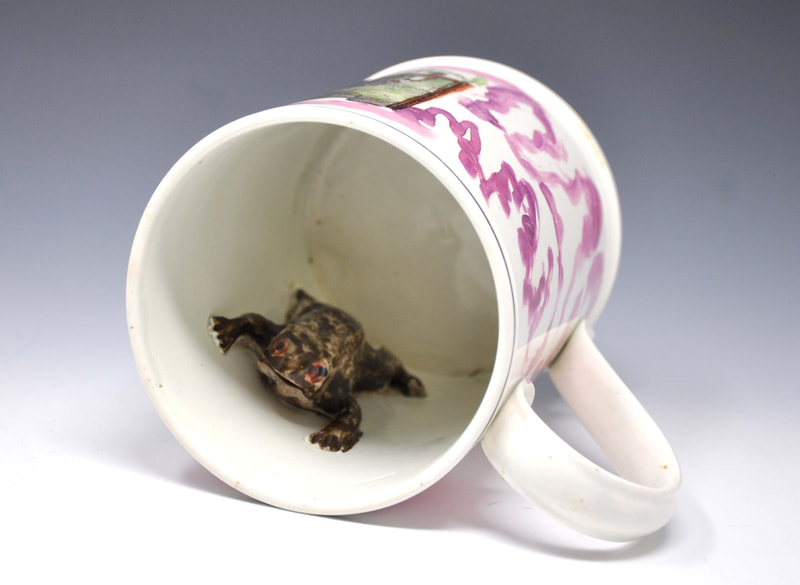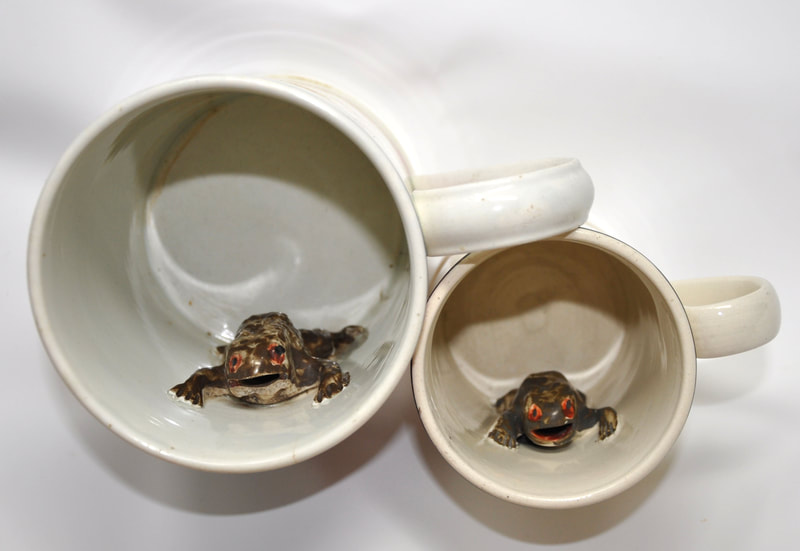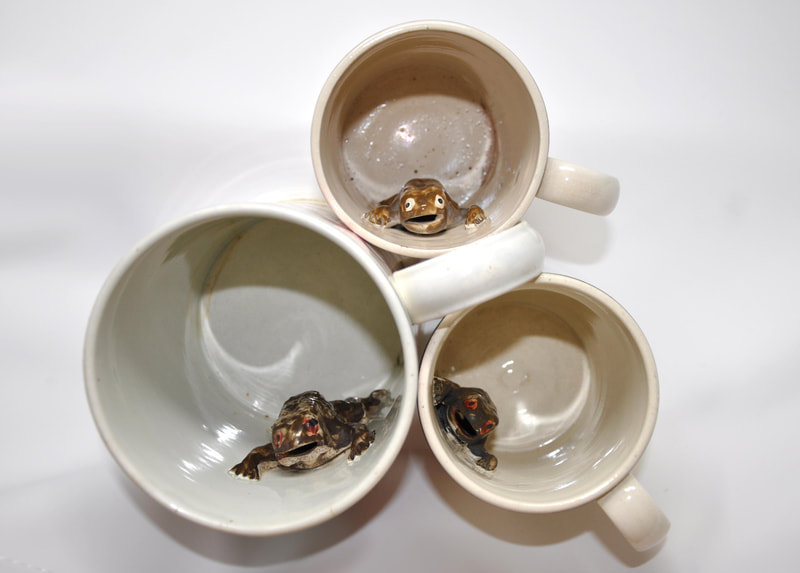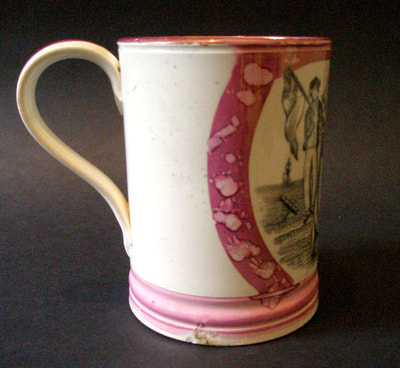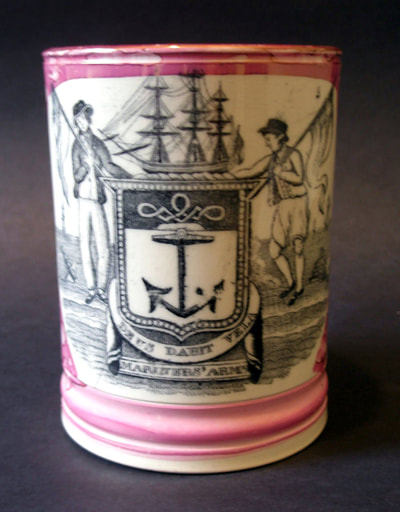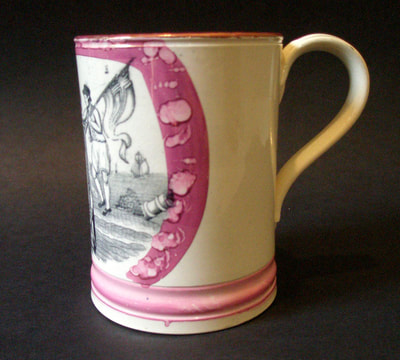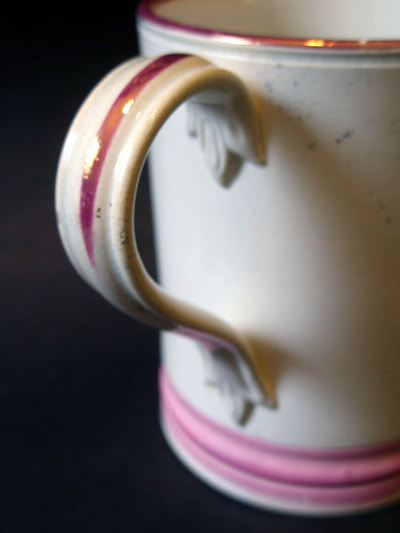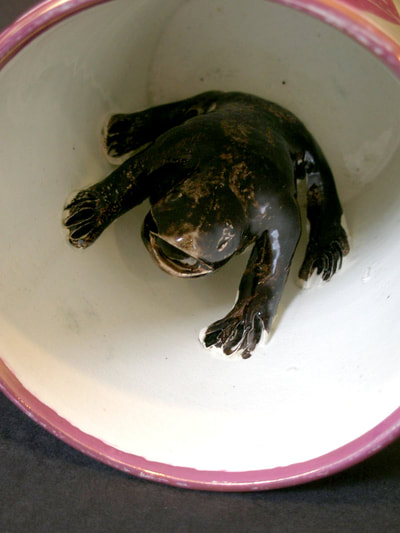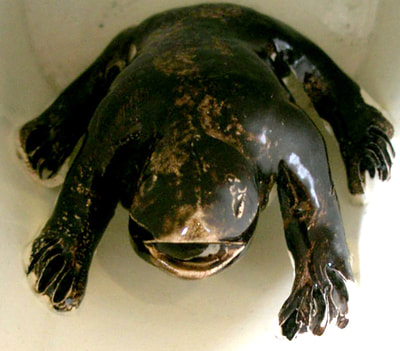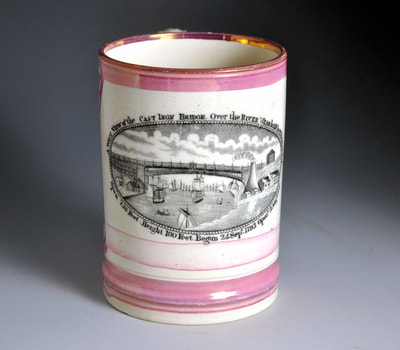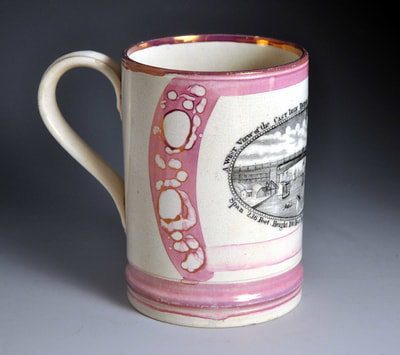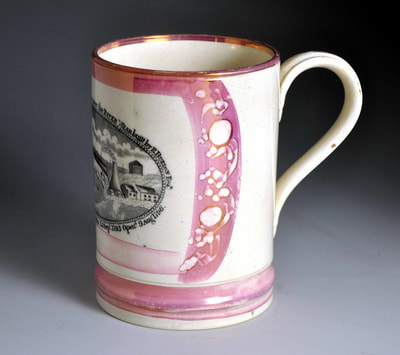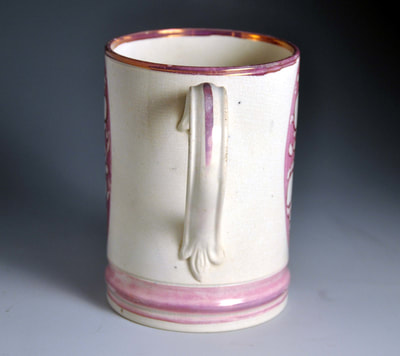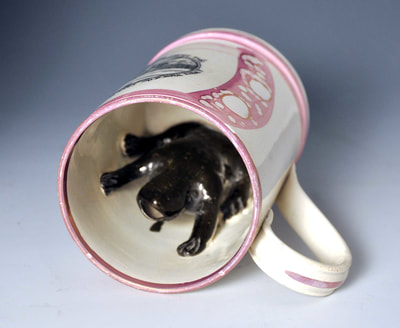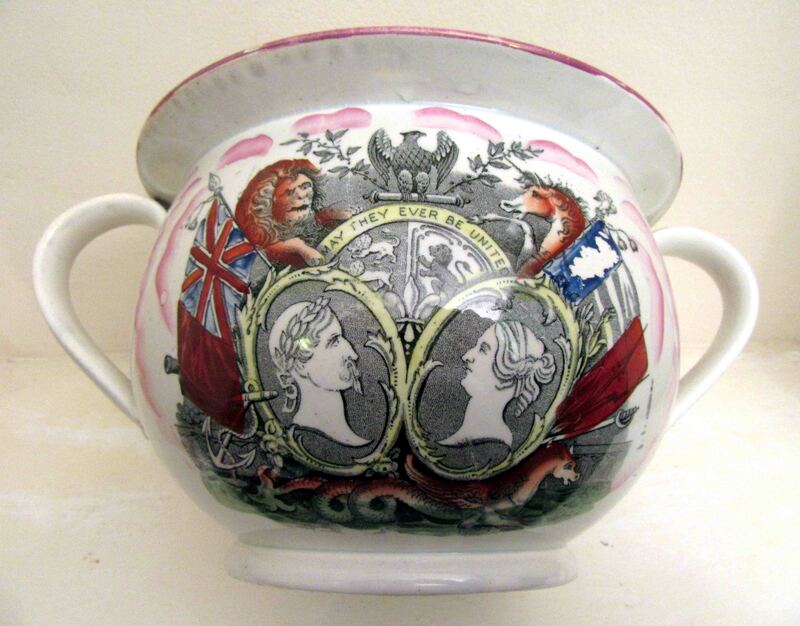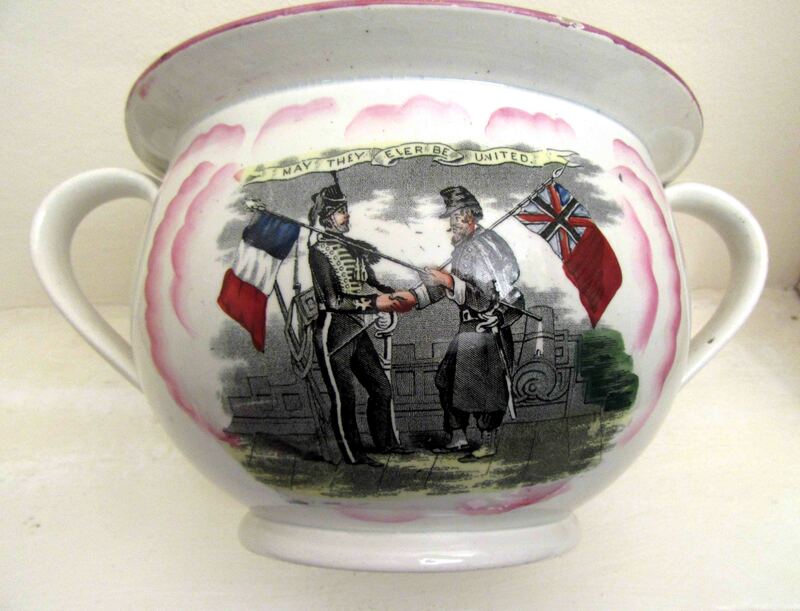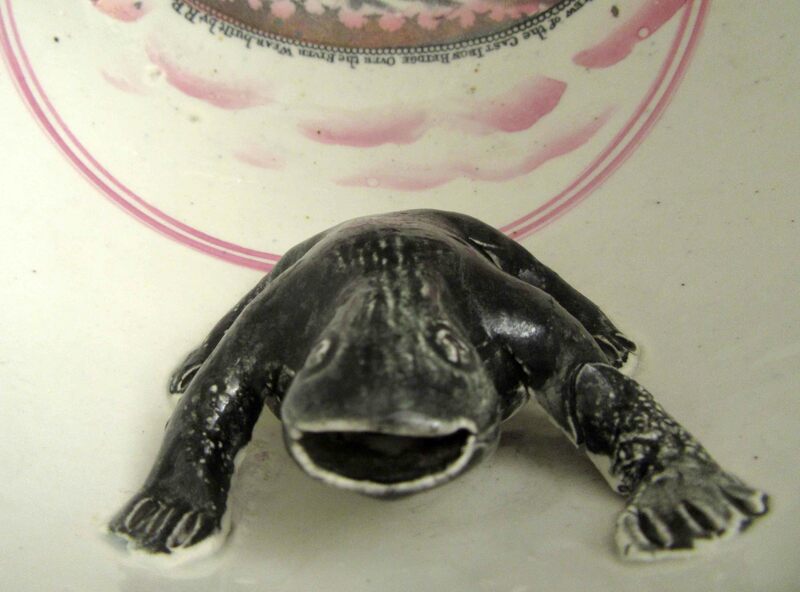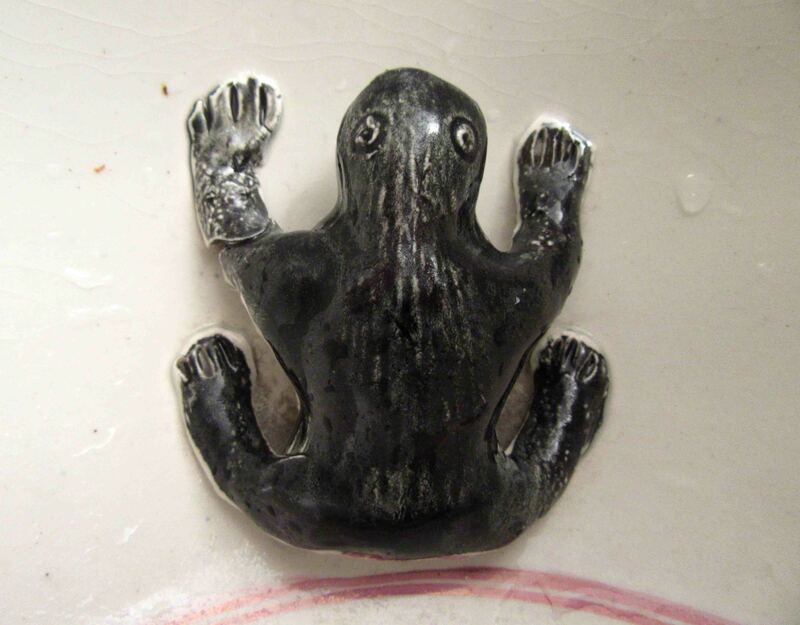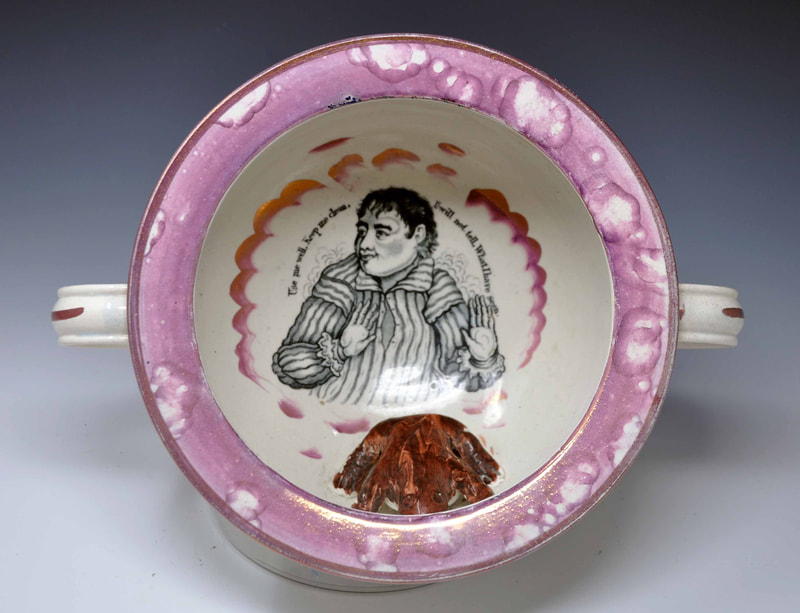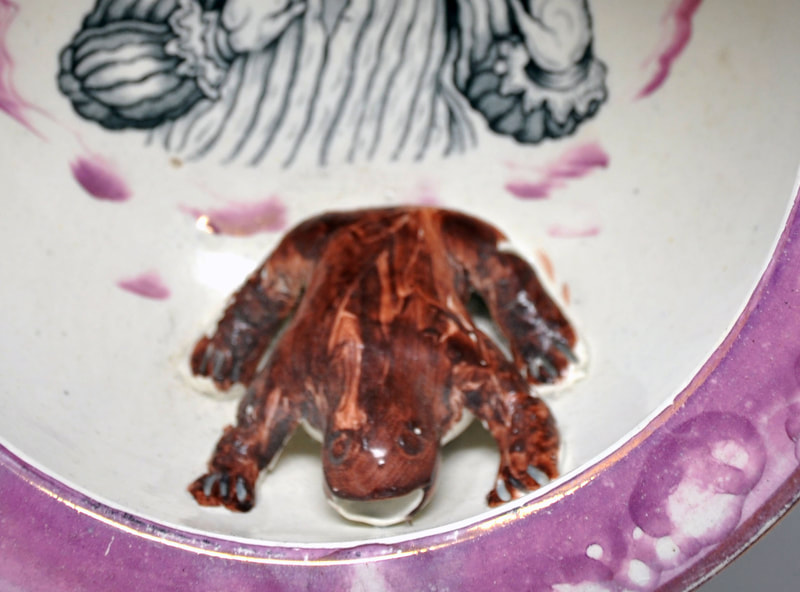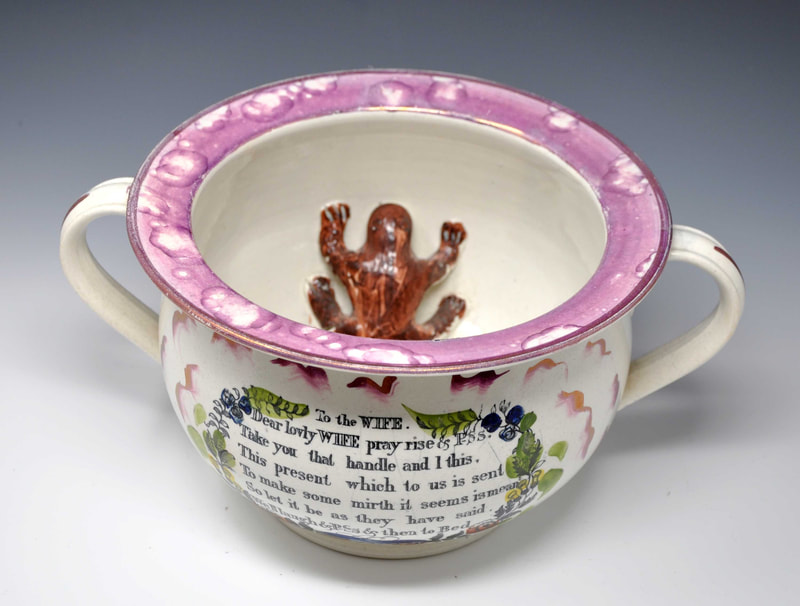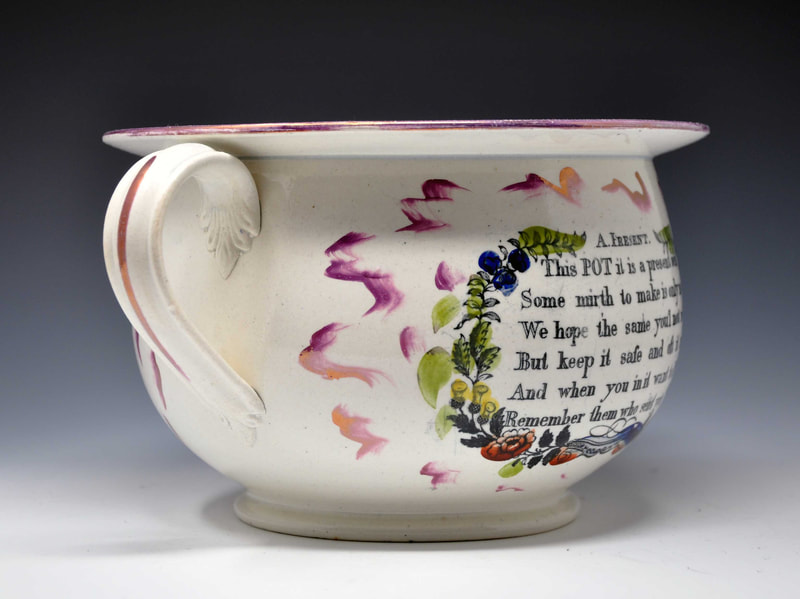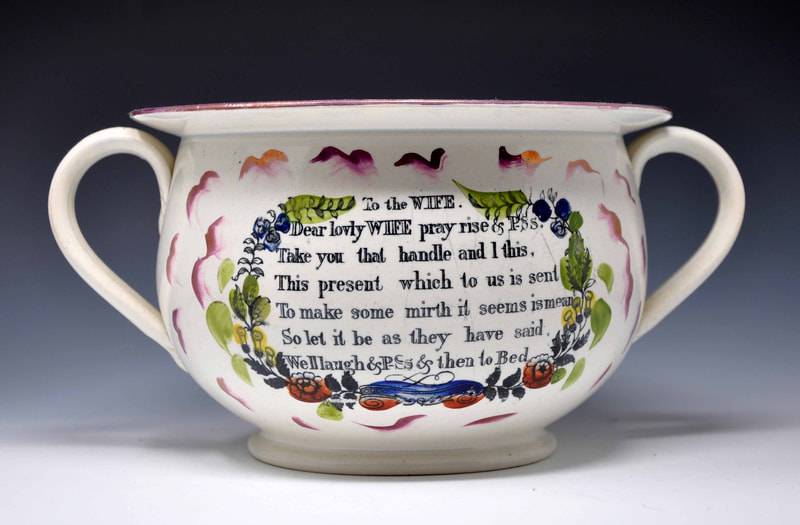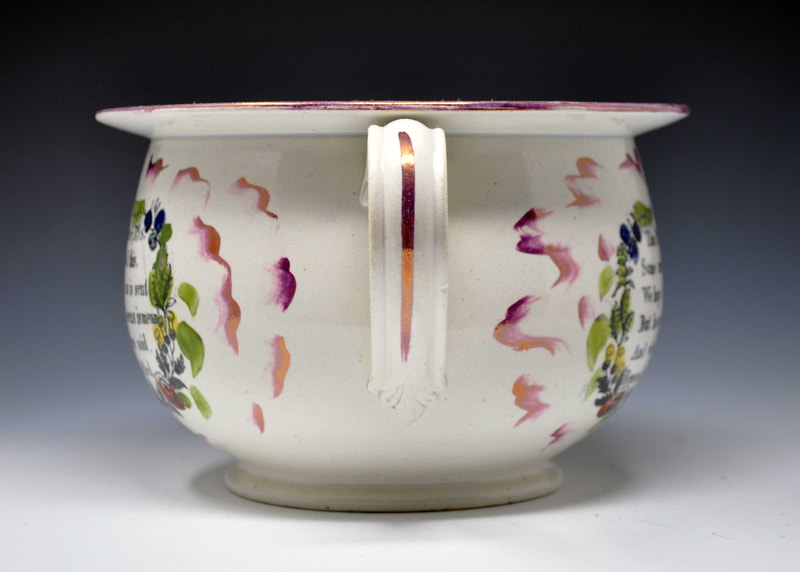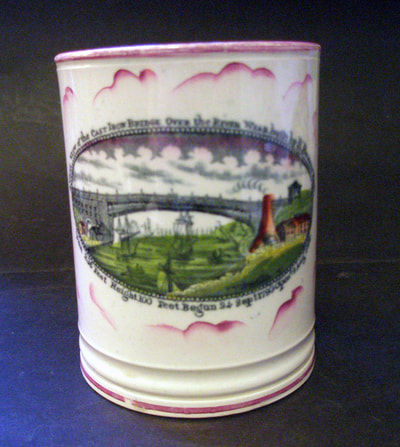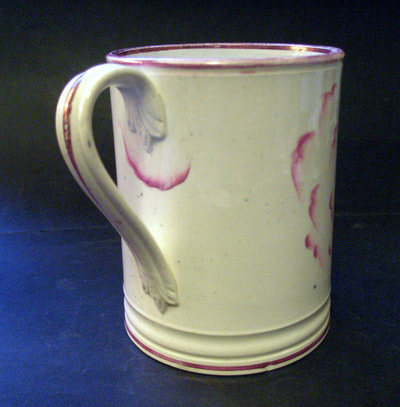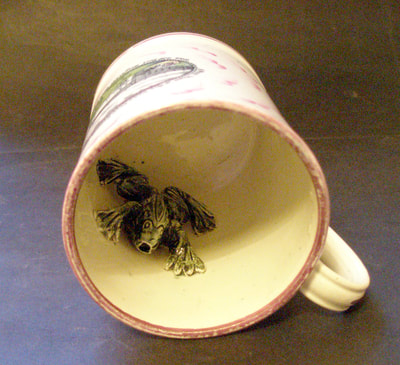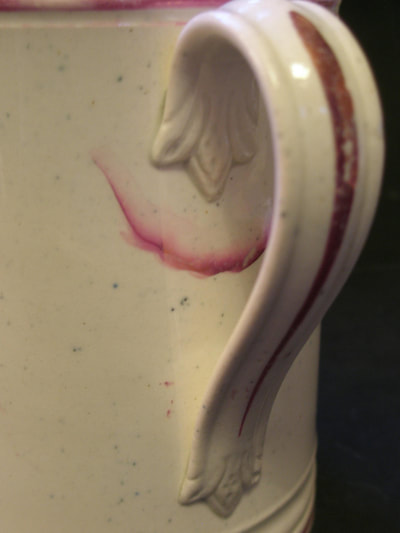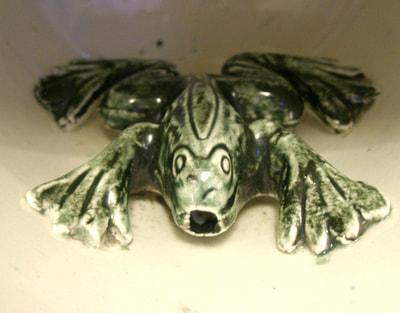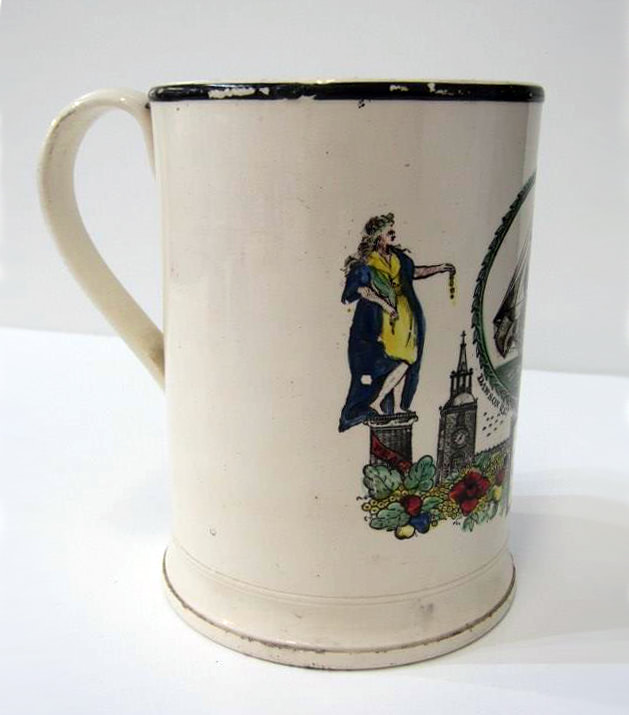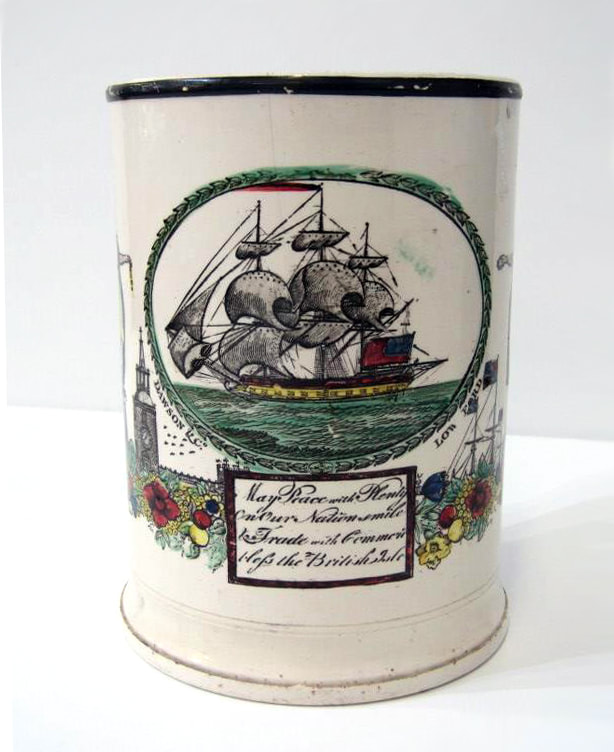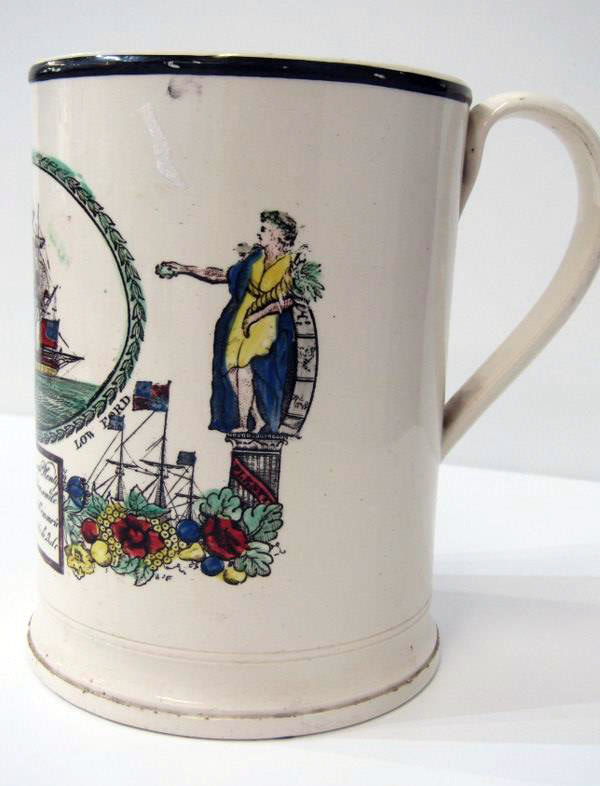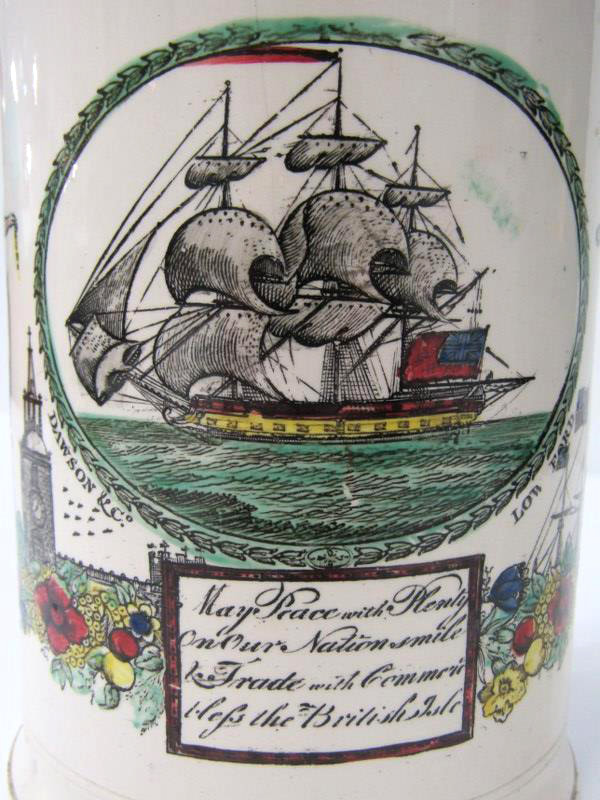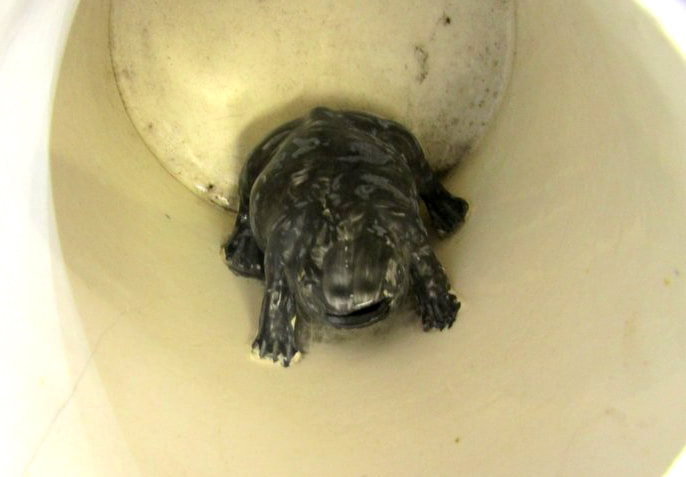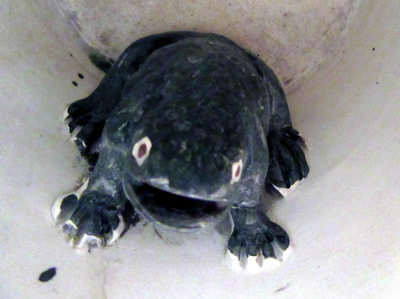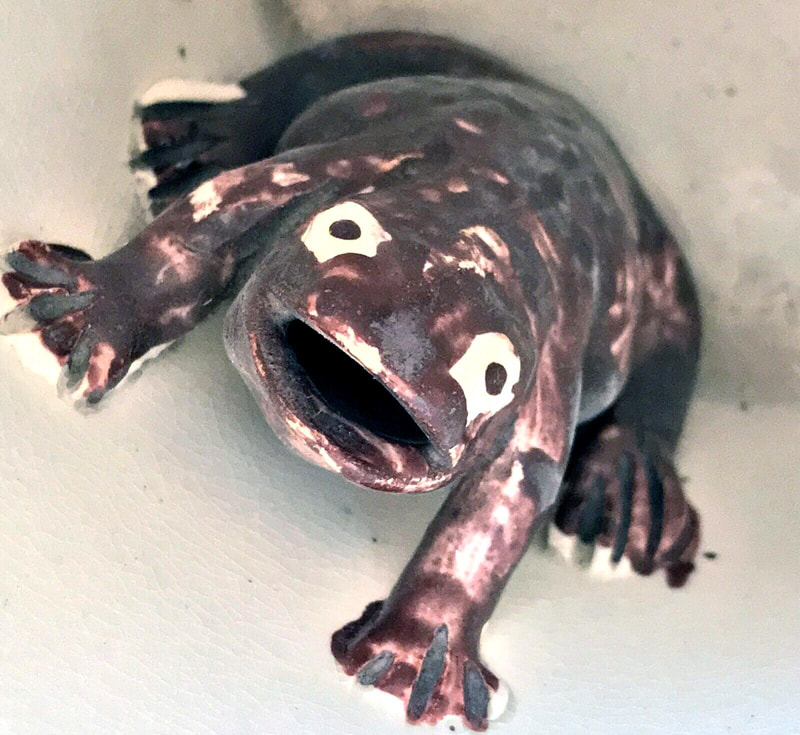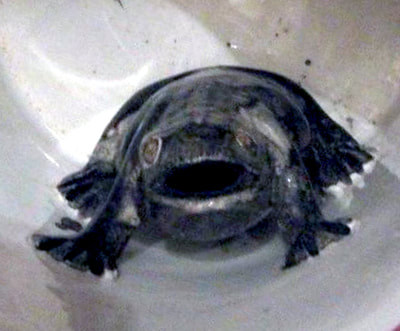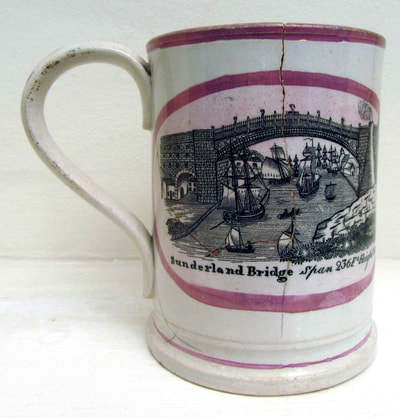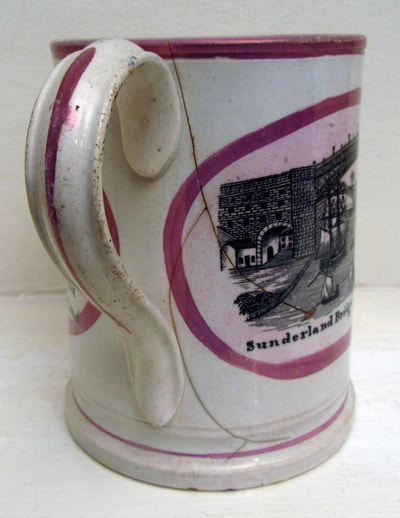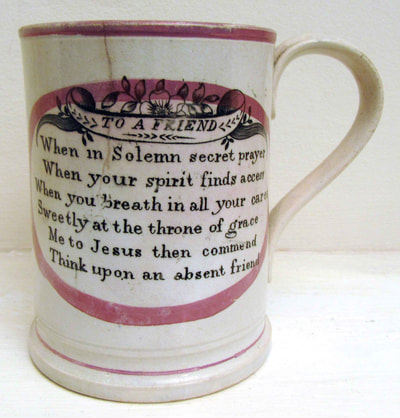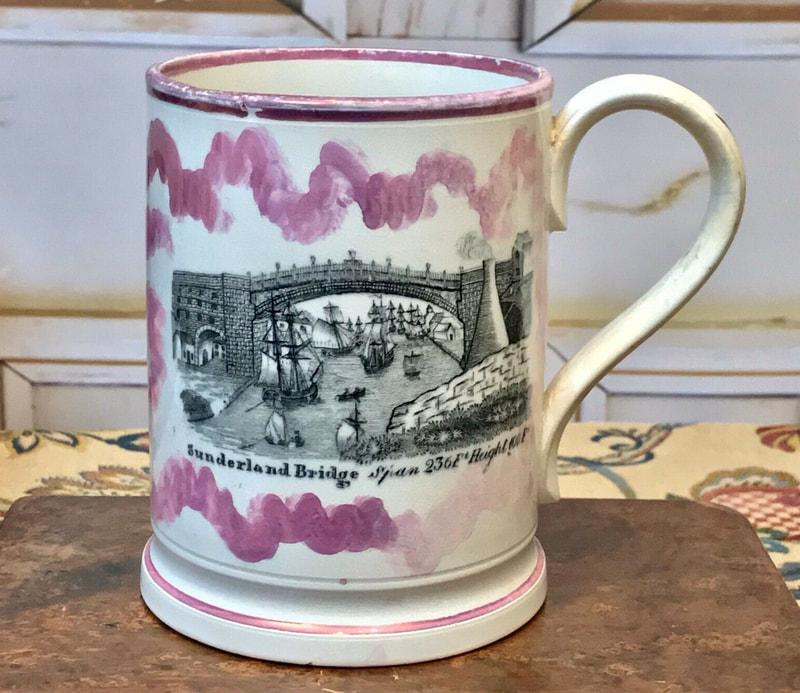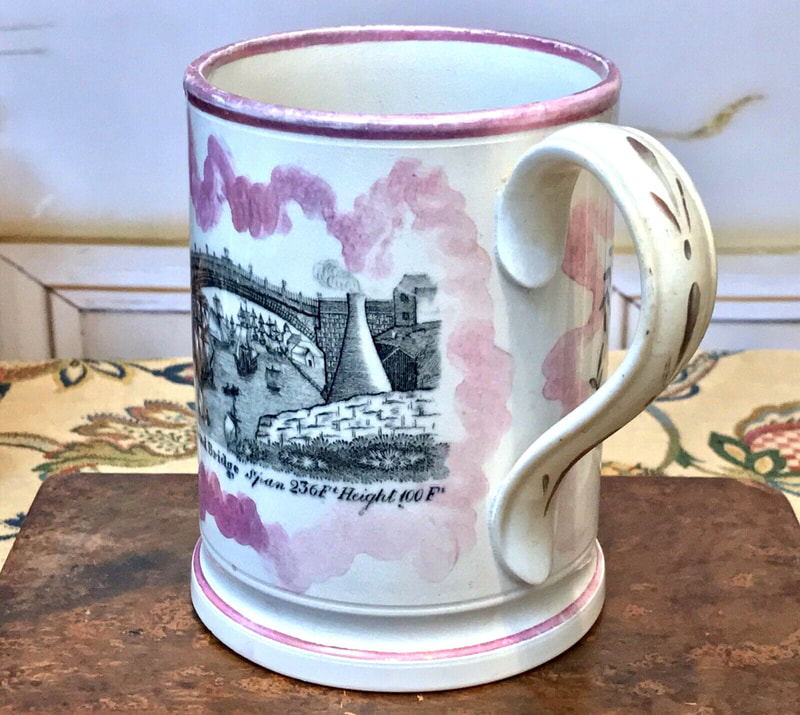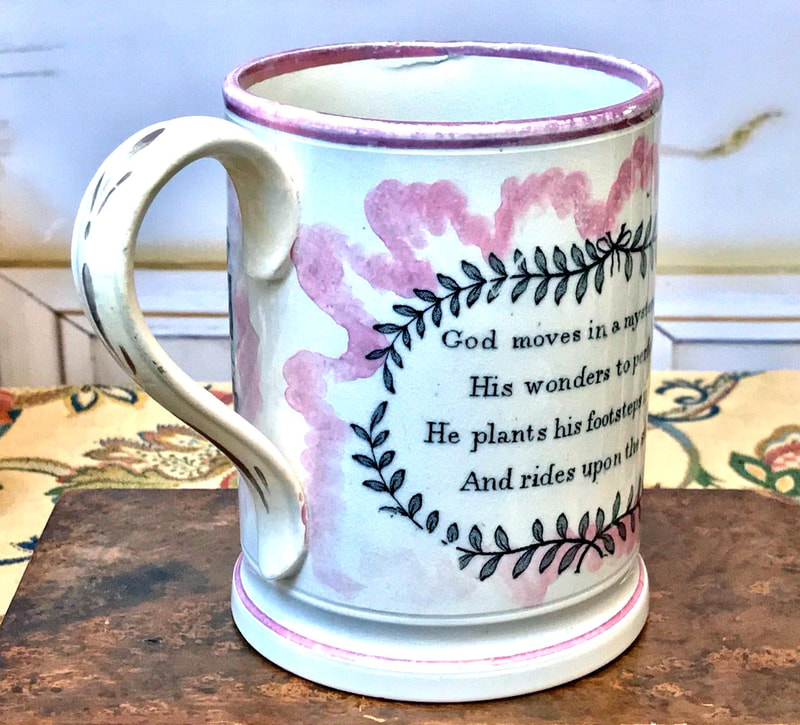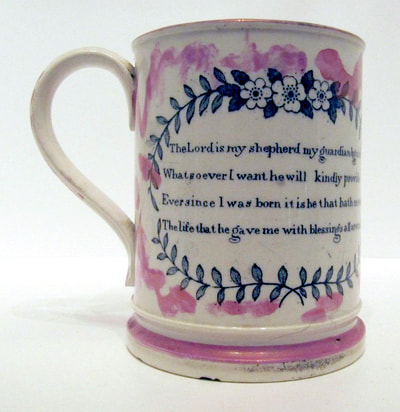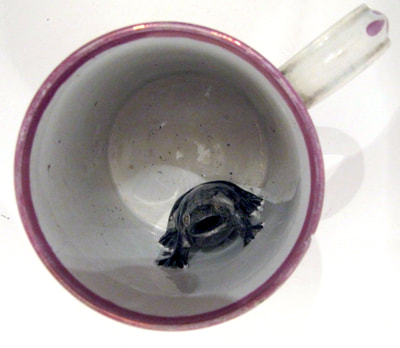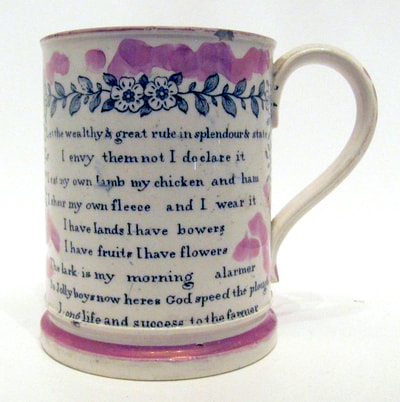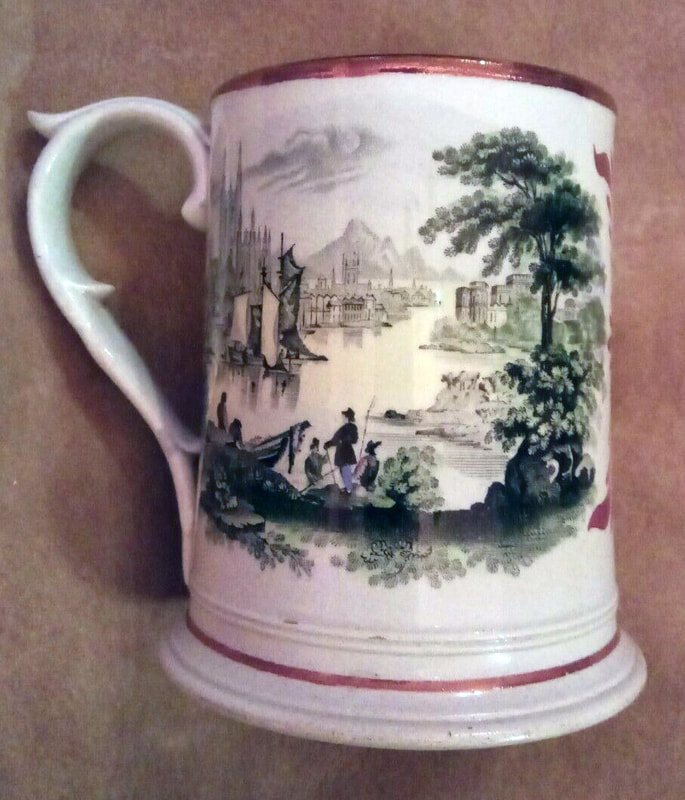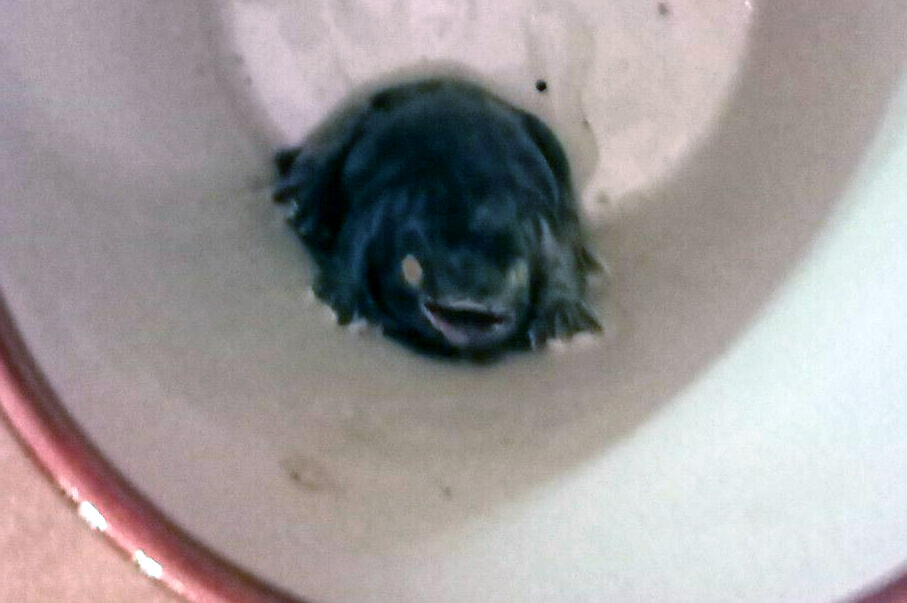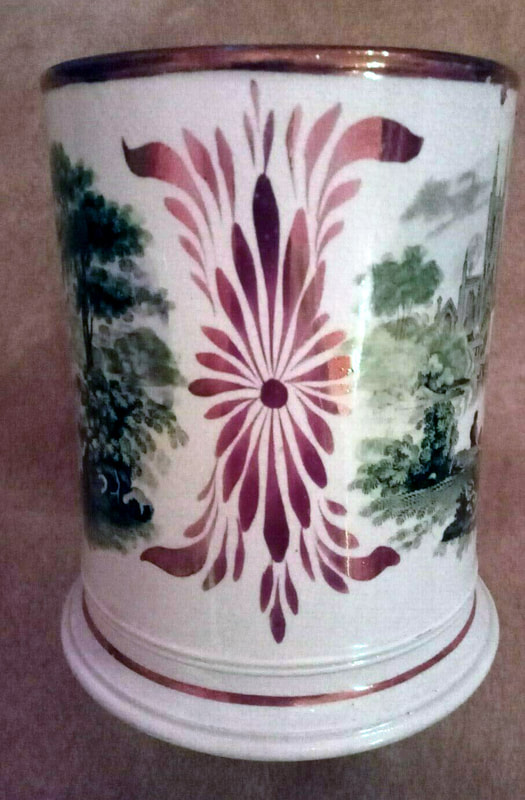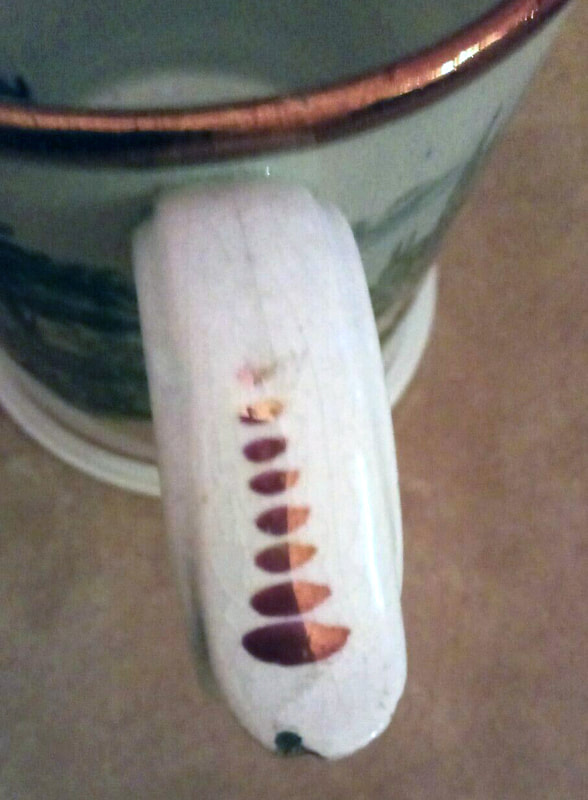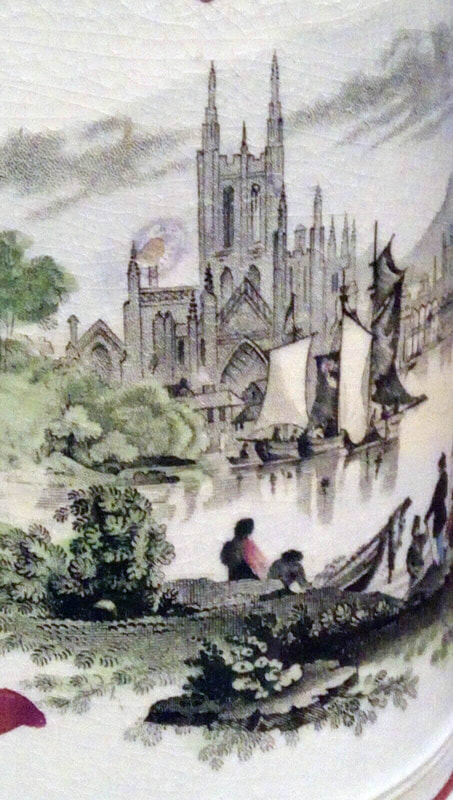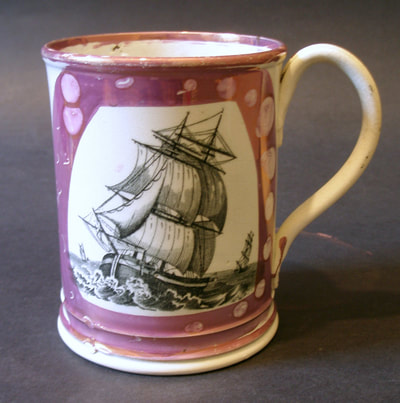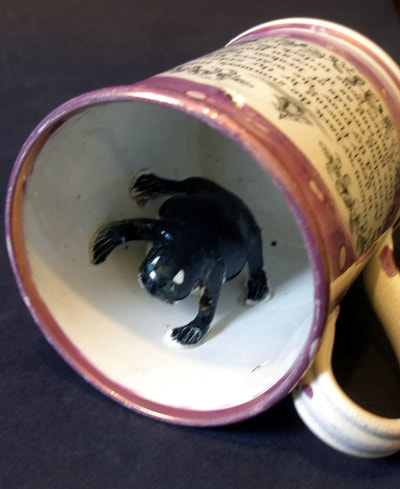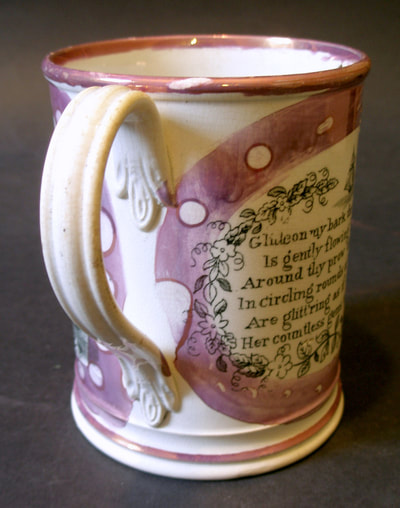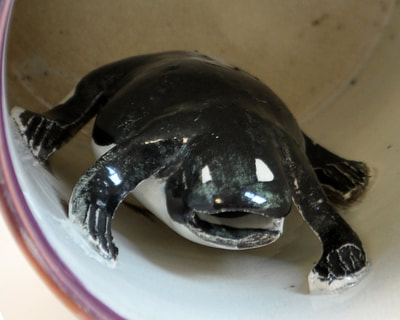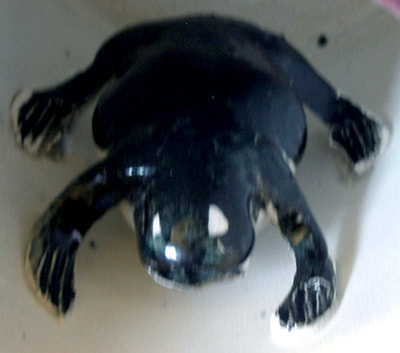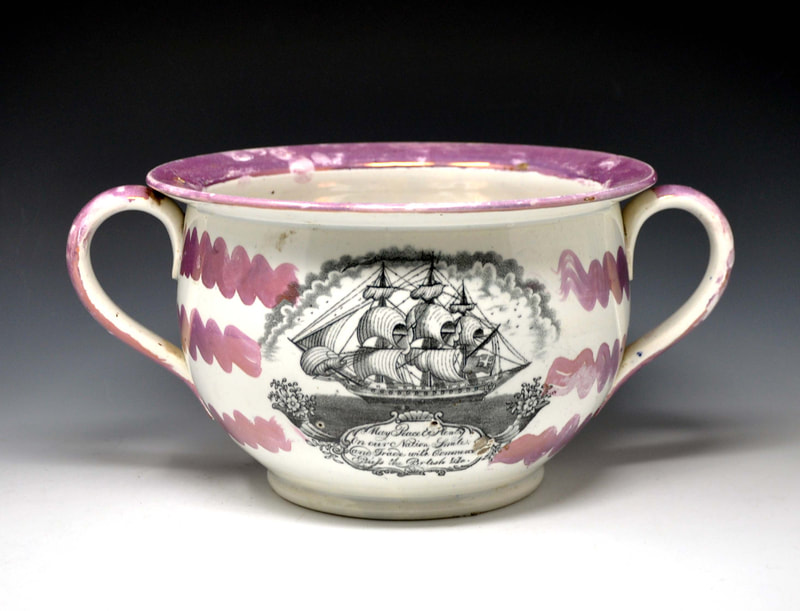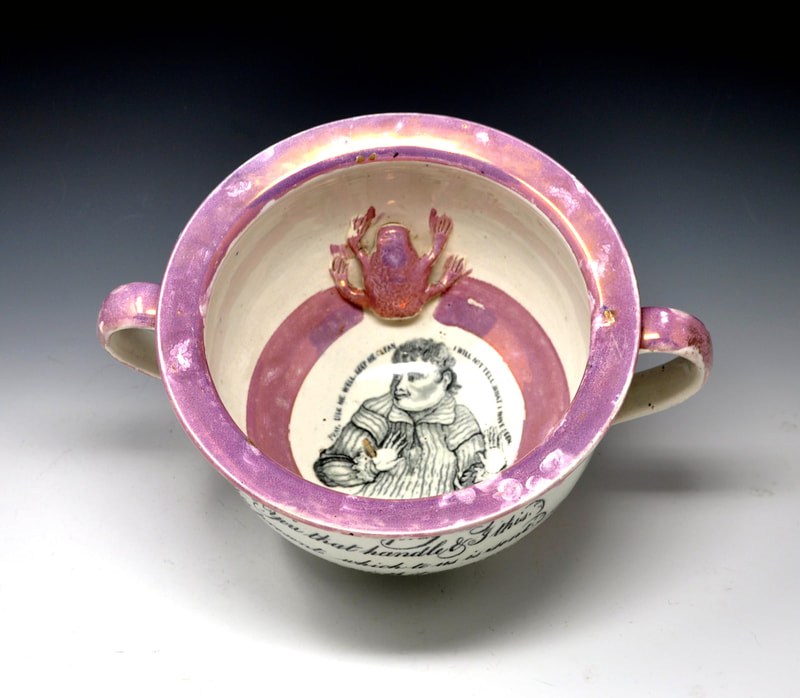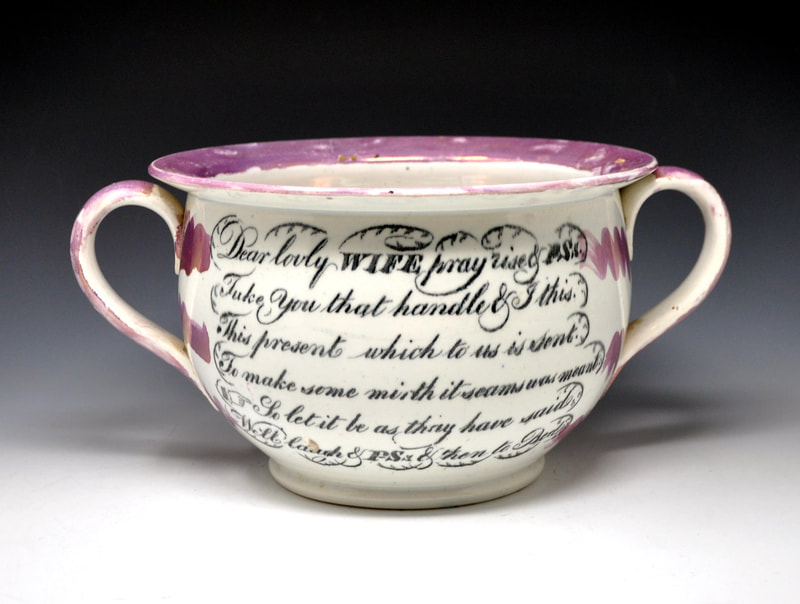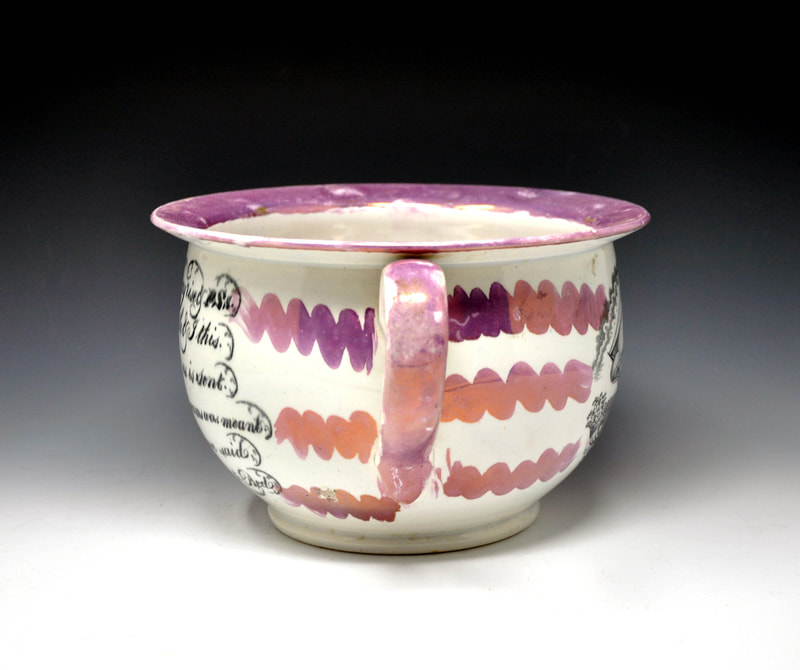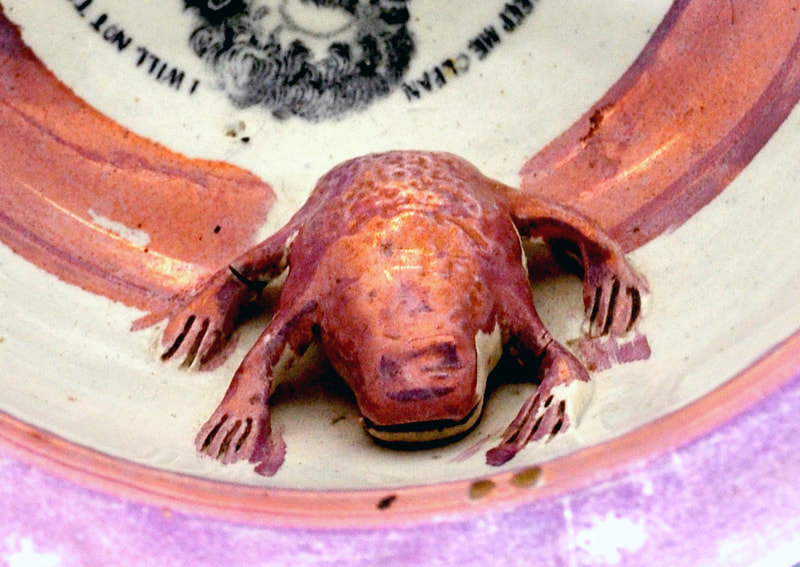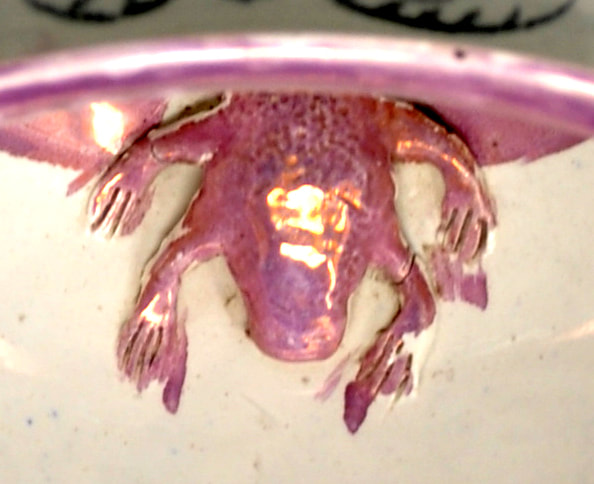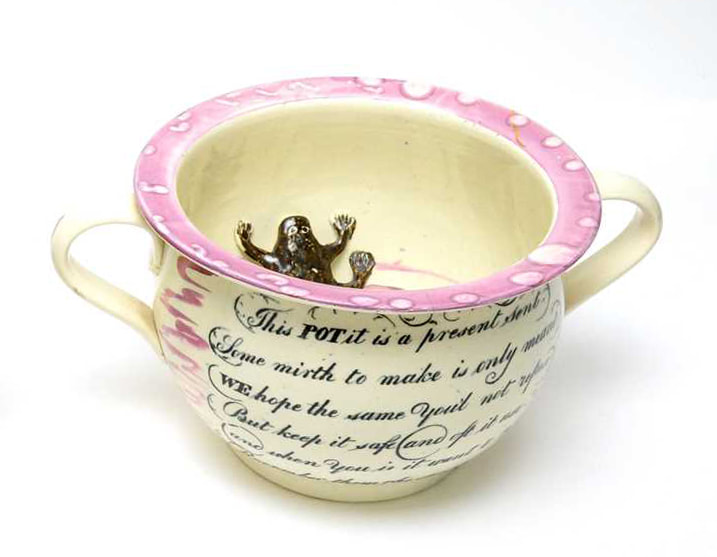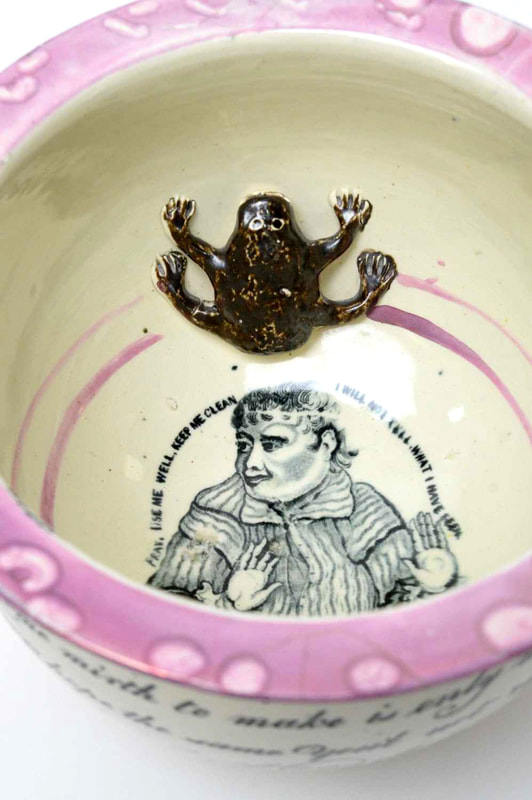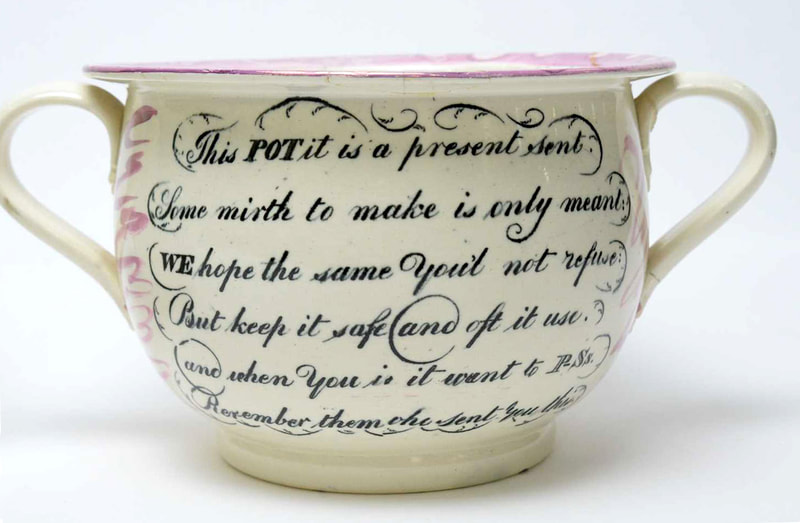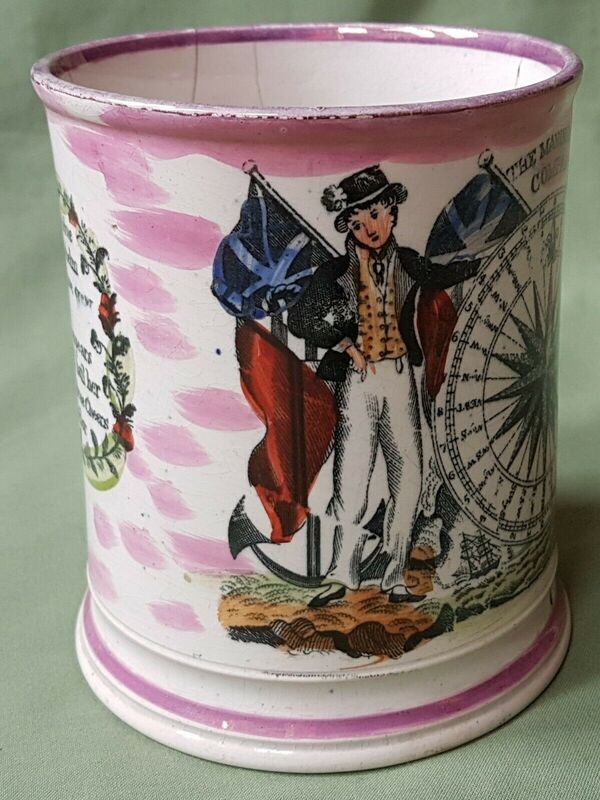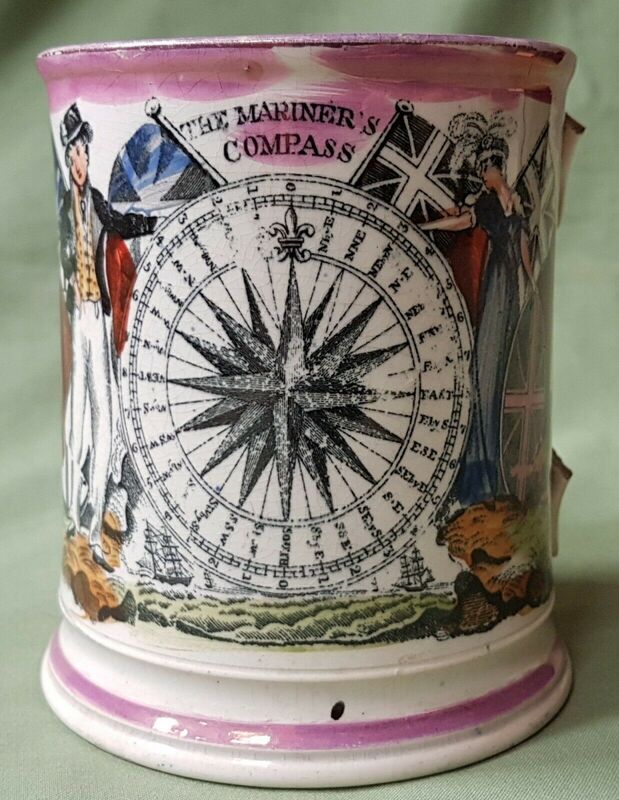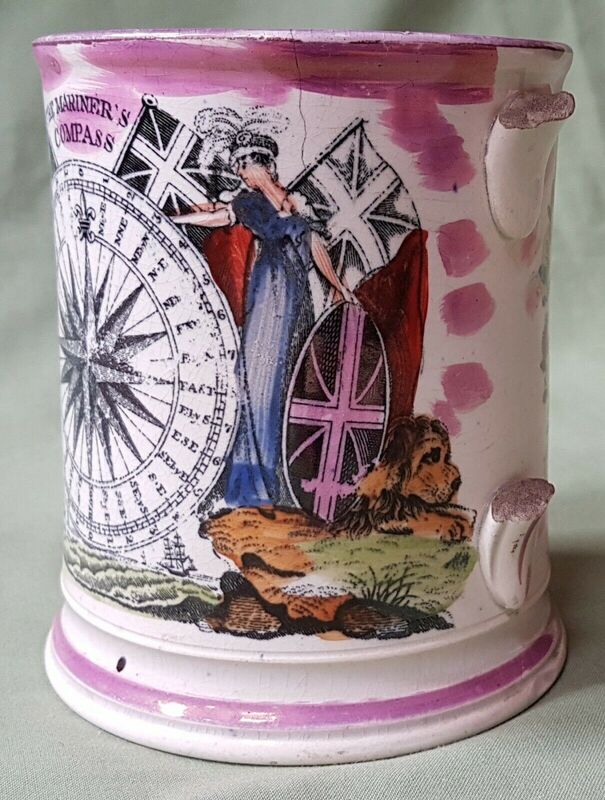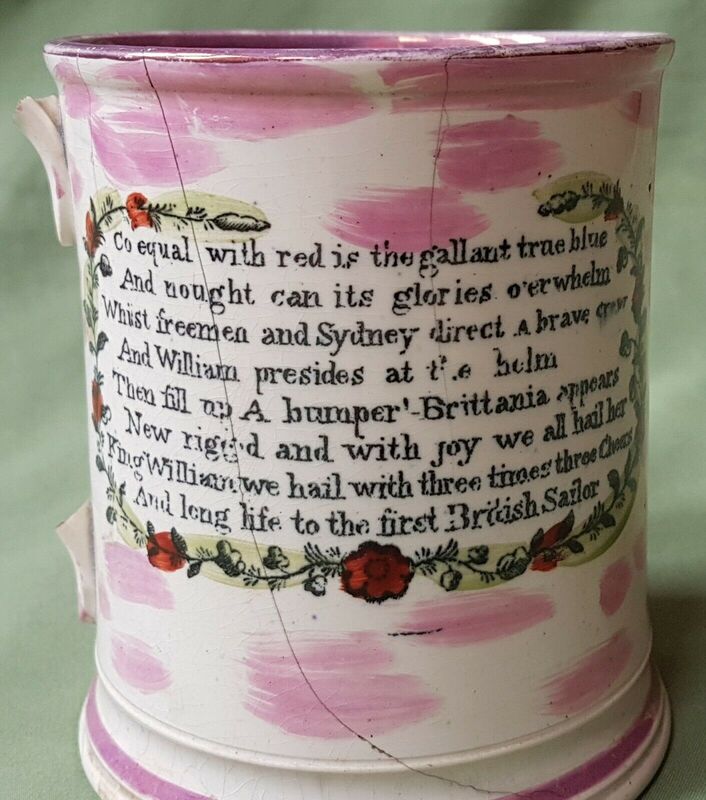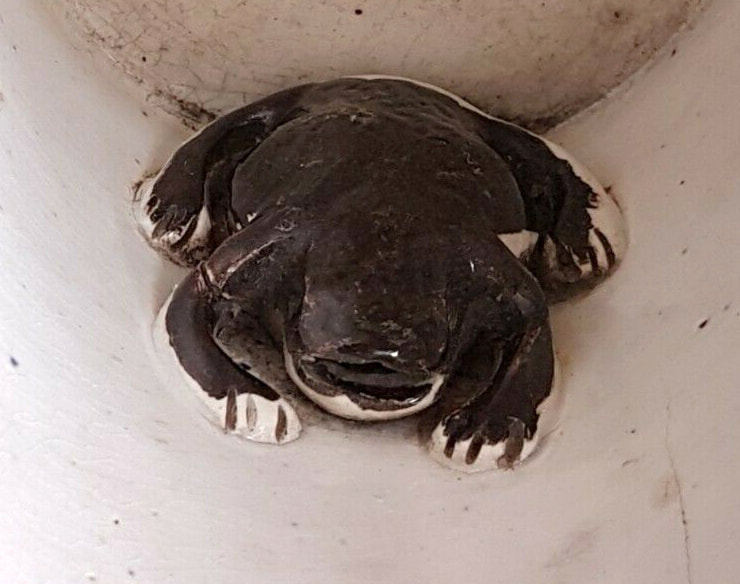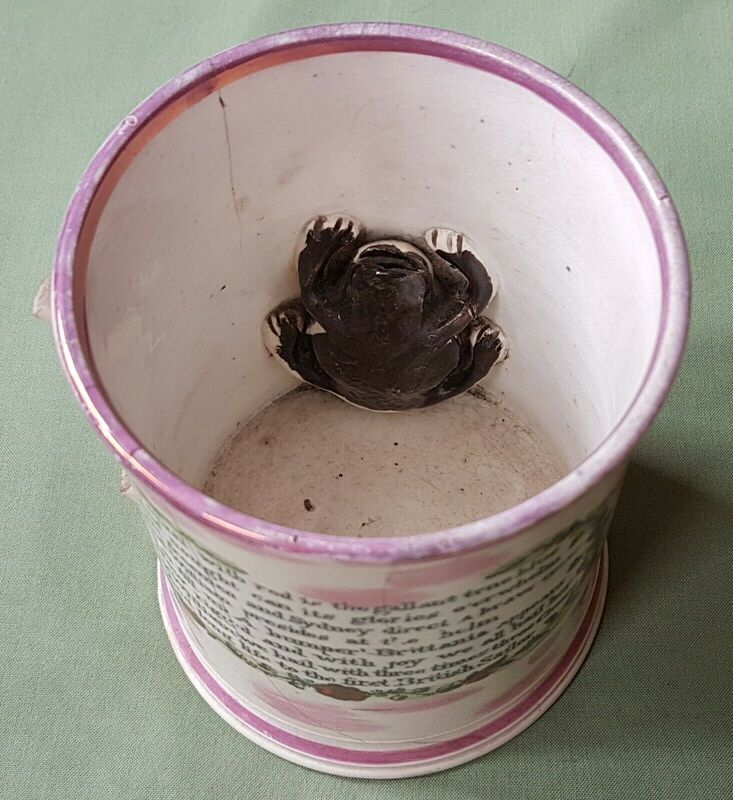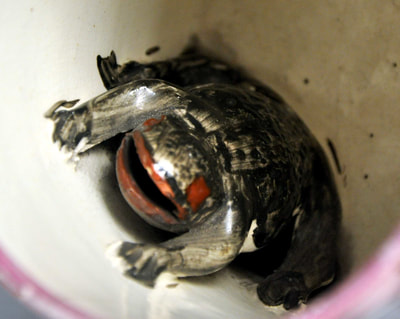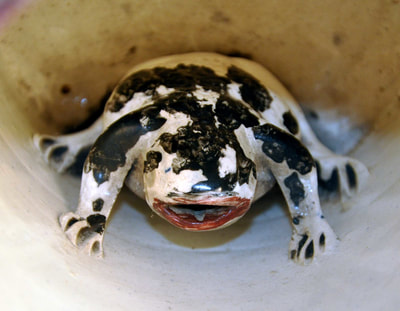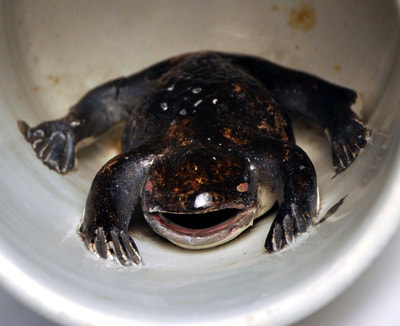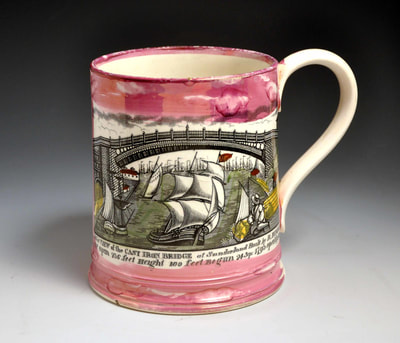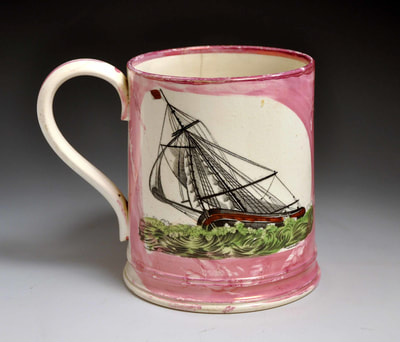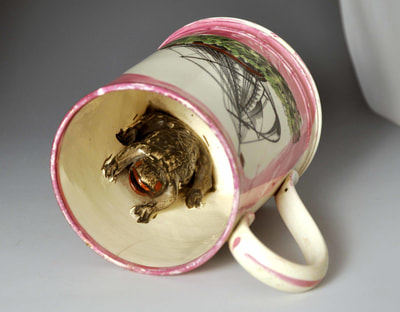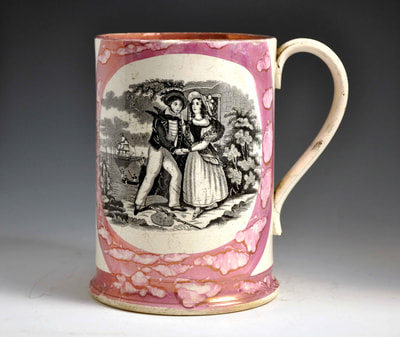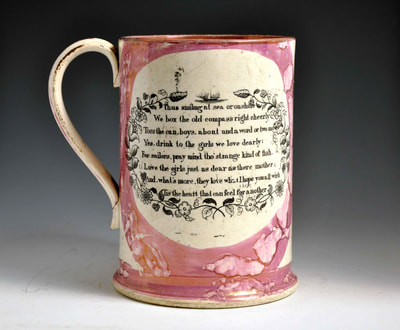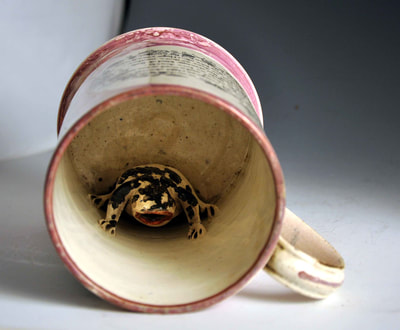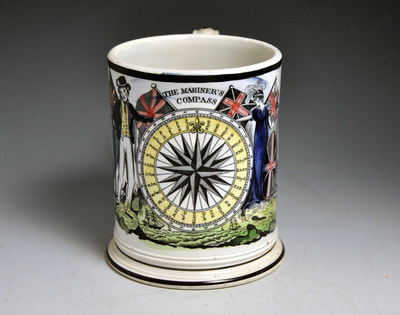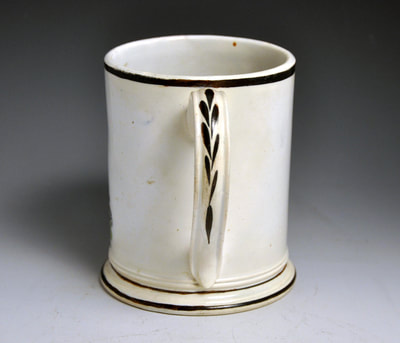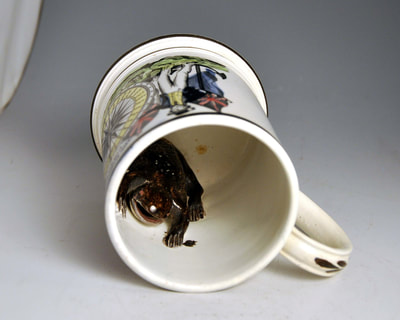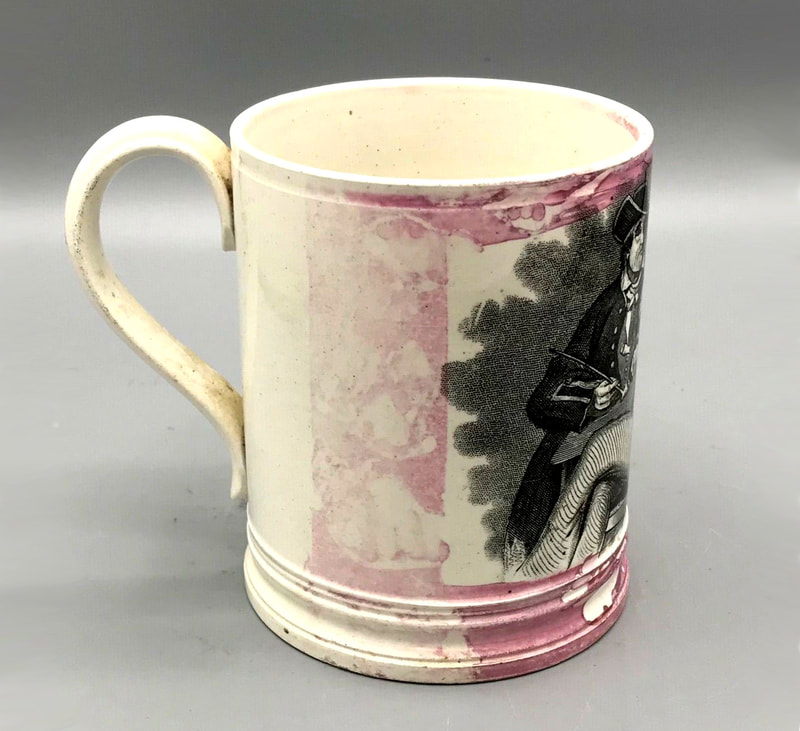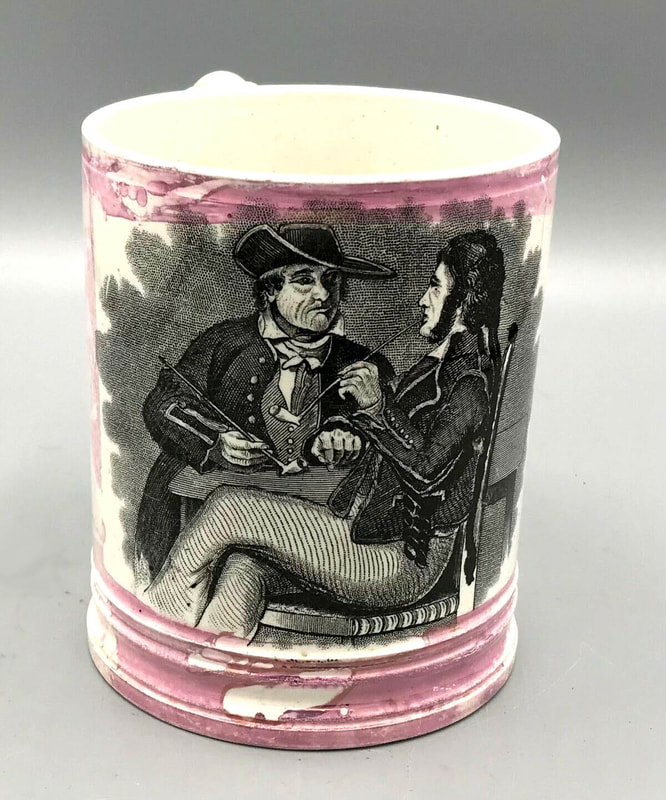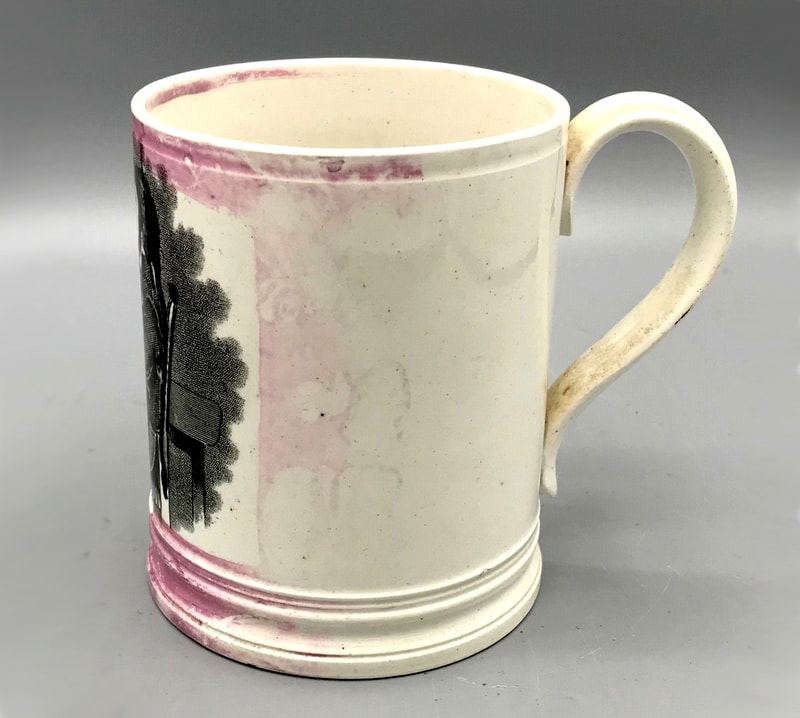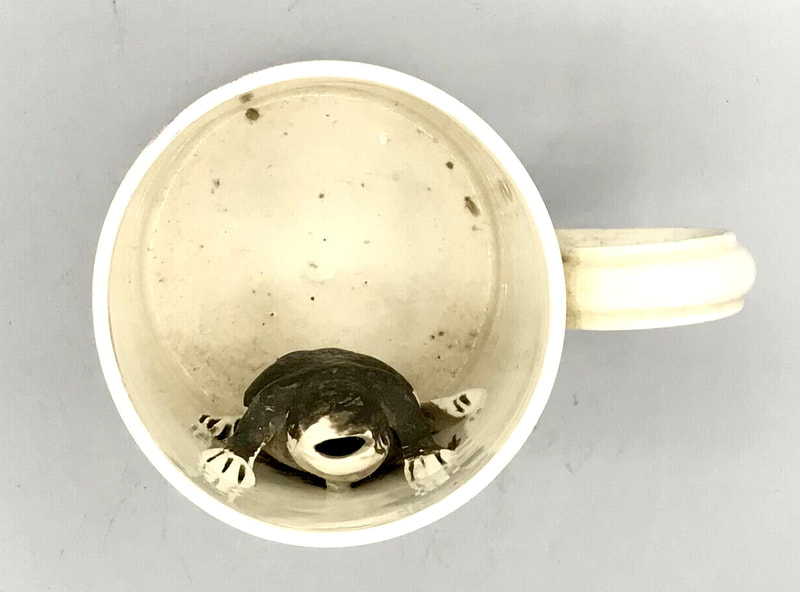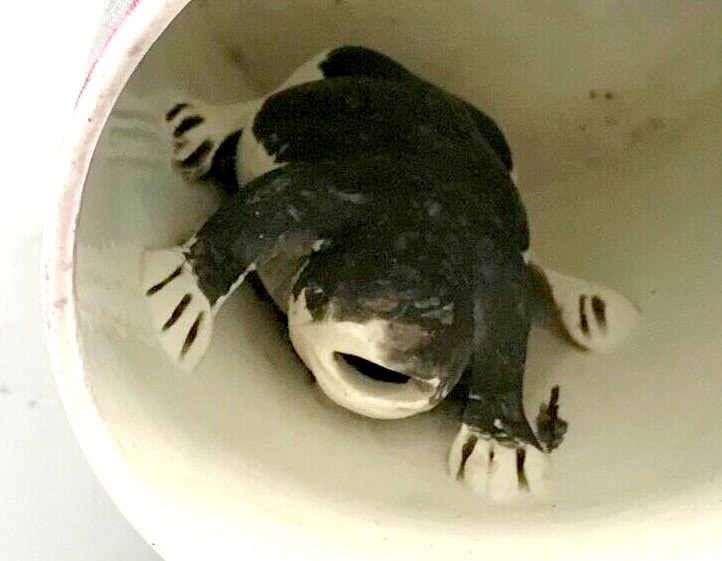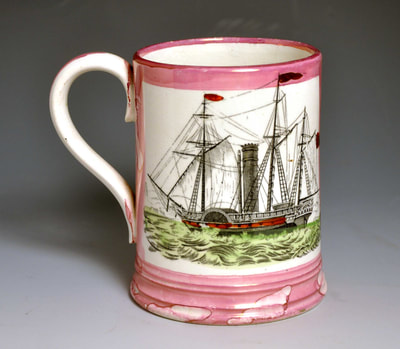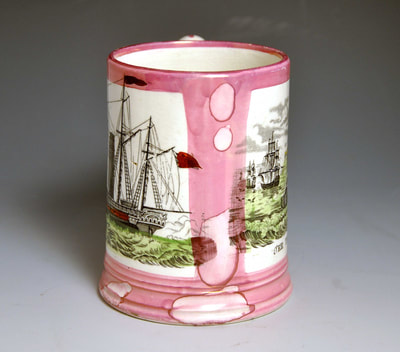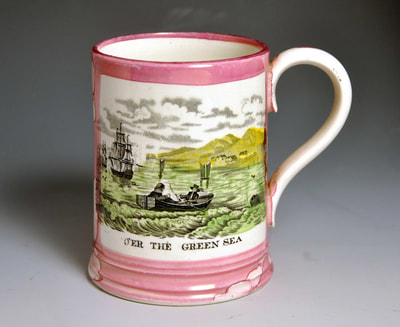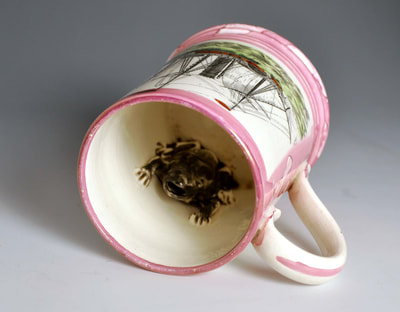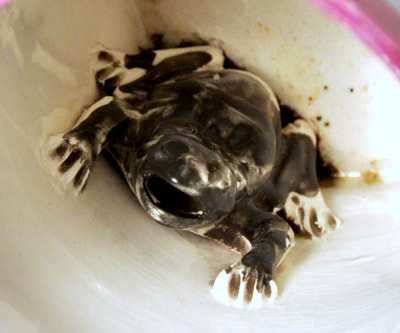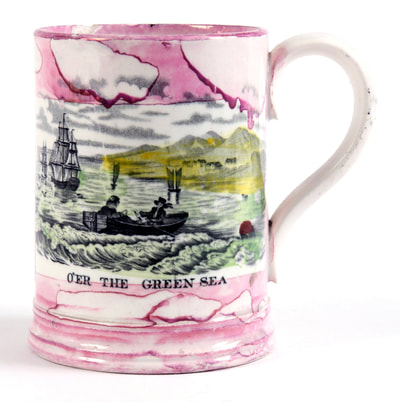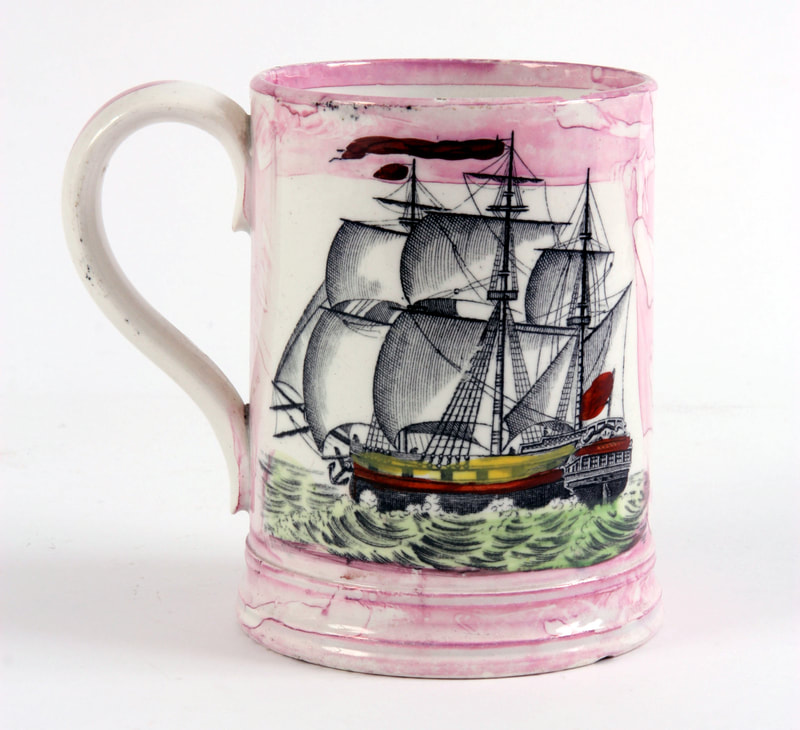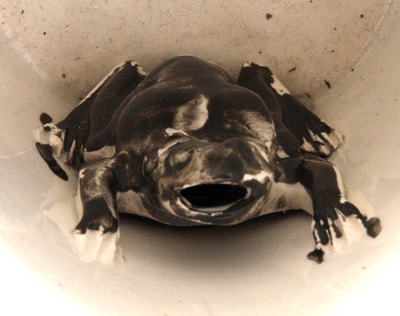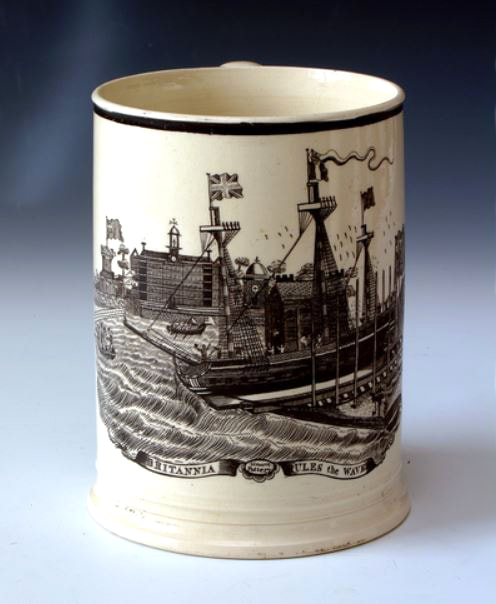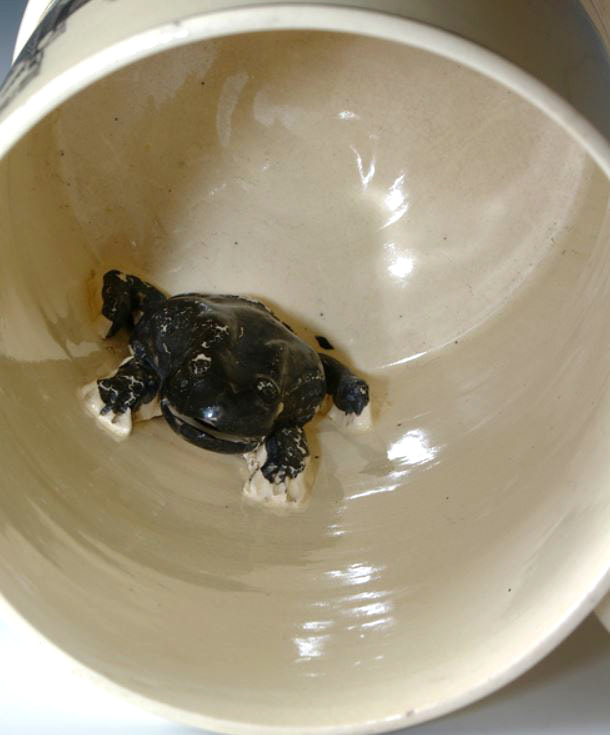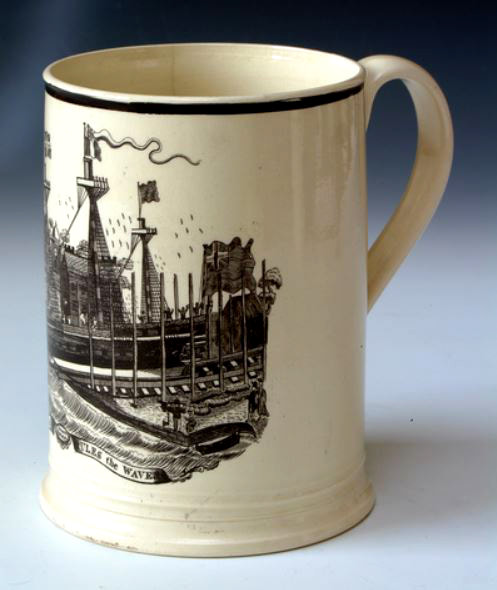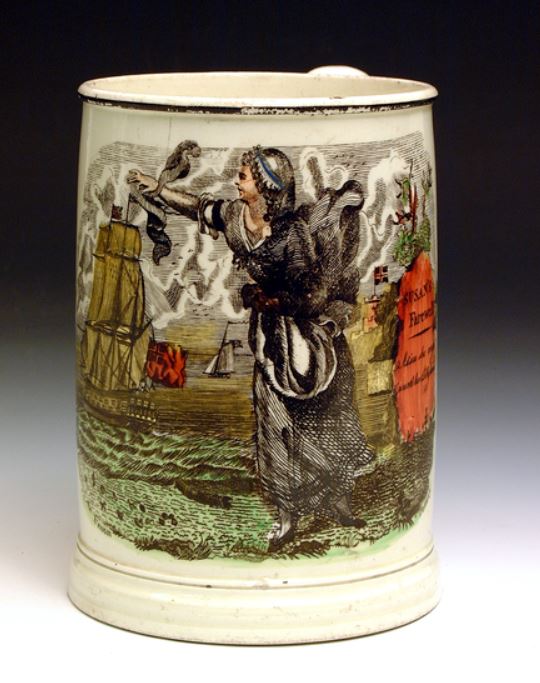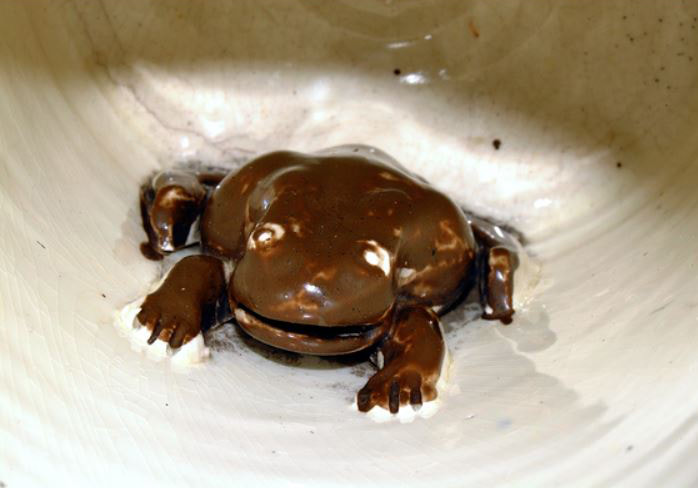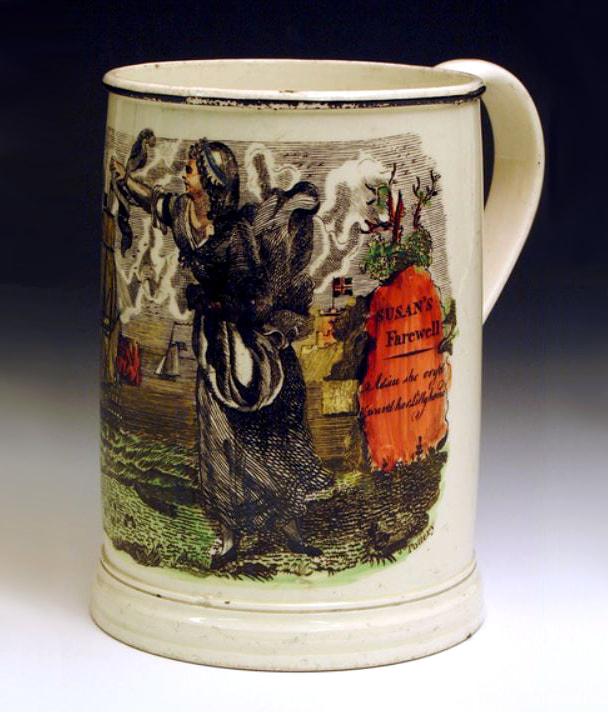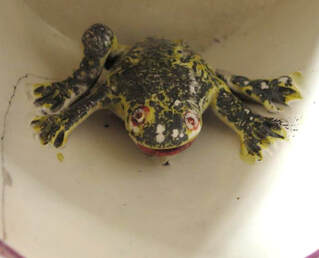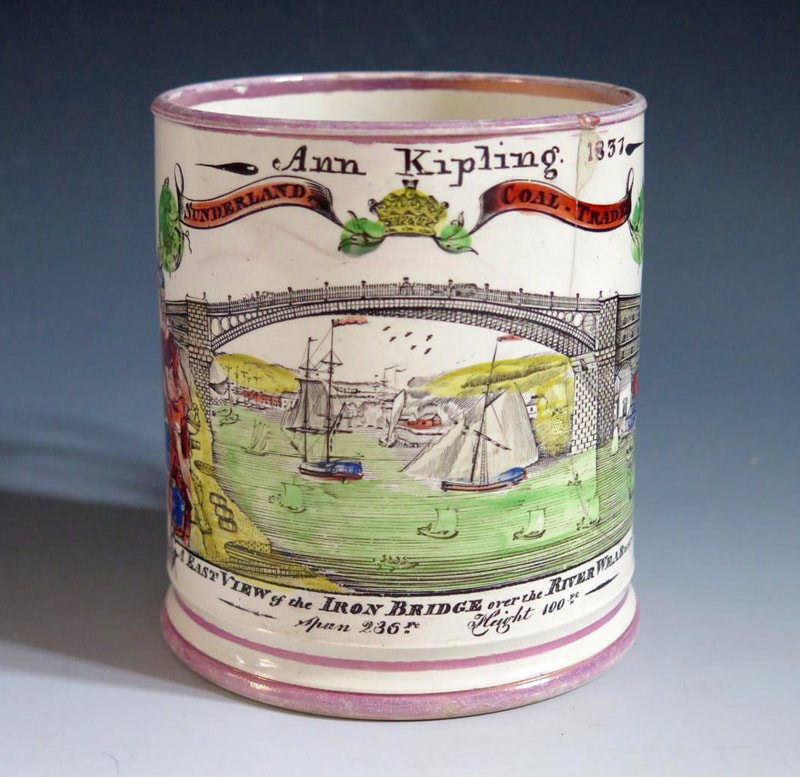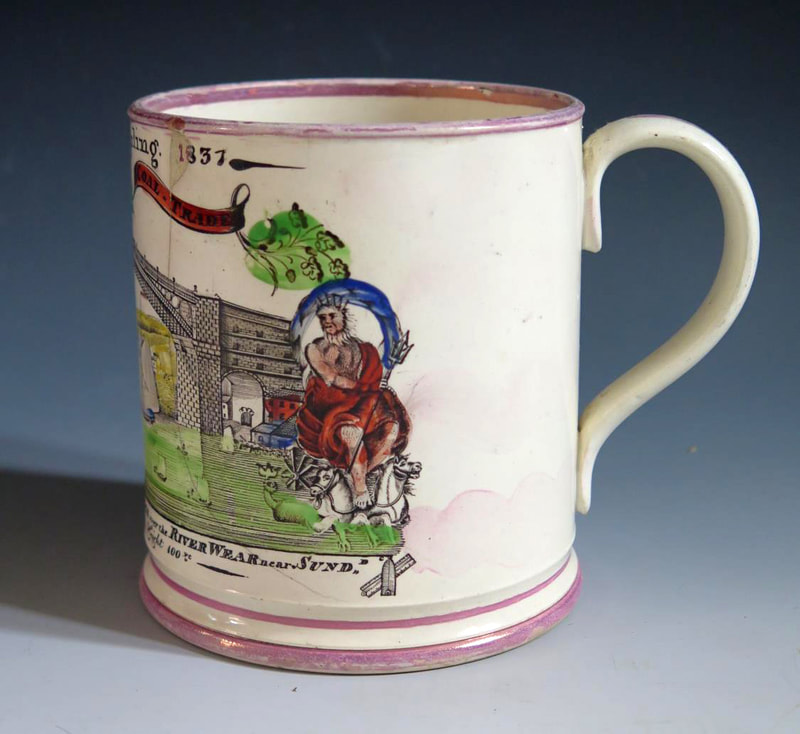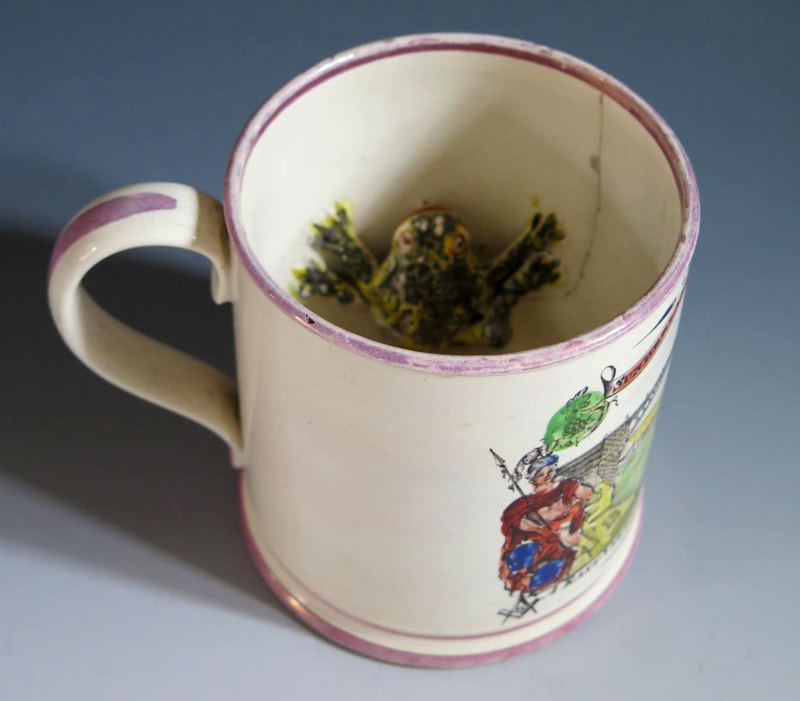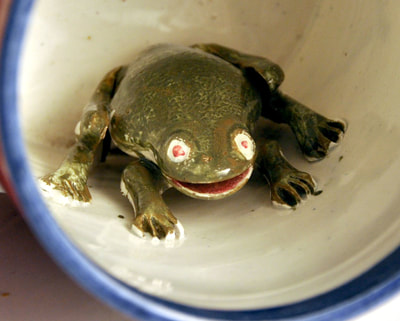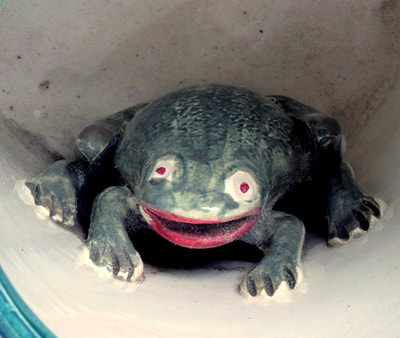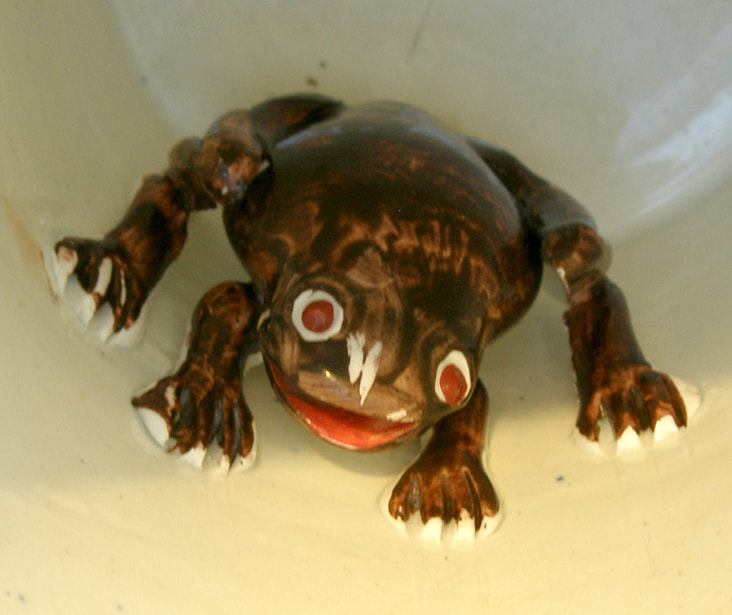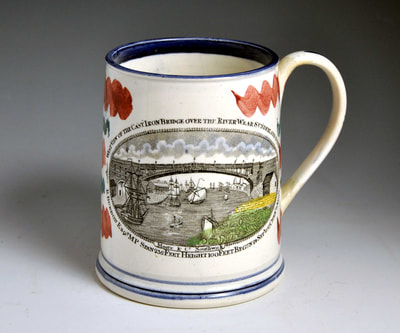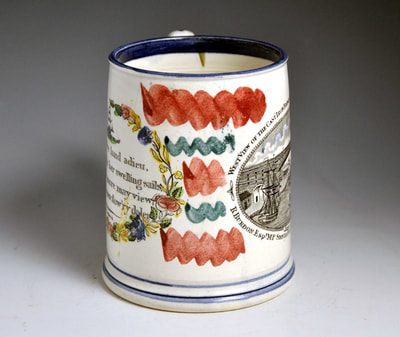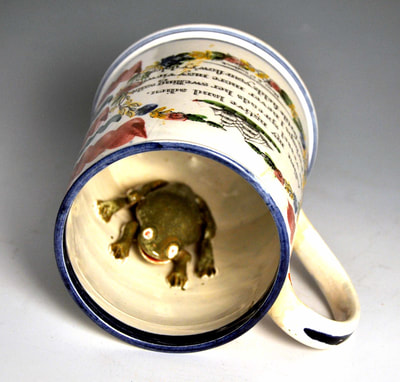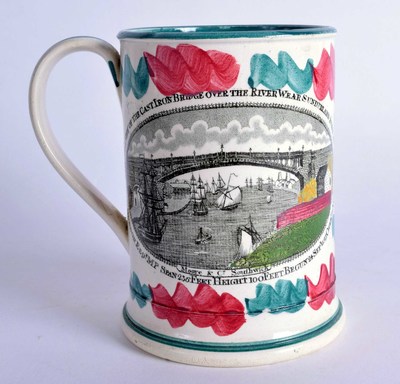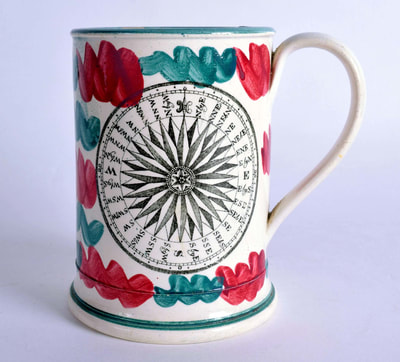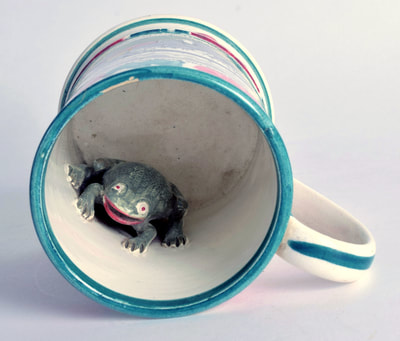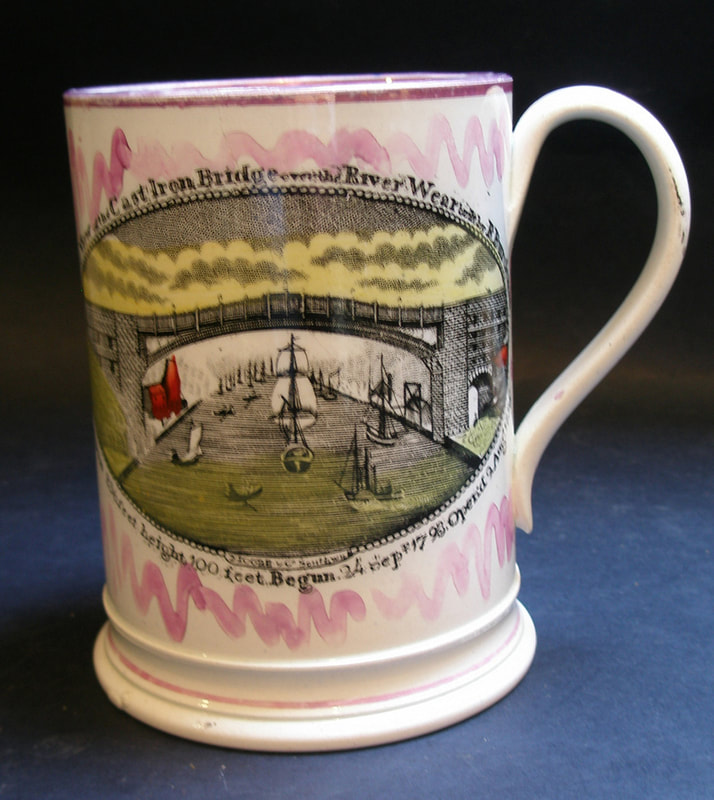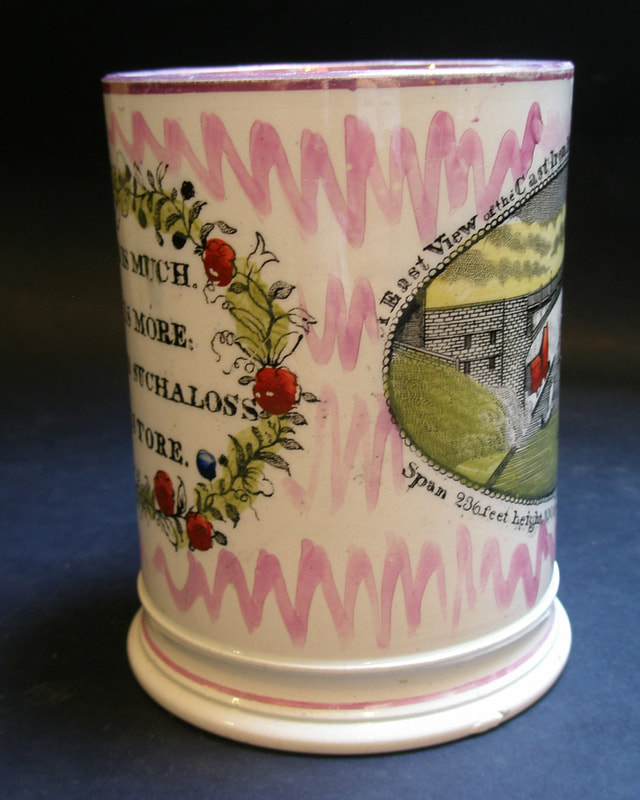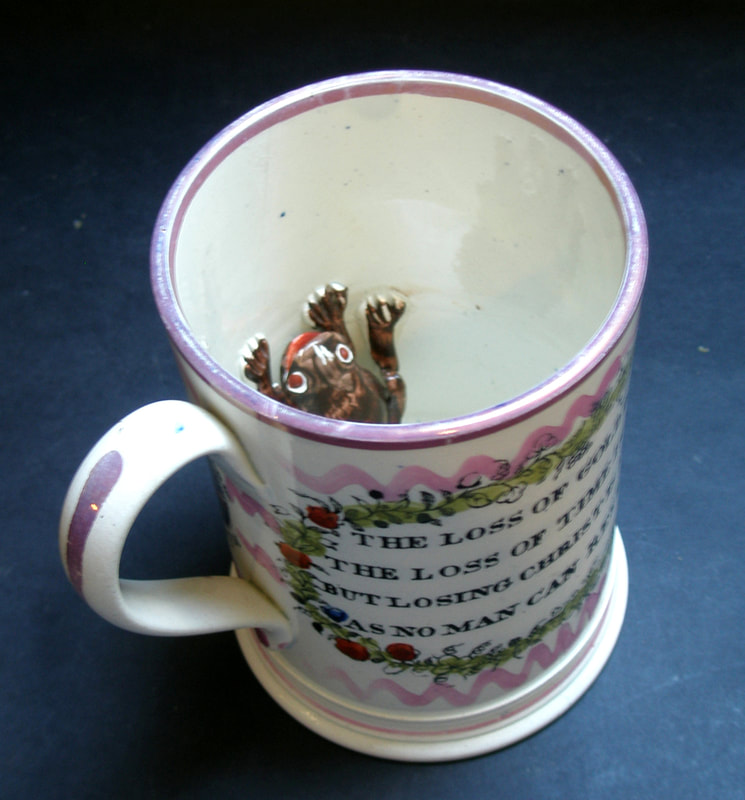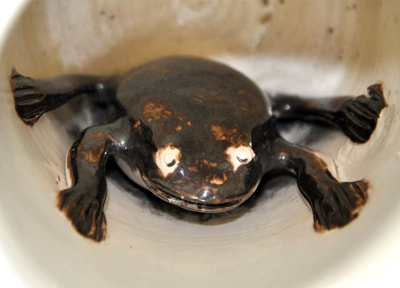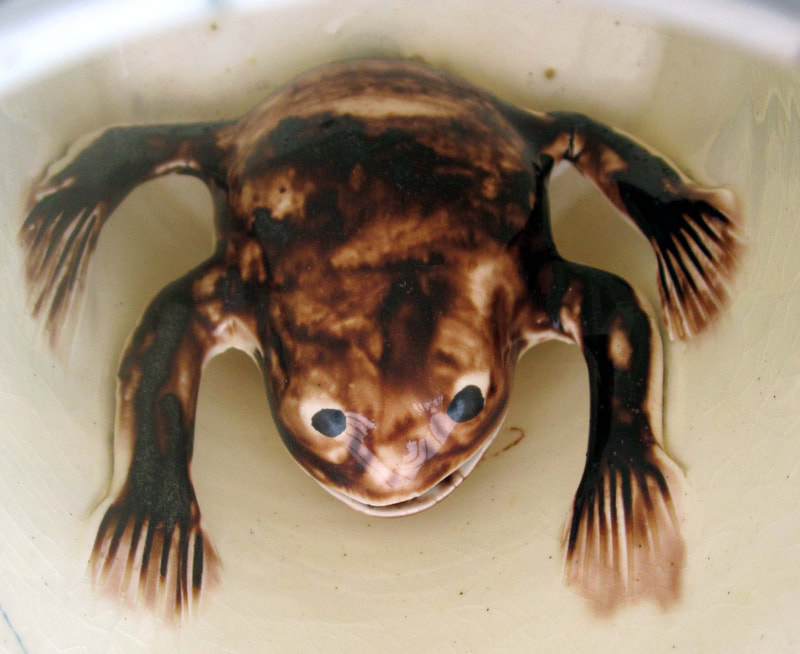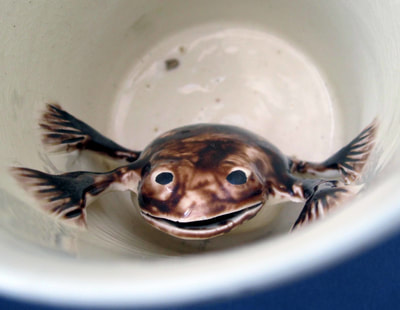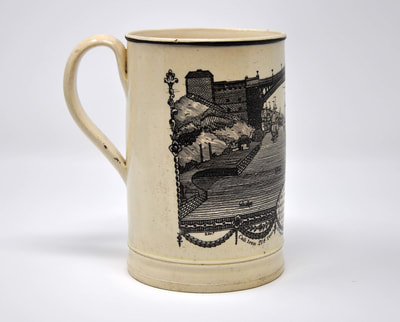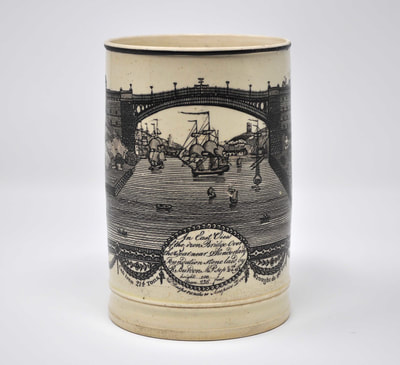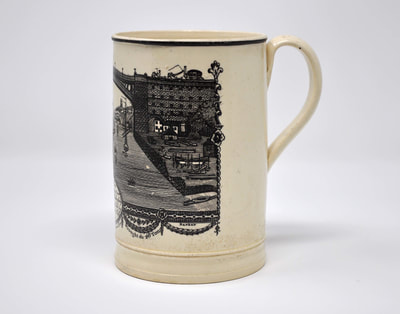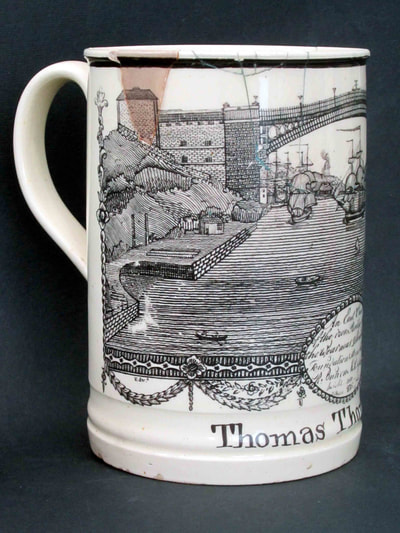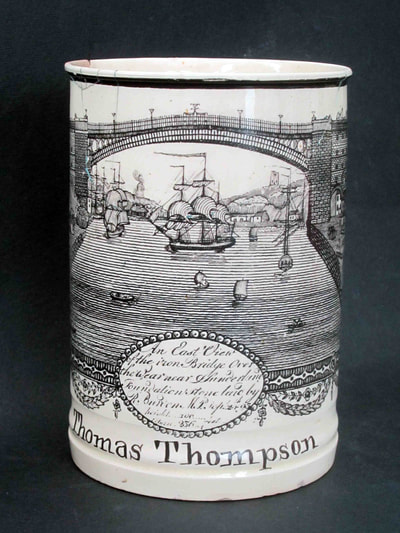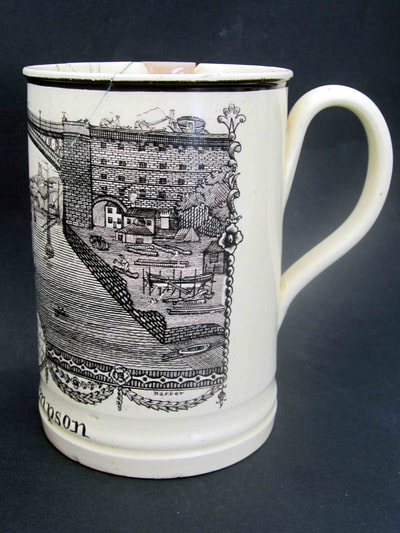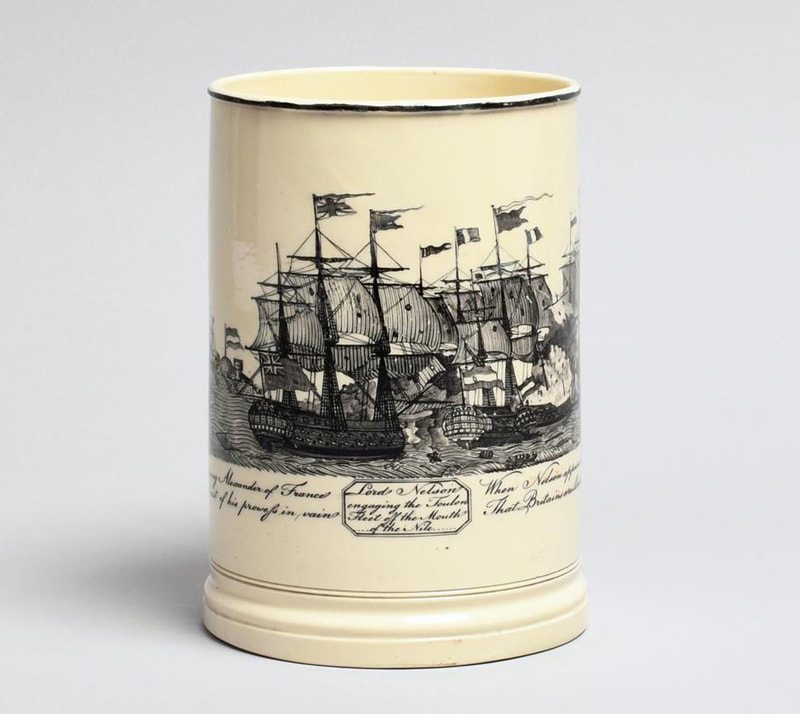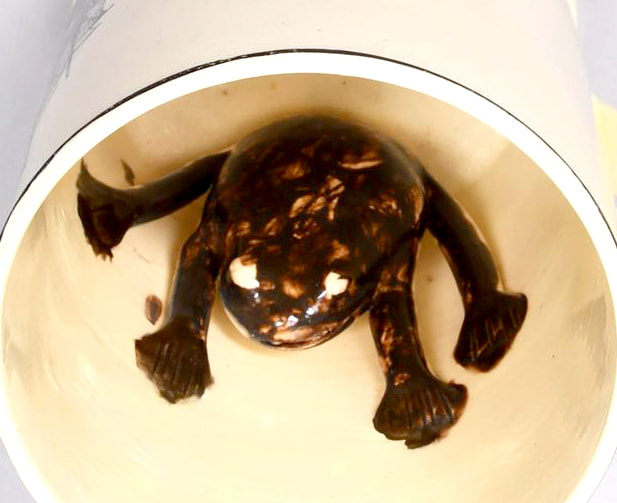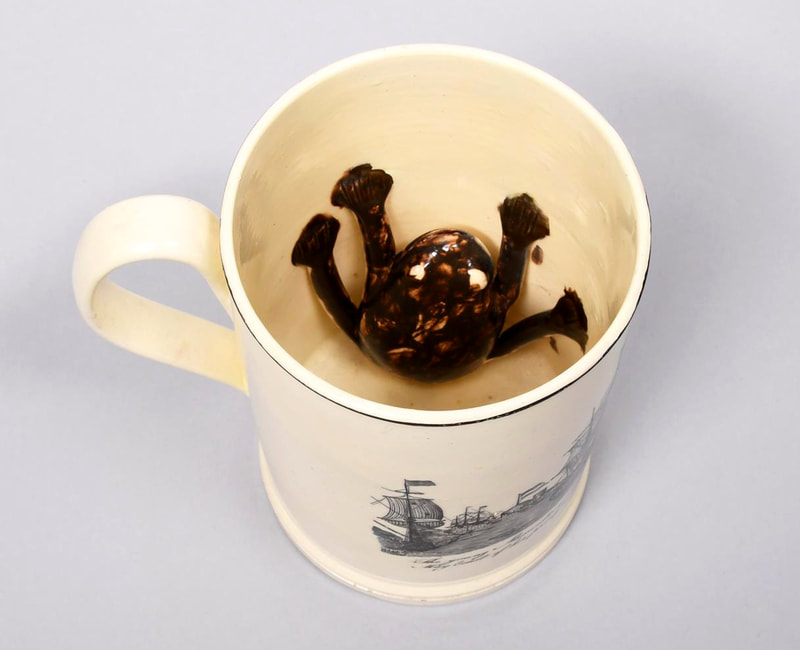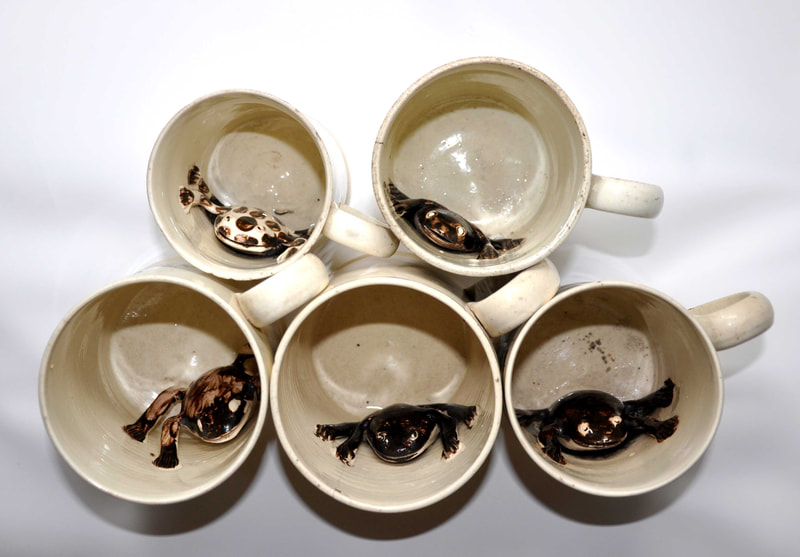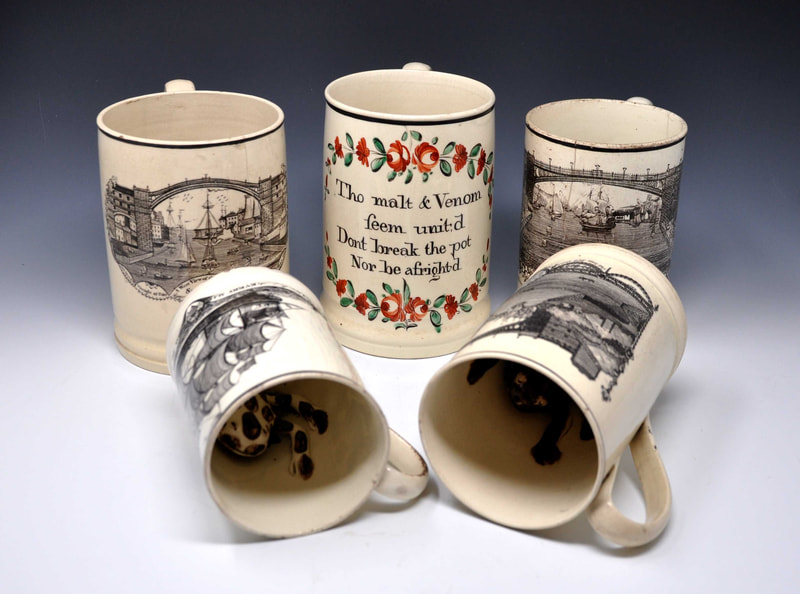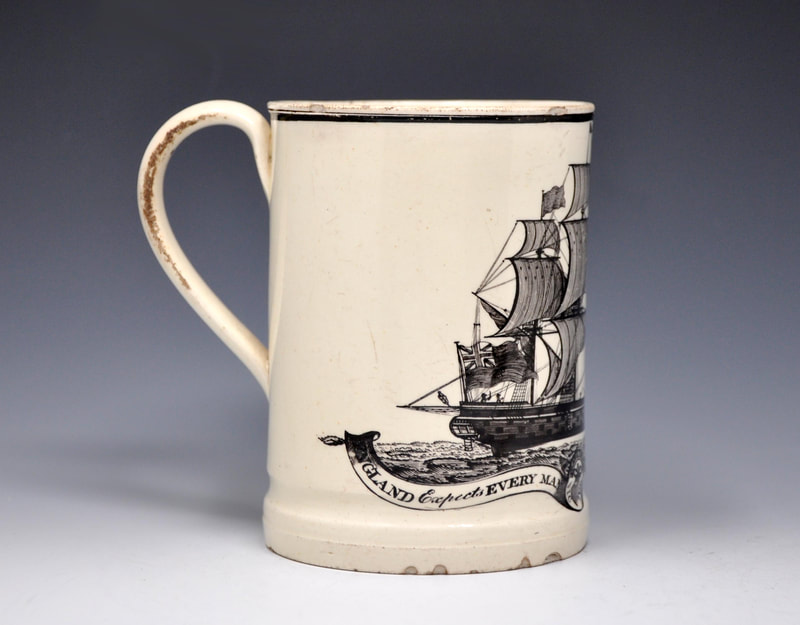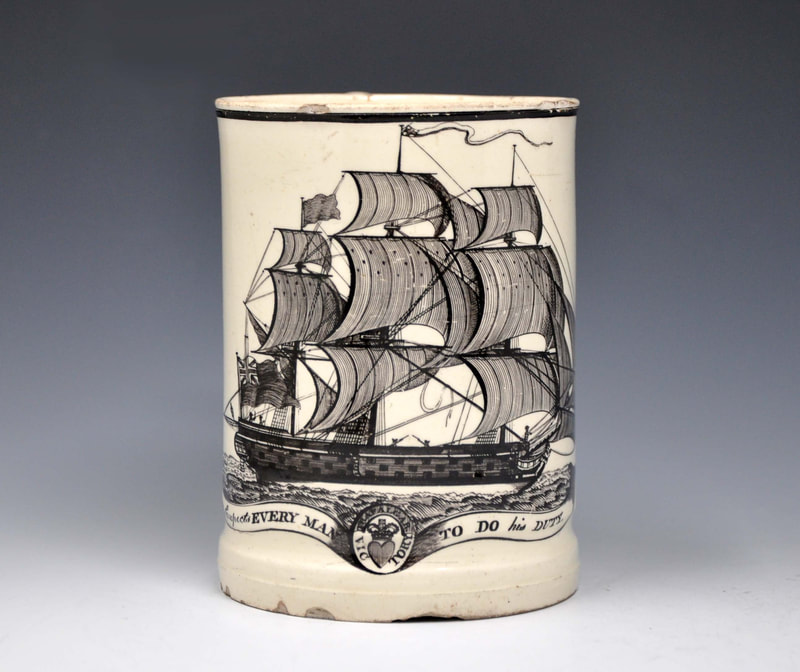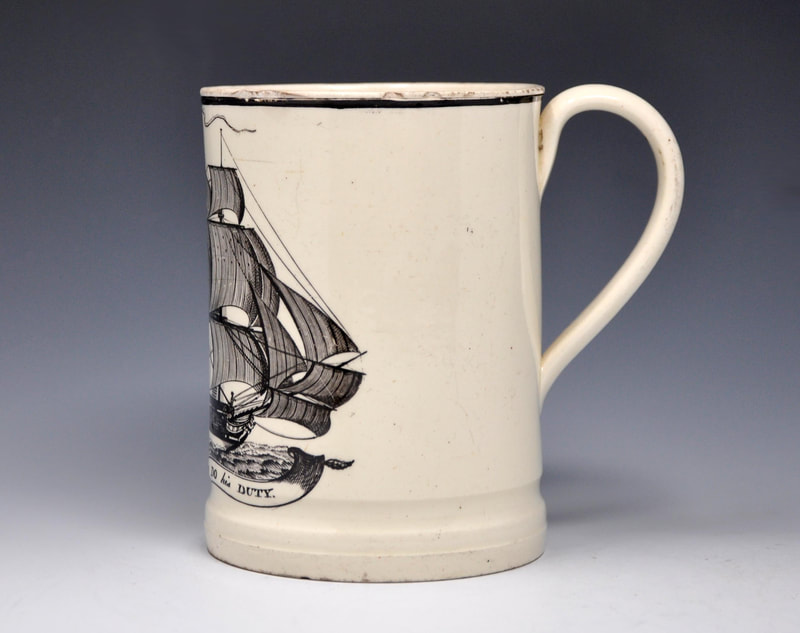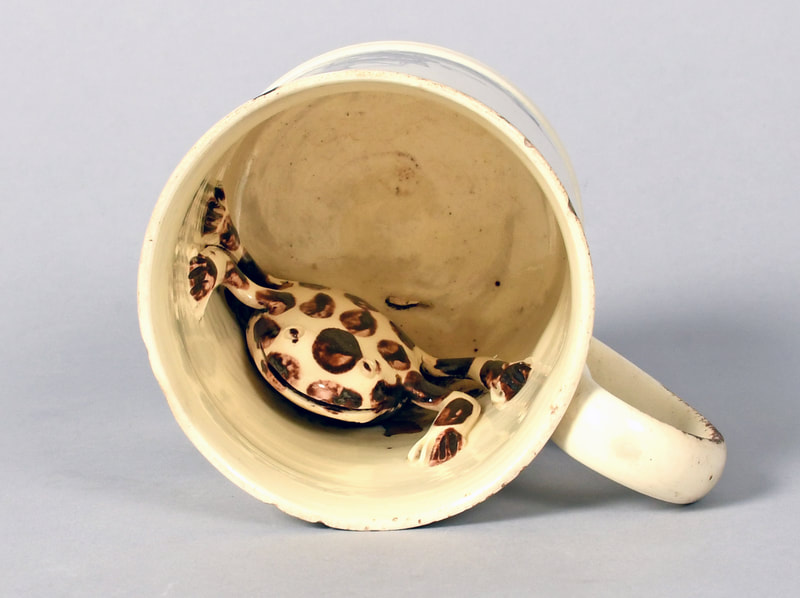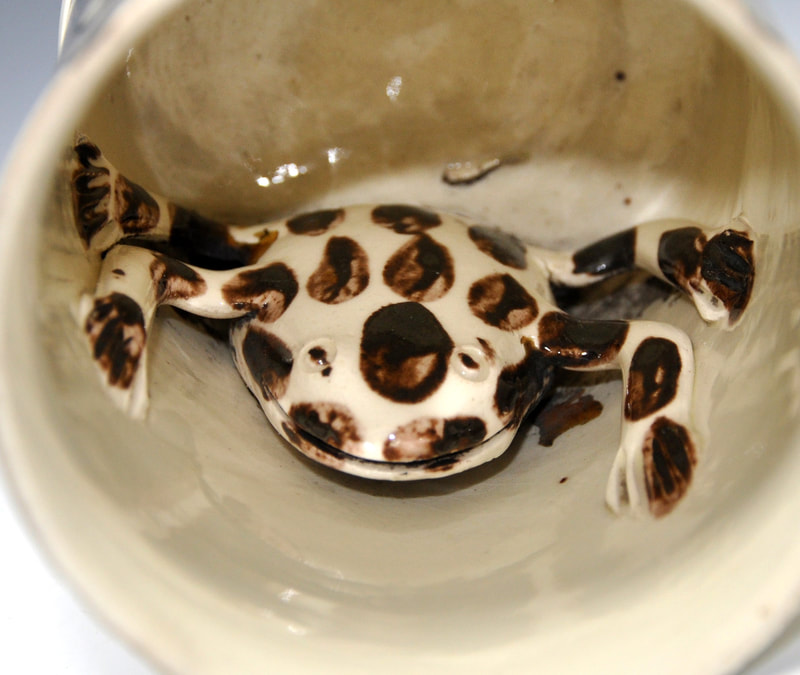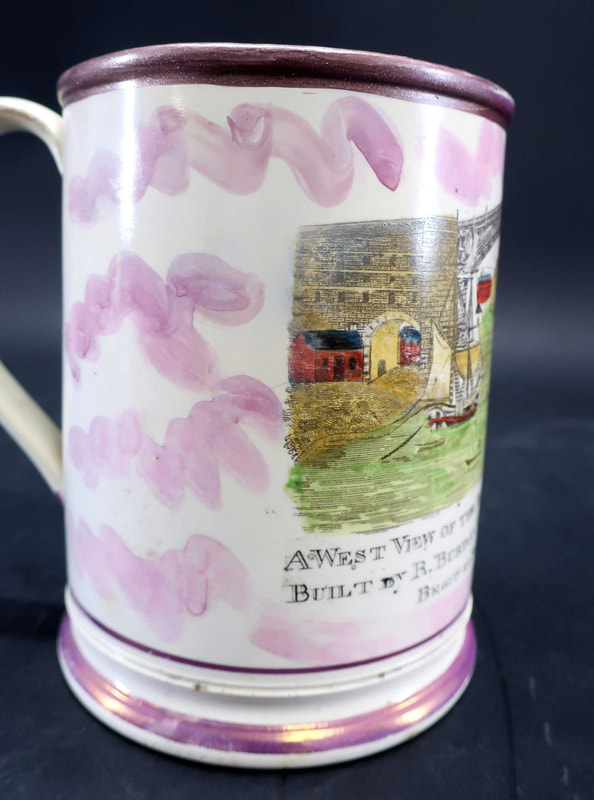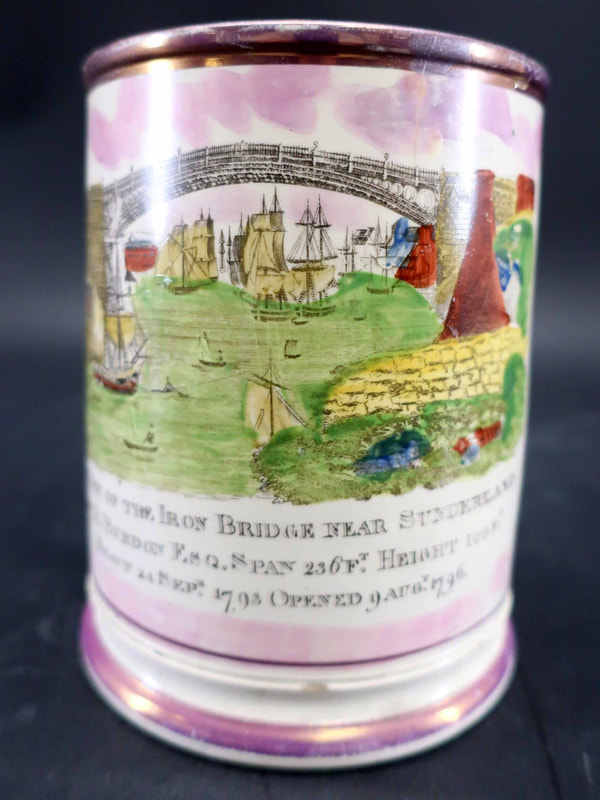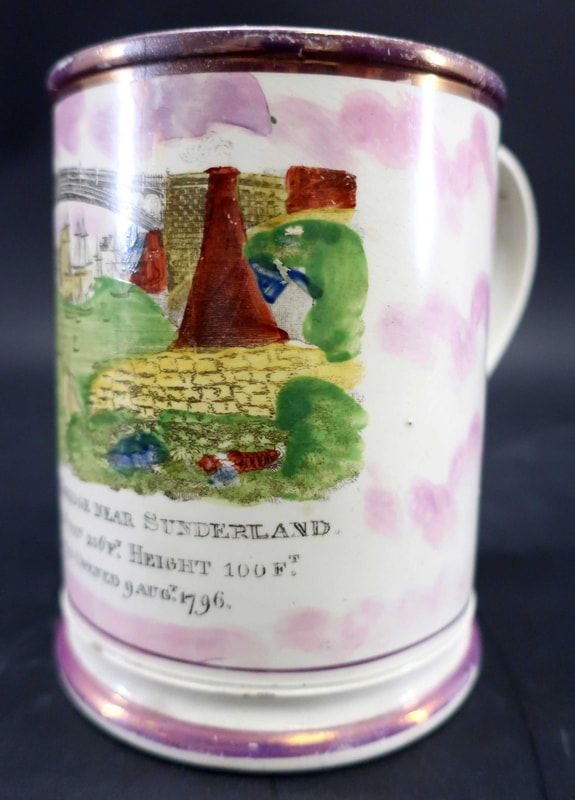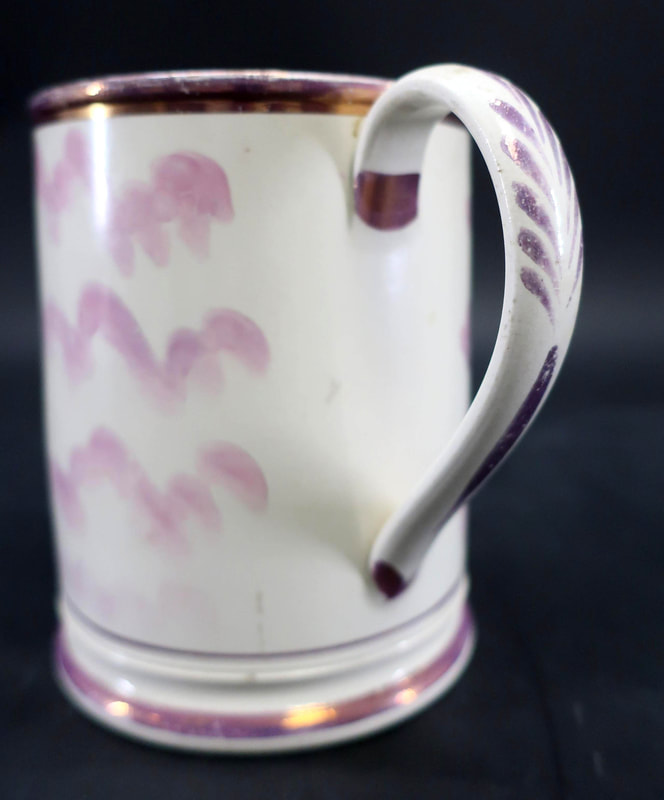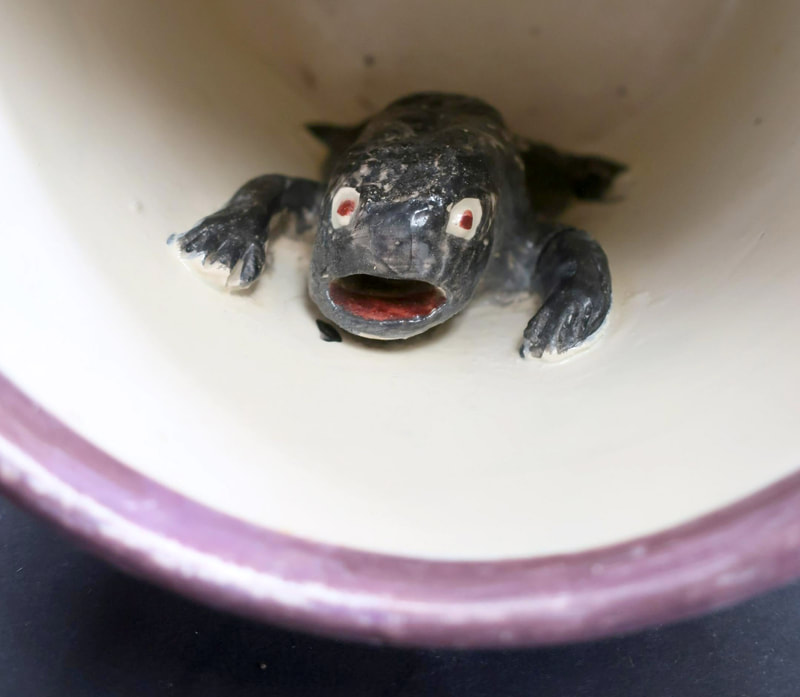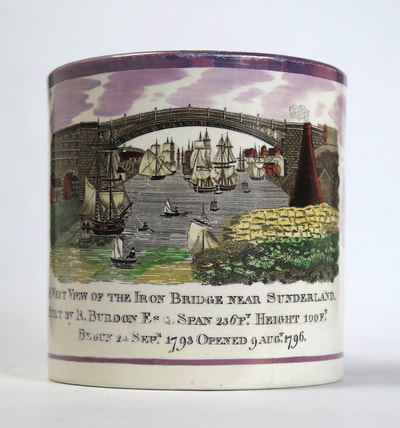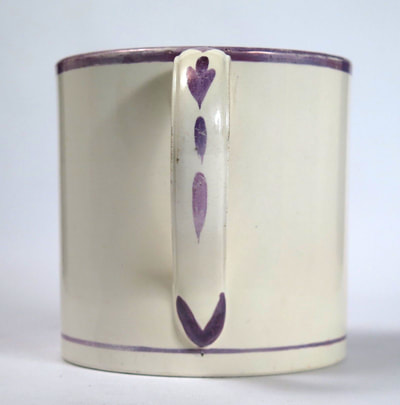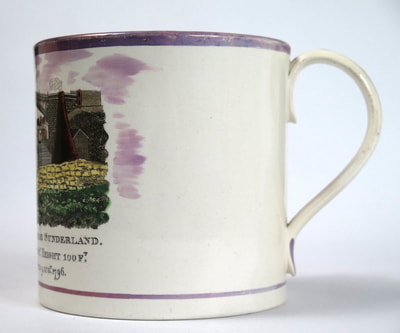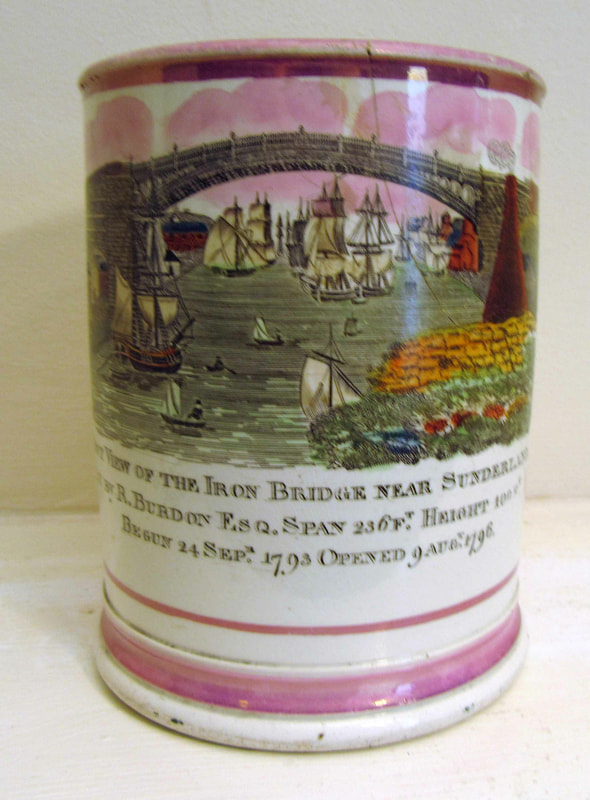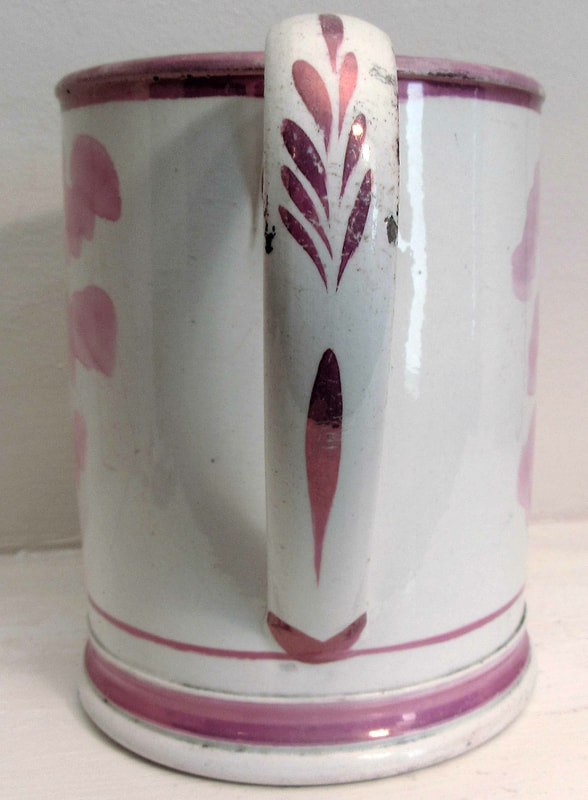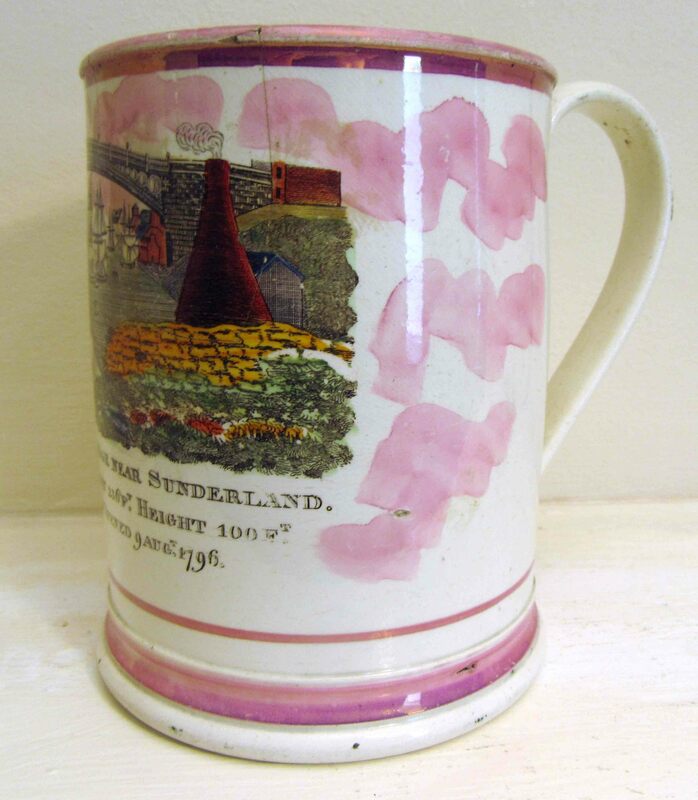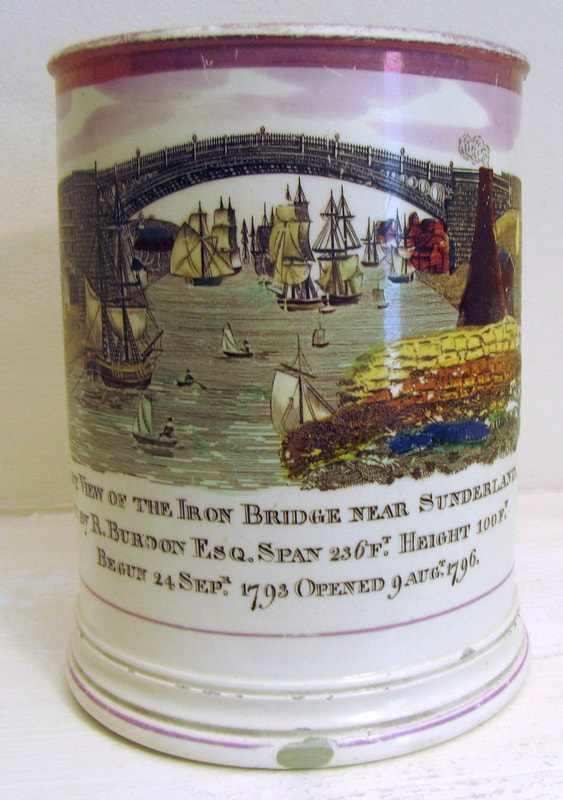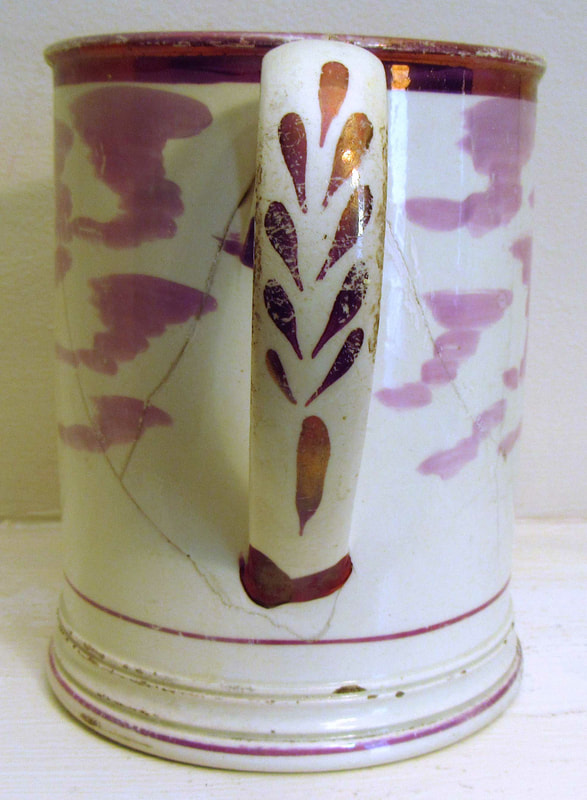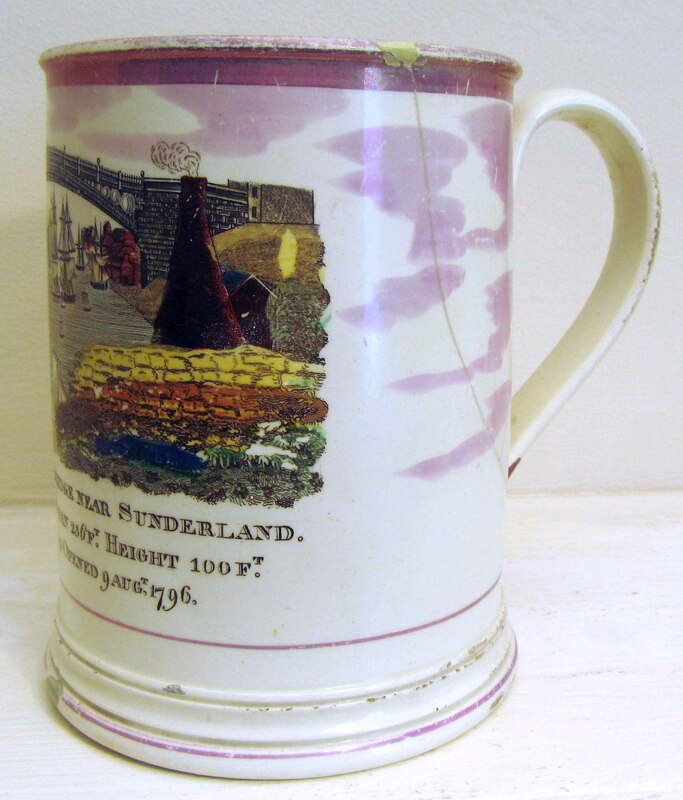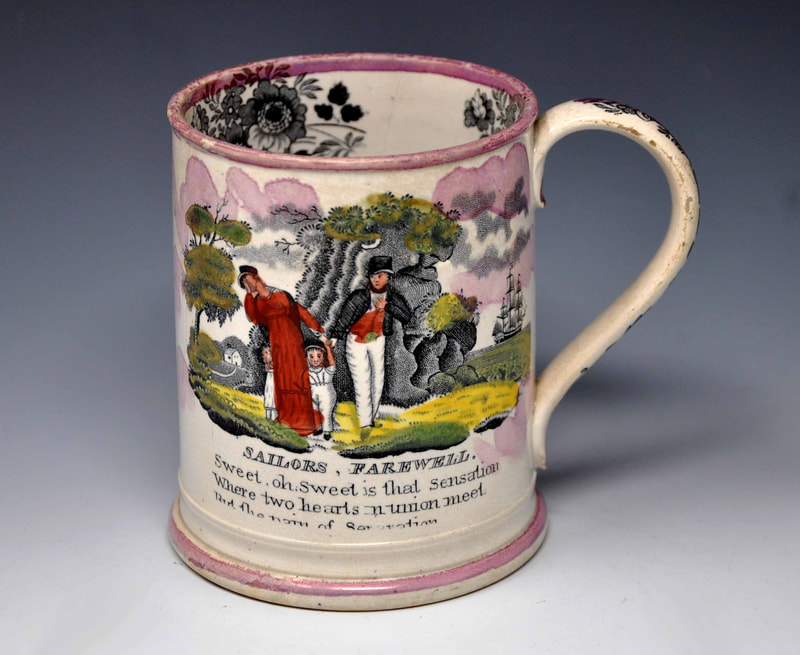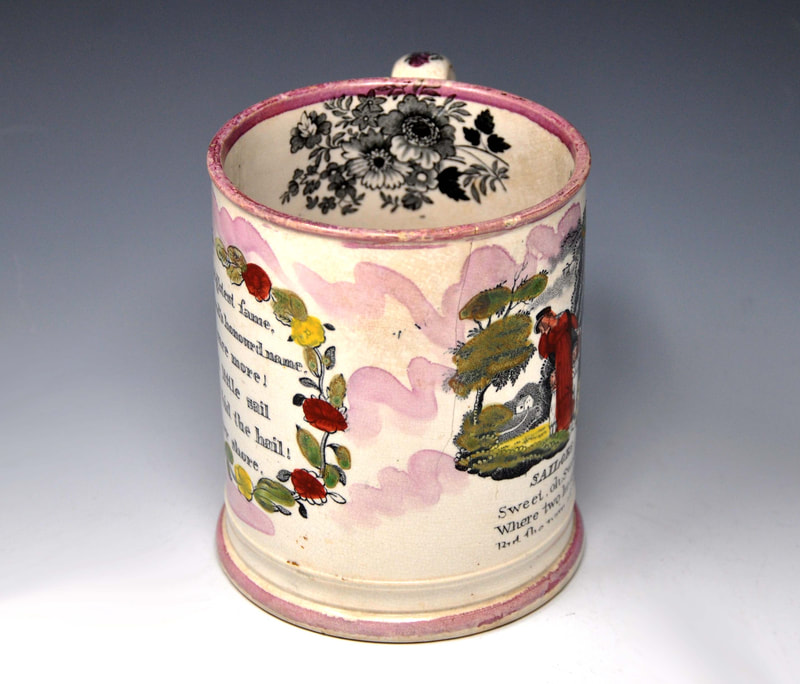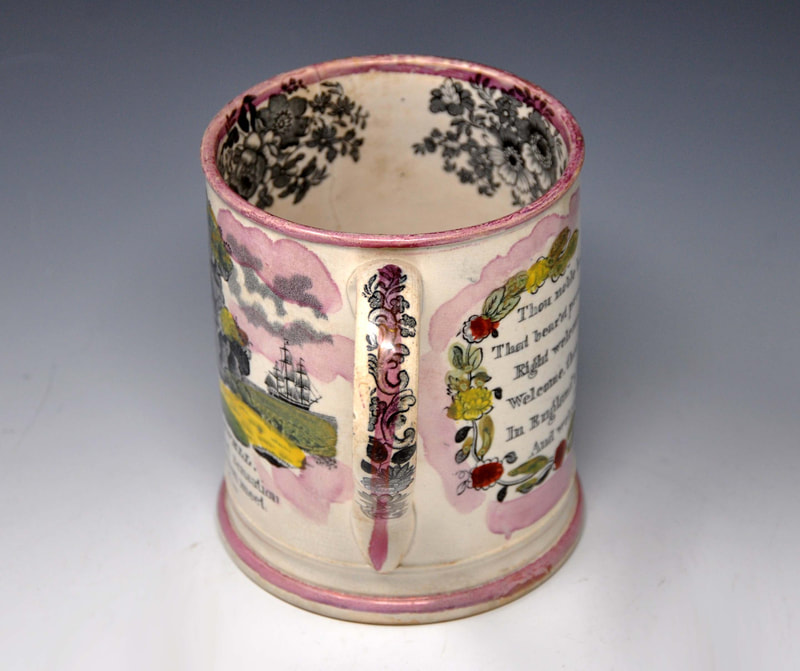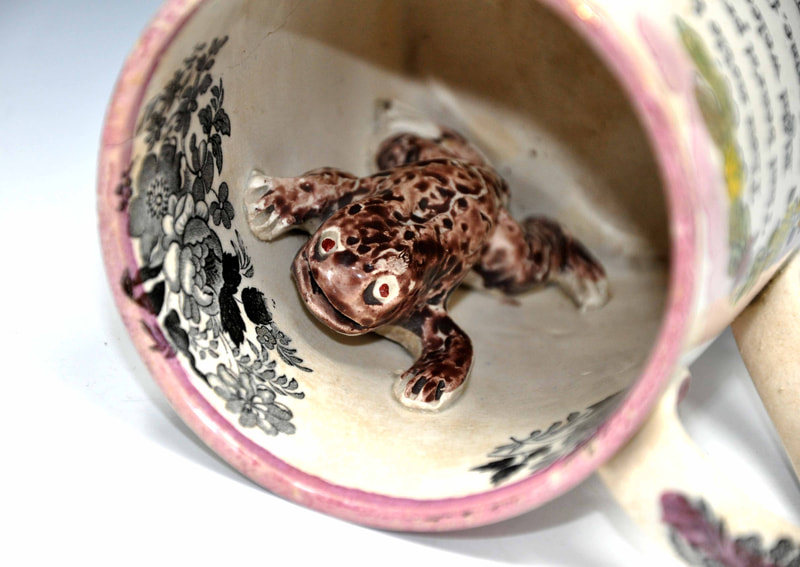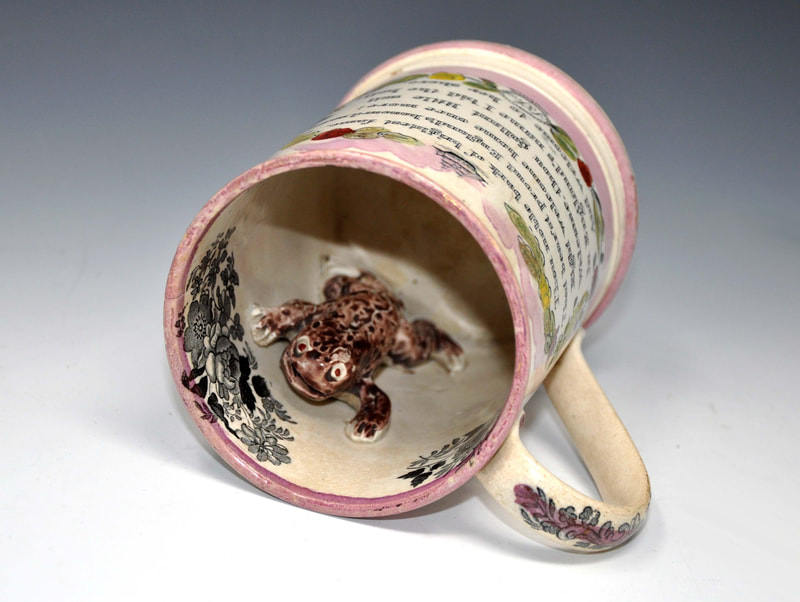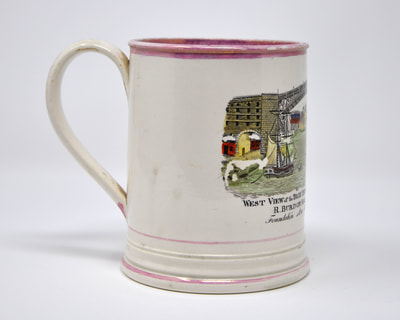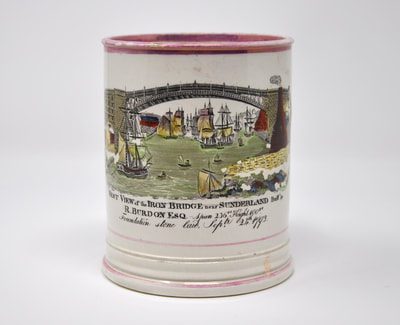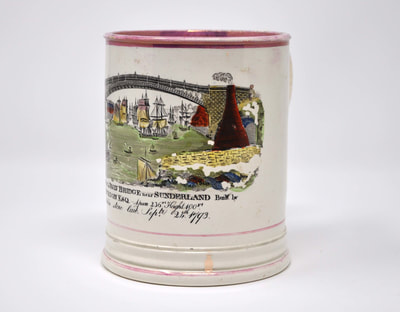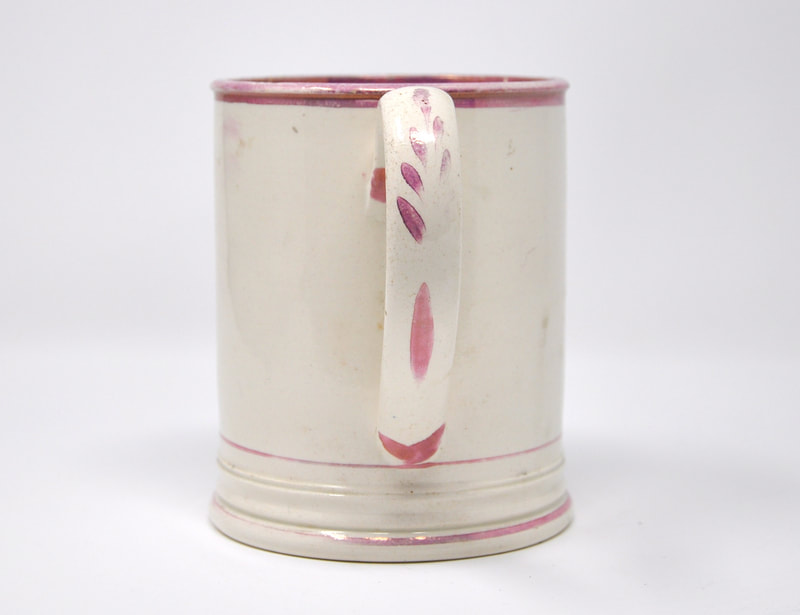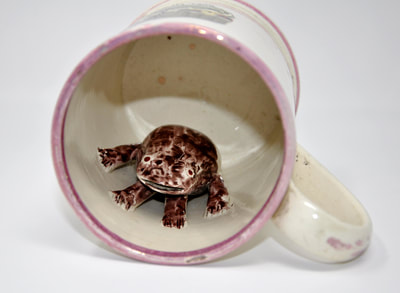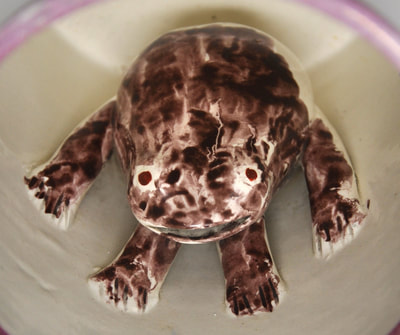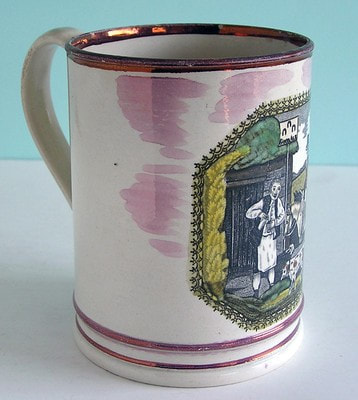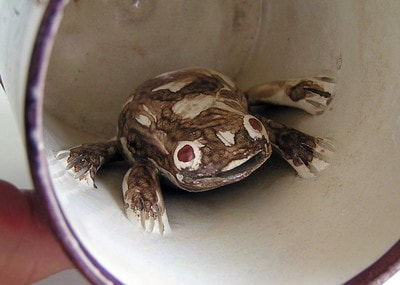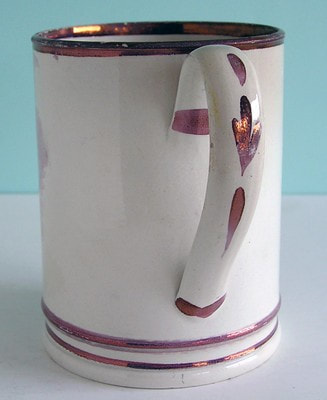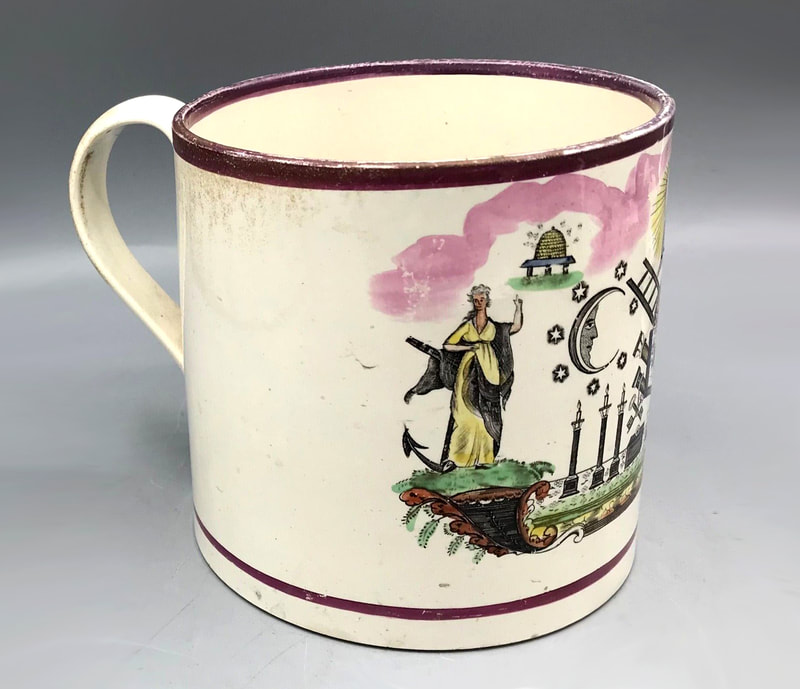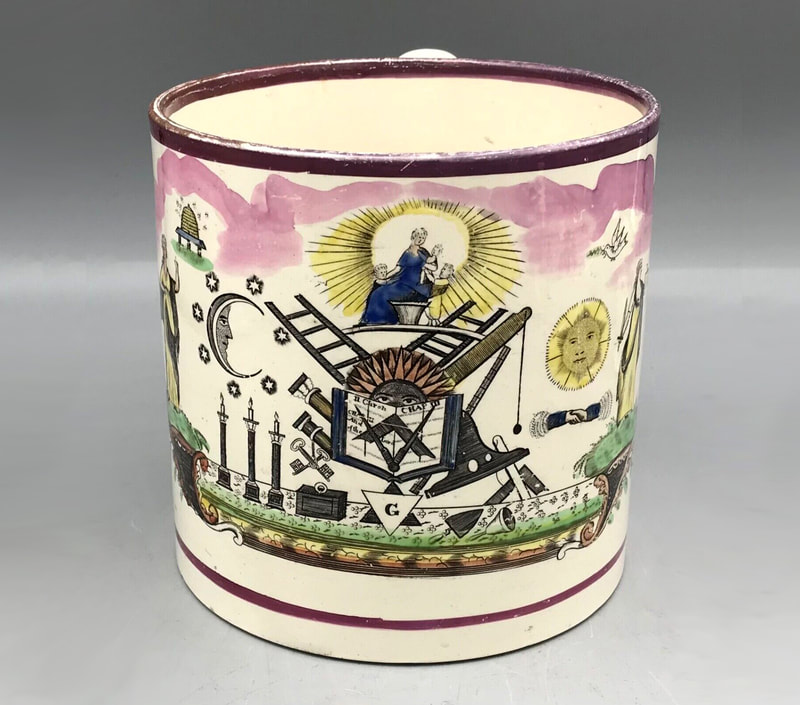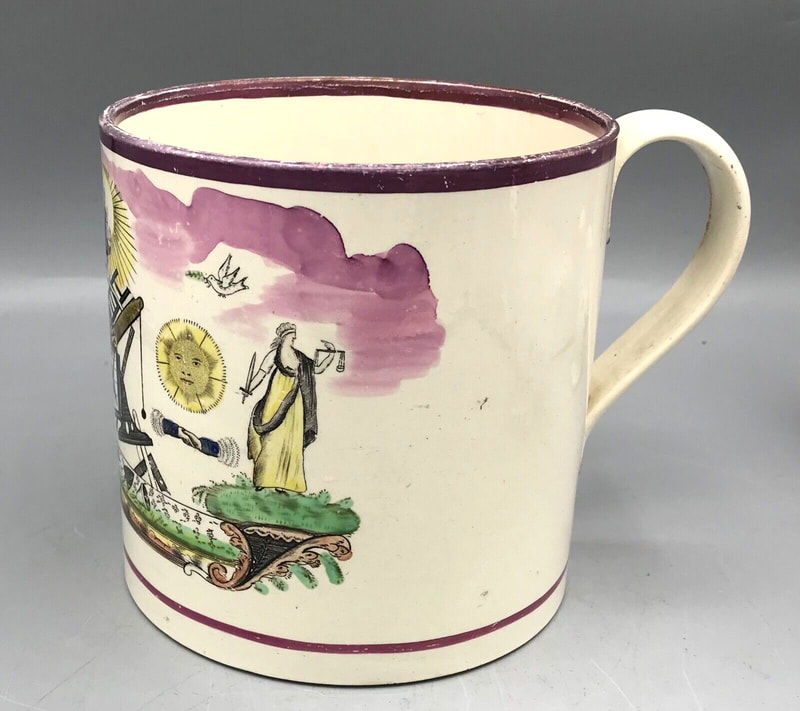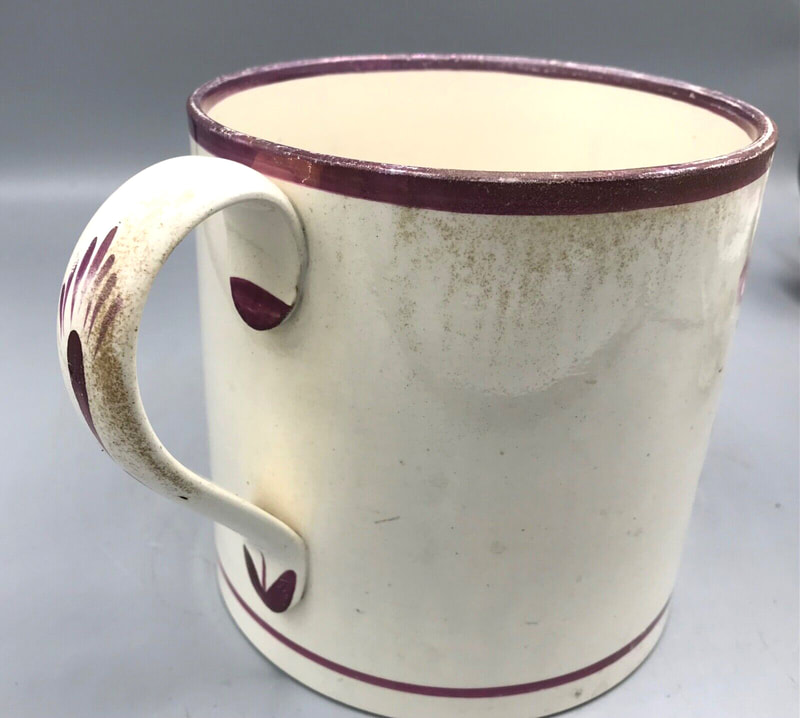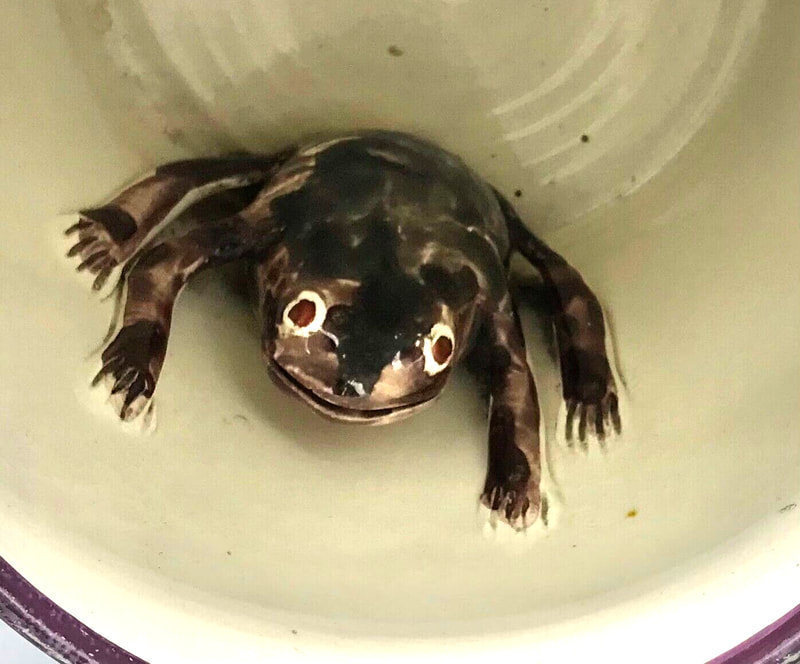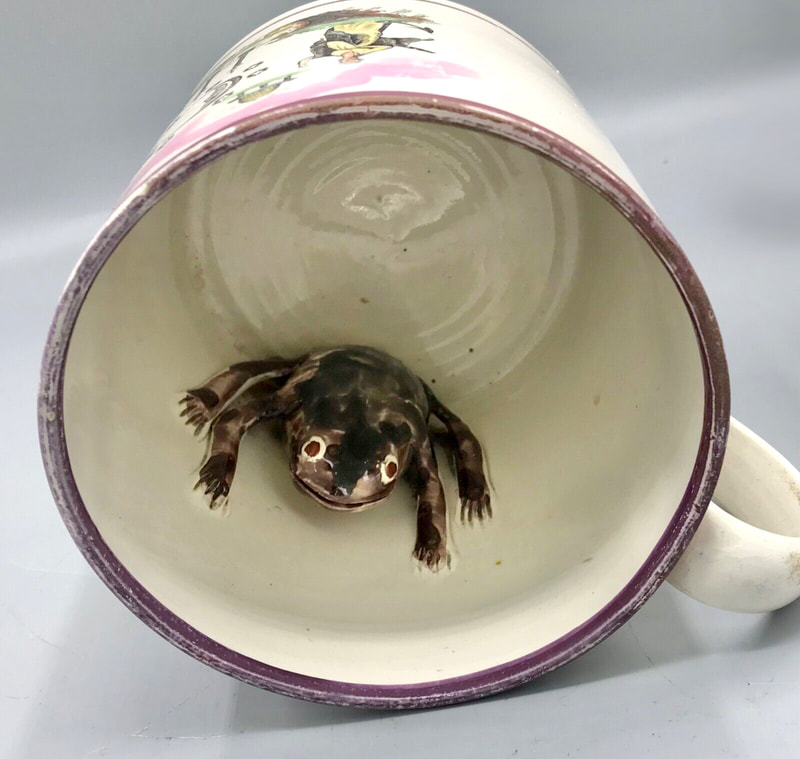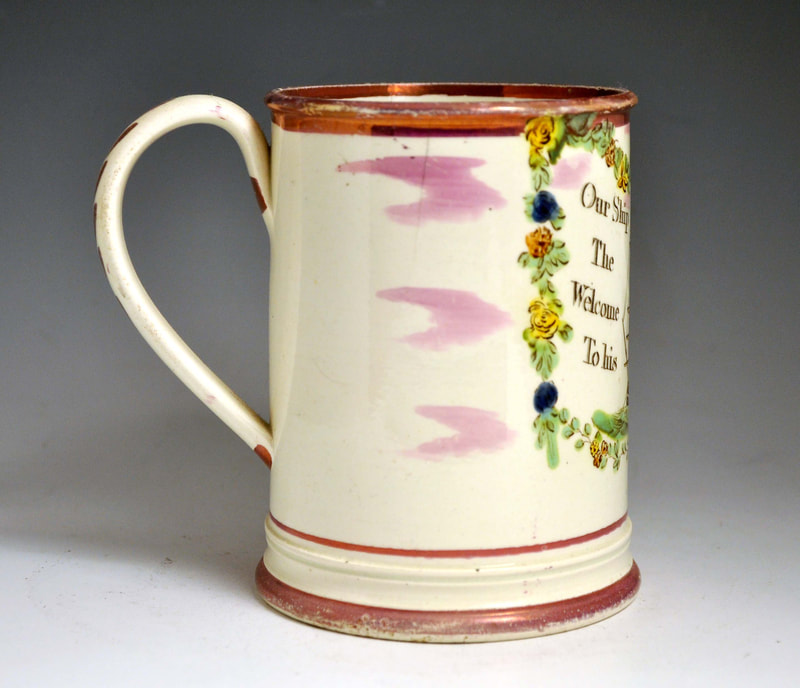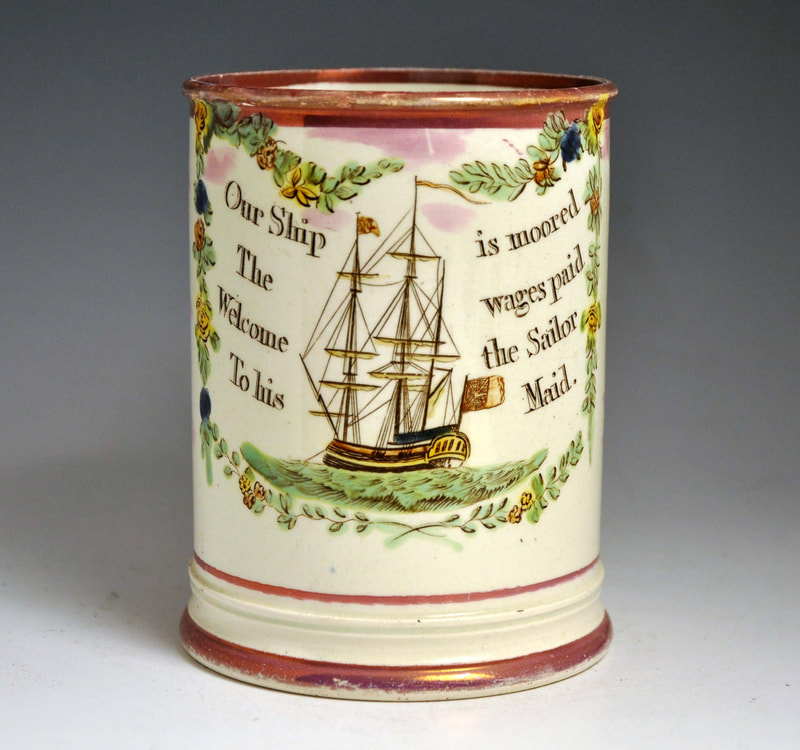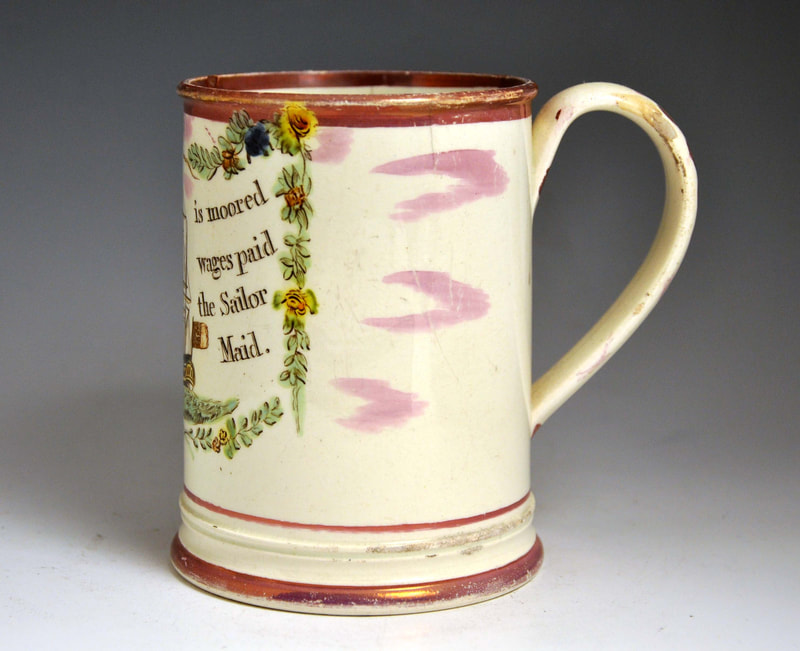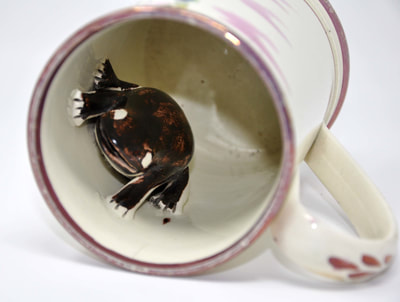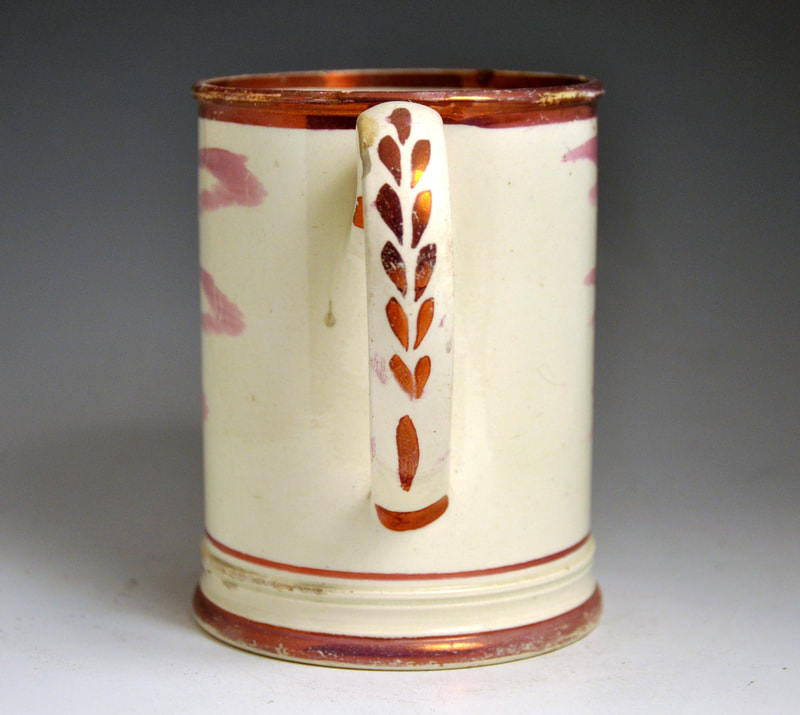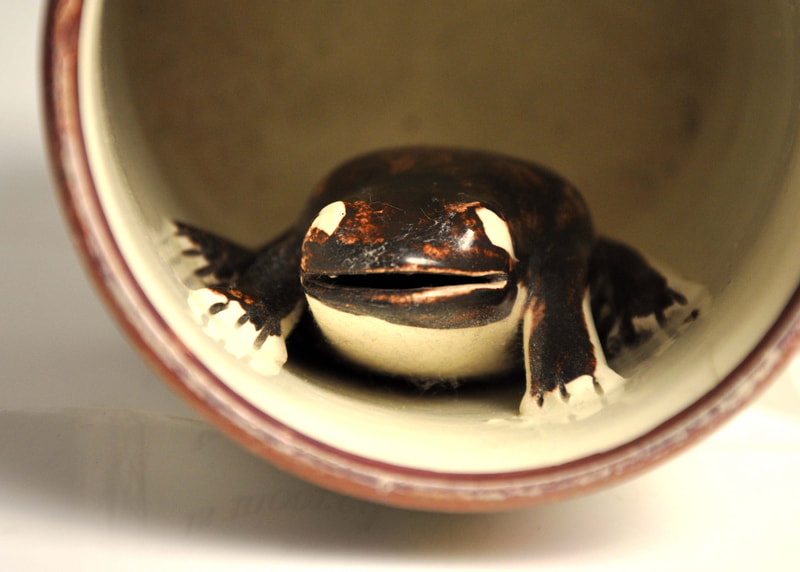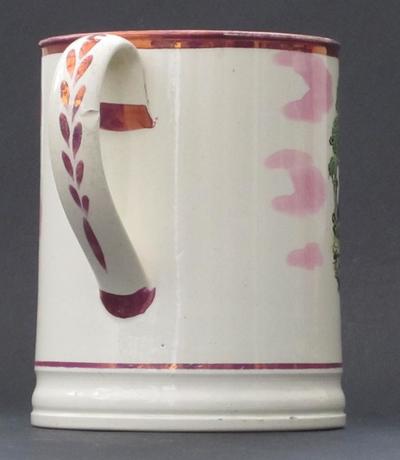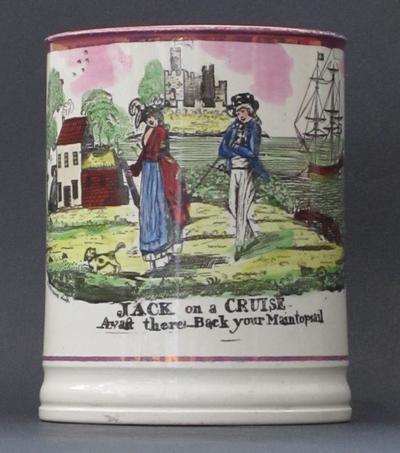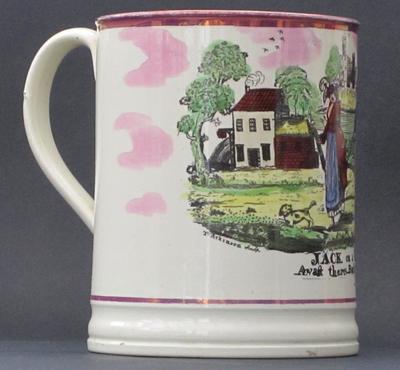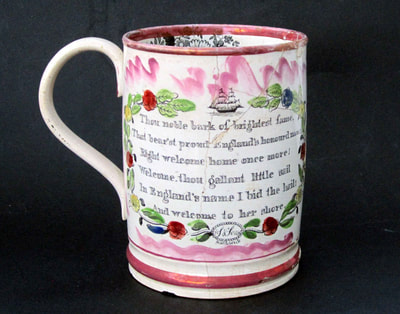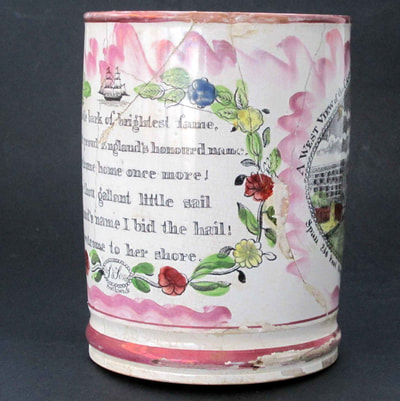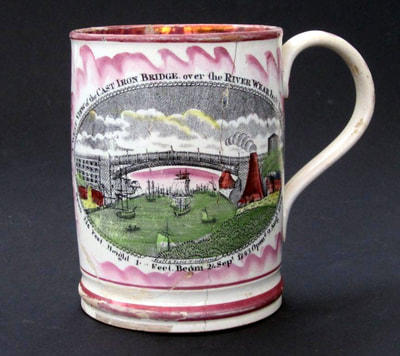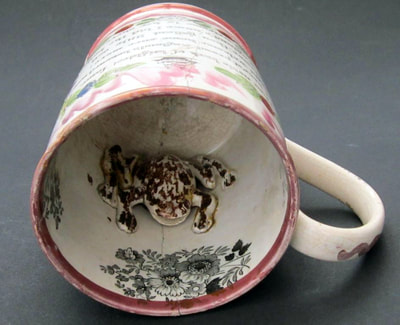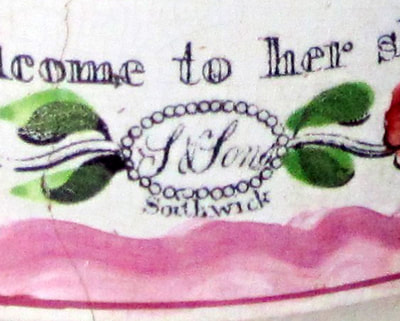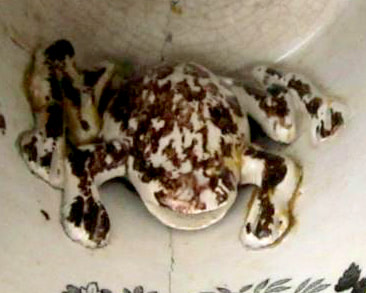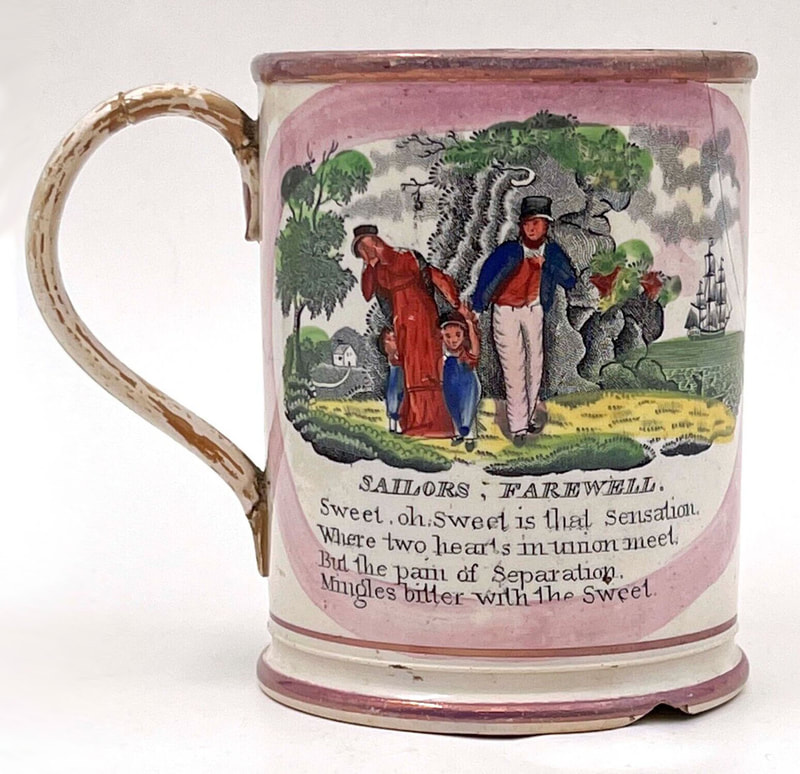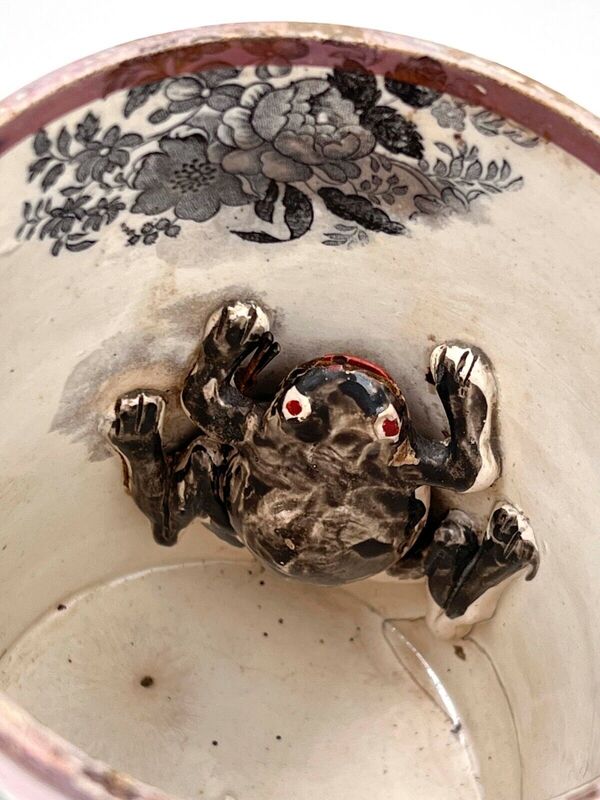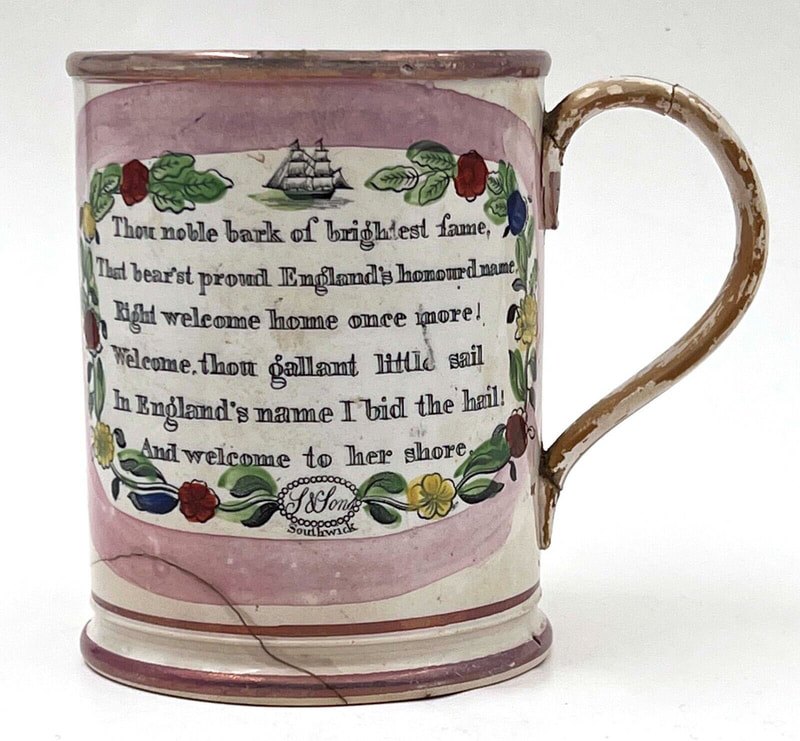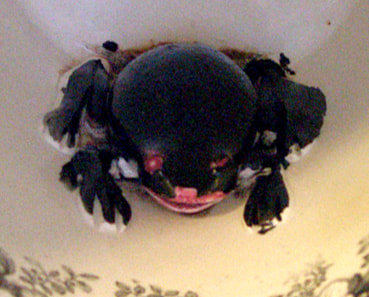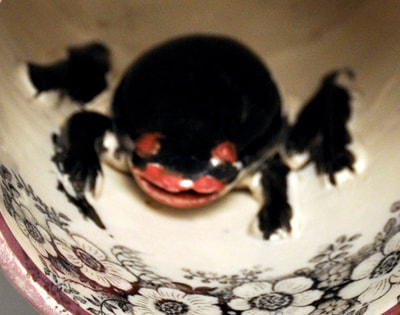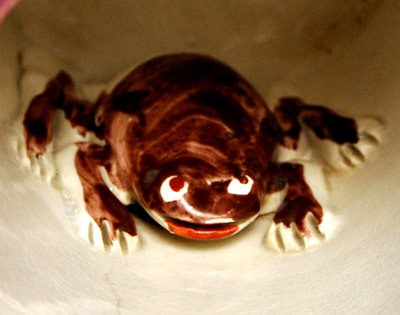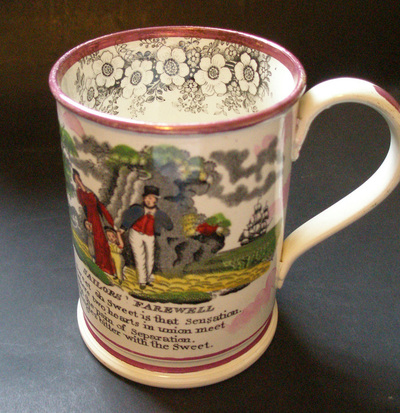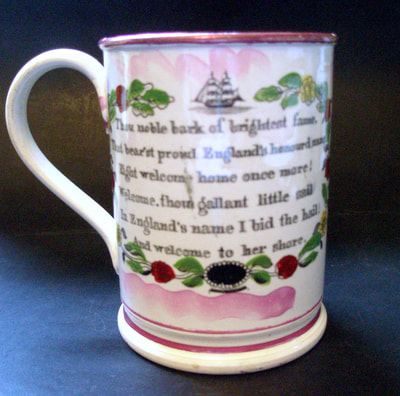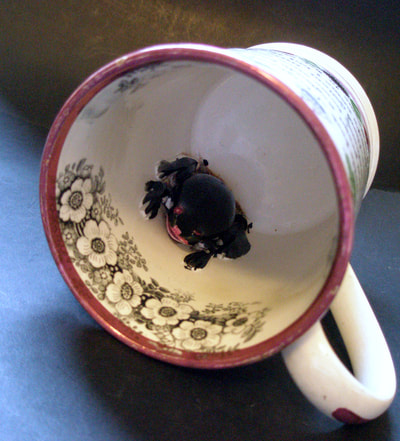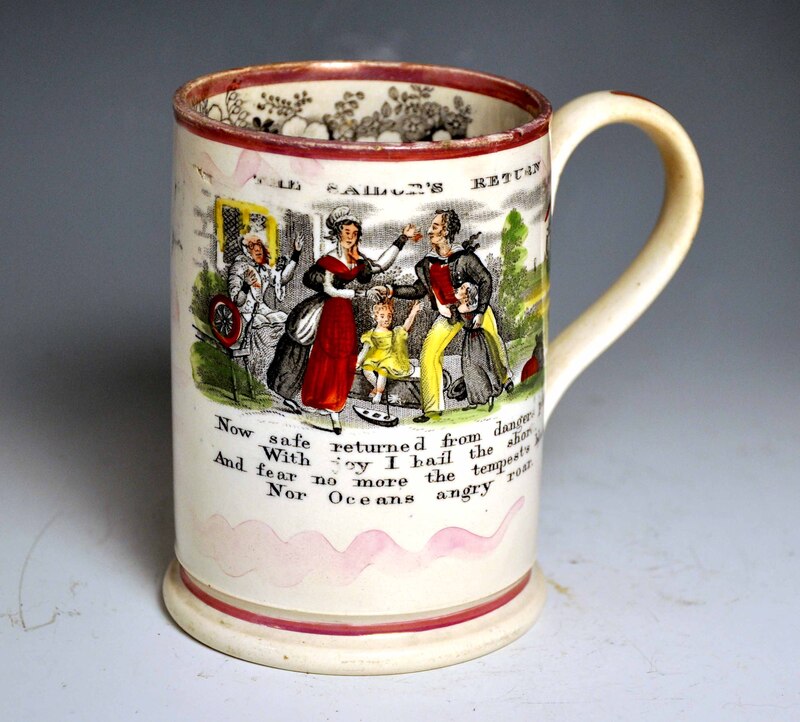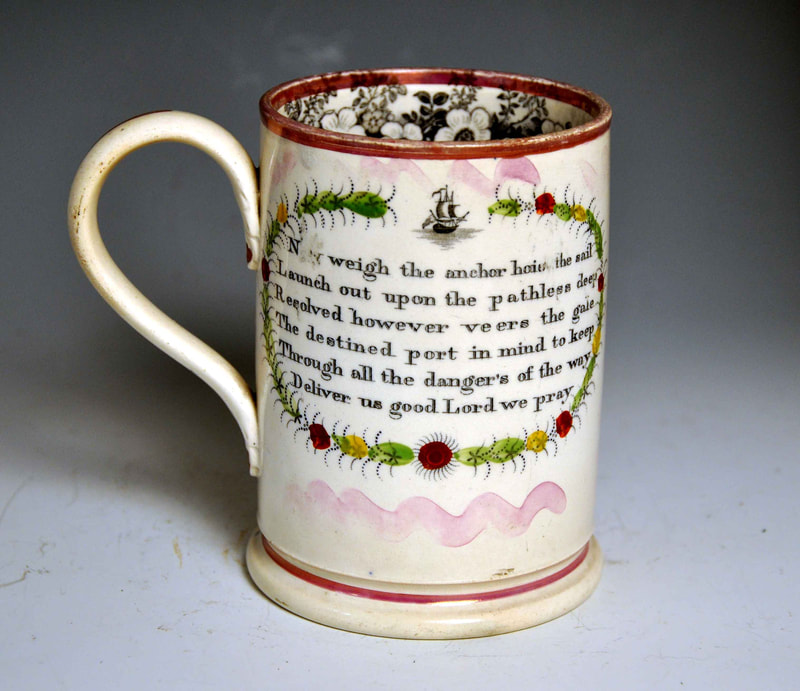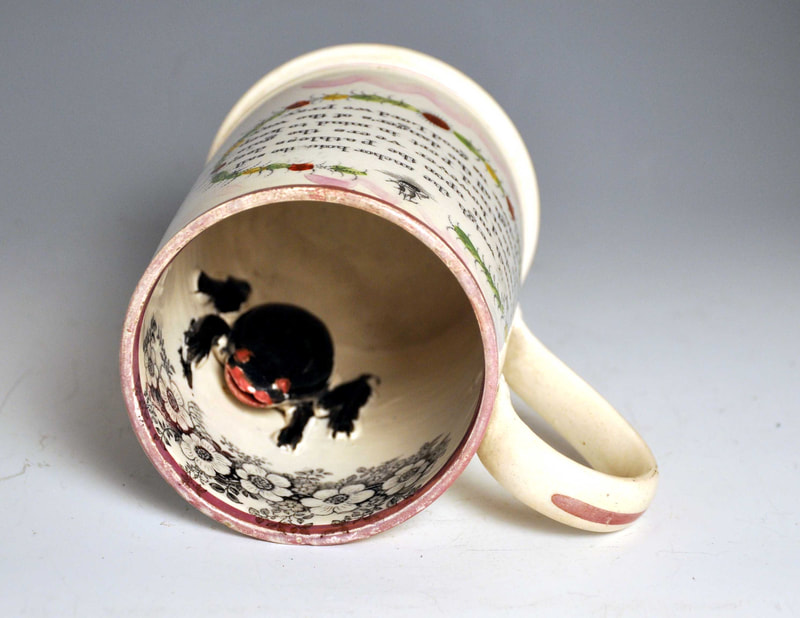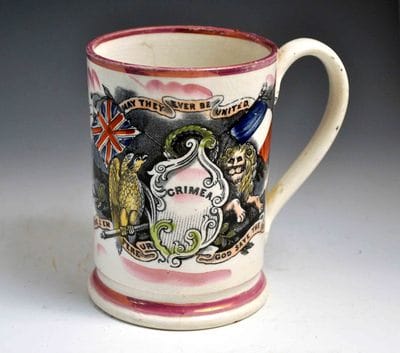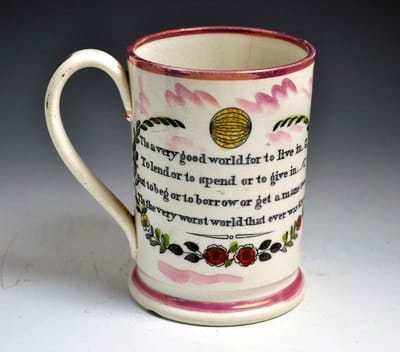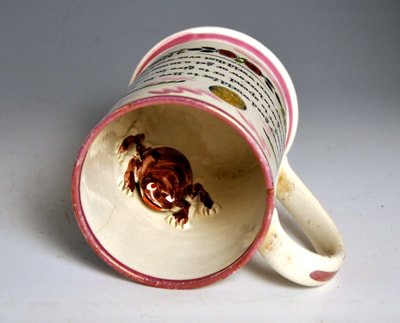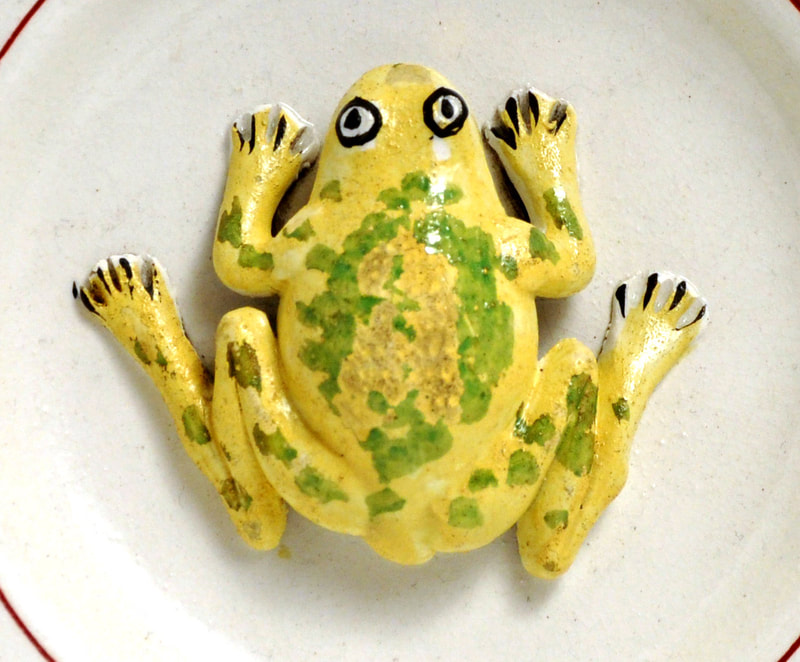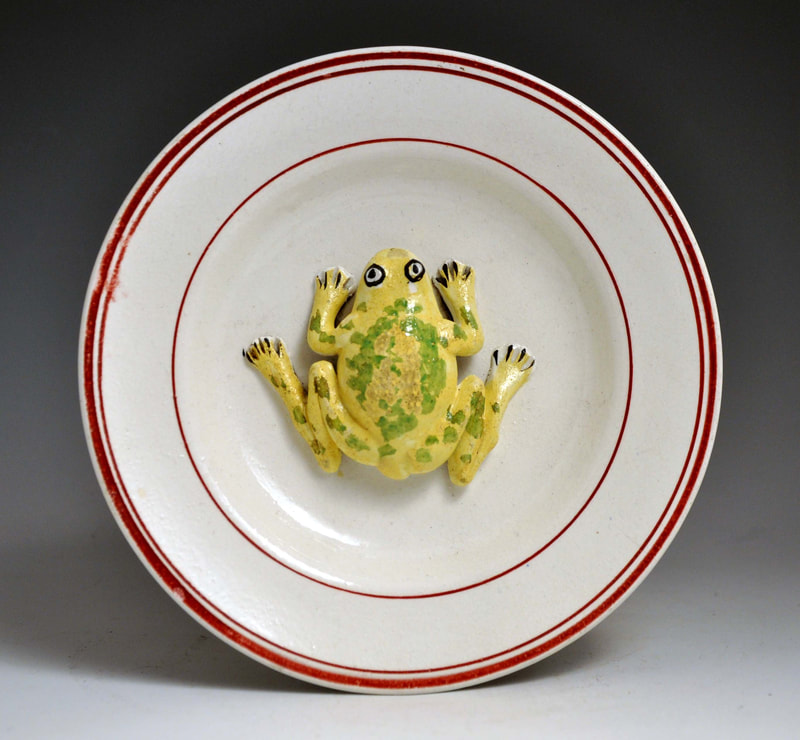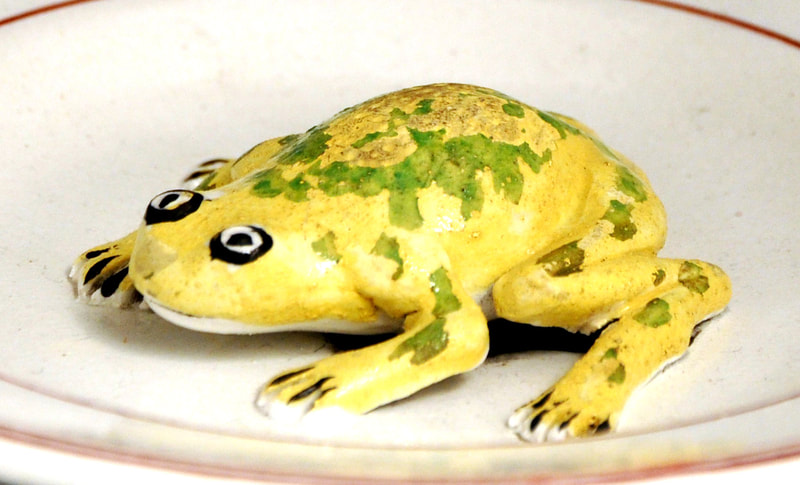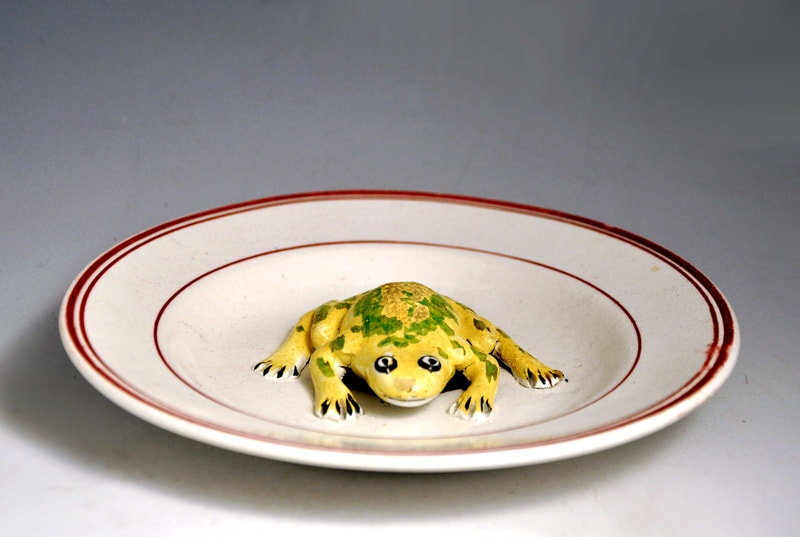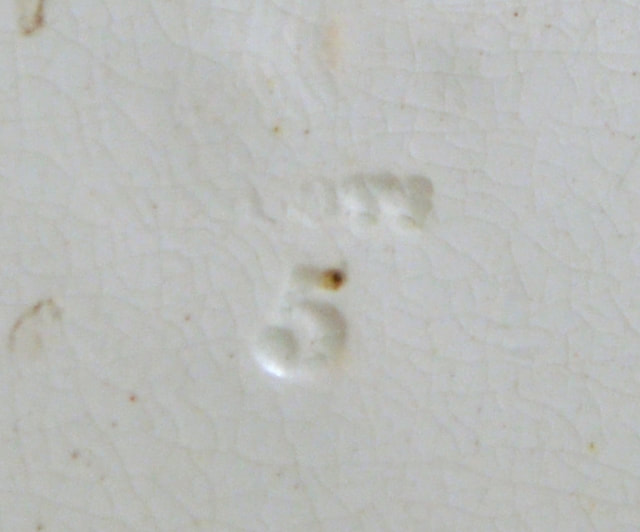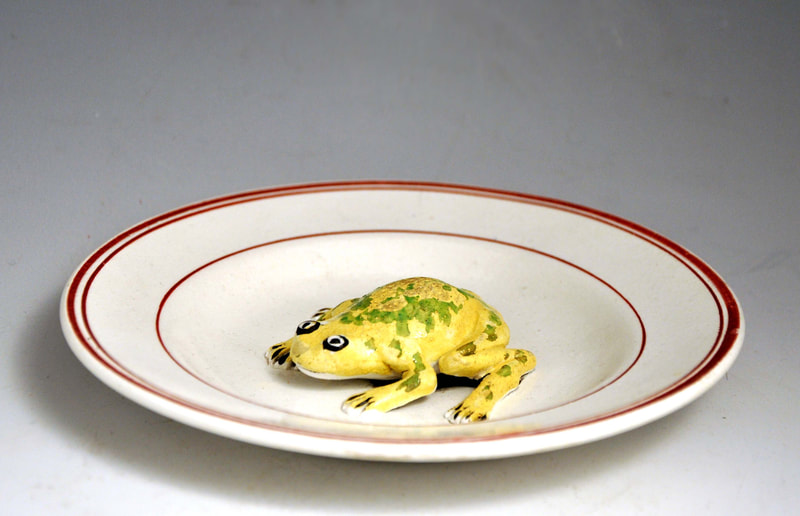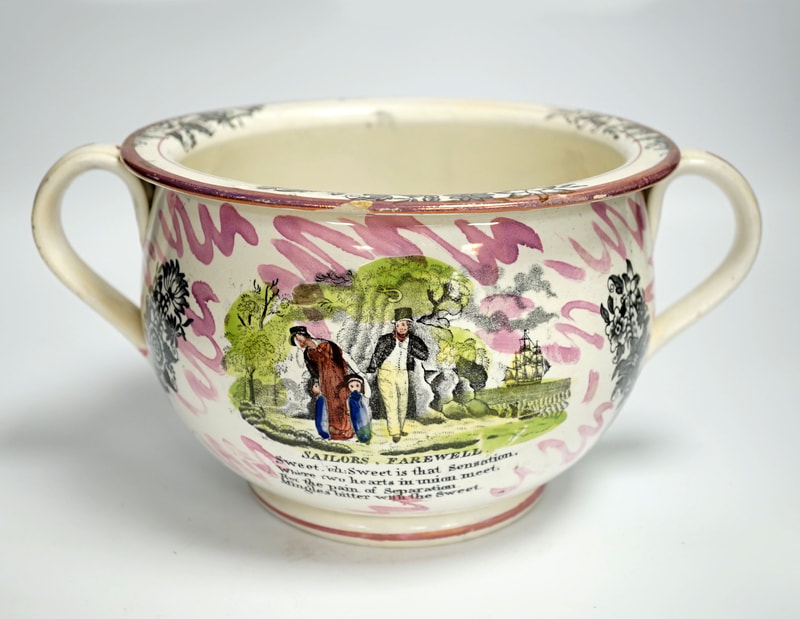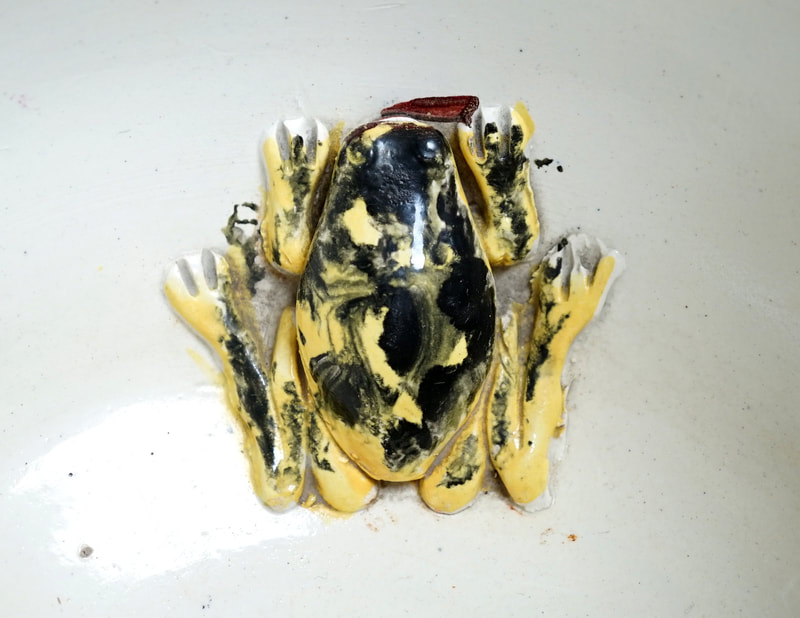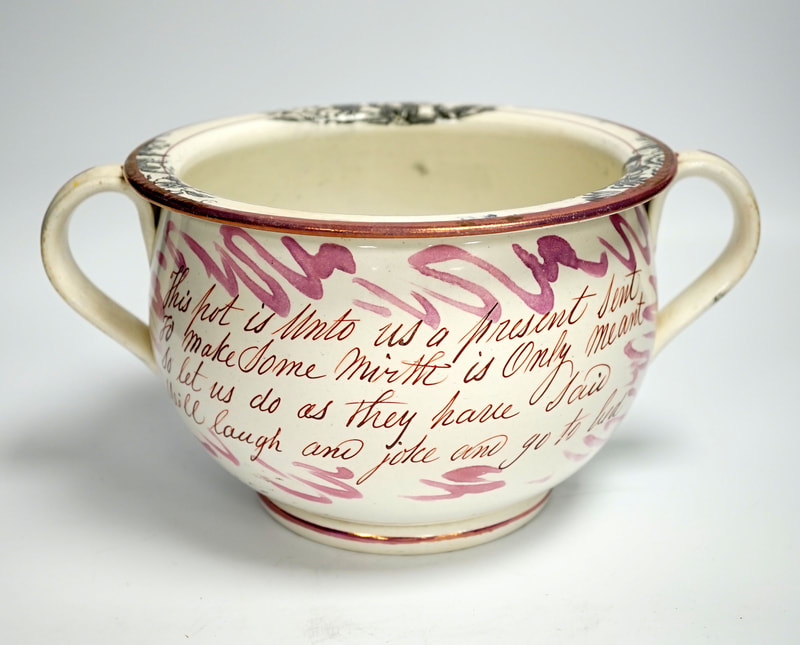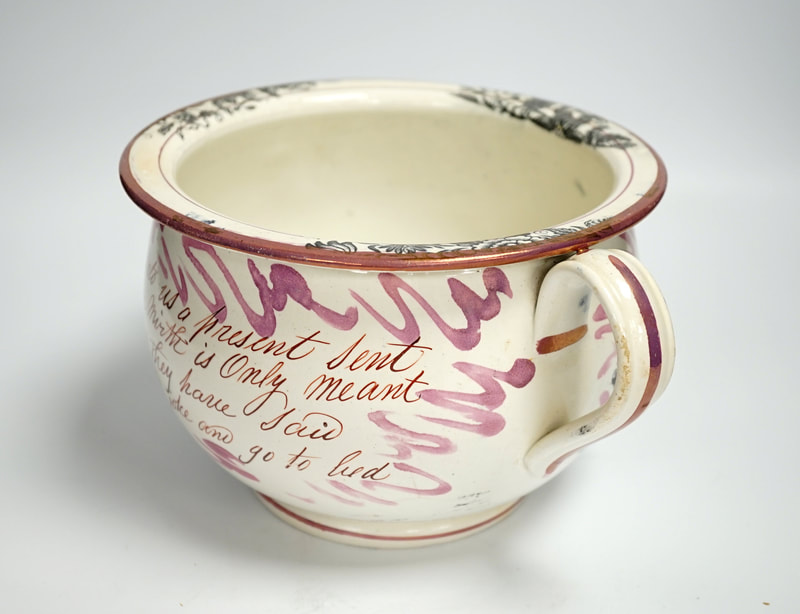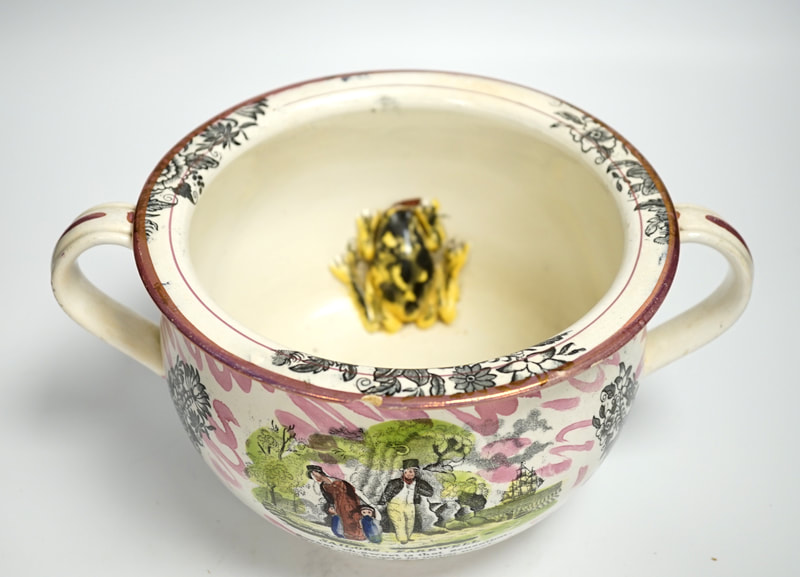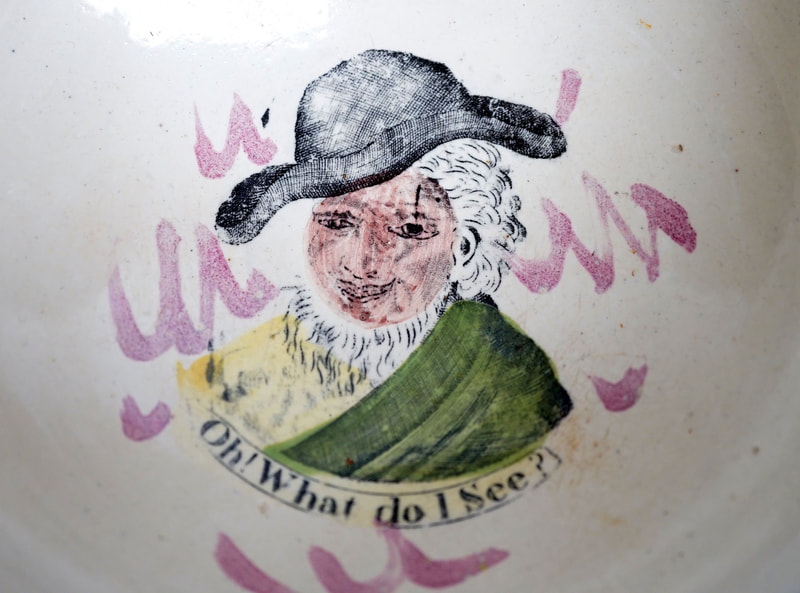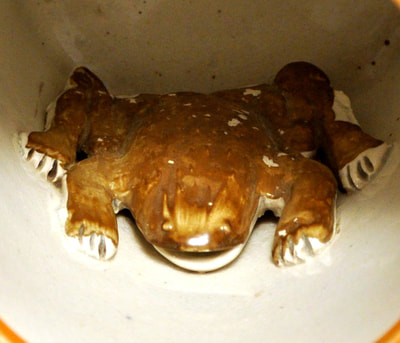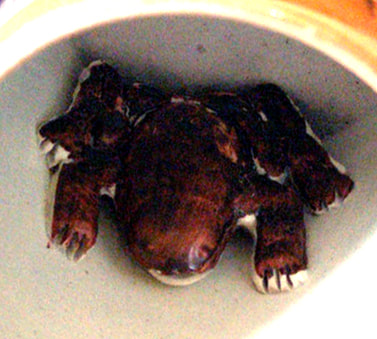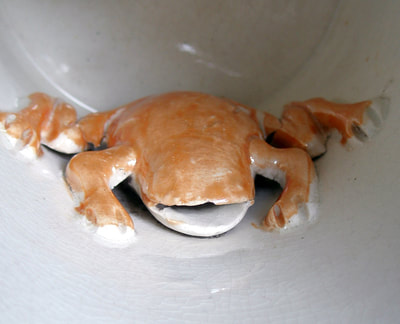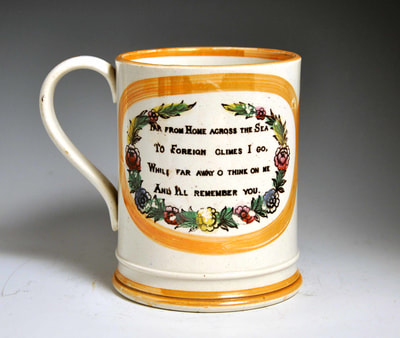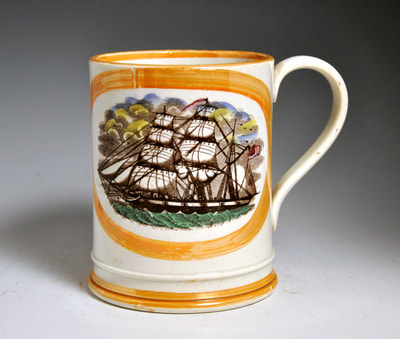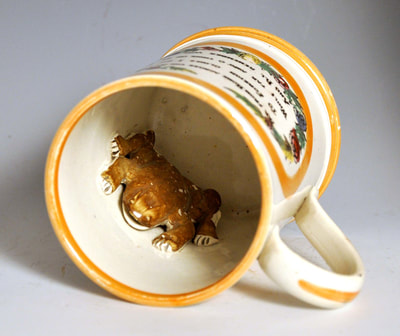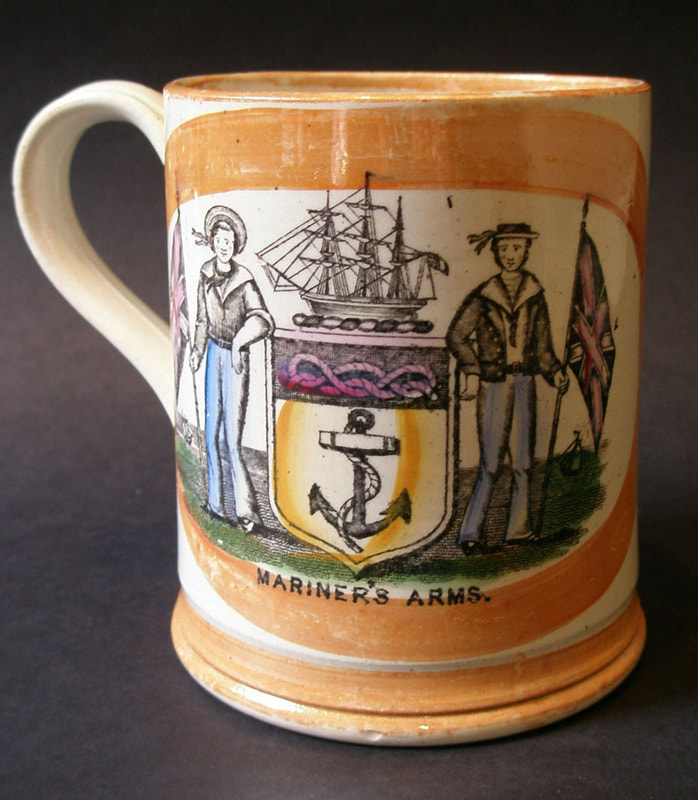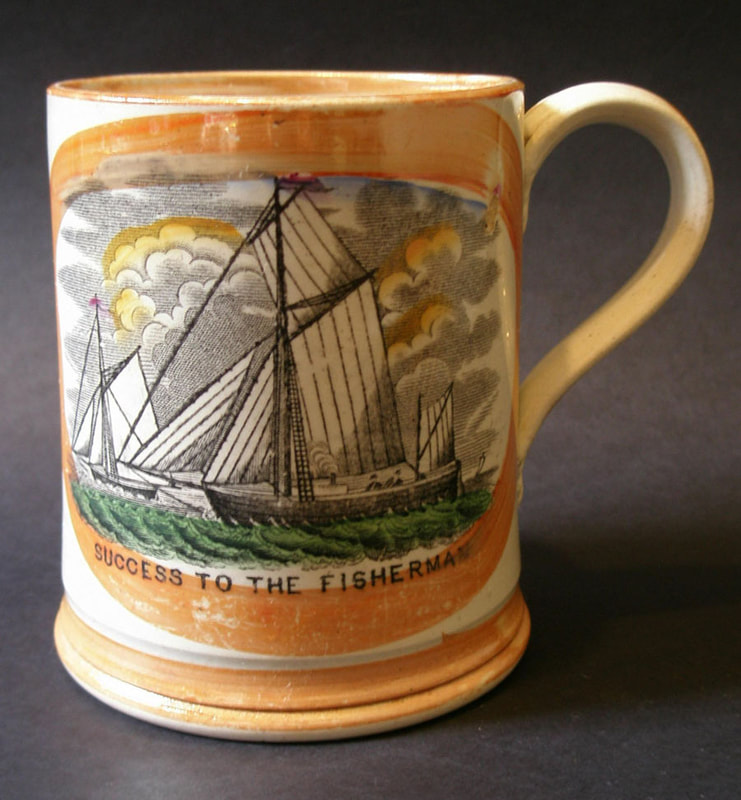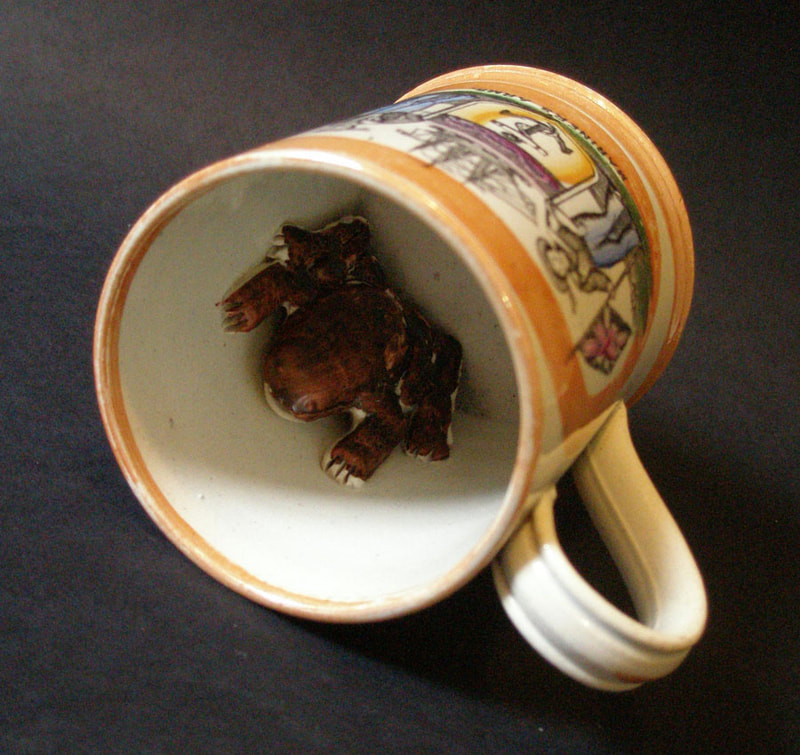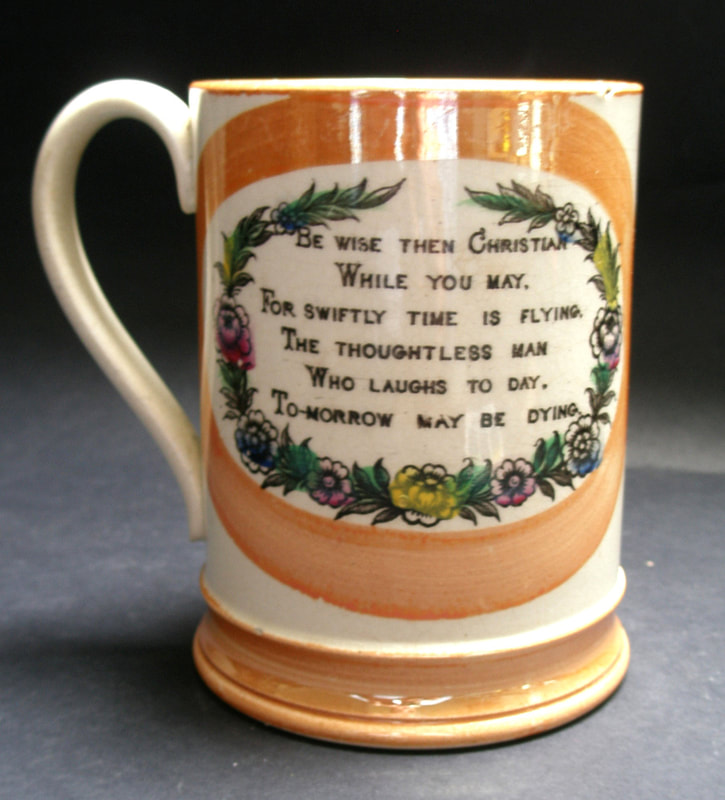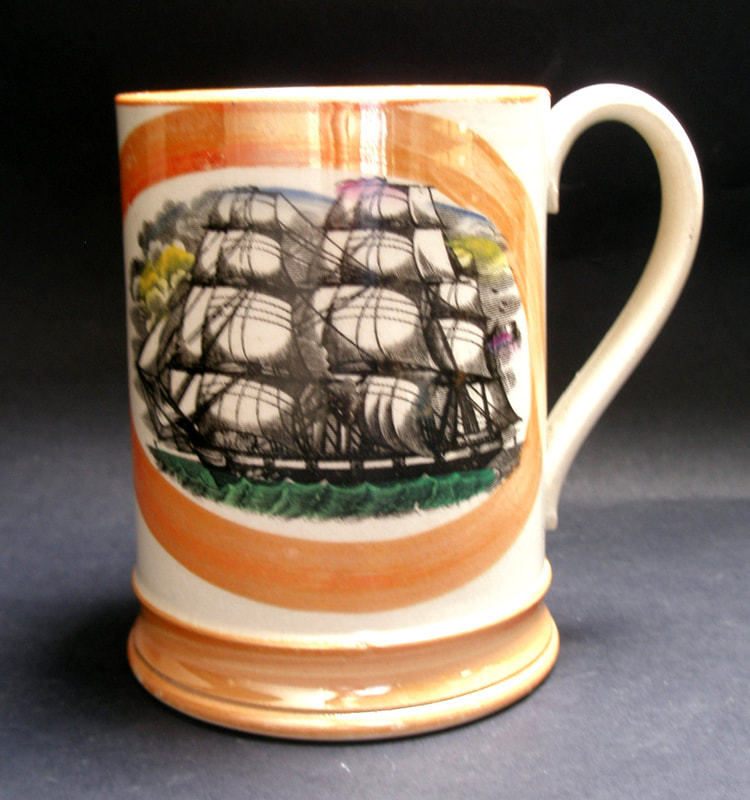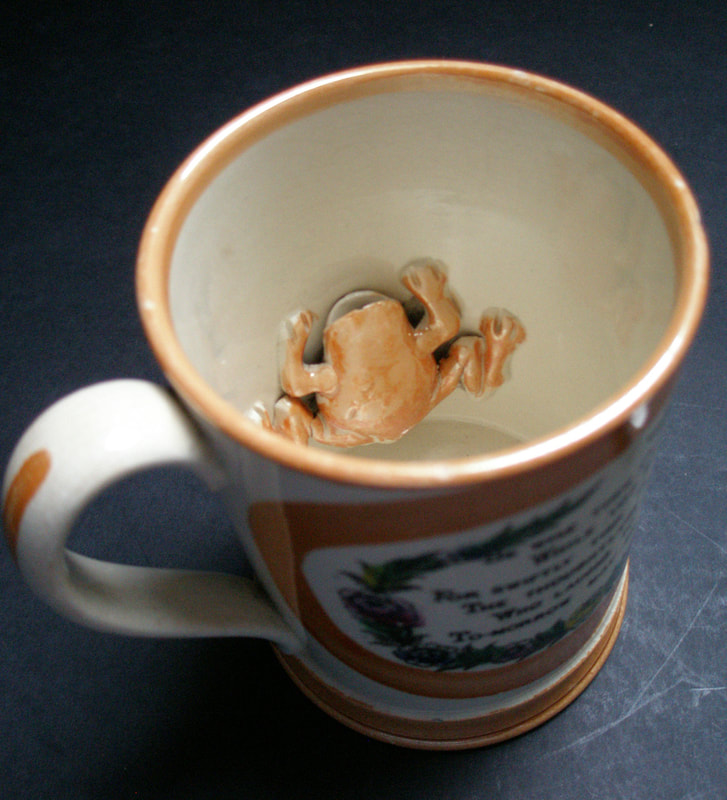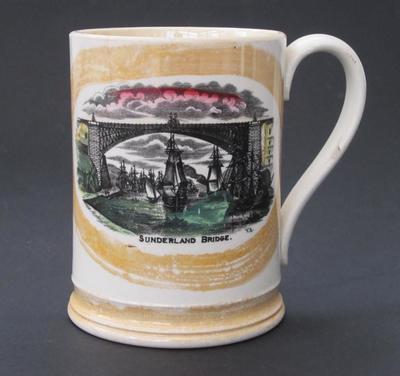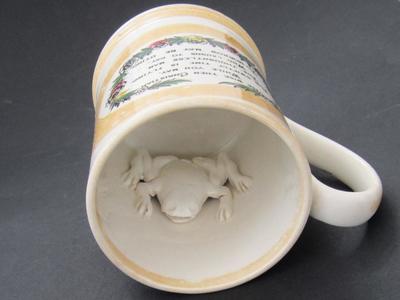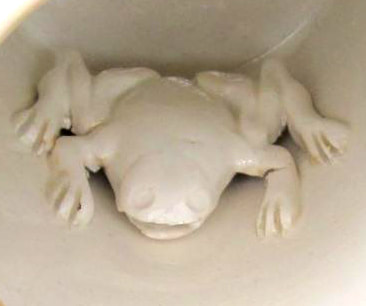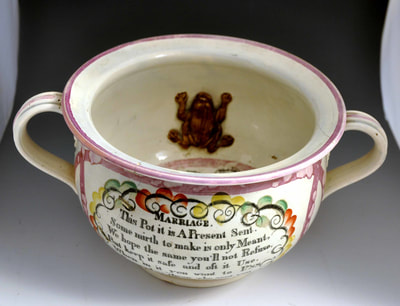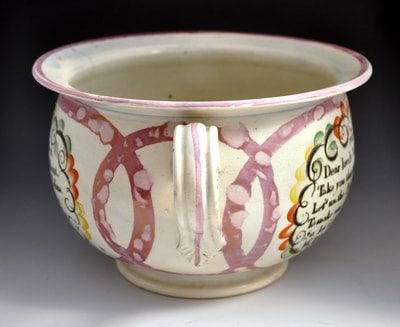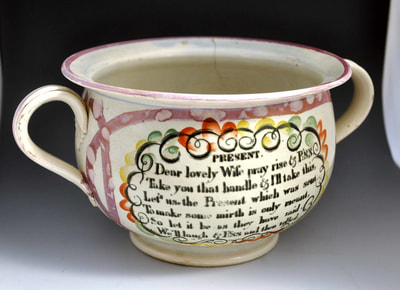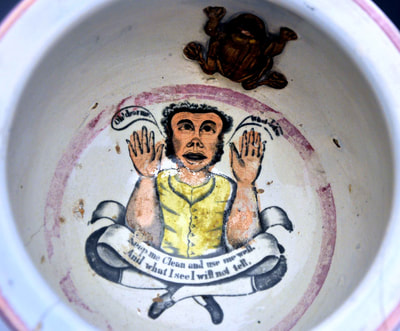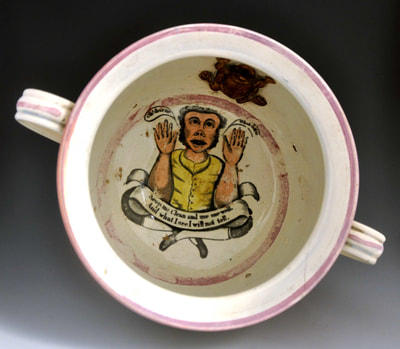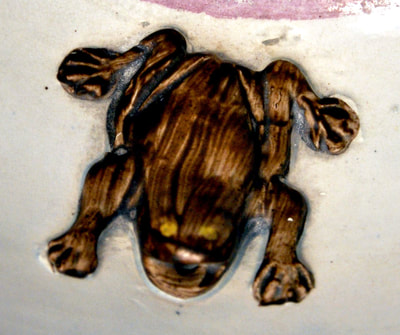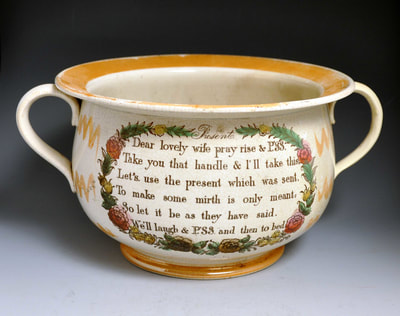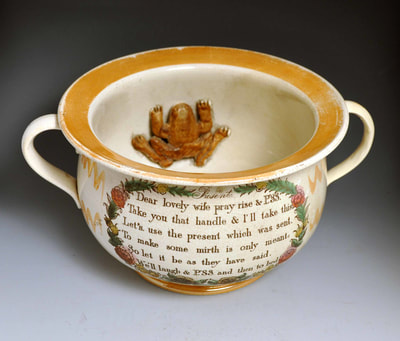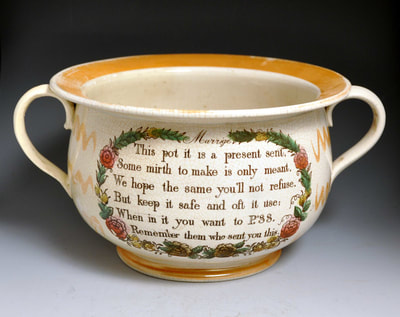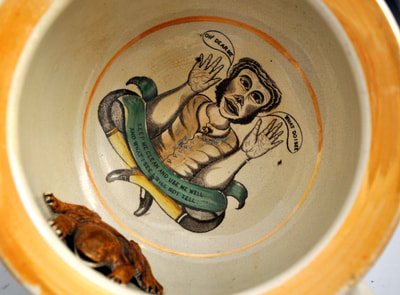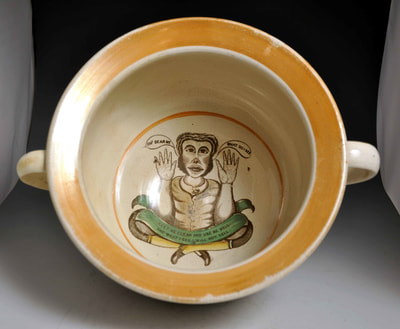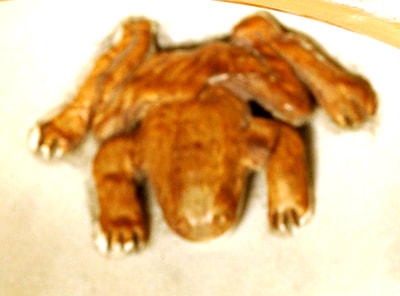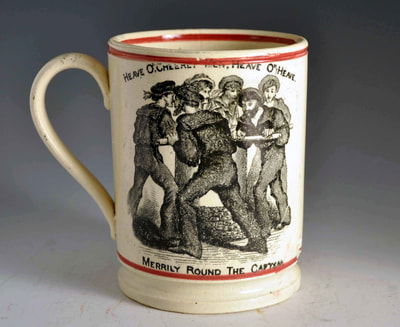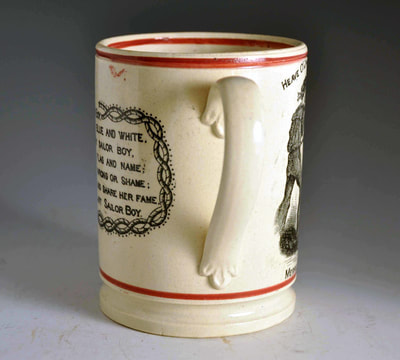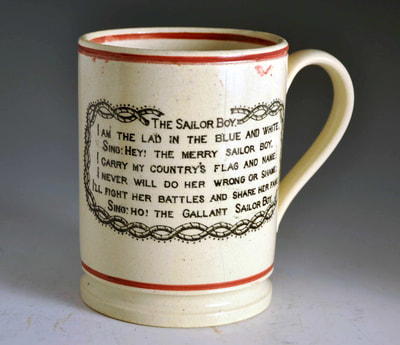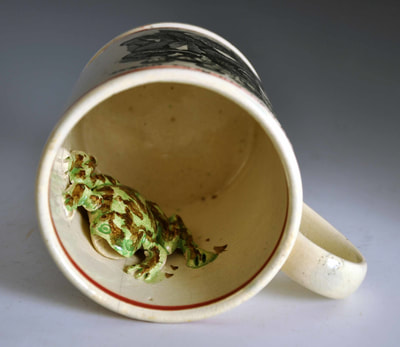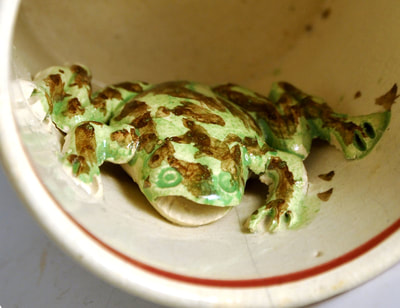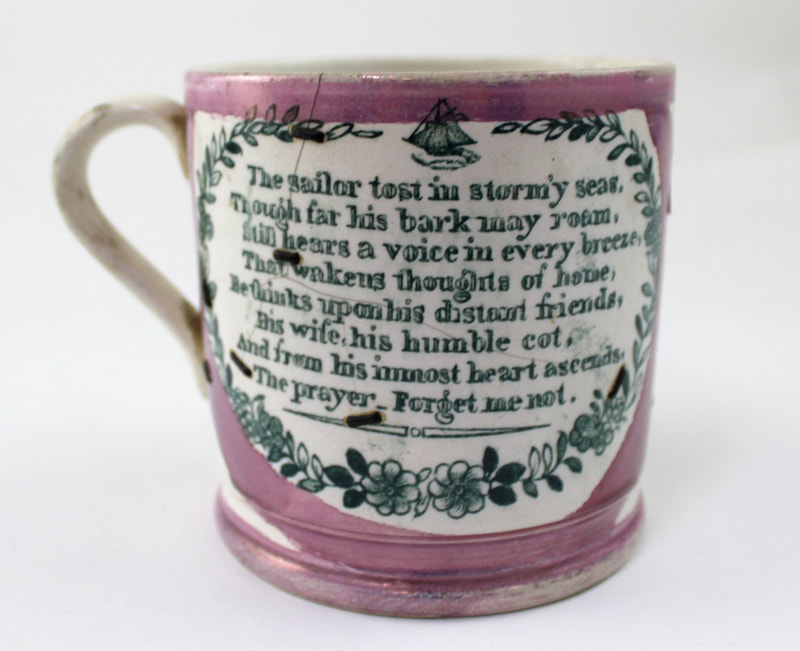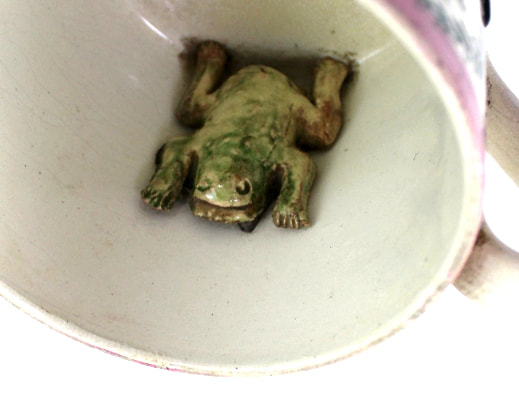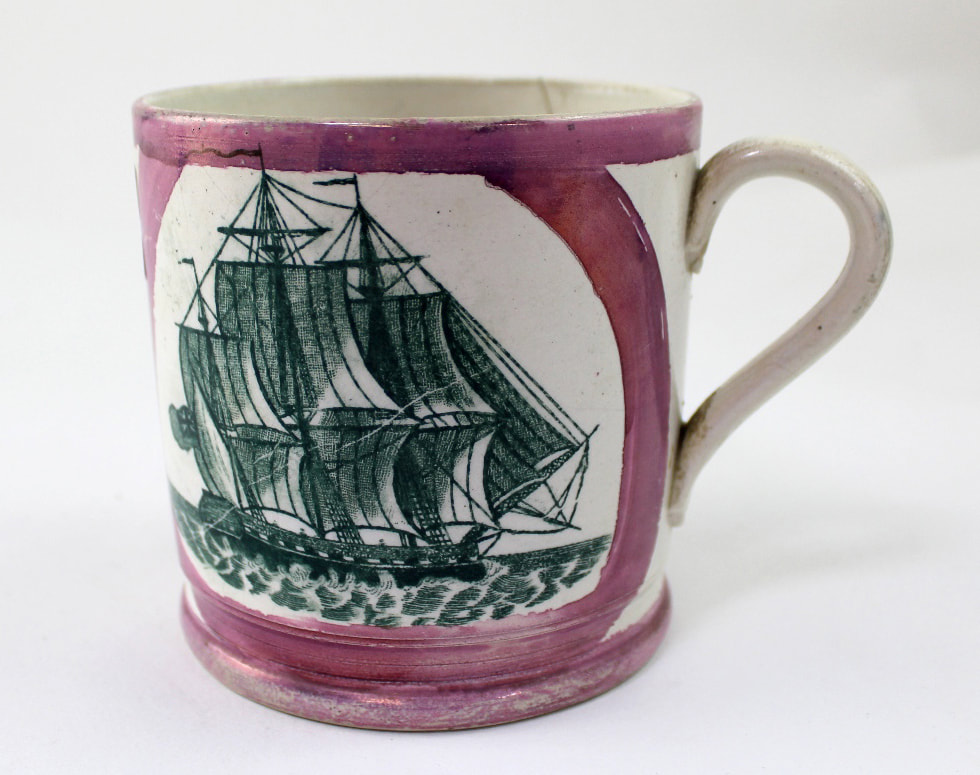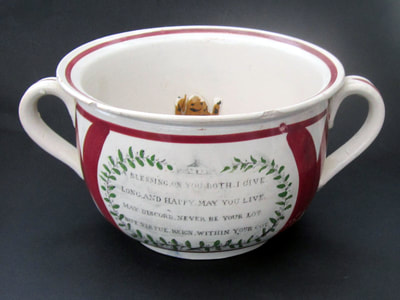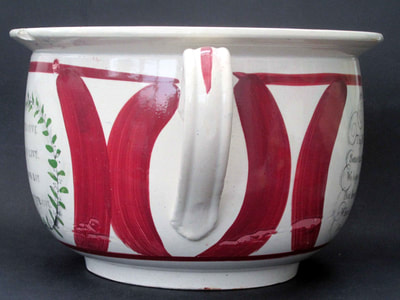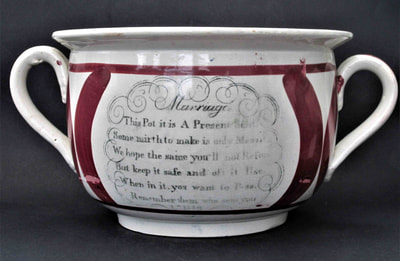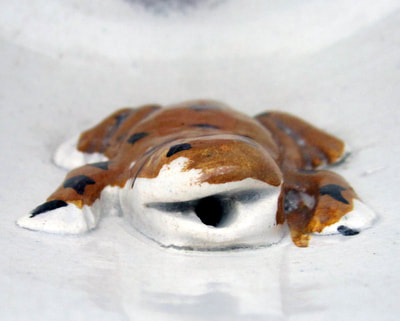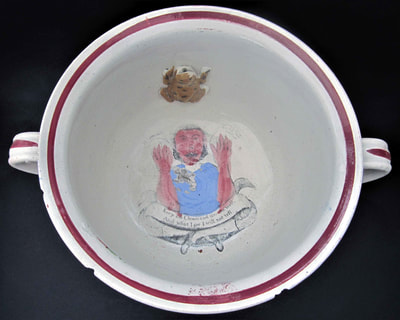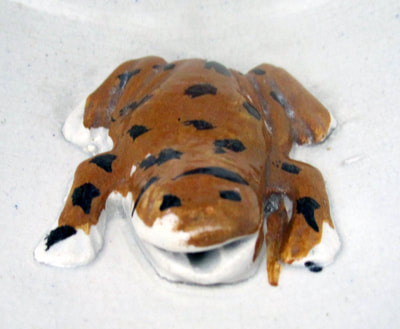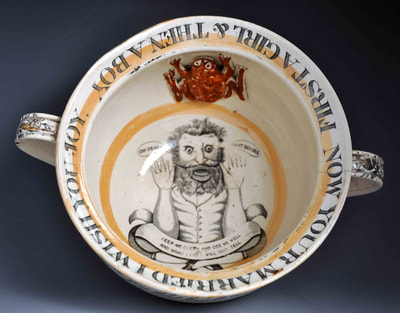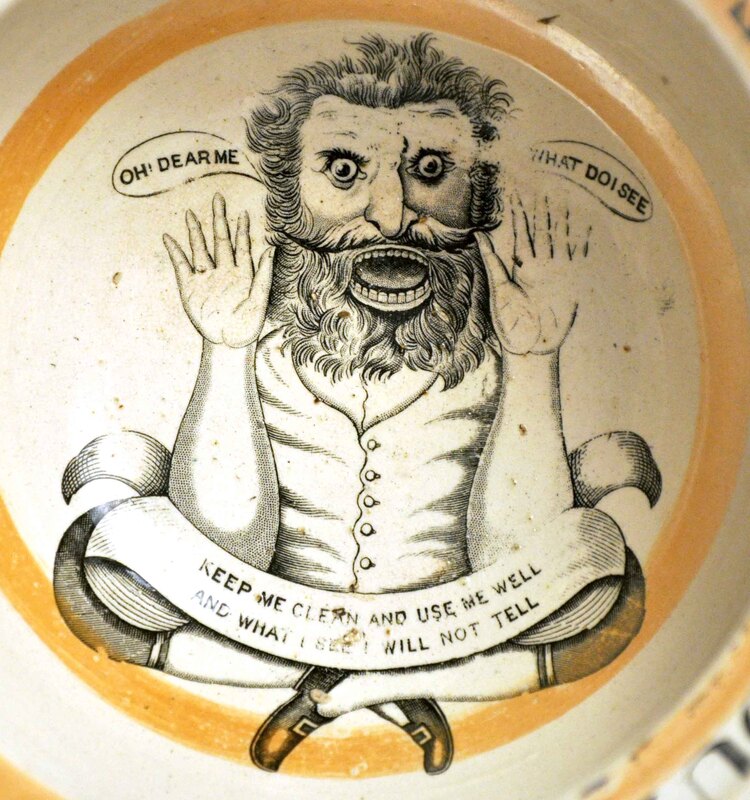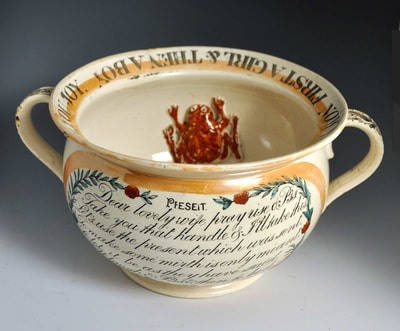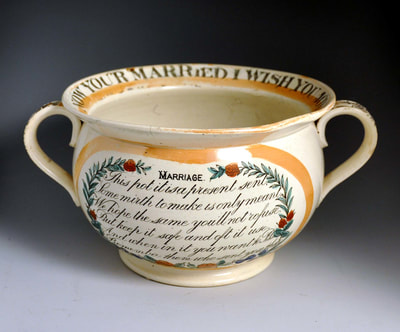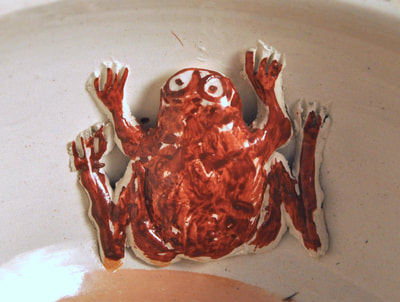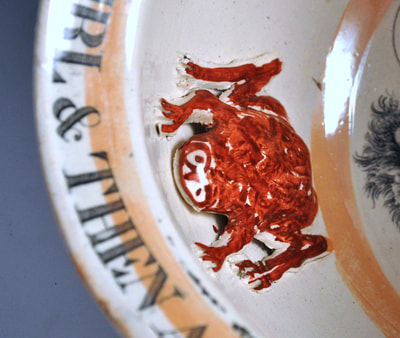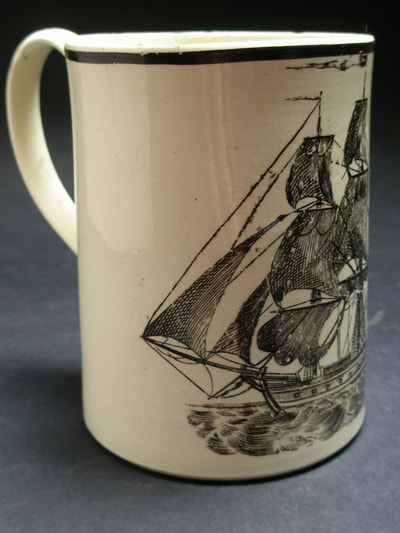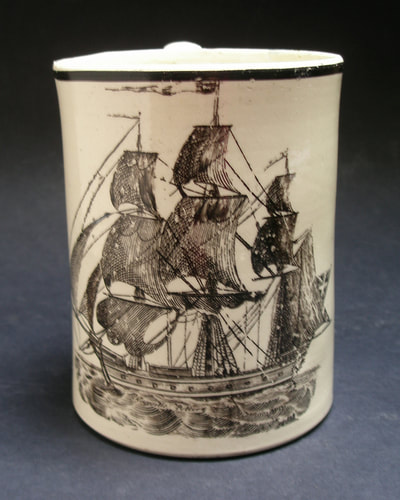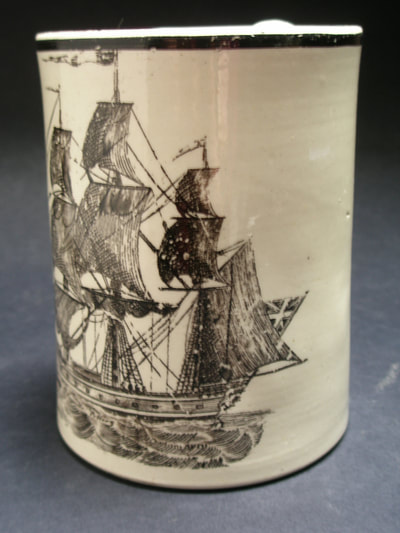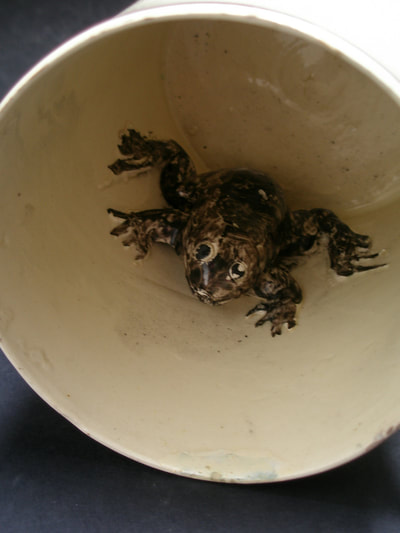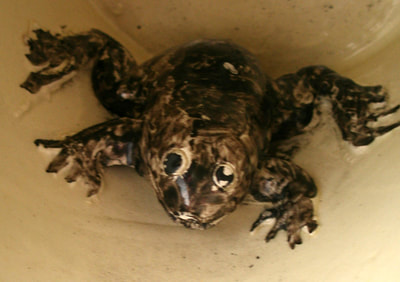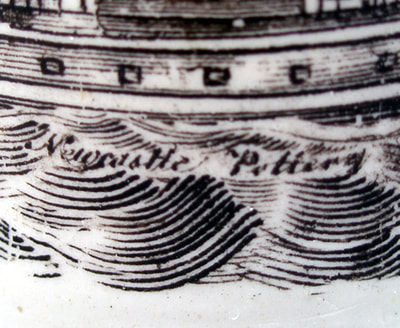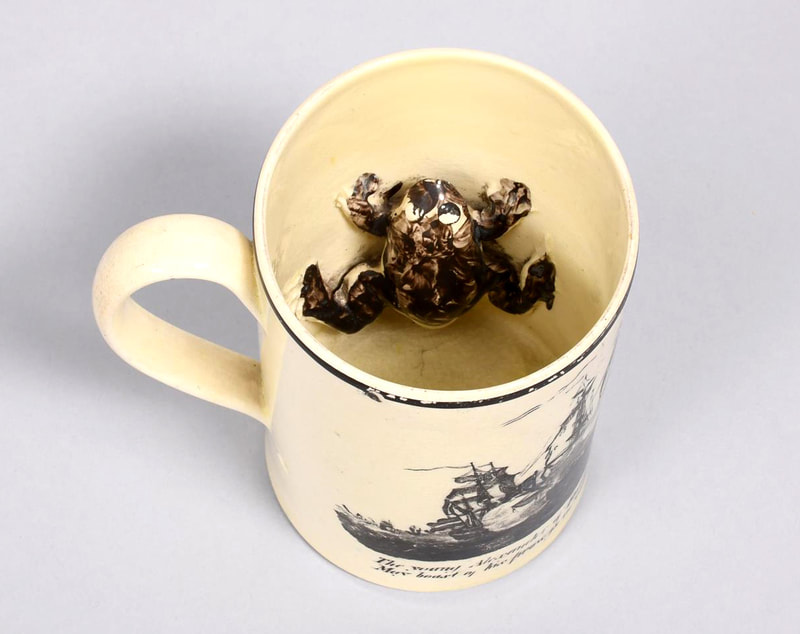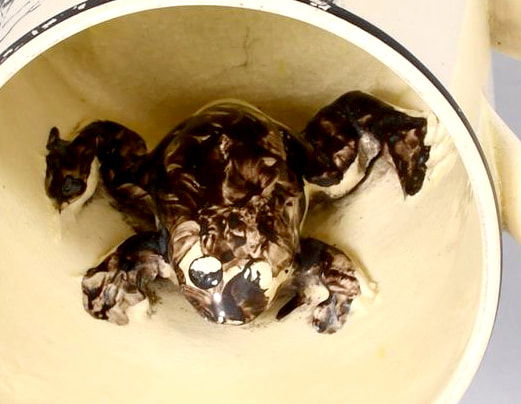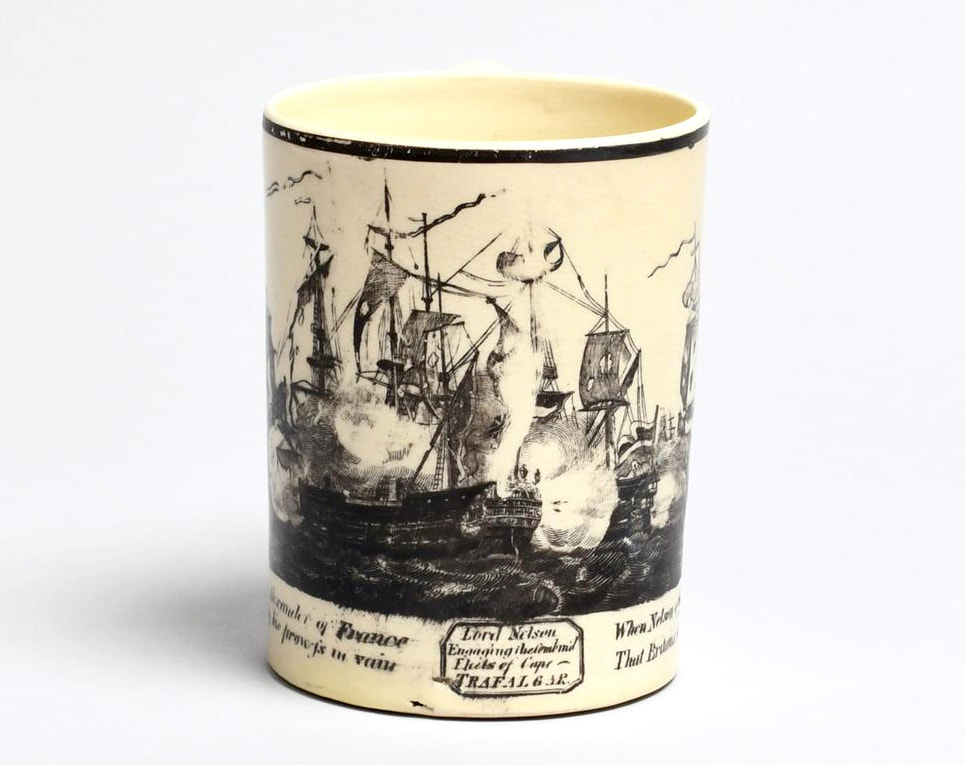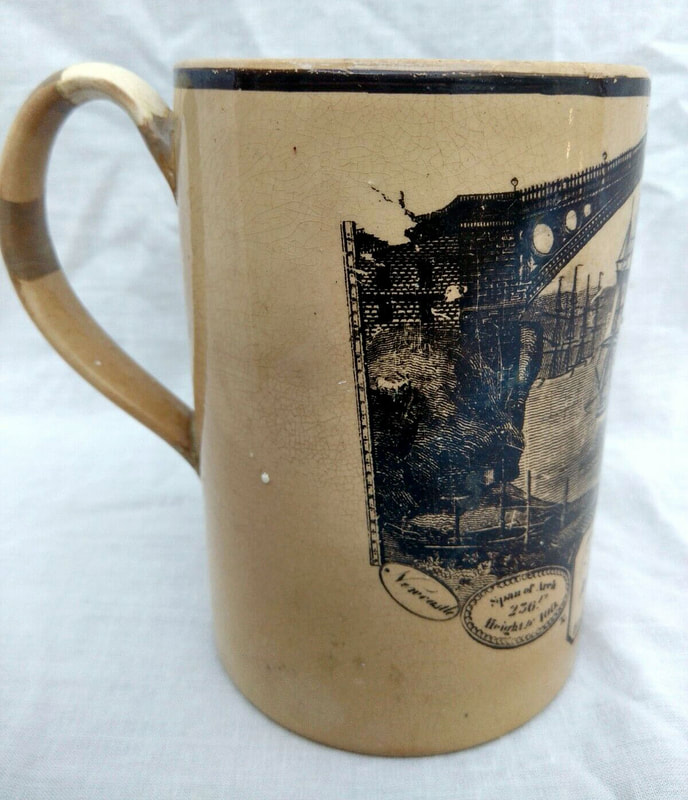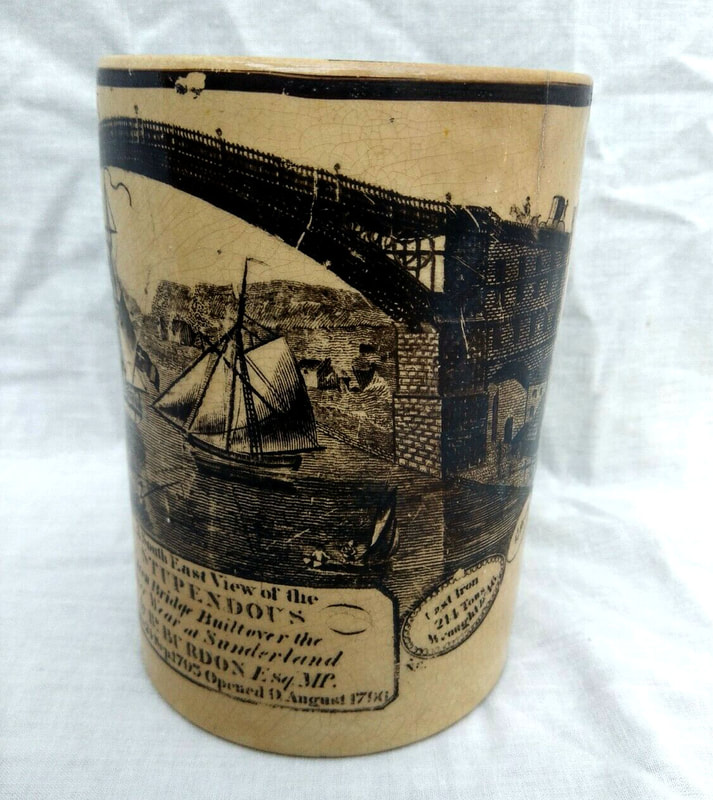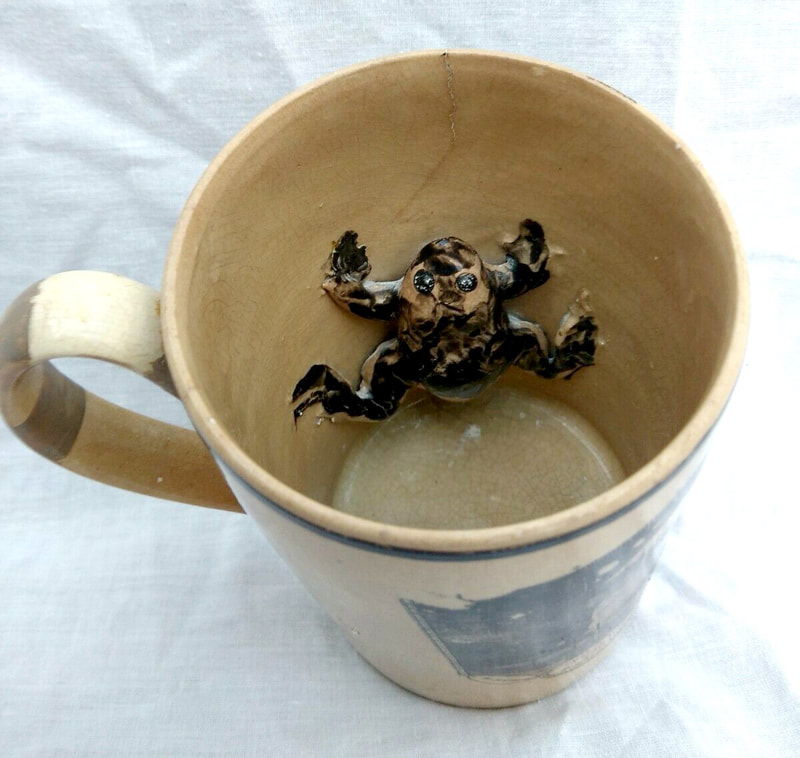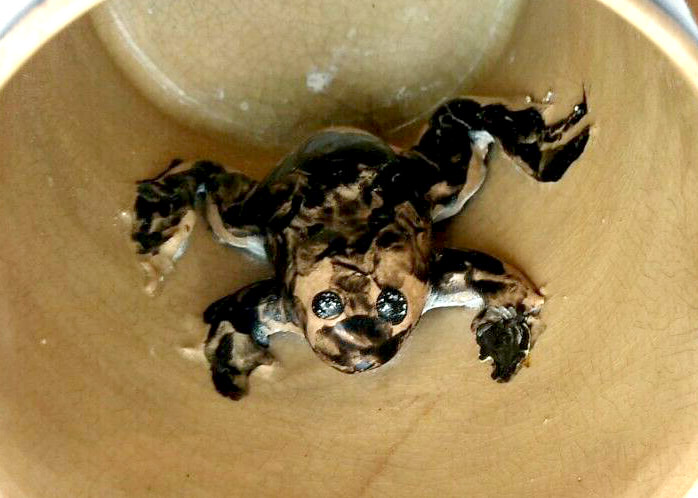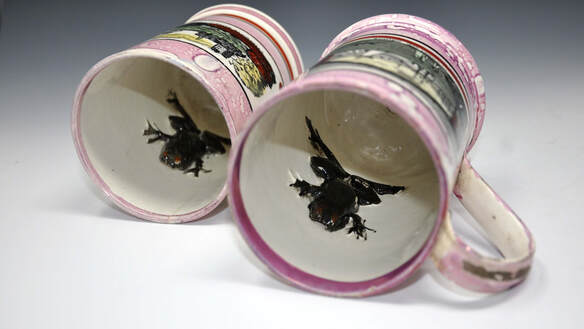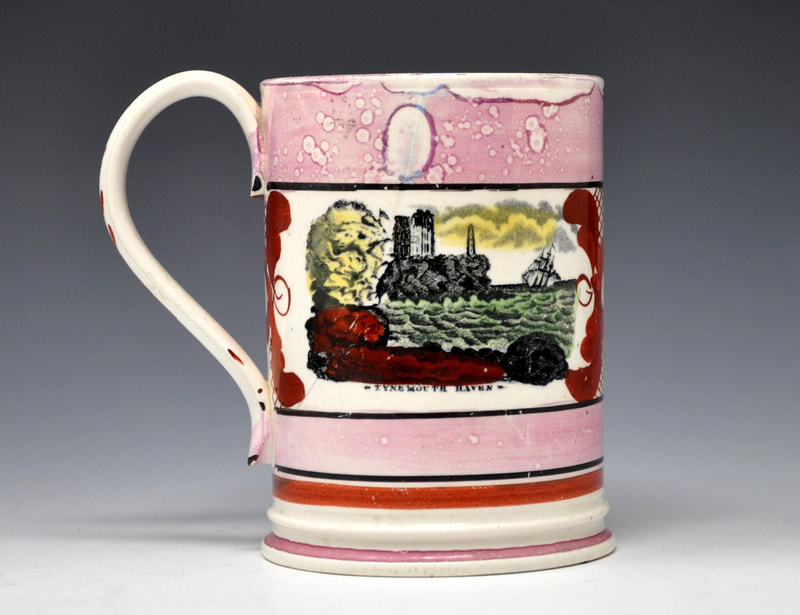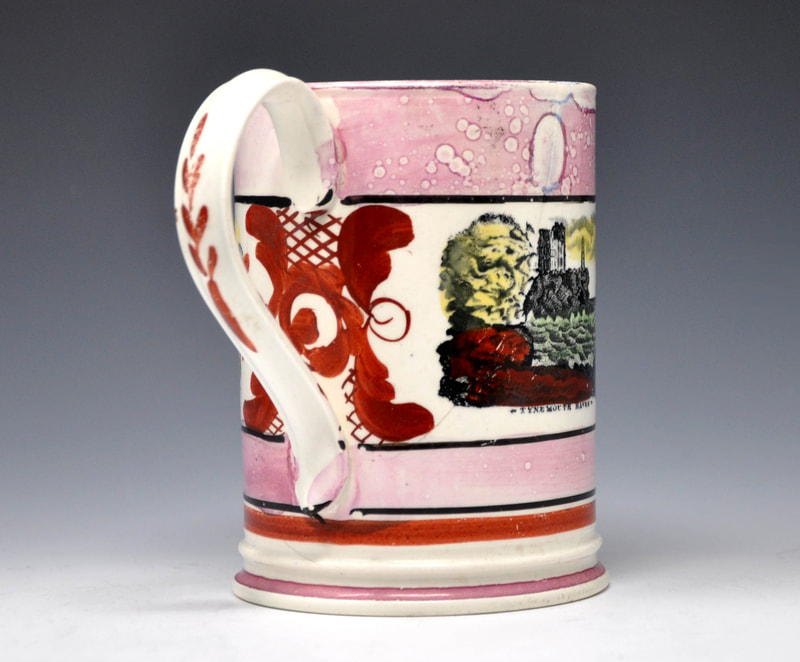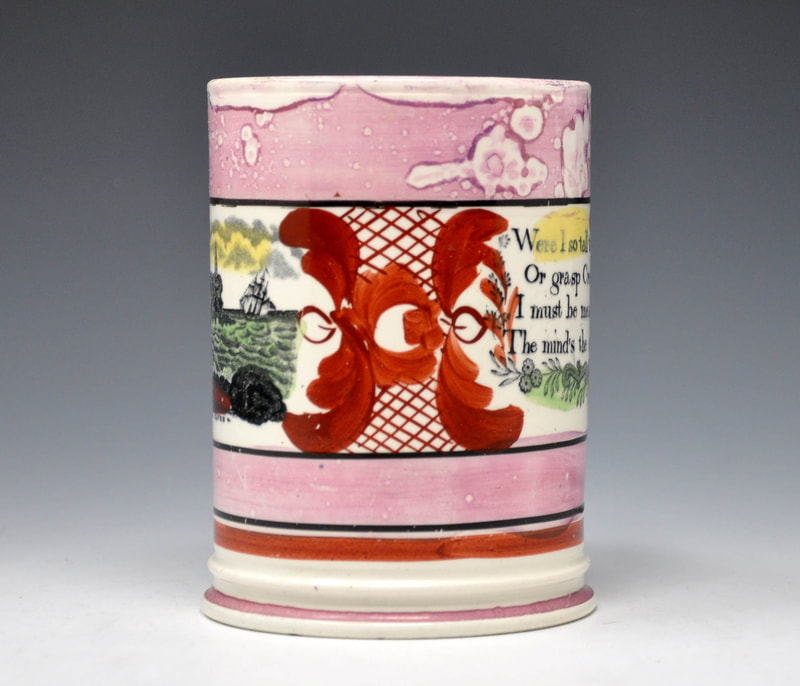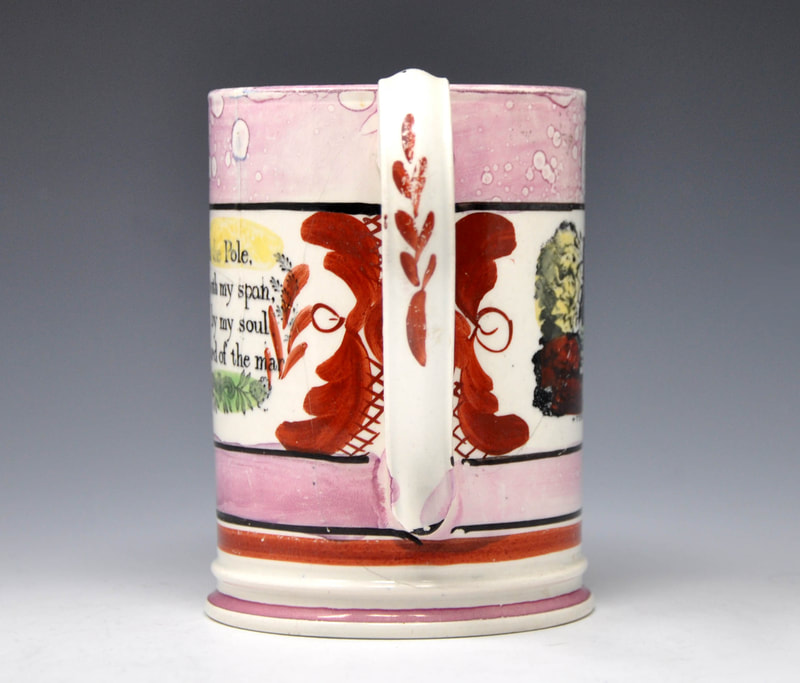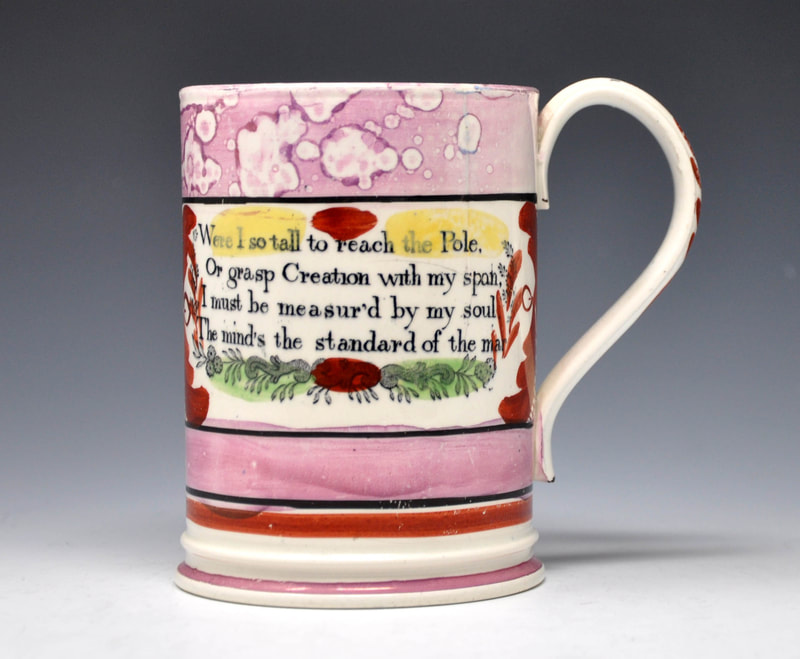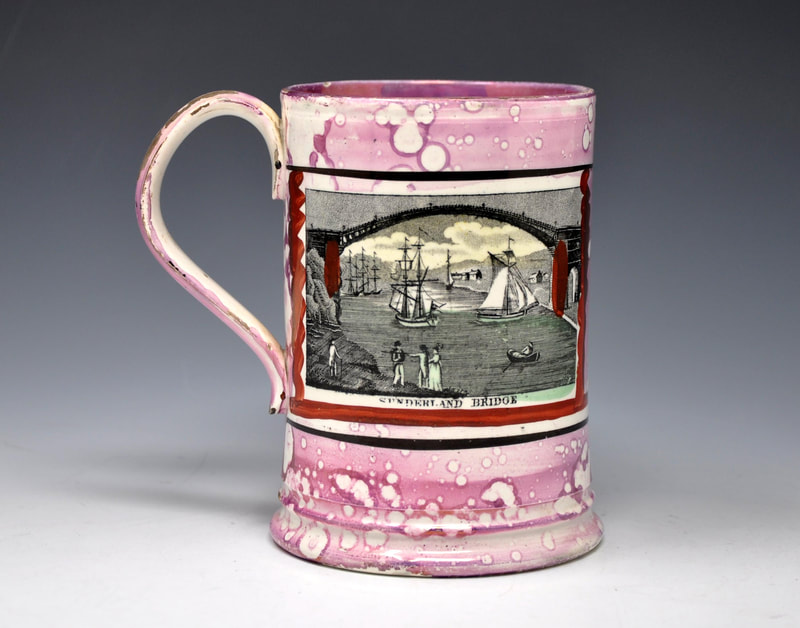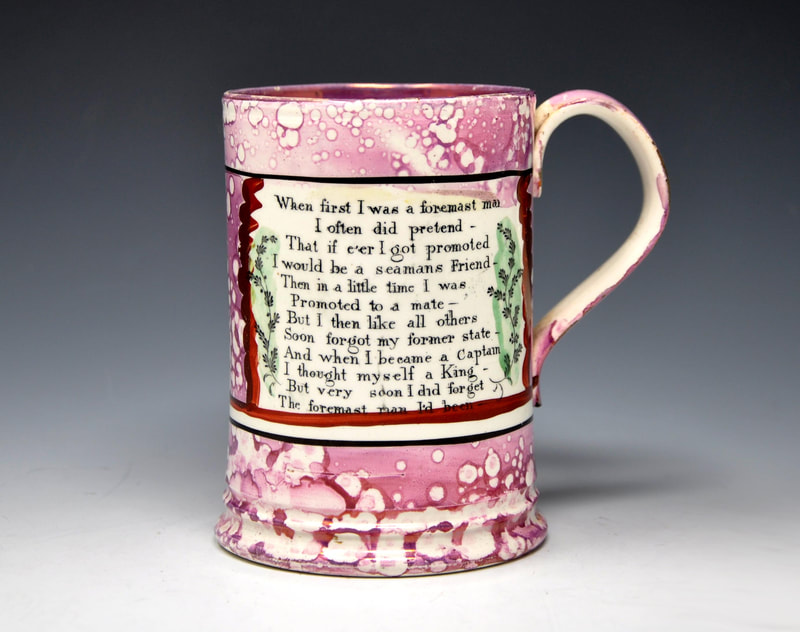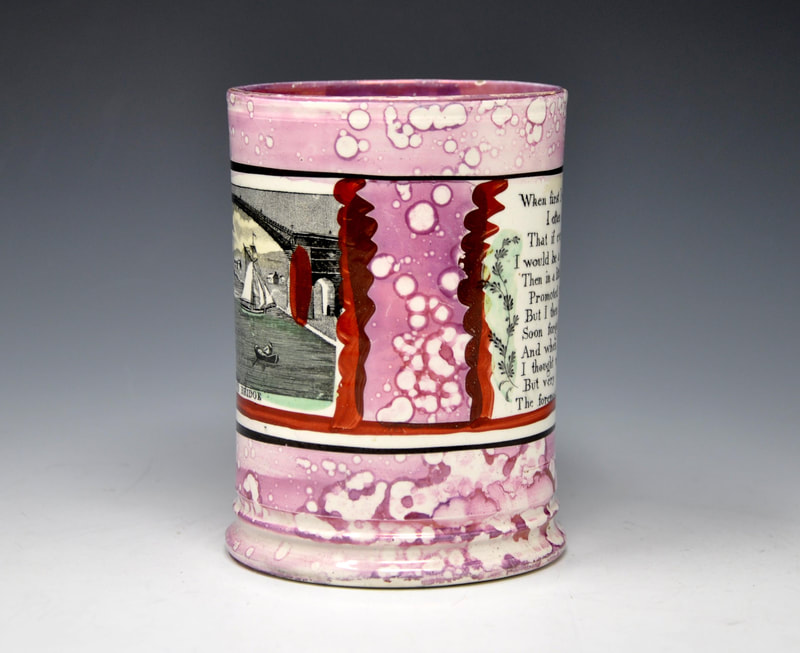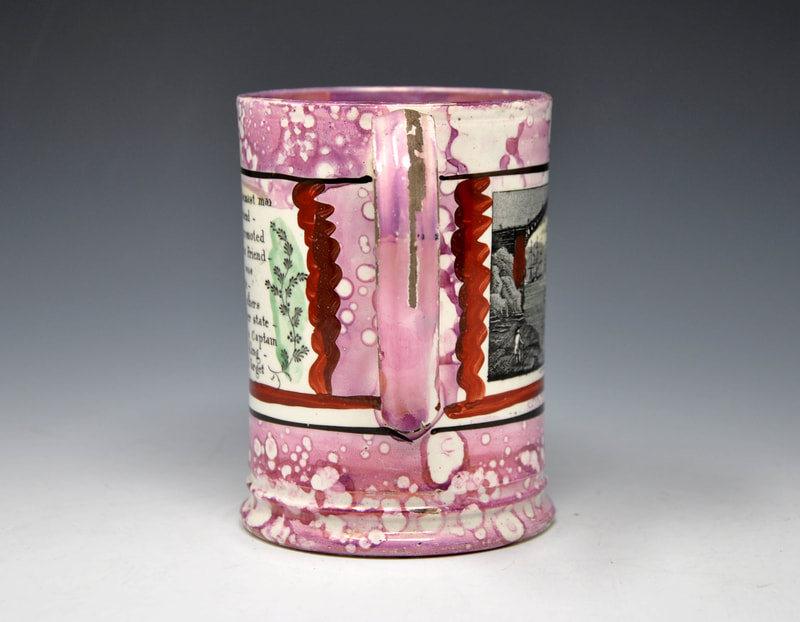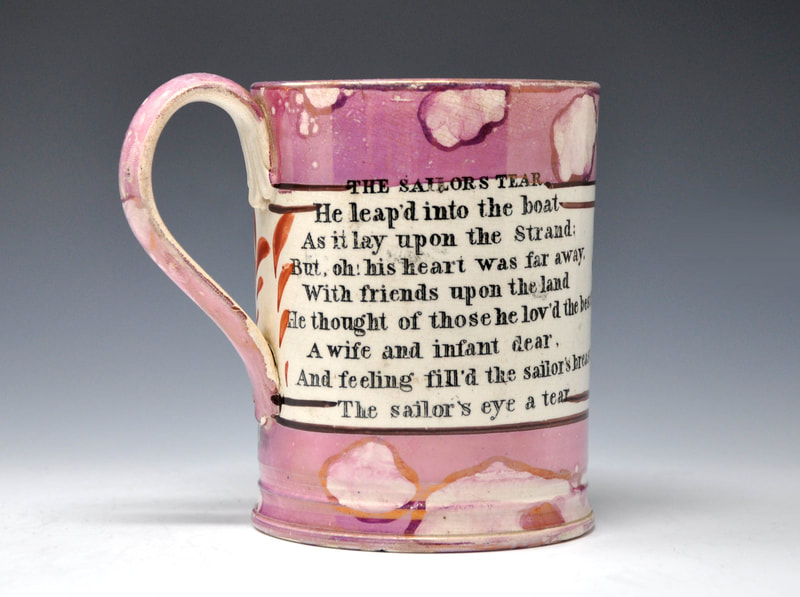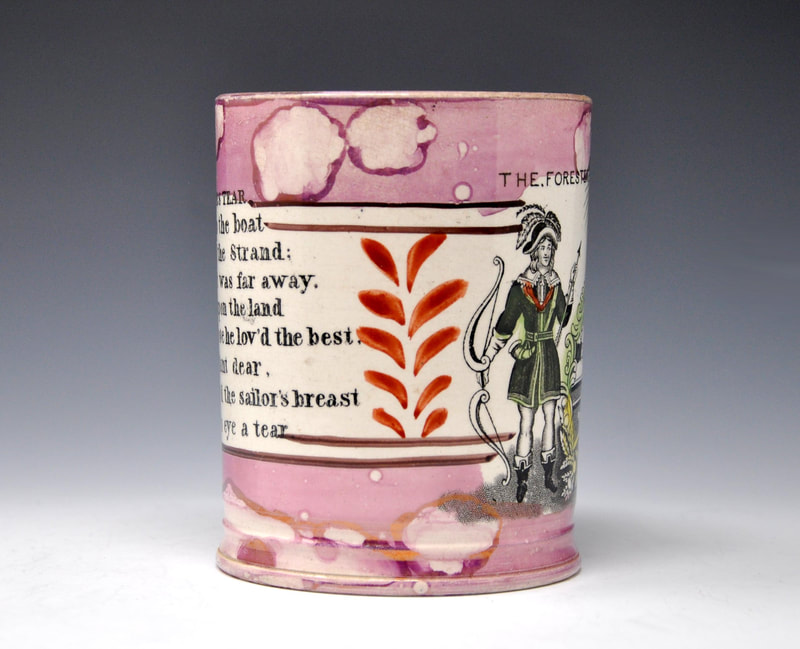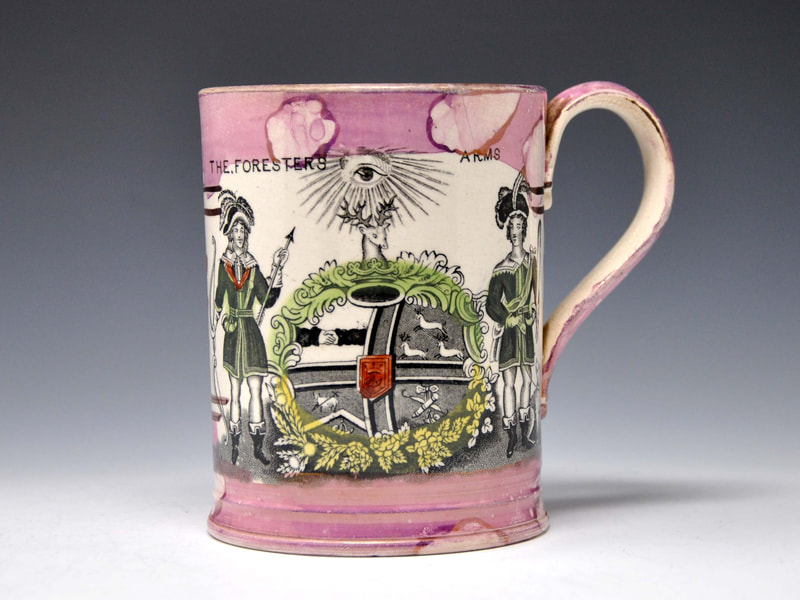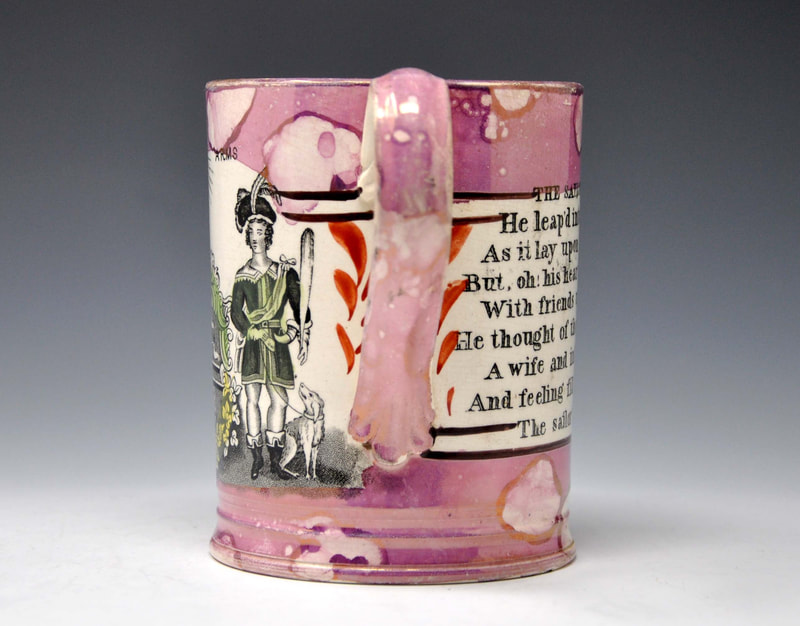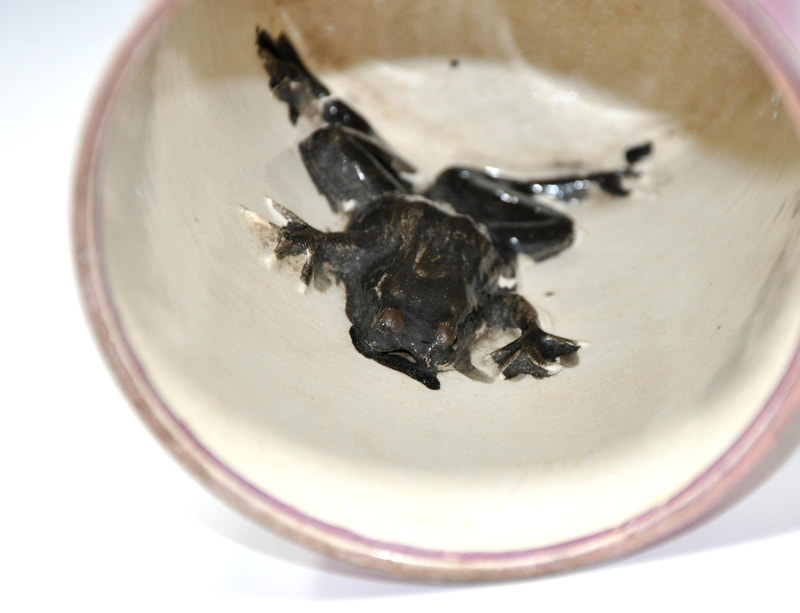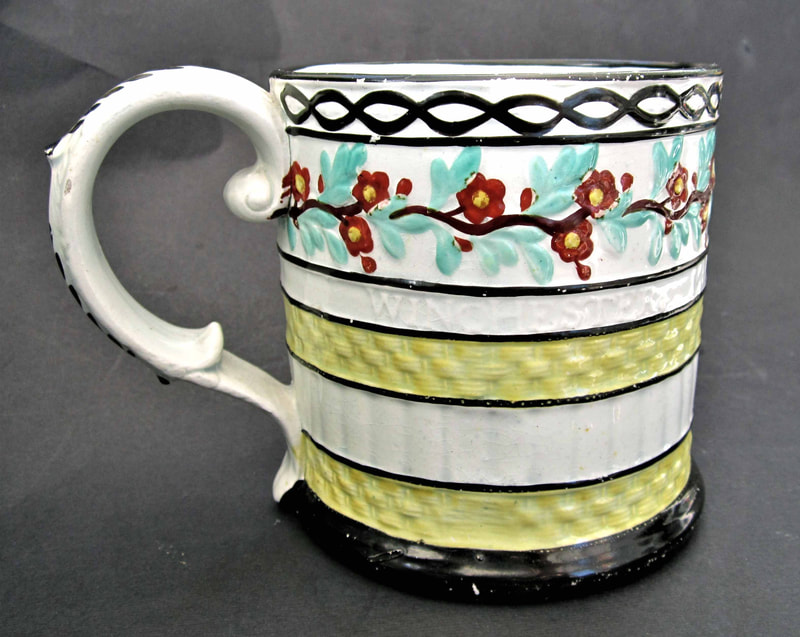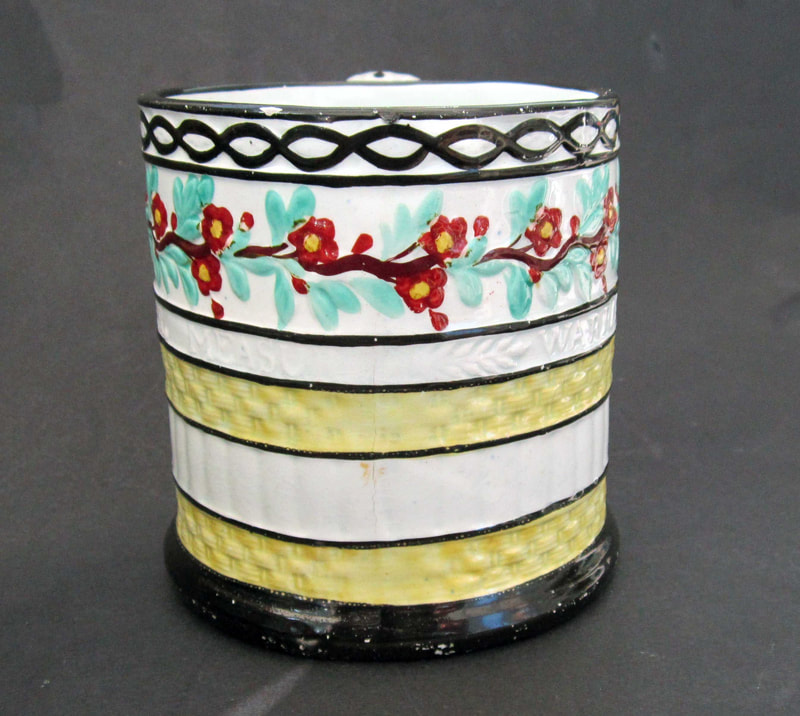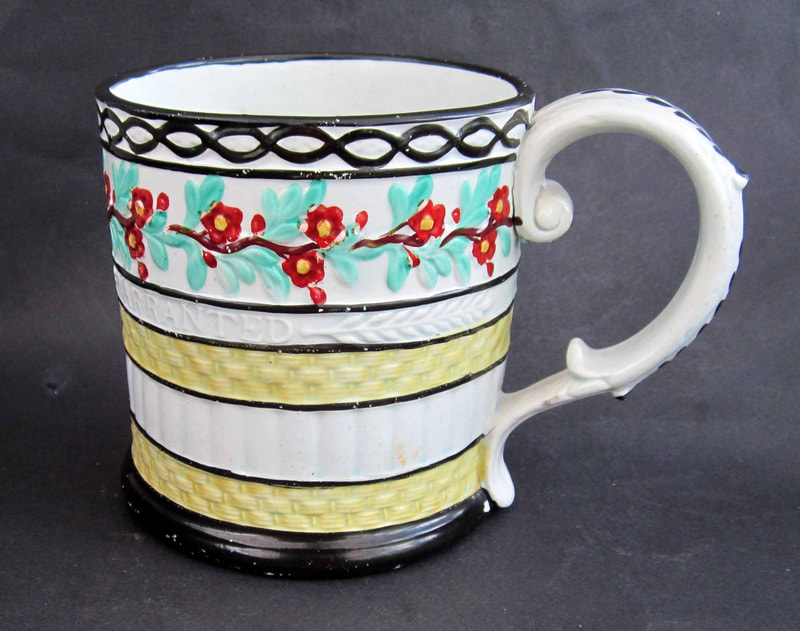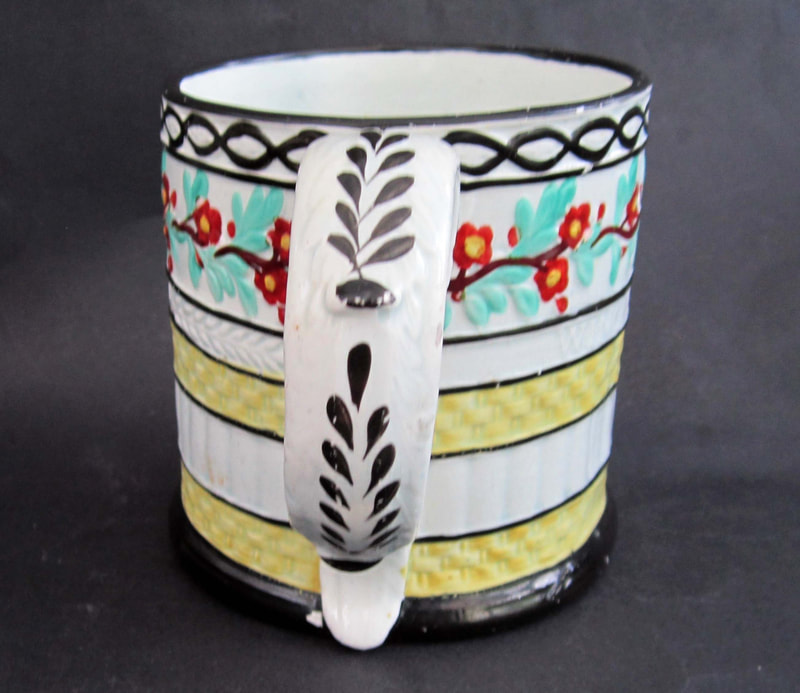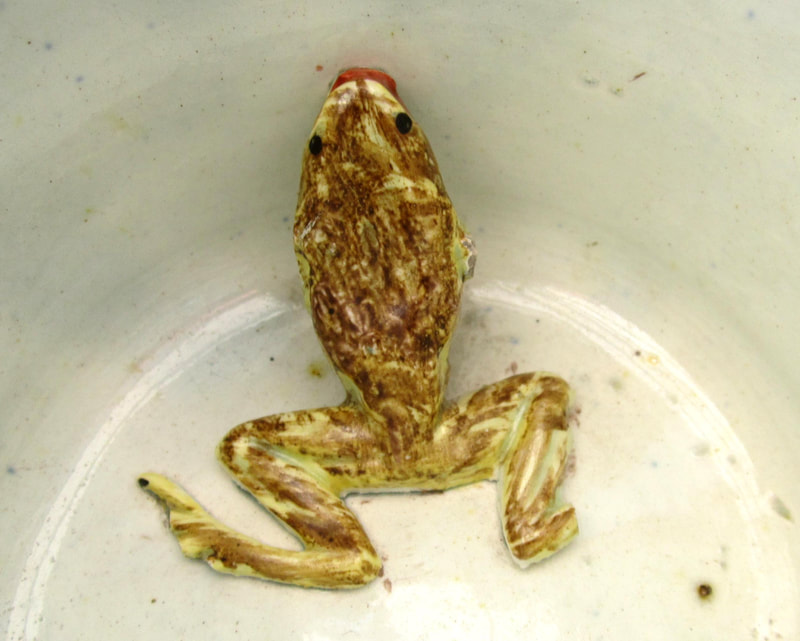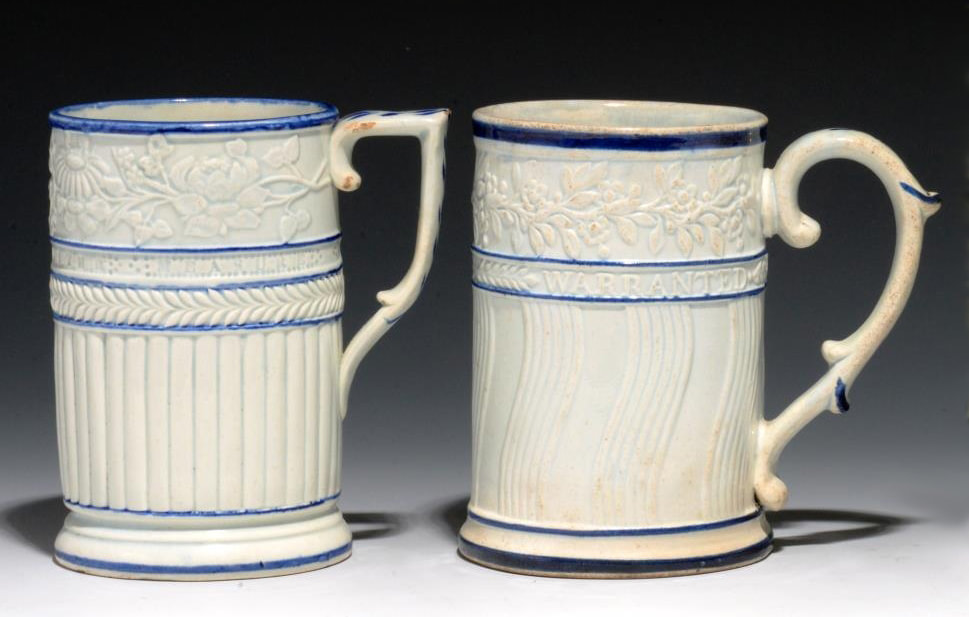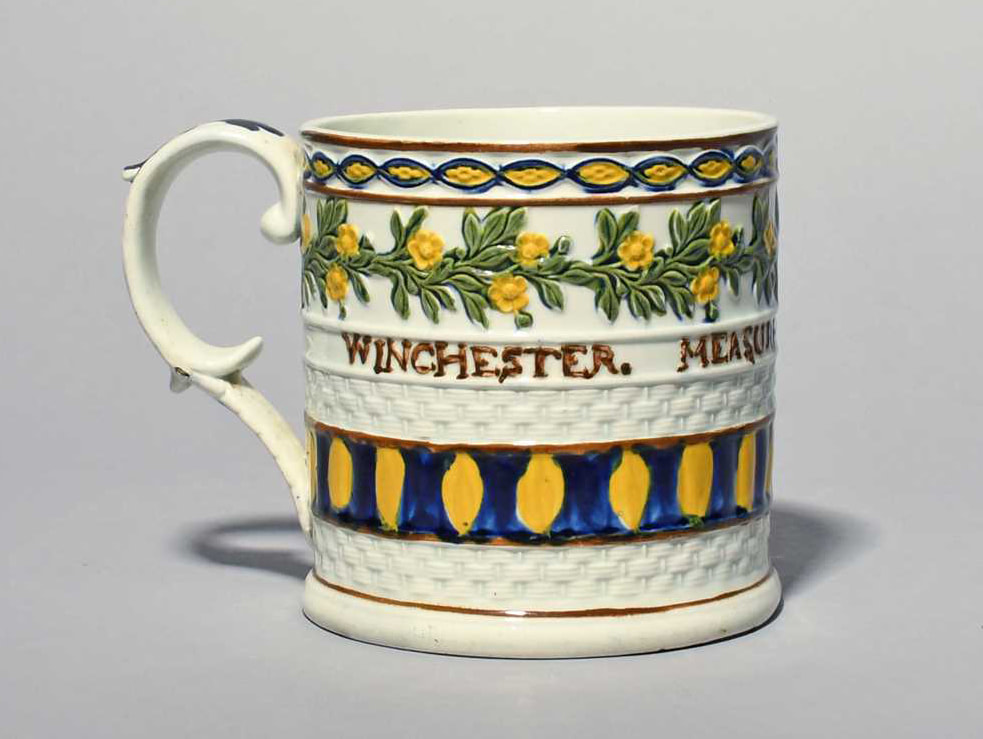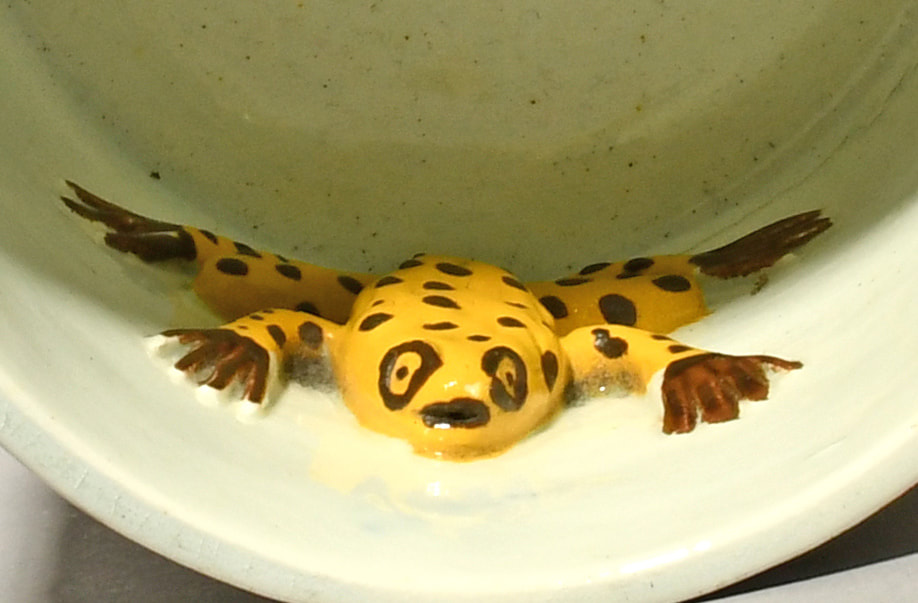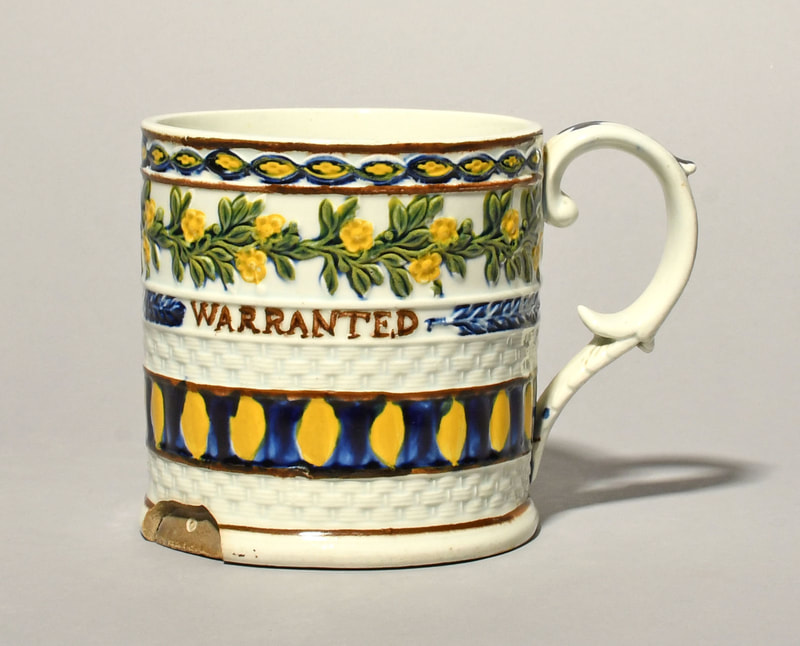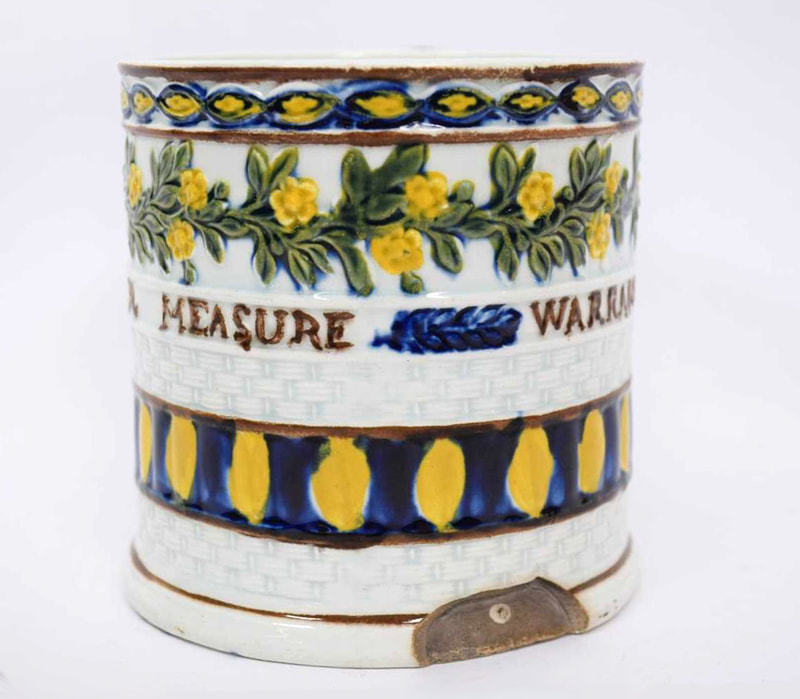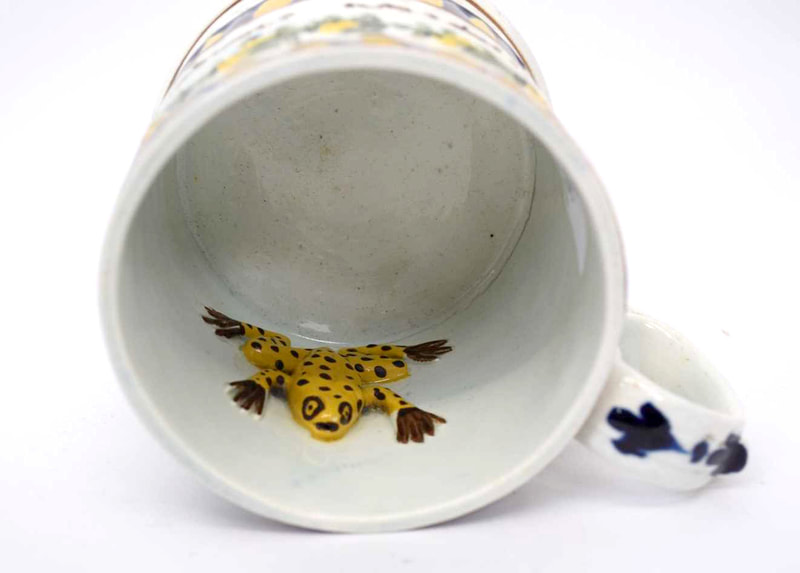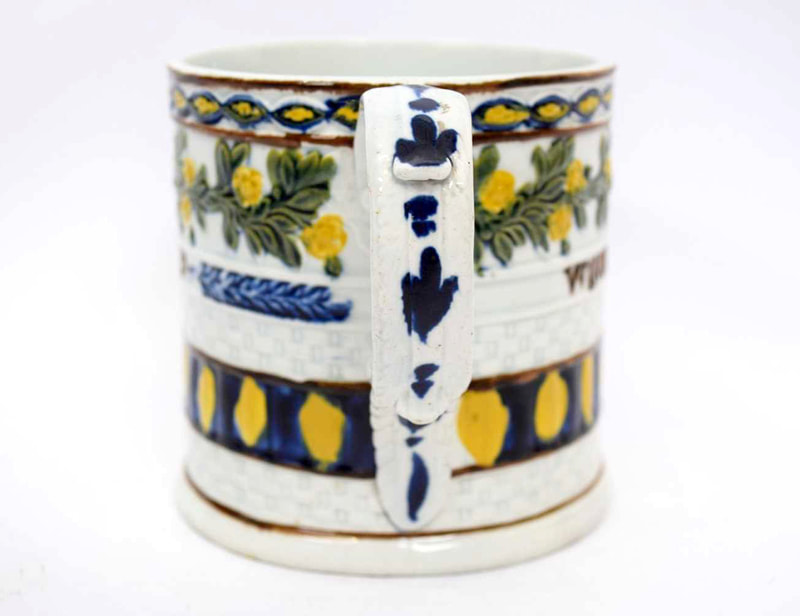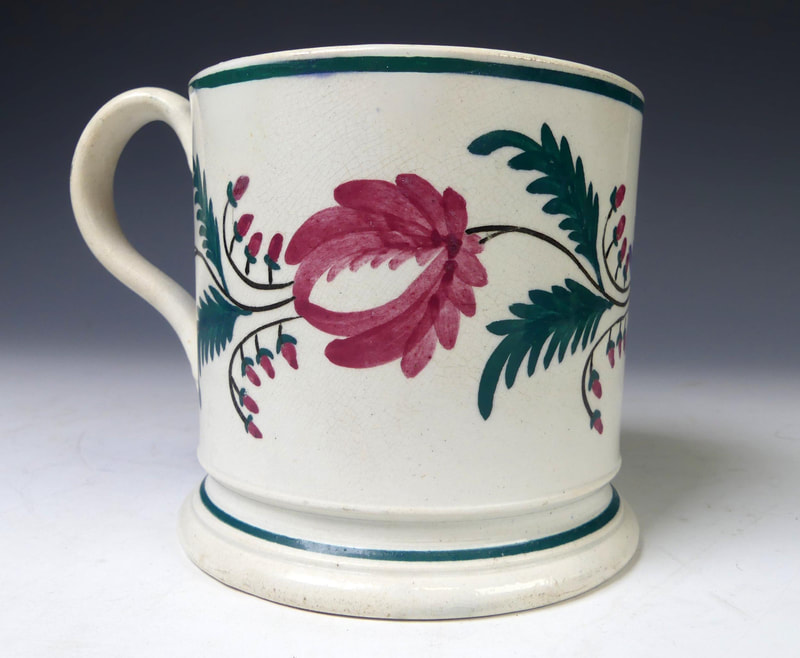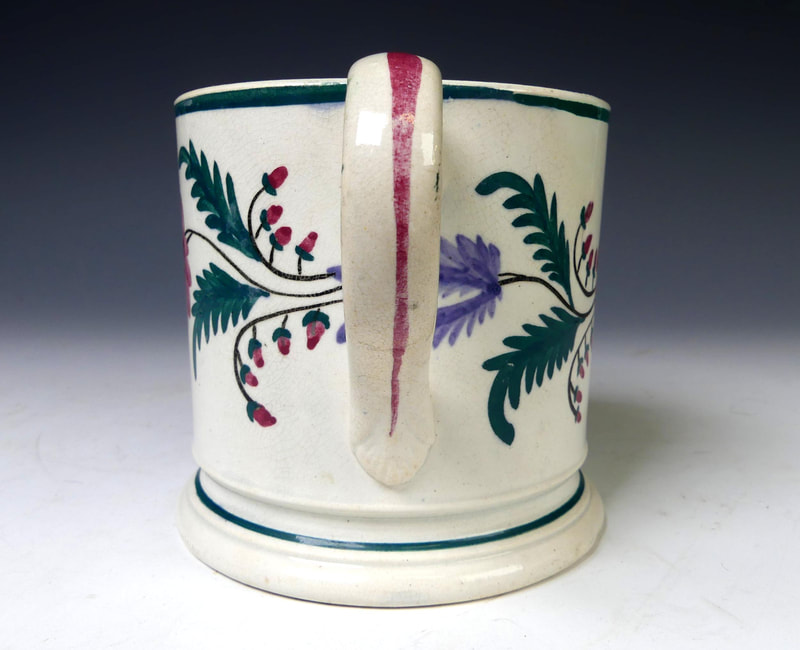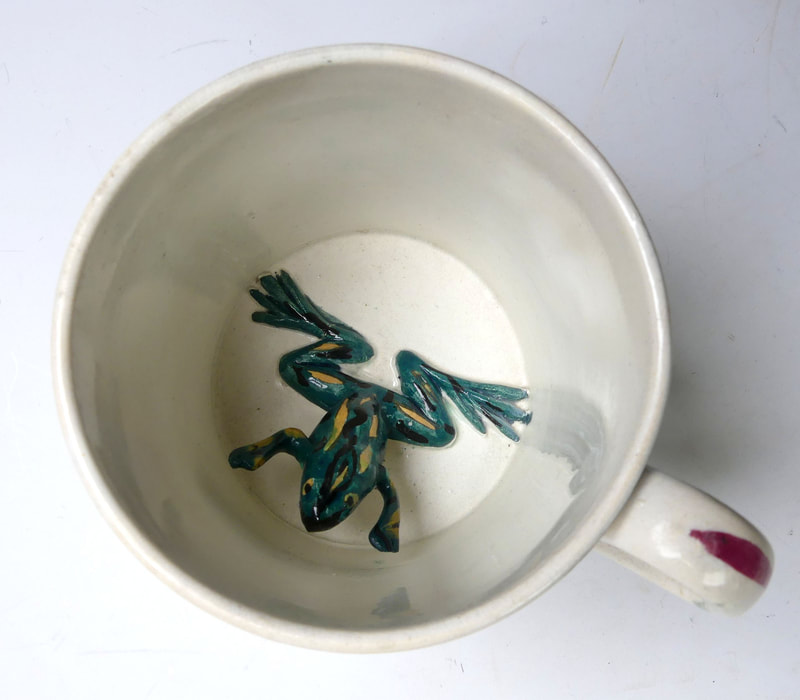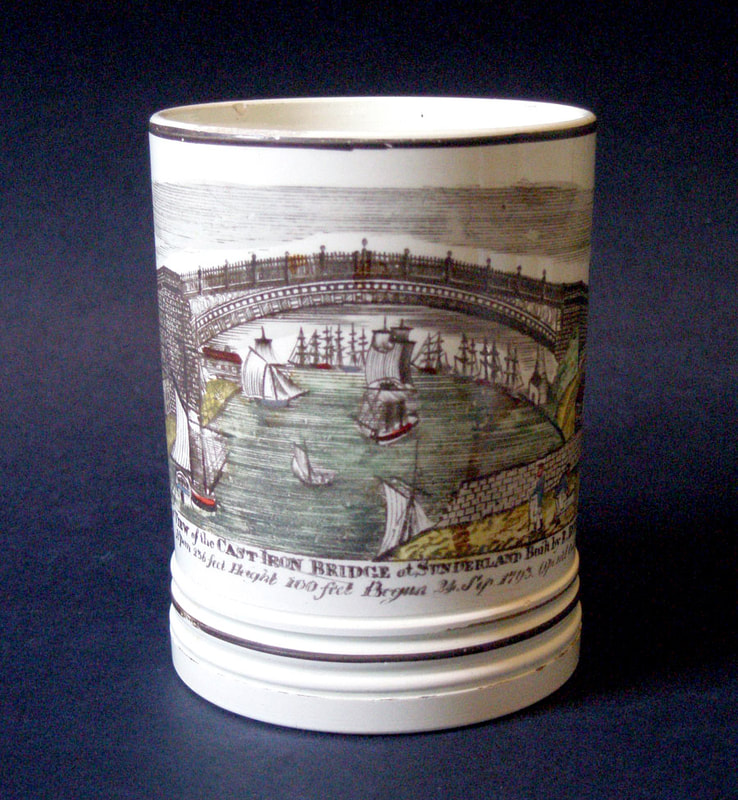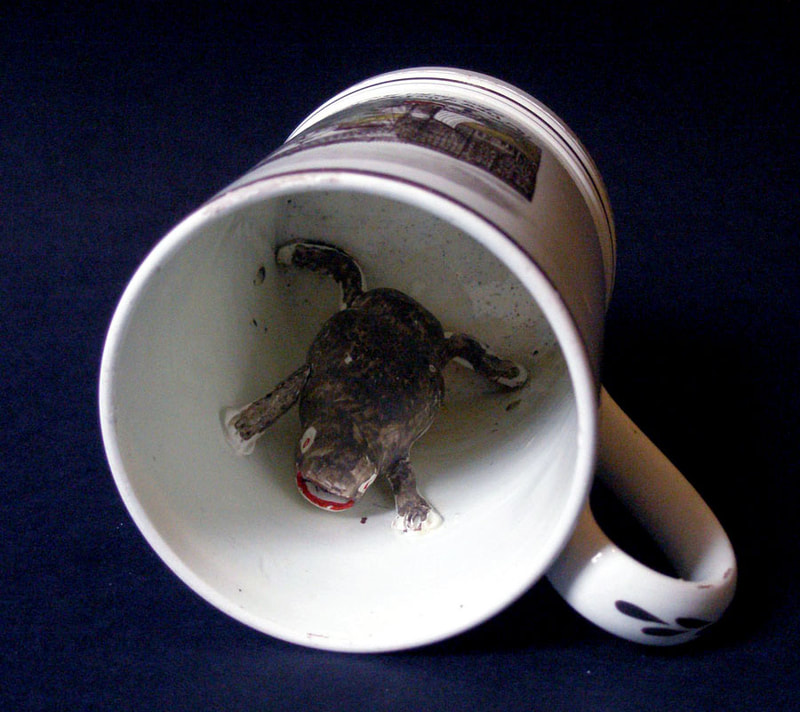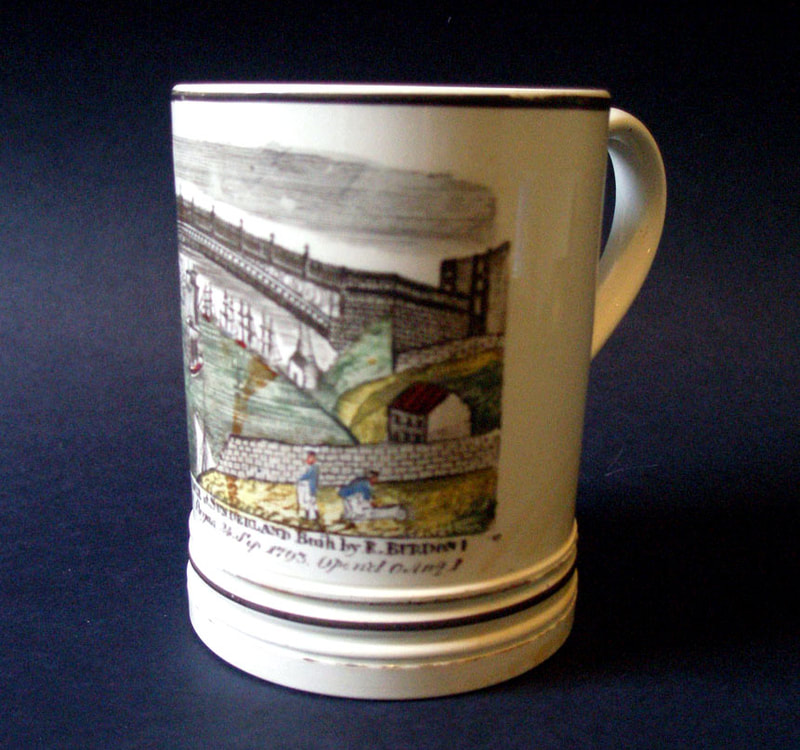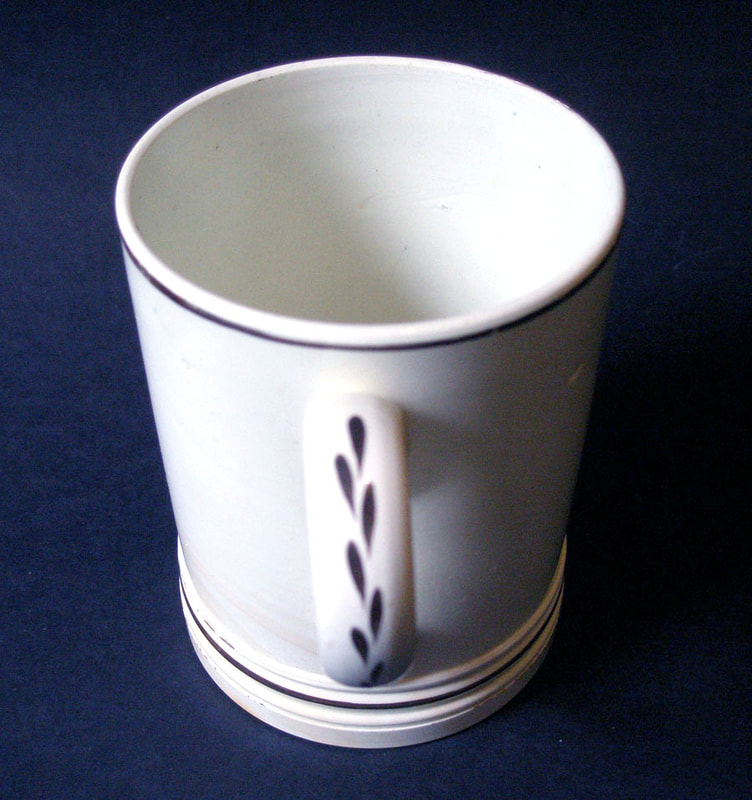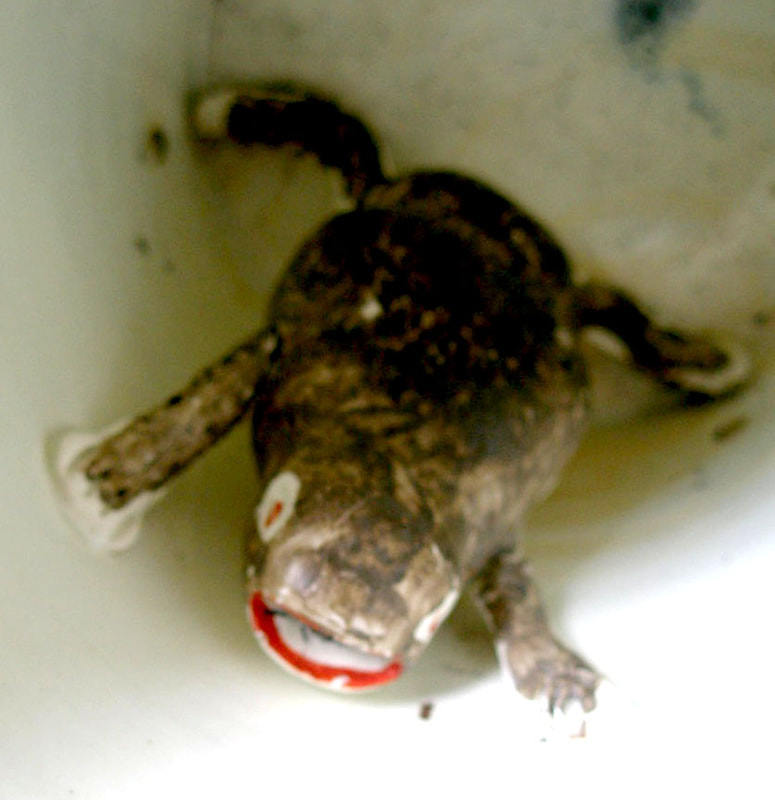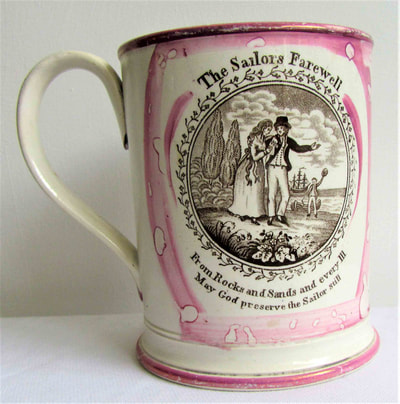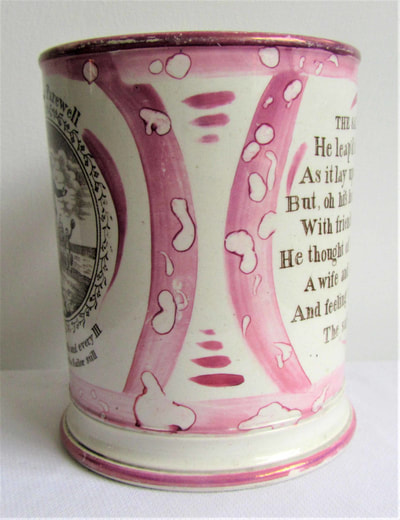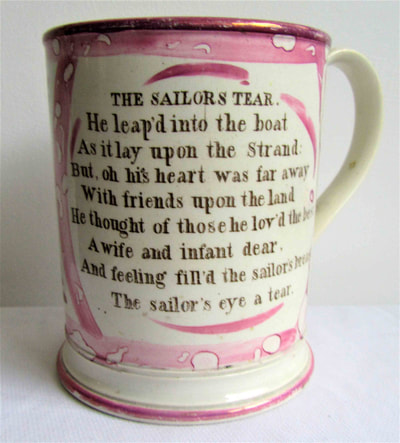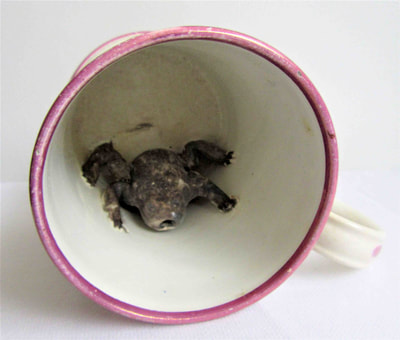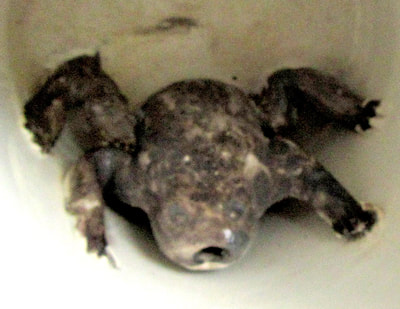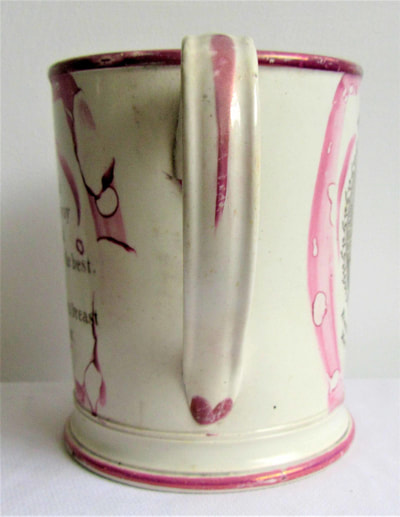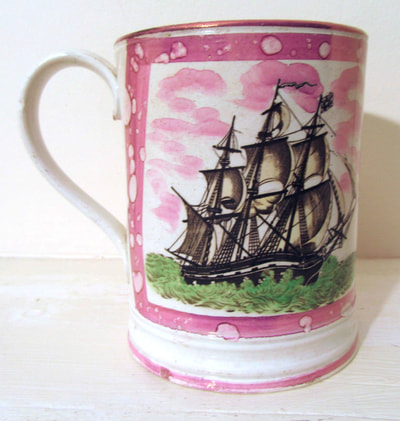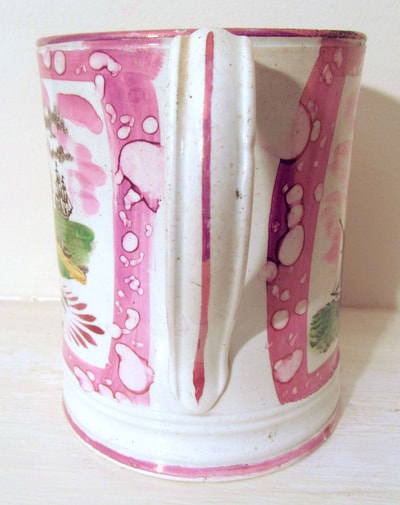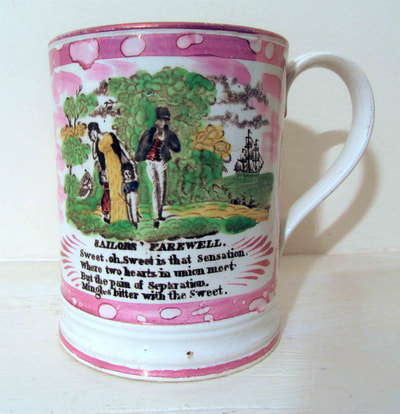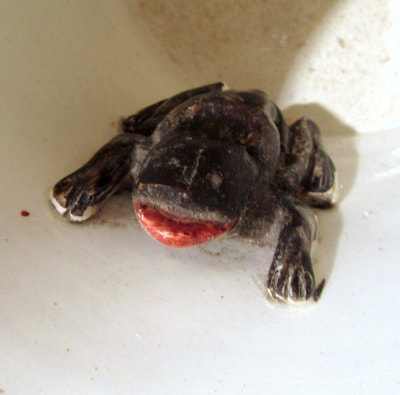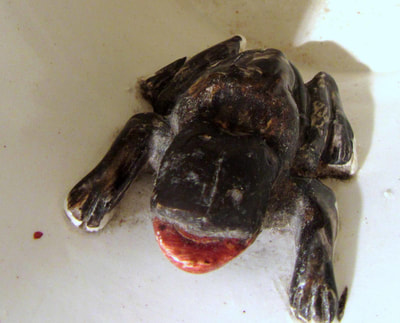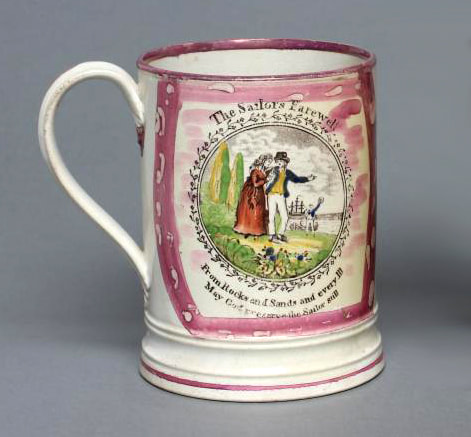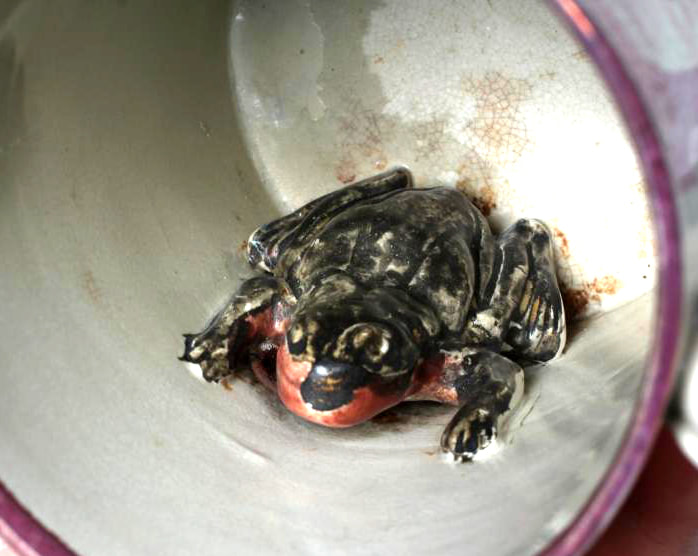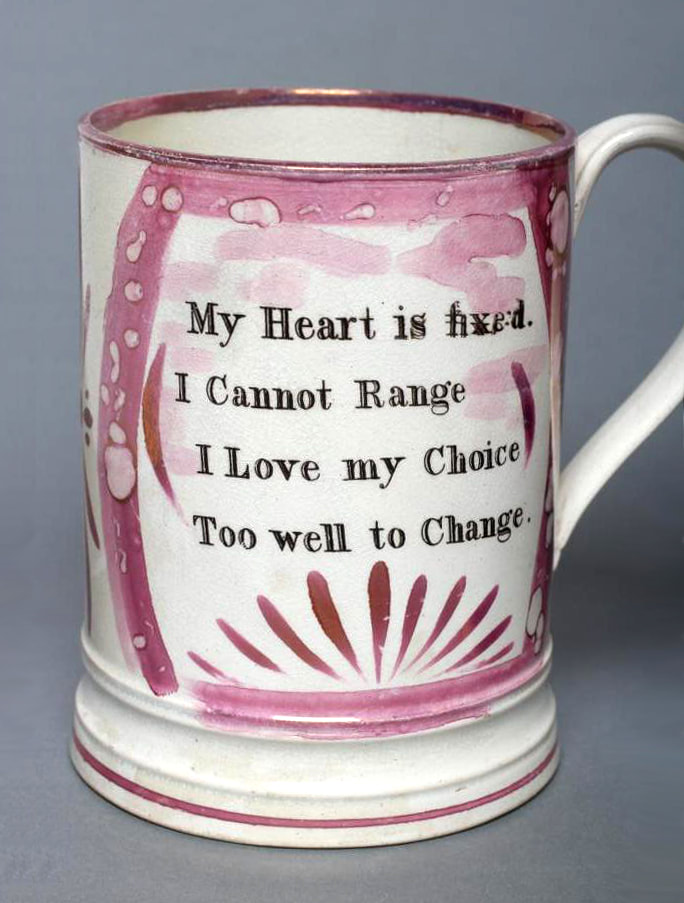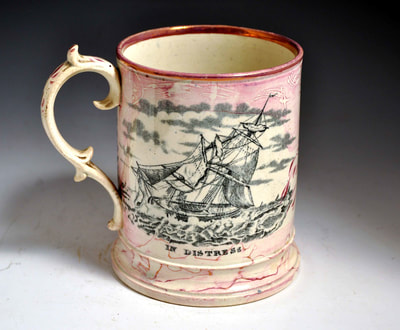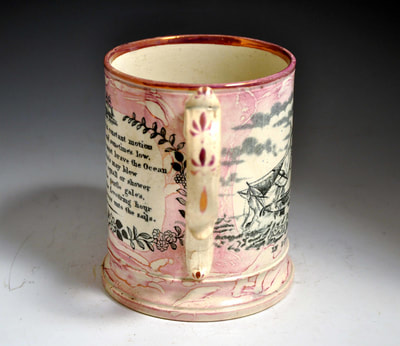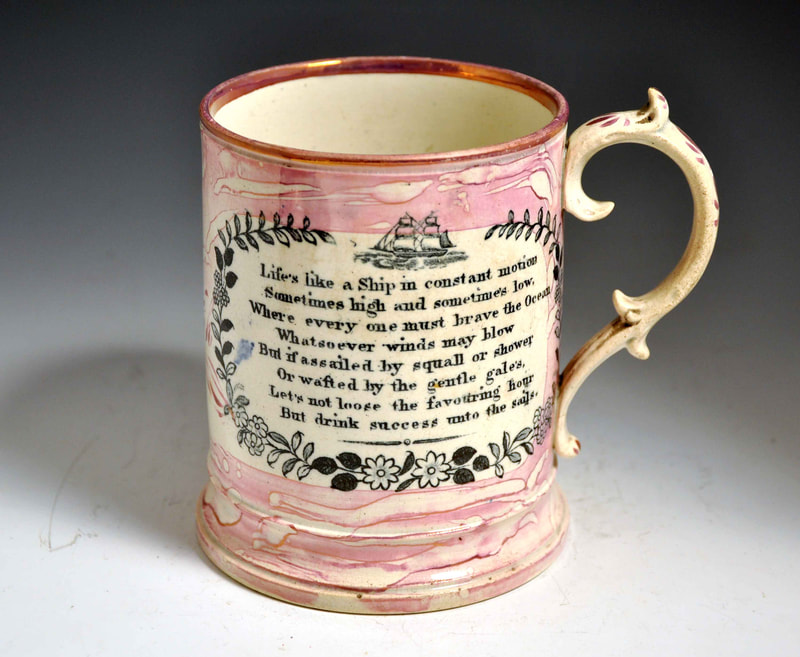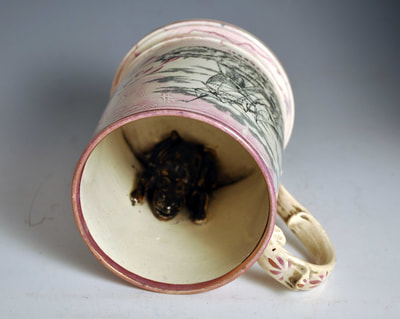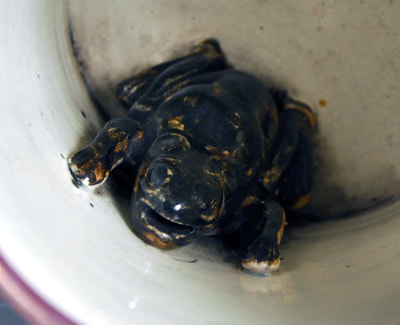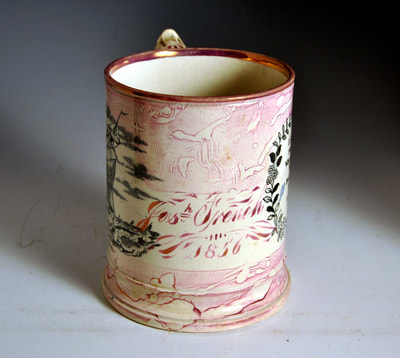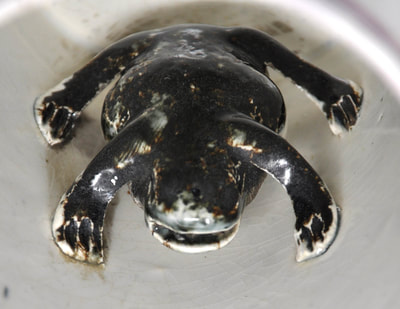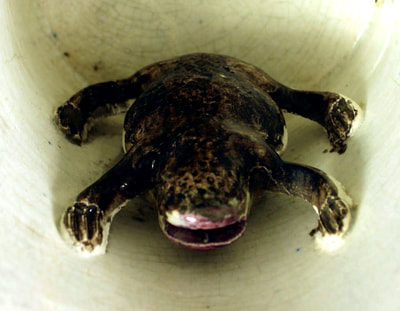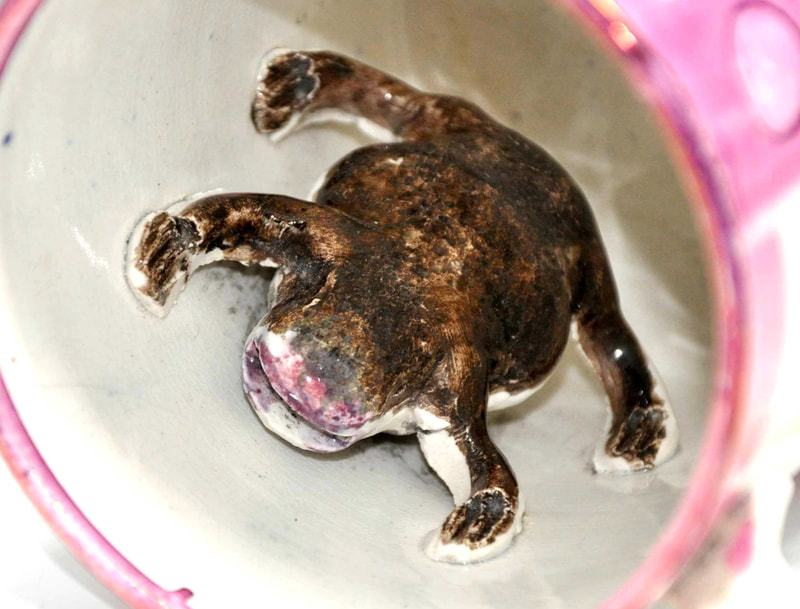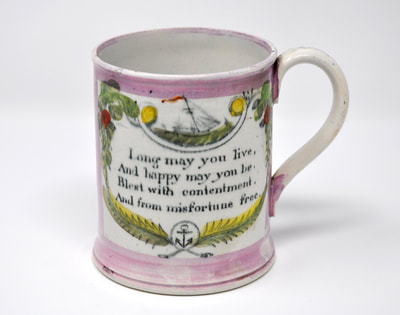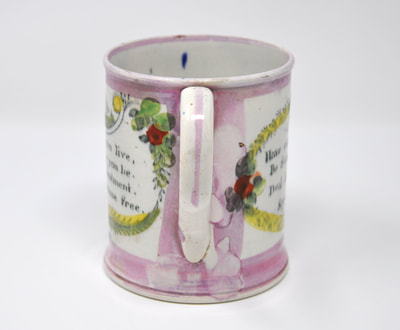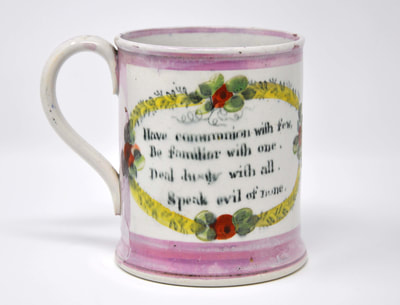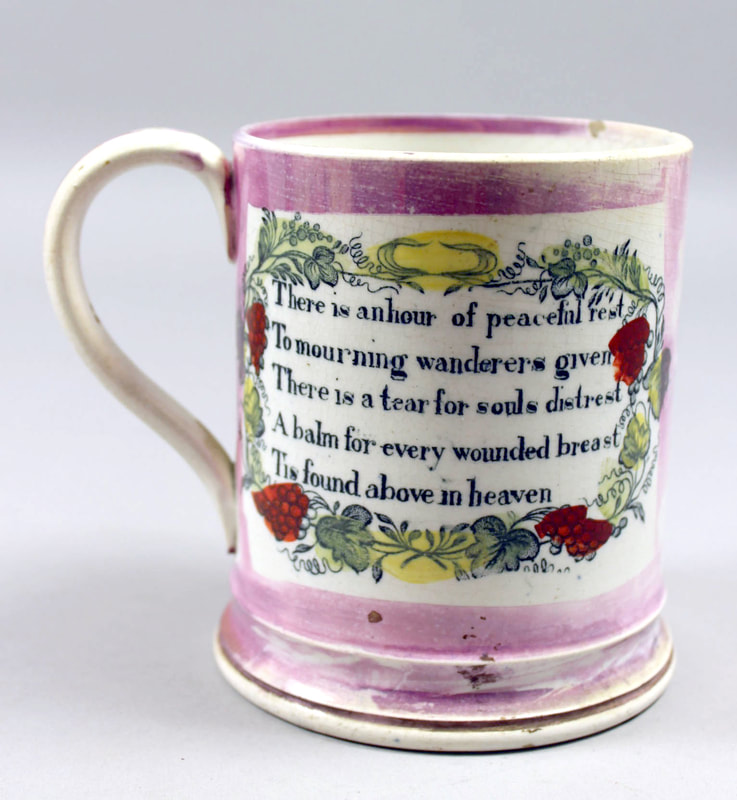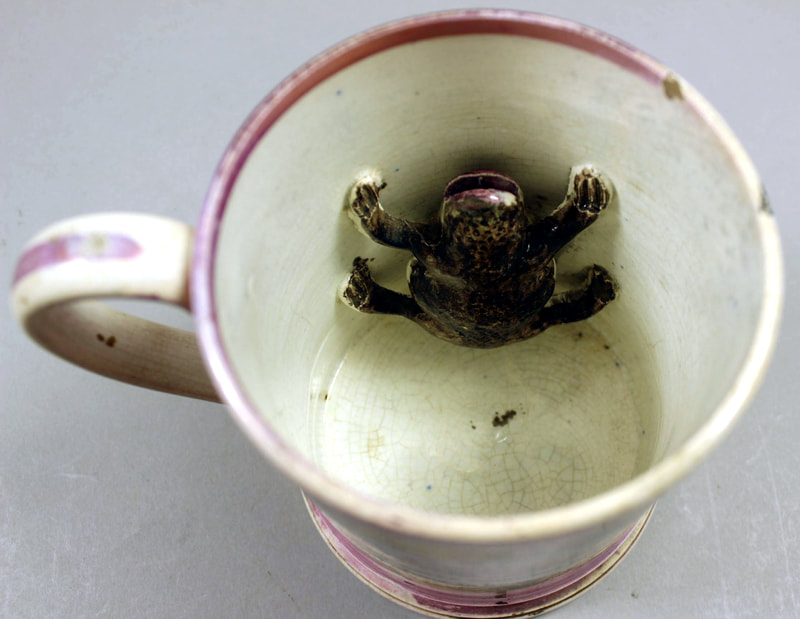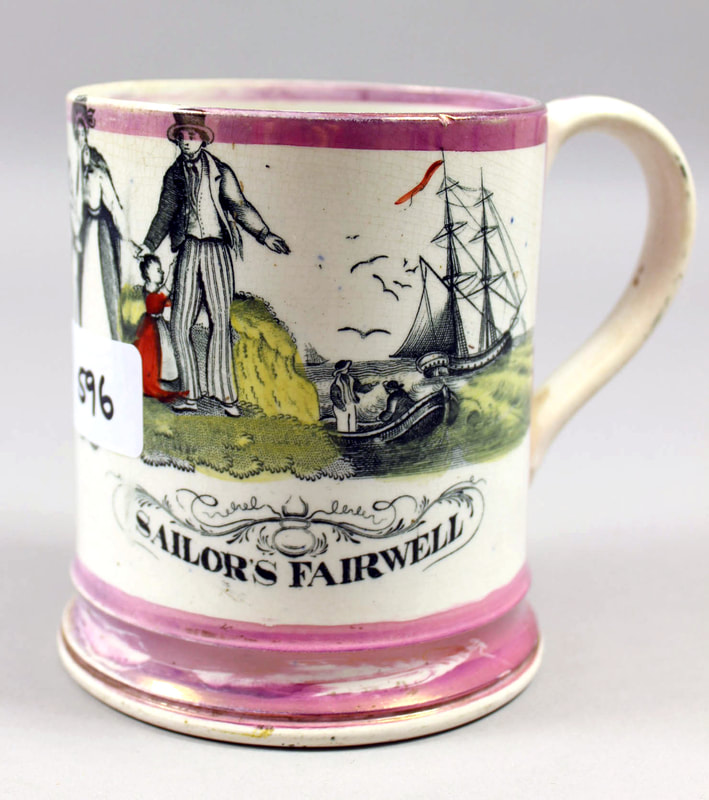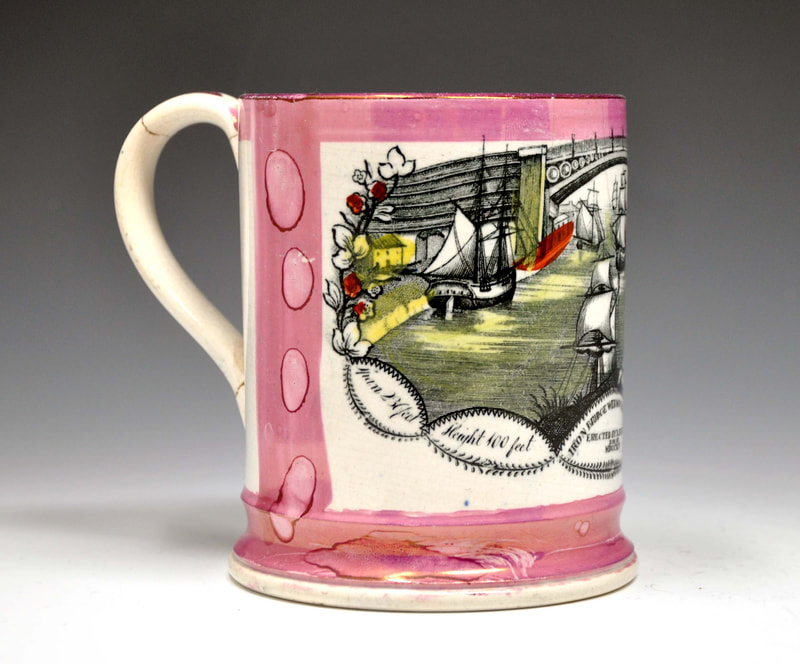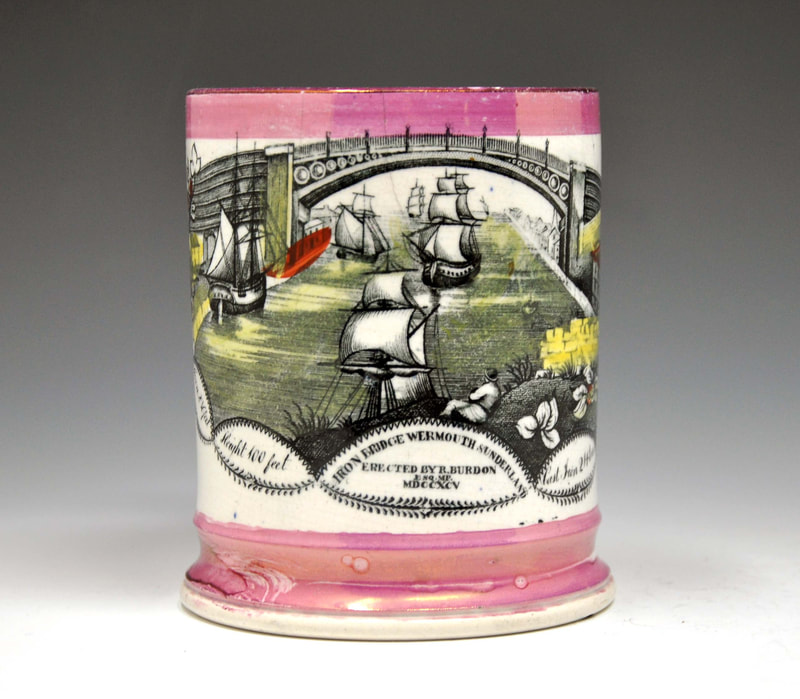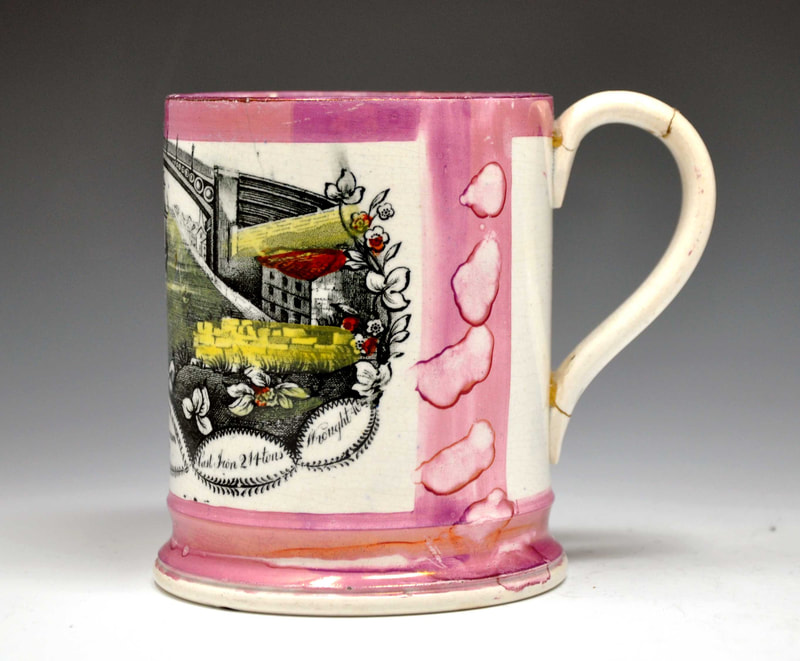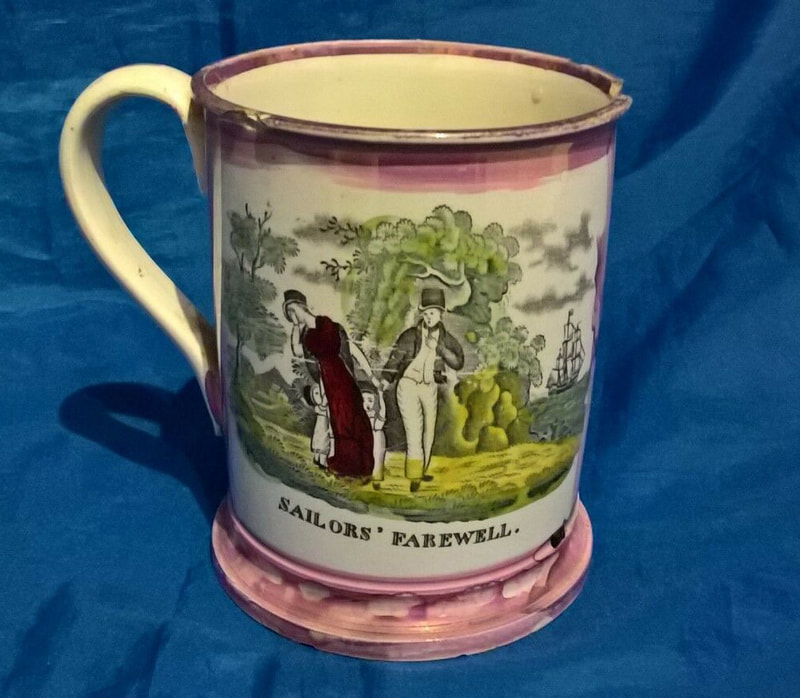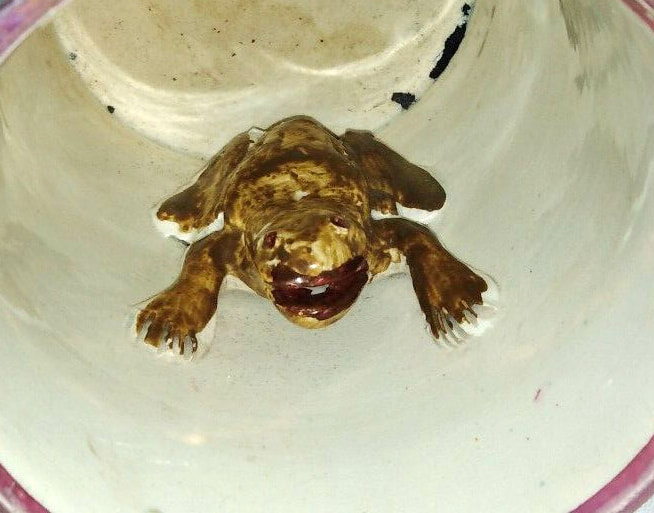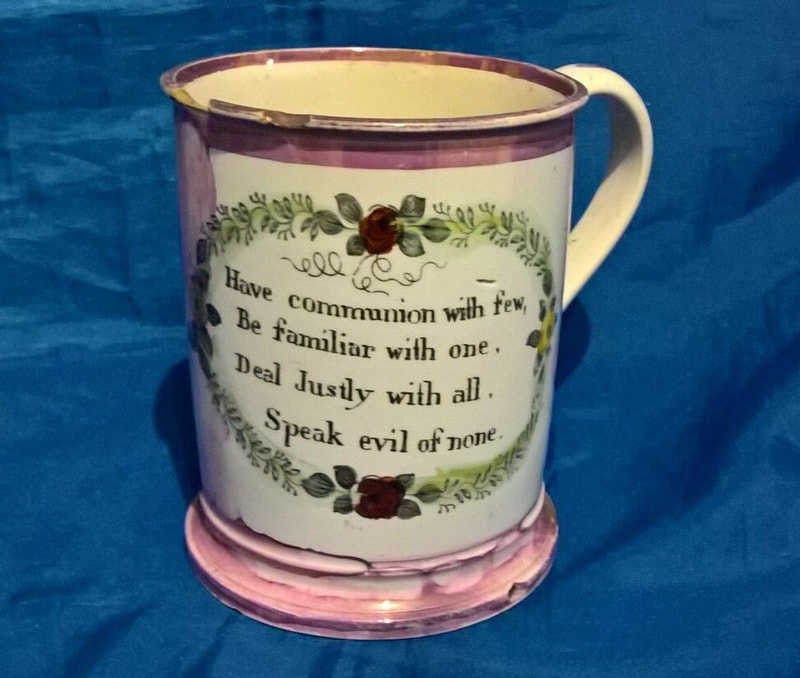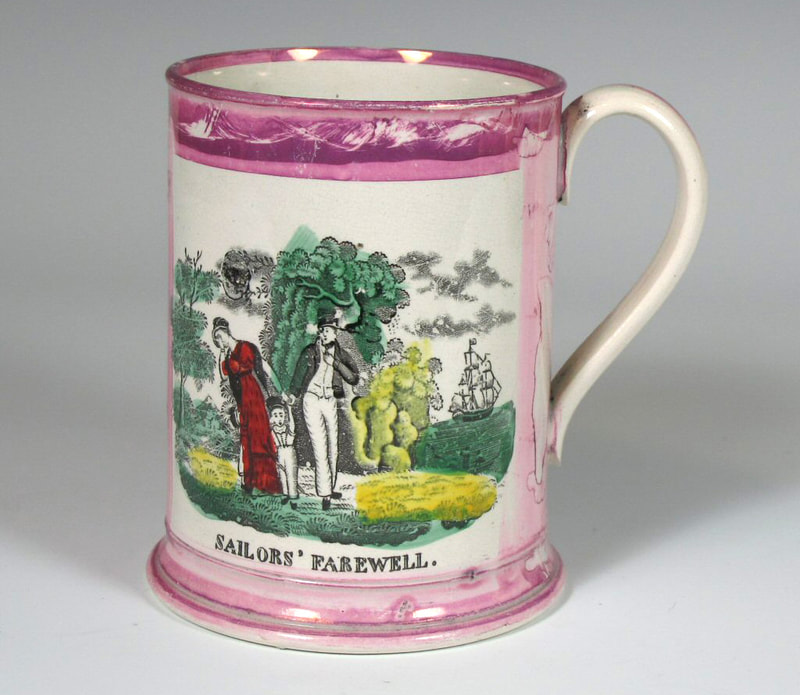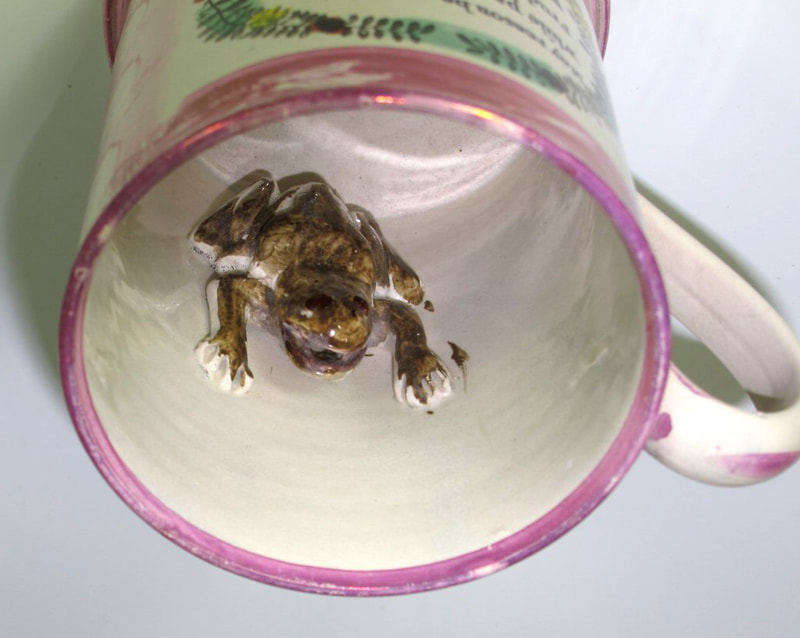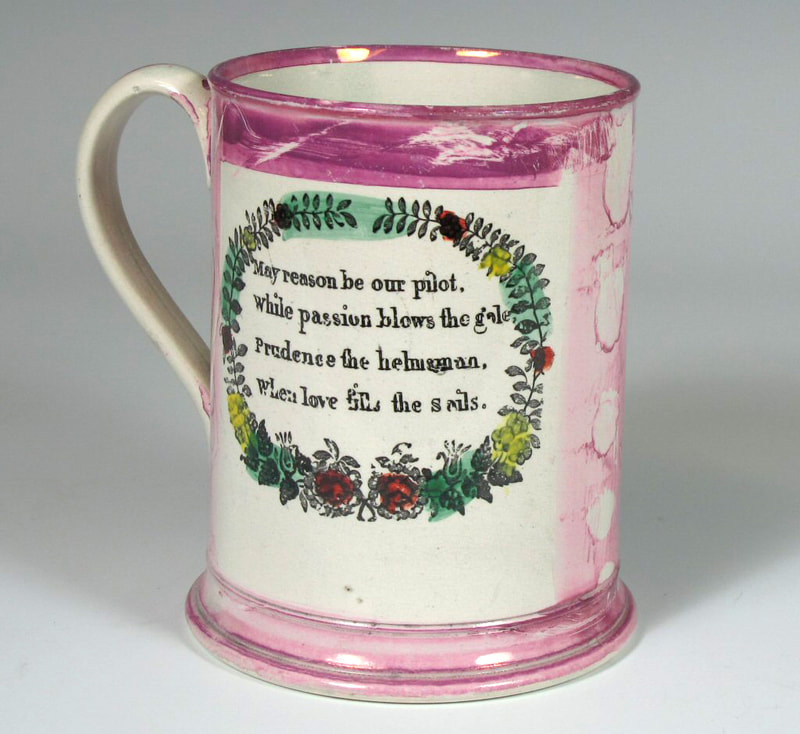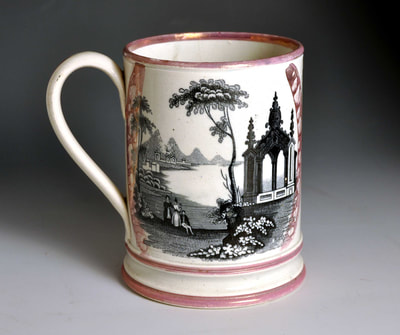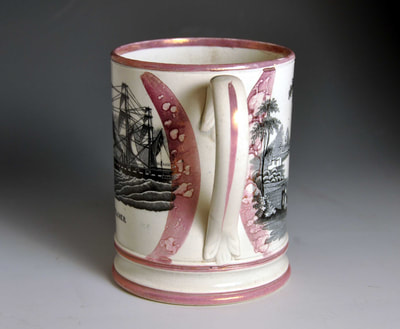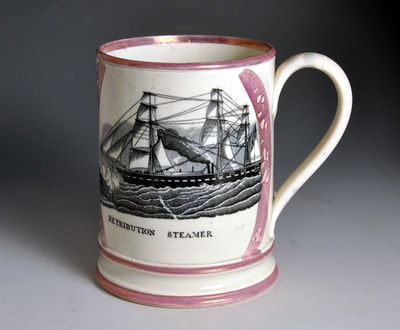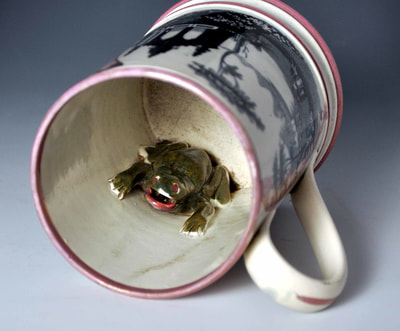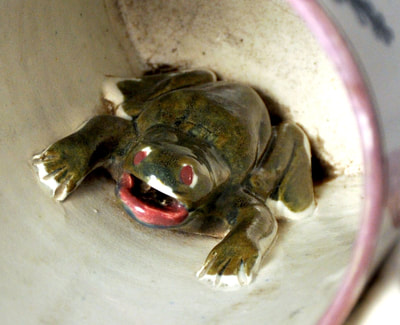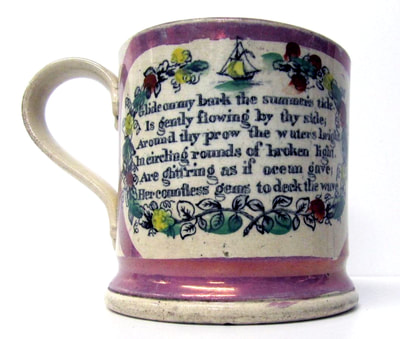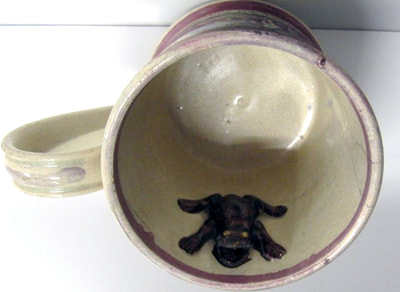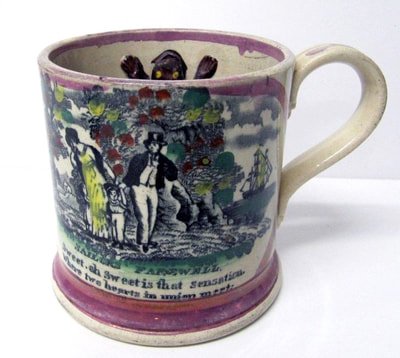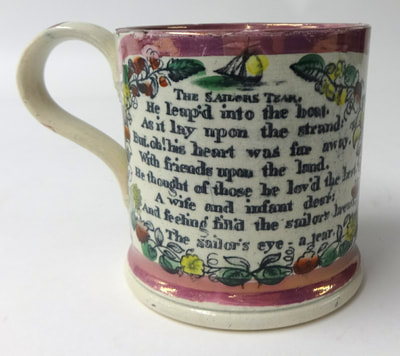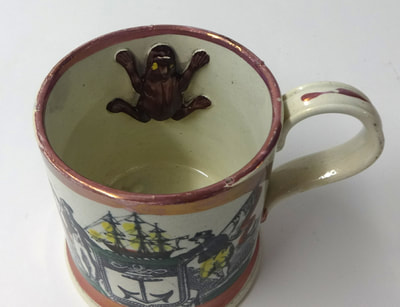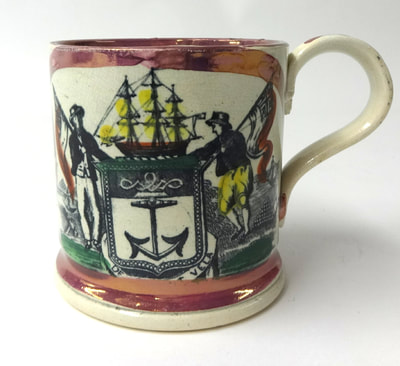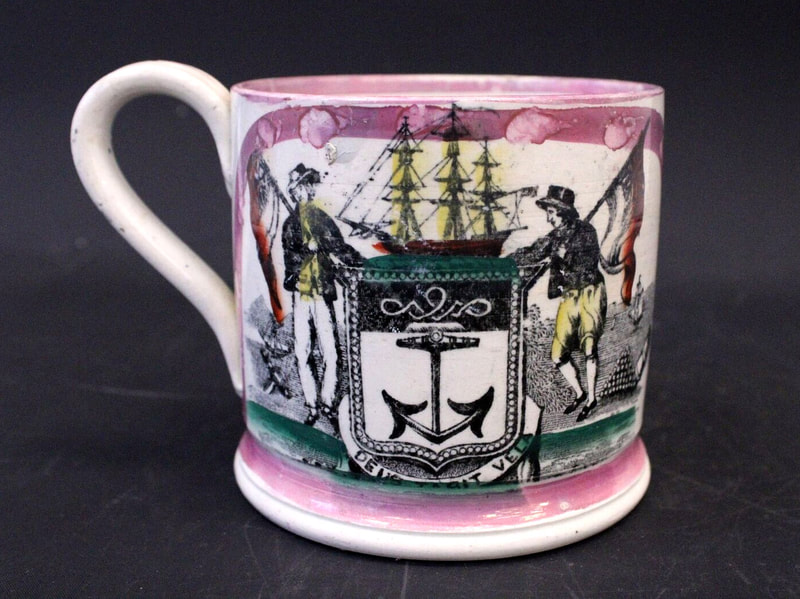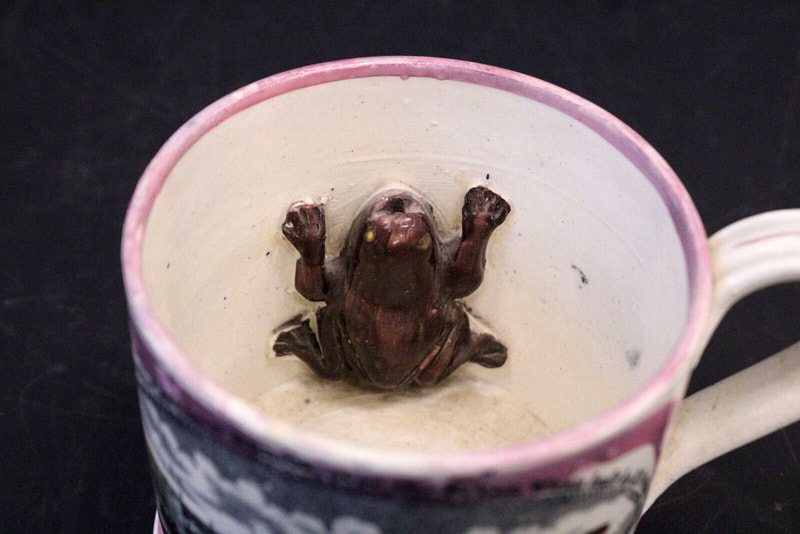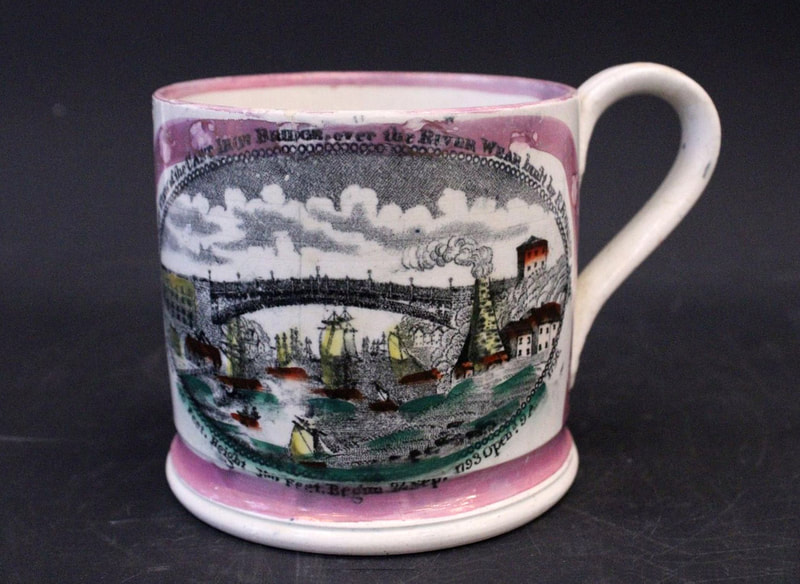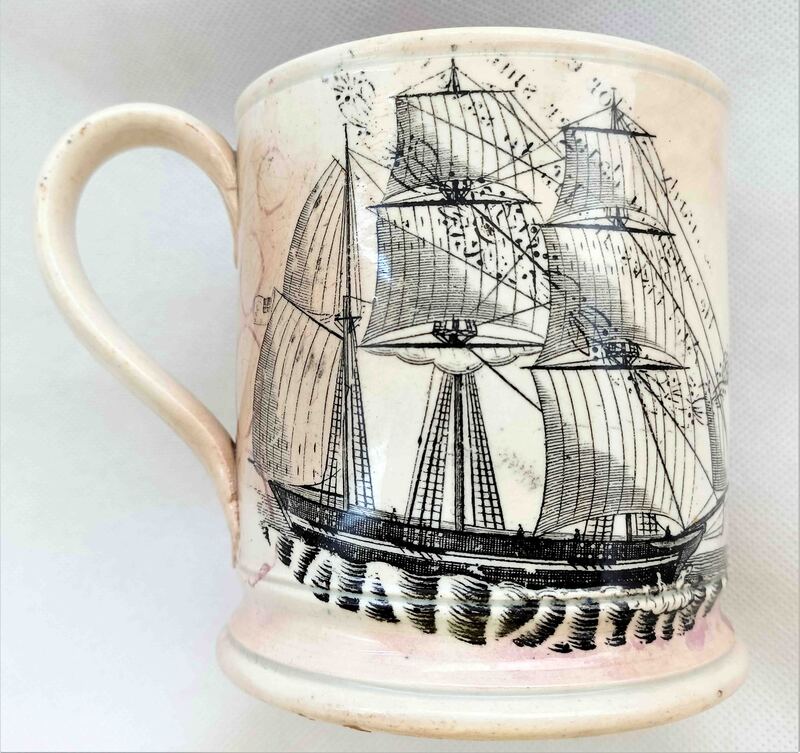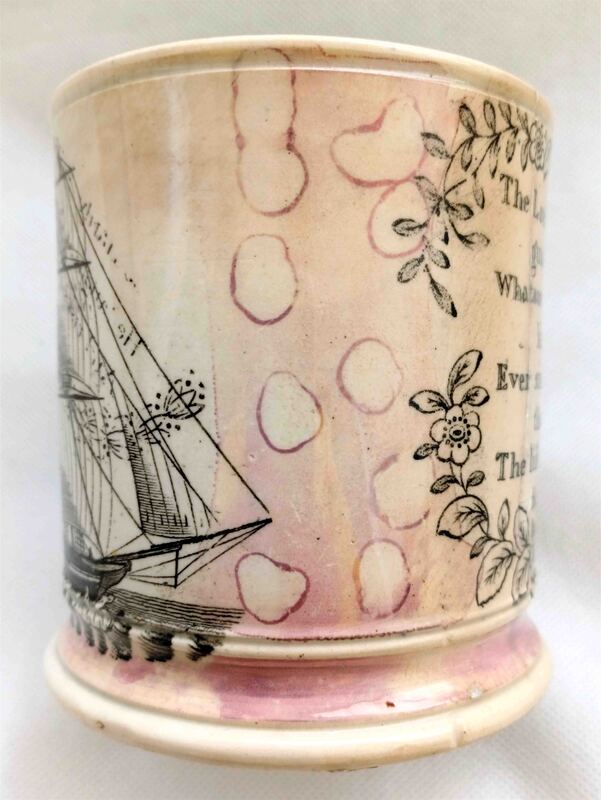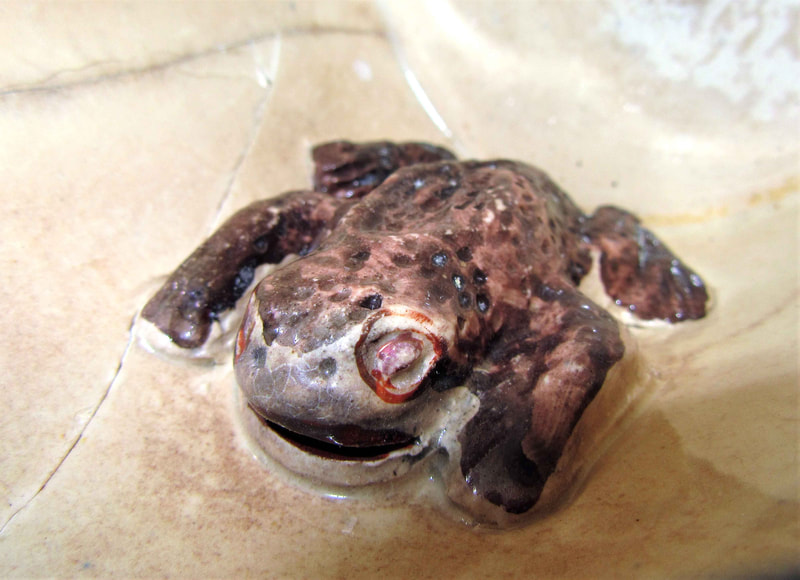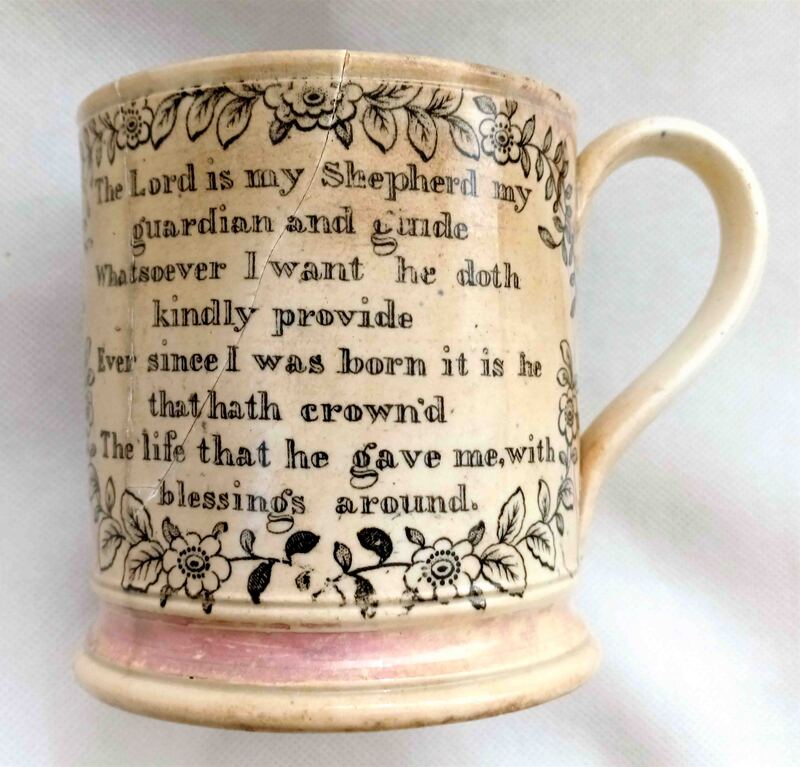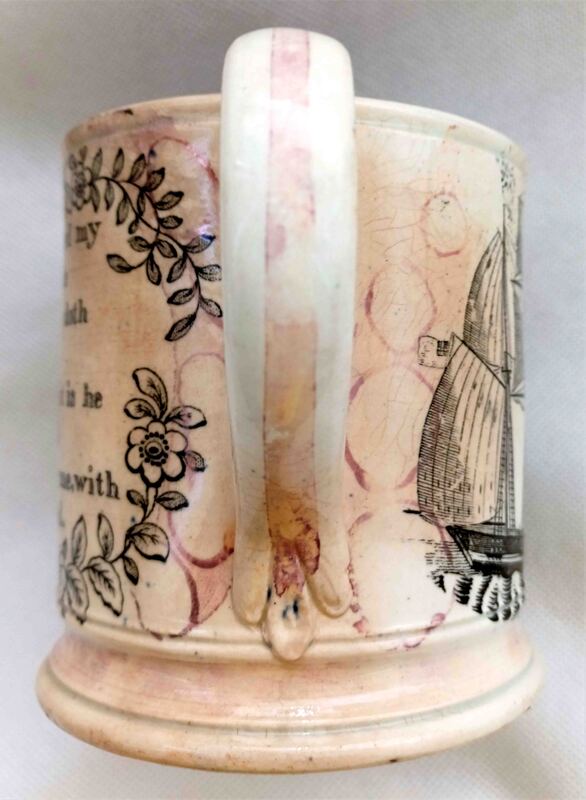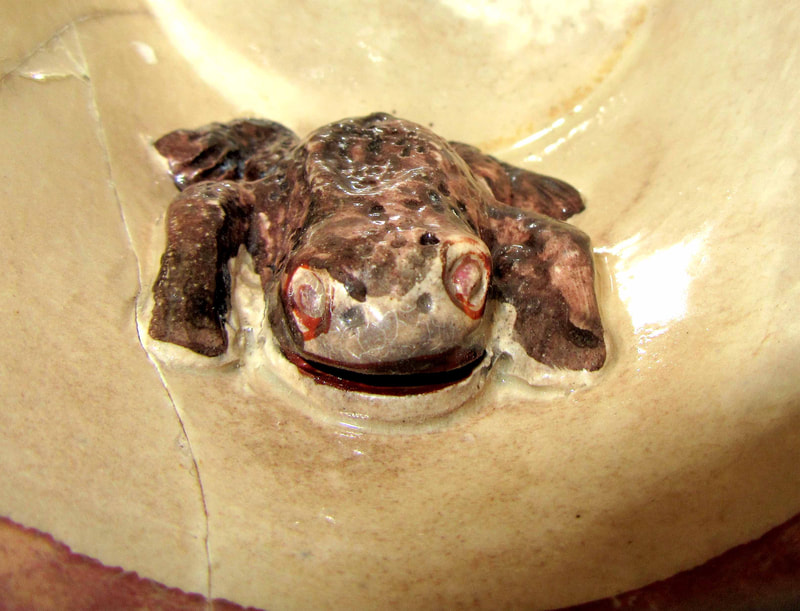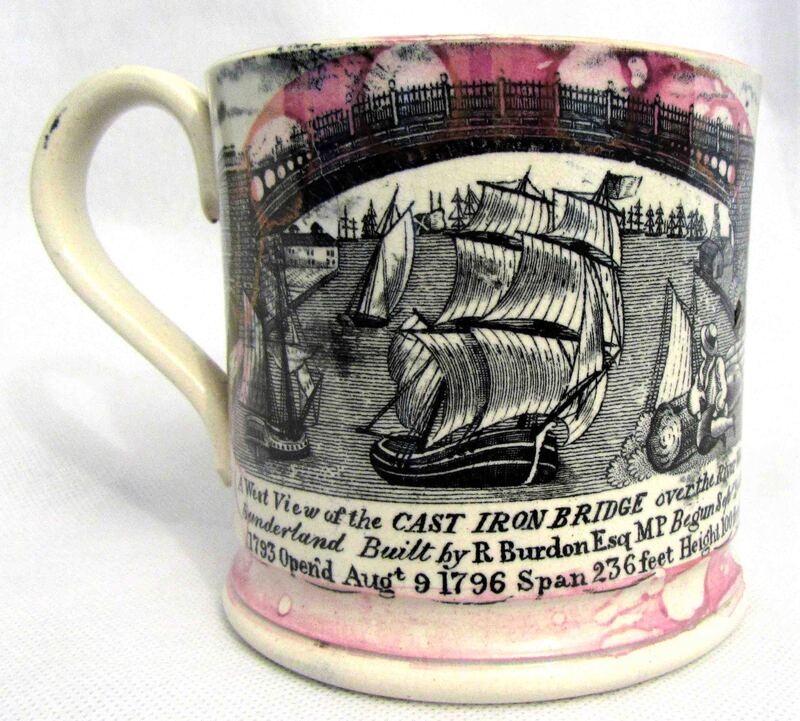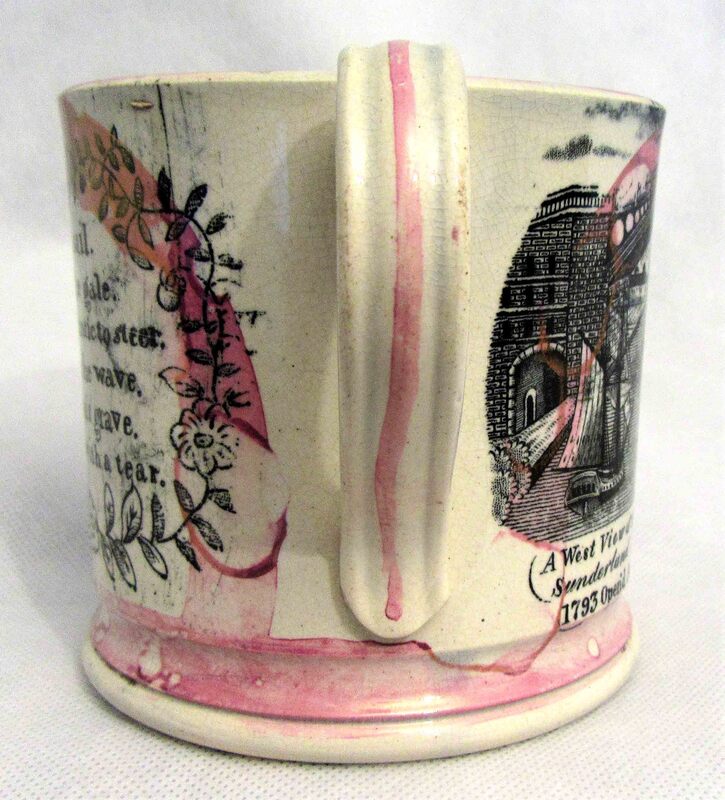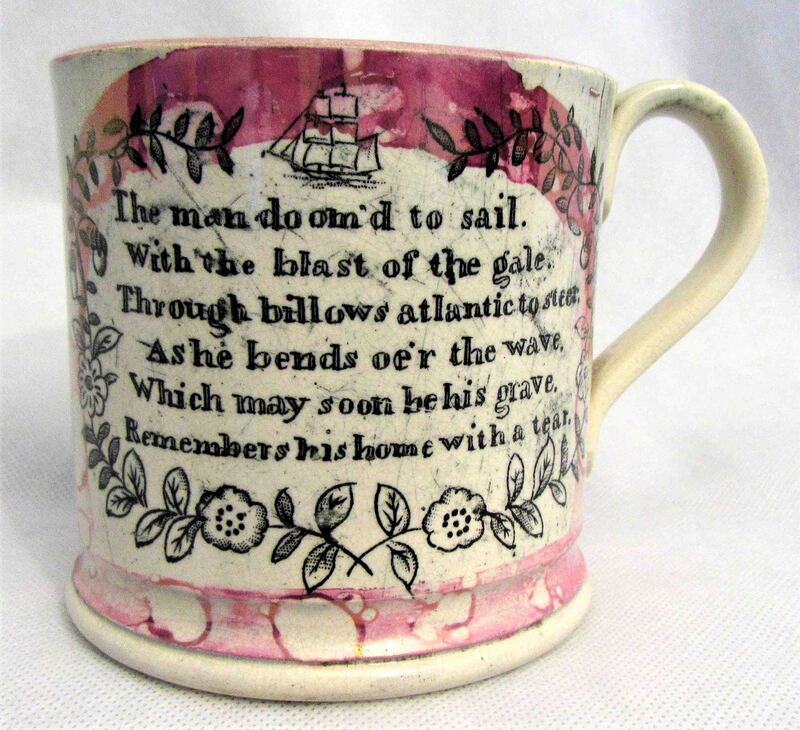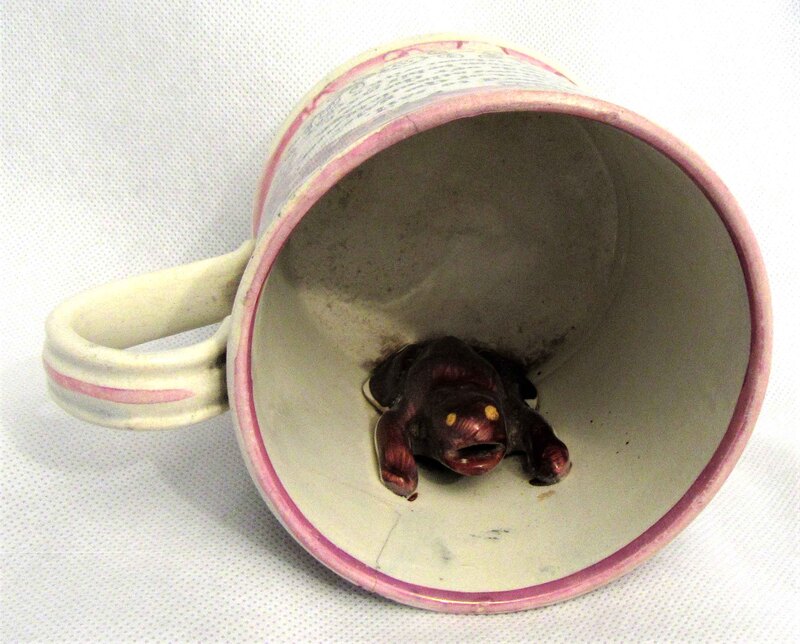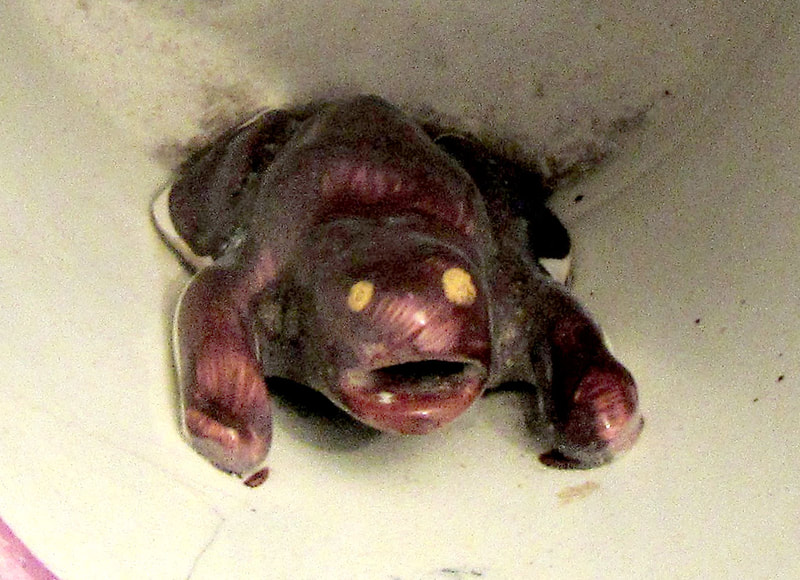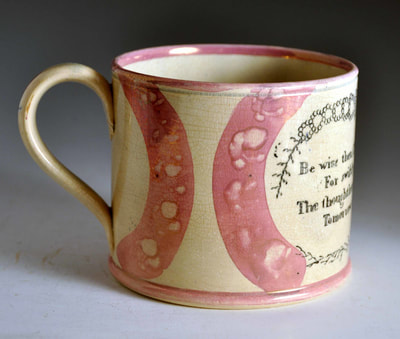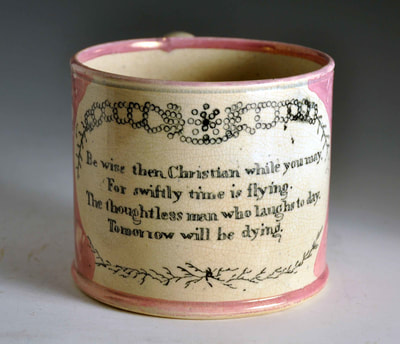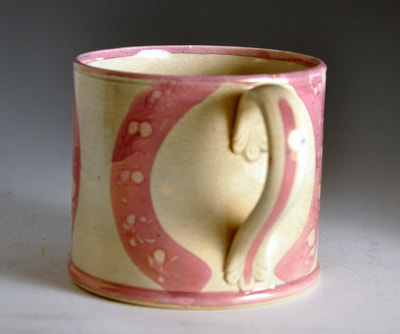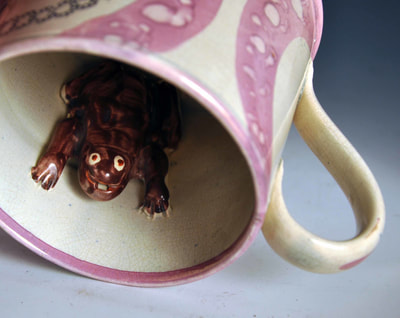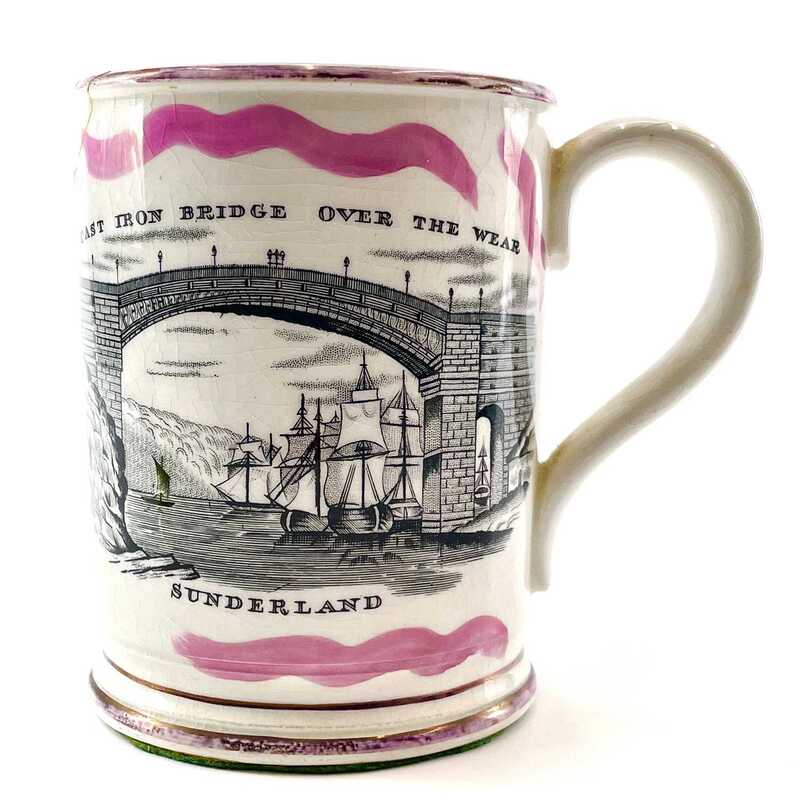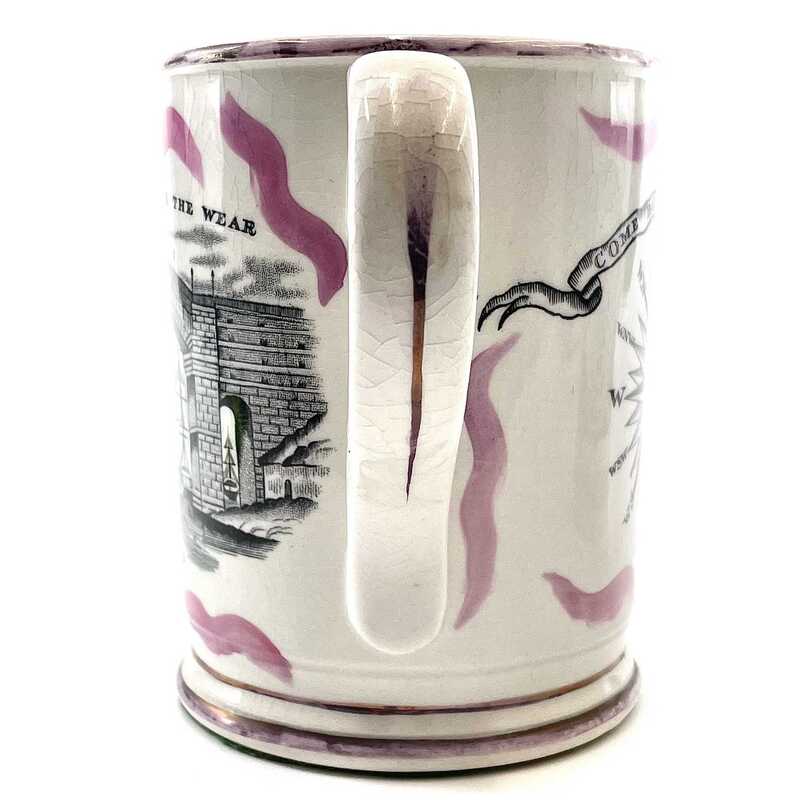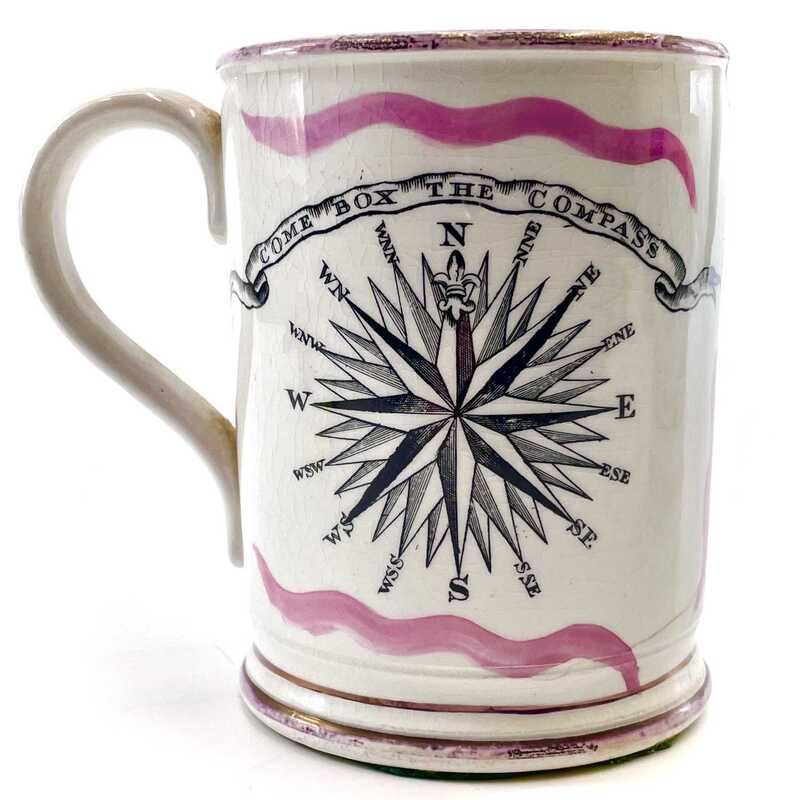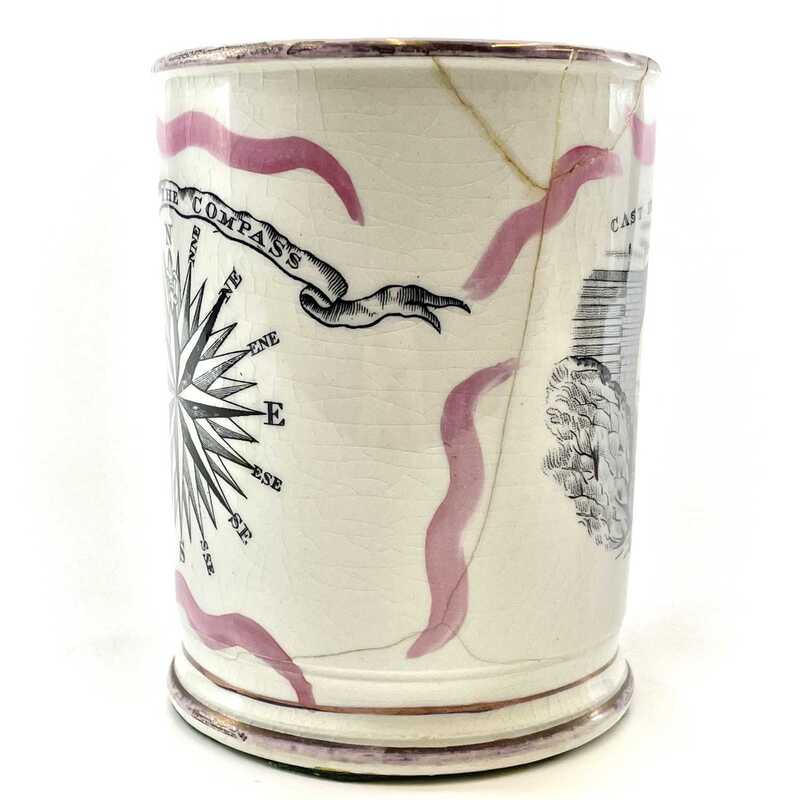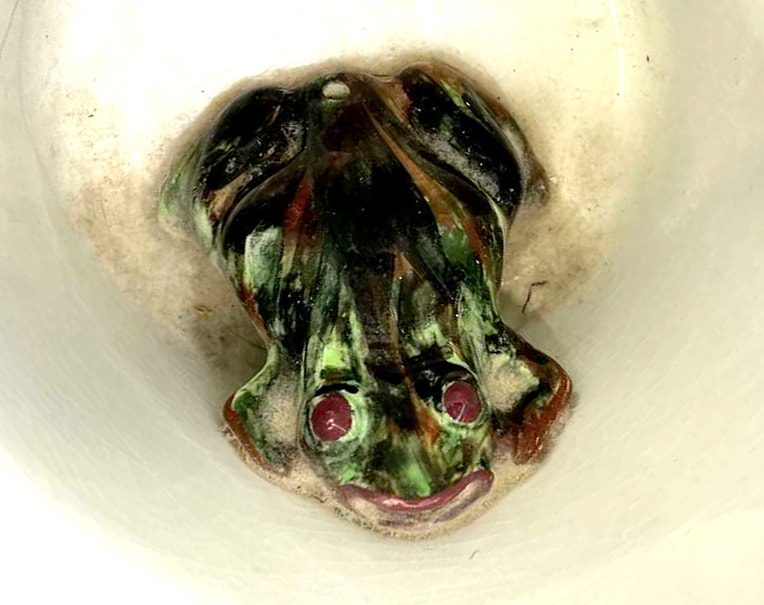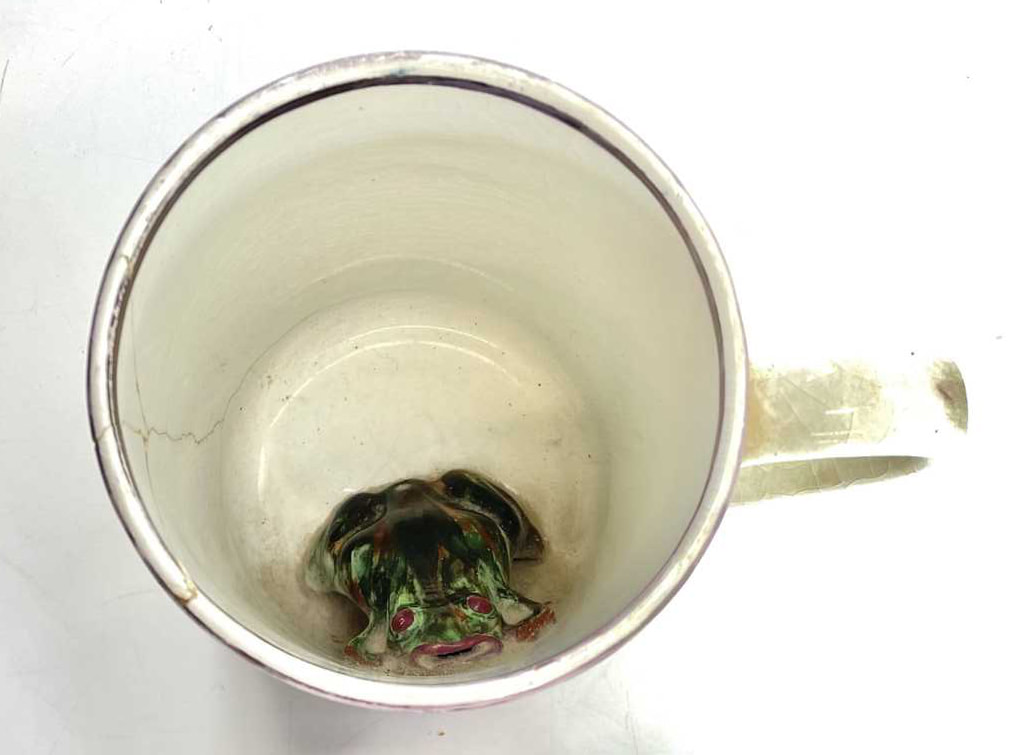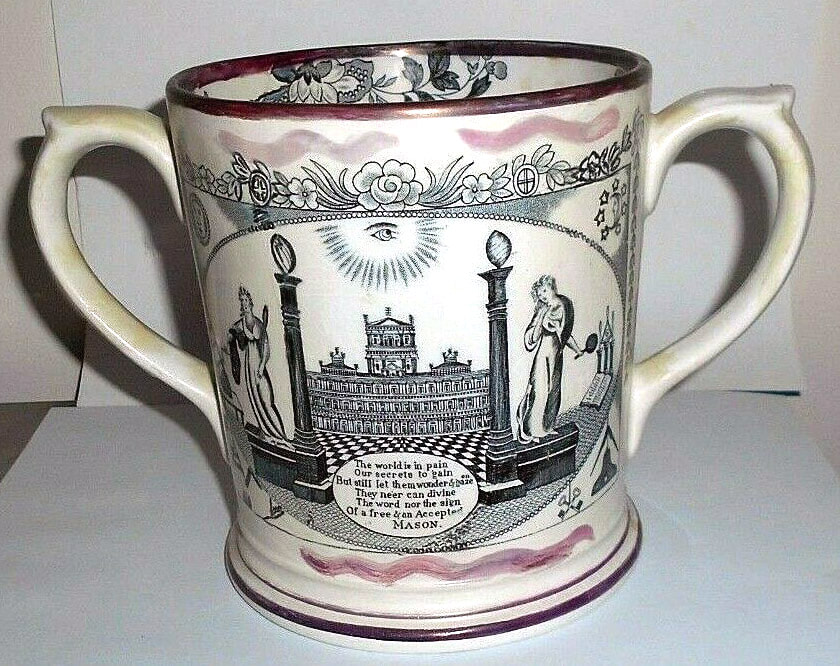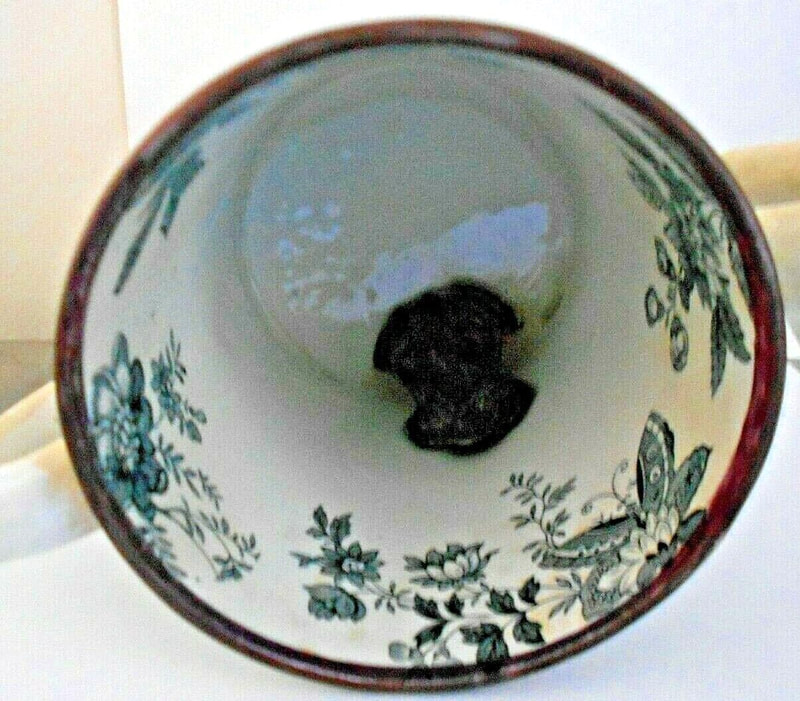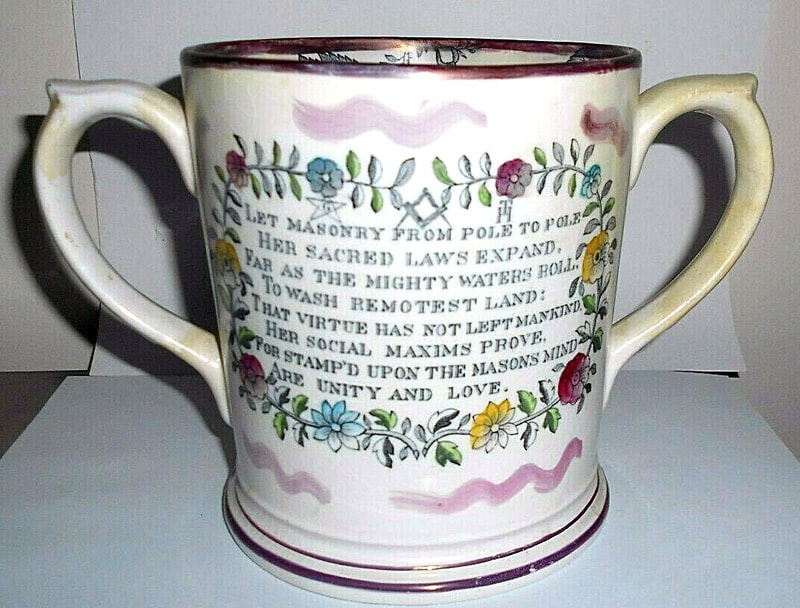Frogs – Sunderland
Sunderland Pottery, J Phillips & Co, before 1818 – frog 1
The earliest identifiable Sunderland Pottery frog I've found has blue eyes, and comes from a mug with Phillips & Co printed marks. The mug below doesn't have a printed mark, but is likely pre-1820. Its frog has more typical red eyes. NB the Sunderland Pottery used transfers with Phillips printed mark into the 1830s, so long after John Phillip's death in 1820 (see below).
Sunderland Pottery, Dixon, Austin & Co 1818–1839 – frog 1
Creamware items from the 1820s also appear with this frog. The frogs above are from the items below, respectively.
The very large mug below, despite the J Phillips mark, is likely from the 1830s.
The large mug above has a larger frog. The photos below show the relative size.
Attributed to Garrison Pottery, Dixon, 1840s – frog 2
A similar mug with the Bridge Over the River Wear transfer.
Attributed to Garrison Pottery, Dixon, c1855 – frog 3
A Garrison chamber pot with Crimean transfers, c1855, with a large-sized frog, similar to the one above.
The same large frog, painted brown, on a chamber pot with distinctive Dixon lustre decoration.
Attributed to Garrison Pottery, Dixon, 1850s – frog 4
Attributed to Low Ford Pottery
The frog inside a mug with printed marks for 'DAWSON & CO' and 'LOW FORD'. This mug is likely c1820, but the frog mould appears to have been used into the 1850s.
See the Mariner's Compass (ships 2) page for details of how the transfer below link to Dawson's.
The frogs above, come from the mugs below, respectively.
A Dawson-attributed mug with a moulded handle and profuse lustre decoration, similar to that found on some earlier Seaham items, has a similar small compacted frog.
Attributed to Newbottle High Pottery, 1840s
A large hollow frog with a dimpled surface and feet drawn in with sgraffito marks.
Below, a pink lustre frog inside a chamber pot with the 'May Peace and Plenty' transfer attributed to Newbottle. The transfer of the figure in his nightshirt inside the potty is similar to those more commonly found in Dixon's Garrison Pottery items. The frog is of a similar form to that above.
This potty has the same version of the figure in the nightshirt as that above, and is attributed to Newbottle on that basis. This time, the frog is painted brown and has been given painted eyes.
A mug with a more compact version of the Newbottle frog, with its legs tucked in.
Attributed to Seaham Pottery, 1840s – frog 1
See the Mariner's Compass (flags) page for details of how these items relate to Seaham.
The frogs above are from the items below, respectively.
A 'Pensioner's Yarn' frog mug. The frog is similar to those above, but without the touches of red enamel.
Attributed to Seaham Pottery, 1840s – frog 2
A smaller, more finely moulded frog, also attributed to Seaham.
Southwick Union Pottery – John Brunton, 1800s
Two mugs from the Sunderland Museum & Winter Gardens, Tyne & Wear Archives & Museums collection with 'Union Pottery' printed marks. I'm hopeful that this hippo-faced frog might help identify other early Southwick Union or Wear Pottery items.
Wear Pottery – Samuel Moore & Co, Southwick, 1830s – frog 1
The mug below with a dated inscription, 1837.
Wear Pottery – Moore & Co, Southwick, 1840s – frog 2
Moore's frogs have a broad grin, and orange enamelled eyes and mouths.
The frogs above are from the items below, respectively.
Anthony Scott & Co, 1799–1829 – frog 1
The first frog relates to the first mug below, and the centre and right images to the second mug, with the inscription Thomas Thompson. See here for a link between this frog and a 'SCOTT Southwick' printed mark.
A very similar frog in a mug commemorating the Battle of the Nile (c1798). Dawson also produced a variation of this transfer.
A rare creamware mug with HMS Victory and a brown-spotted Scott-type frog.
A knot of Scott -attributed frogs, on a variety of creamware mugs, including one with the archetypal 'malt & venom' verse.
Scott & Sons, Southwick, c1830–40 – frog 2
This mug is attributed to Scott on the basis that the bridge transfer appears on jugs with Scott printed marks (see West View B27). The frog appears to be a copy of the Dixon frog 1 above. More usually, Scott mugs from this period, like the three examples below, do not have frogs.
A frog mug with typical Scott flower decoration c1840. The frog appears to be from the same mould as the one above. Note that the red eyes appear to be copied from those found on the early Dixon items at the top of this page.
Attributed to Scott & Sons, Southwick, c1830 – frog 3
This mug is attributed to Scott on the basis that the bridge transfer appears on a jug with a Scott printed mark (see West View B24, B27). The frog rests on very distinctive front legs.
Attributed to Scott & Sons, Southwick, c1830 – frog 4
This mug is attributed to Scott on the basis of the similarity of decoration to firmly attributed tankard above. The frog is similar to frog 3 above, except that its front legs are more widely spaced. NB Dixon also had a variation of this transfer showing an inn keeper serving 'good ale' to huntsmen. Below, a similar frog on a Scott & Sons-attributed masonic mug.
Attributed to Scott & Sons, Southwick, c1830 – frog 5
Again, although this frog mug is unmarked, it is attributed to Scott's on the basis of the strong similarities of decoration.
Although the mug below has no frog, it helps us to tie some of the decorative elements of this group together. The lustre decoration around the transfer, and on the handle in particular.
Scott & Sons, Southwick, 1830s – frog 6
Scott's frog from the 1830s has long back legs, bent back on themselves.
Scott & Sons, Southwick, 1830s – frog 7
Scott's frog 7 is similar to Moore's, but often painted black with pink lips and eyes. See more examples from the later partnership below.
Scott Brothers & Co, Southwick, 1840–50s – frog 7
The frogs above are from the items below, respectively. The first has an obliterated Scott & Sons mark. The mark was likely hatched out when the Scott Brothers & Co partnership began in 1841. The third mug has a Crimea transfer c1850.
This very rare Scott-impressed plate offers an opportunity to view a Scott frog in the round. It is likely later than the items above.
A yellow and black frog very similar to the one above on a typical Scott chamber pot.
Anthony Scott, Southwick Pottery, c1870 – frog 8
Frogs from orange lustre items produced after 1870. The third appears to be from a different mould. NB it is a moot point whether items with these transfers were decorated at Scott's of Moore's. Records in the Sunderland Museum show that Scott's sent 'blank' pottery items to Moore's for decoration. These transfers also appear on glass rolling pins; so another theory is that during this late period, both potteries sent items to Sheepfold's warehouse for decoration (NB Sheepfolds are known to have decorated rolling pins).
The frogs above are from the items below, respectively.
This frog is similar to the last above, but has been left undecorated.
Ball's Deptford Pottery c1890 – frog 1
An orange lustre chamber pot with a brown frog, very similar to those attributed to Anthony Scott above.
Ball's Deptford Pottery c1890 – frog 2
Ball's Deptford Pottery c1890 – frog 3
A frog mug attributed to Ball's with a finely modelled frog decorated in brown and green enamels.
Ball's Deptford Pottery, c1900 – frog 4
The transfers on this mug originated at Scott's and appear to have moved to Ball's after that factory closed in 1897.
Ball's Deptford Pottery, early 20th C – frog 5
Unidentified pottery, likely Ball's Deptford
Frogs – Tyneside
Newcastle Pottery, Addison, Falconer & Co, c1800
This frog mug courtesy of Ian Sharp. He writes: A rare Newcastle Pottery creamware pottery frog mug decorated with an overglaze transfer of a British sailing ship, c.1800. The transfer bears the factory’s name within the waves : “Newcastle Pottery“. The mug was manufactured at the Newcastle Pottery (also known later as the Skinnerburn and Forth Banks’ Pottery) under the partnership of Addison, Falconer & Co ., 1790 – 1834. The mug bears a frog of a typical early shape having elongated “toes”.
A similar frog on a mug commemorating the Battle of Trafalgar (c1805). This mug is unmarked, but attributed to Newcastle on the basis of the frog. The transfer appears to be derived from an earlier one used by Dawson commemorating the Battle of the Nile.
Another example of the frog on a mug with a transfer of the 'Stupendous' cast iron bridge with a printed mark for Newcastle Pottery.
Attributed to Redhead, Wilson & Co, Forth Banks, Newcastle Pottery, 1833–1838
– frog 1
Although unmarked, the red enamel decoration and black stripes are particular to the Newcastle Pottery during the 1830s. The frog has a slightly comical splayed and splattered look. The frogs above from the two mugs below with distinctive red enamels.
The Foresters transfer on the mug below is again particular to the Newcastle Pottery.
The mugs below are tentatively attributed to Newcastle, and have similar scrawny frogs. The first mug below has yellow bands; a decorative feature associated with Newcastle. The decoration of the handle is similar to the first mug above. The frog has lost its forelegs, but is of very similar form to those above. The mug has the words 'Winchester Measure Warranted' moulded in relief around middle. We know that neighbouring St Peter's Pottery made similar mugs (see last image below). These two, in blue and white and impressed 'FELL NEWCASTLE', do not have a frog inside.
This mug below is from the same 'Winchester Measure Warranted' mould as the first mug above. It decorated in Pratt colours and the frog picked out with brown spots.
A hand-painted mug with a very similar frog to the first 'Winchester Warranted' mug above.
Attributed to Redhead, Wilson & Co, Forth Banks, Newcastle Pottery, 1833–1838
– frog 2
This mug has a Foresters' Arms transfer from the same copper plate as the pink-lustre, but a fatter smiling frog.
Northumberland Pottery, North Shields, c1825
This frog mug, again, courtesy of Ian Sharp. He writes: An early creamware frog mug from the Northumberland Pottery, North Shields c.1825. This bridge view is the early engraving used on all of the North Shields’ pottery’s wares. This version was originally described as the “Tyneside School” version of the Bridge view. Frog mugs from this factory and period are incredibly rare.
Thomas Fell, St Peter's Pottery, Newcastle, 1840s – frog 1
Thomas Fell, St Peter's Pottery, Newcastle, 1840s – frog 2
Robert Maling attributed c1830
C T Maling attributed, 1856
This mug is attributed to C T Maling on account of the distinctive lustre decoration and script. It has an inscription with the date 1856.
Attributed to Carr and Patton, Low Lights Pottery, North Shields – frog 1
The frogs above belong to the three mugs below respectively. These transfers are found on jugs with transfers associated with Carr and Patton at North Shields, from the 1840s.
Attributed to Carr and Patton, Low Lights Pottery, North Shields – frog 2
This version of the Sailor's Farewell transfer appears on heavily lustred jugs reliably attributed to North Shields, c1840.
Attributed to John Carr & Sons, Low Lights Pottery, North Shields – frog 1
A very similar frog to the Carr and Patton frog 2 above, c1850.
John Carr & Sons, Low Lights Pottery, North Shields – frog 2
The clobbering (enamel decoration) on the mugs below is typical of late wares from Carr's Low Lights pottery.
John Patton, Phoenix Pottery, Newcastle
This frog with red eyes is reminiscent of those used by Dixon, Austin & Co in the 1820s and 30s. Read more about the Patton attribution here.
Below a frog mug with the same ship transfer. The frog has pink lustre eyes.
John Hobson group
These transfers belong to the same group as the Mariners' Compass transfer with the initials JH. Find out more here and here.
Unidentified Tyneside pottery
Maling later reproductions
This mug would be very hard to identify as a reproduction, if it weren't for its similarity to the loving cup below. It was made using original CT Maling transfer plates, likely in the 1930s.
A loving cup with similar lustre decoration and frog. The crudely moulded handles give it away as a 20th century reproduction.
